C O S T A R I C A

Tours designed by Birders for Birders
Download the Checklist
of the Birds of Costa Rica PDF
Real Local Knowledge
We are a true Costa Rican owned and operated company. This means we have the local fine grained knowledge and experience that is essential to providing a memorable birding experience. We believe that this kind of experience can only be gained by being based in country. Our office is here and all of our staff live here which means we’re able to bring personalized local attention to every single detail of your tour. Allowing us to ensure that you get the best birding experience possible during your stay in Costa Rica.
To Costa Rica where your birding adventure begins. Whether you are a serious world lister or a beginning birder who’d like to see a bit of everything, we can design a tour for you.
A Birding Interlude
Grab a coffee, settle in and savor this little video of just a few of the many birds we have met on our tours.
Fiery-throated Hummingbird
Spangle-cheeked Tanager
Resplendent Quetzal
are avid birders which means guiding is not just a job, it is a passion. We are often found birding all over the country during our personal time.
Being an experienced and knowledgable birder is not enough to be a certified guide with Tropical Feathers. Being sensitive to your needs and pace, as our guests as well as our wish to share this wonderful country’s natural life are integral.
Except where indicated, all the photos and videos on this website were shot by Noel Ureña. He is often seen with his trusty camera while on tour and out in the field on his own time.
Eco Conservation
Our interest and involvement in conservation efforts are important components of our company’s ethos.
Tropical Feathers has sponsored the Fila Costera Bird Count in the southern Pacific part of the country. This count seeks to provide a better understanding of the bird species and populations in the area, while at the same time encouraging conservation efforts.
We feel this attracts a more environmentally concerned type of tourism.
King Vulture
Granular Glass-Frog
Rainforest Rocket Frog
Tropical Feathers Office
+506-2771-9686, bird regions, trip reports, guest comments, what to pack, bird book s, tour options :, the costa rican classic, target species tour s, regional endemic tour, costa rica’s tropical feathers tour, 3 destinations, 3 hotspots tour, 5 destinations. 5 hotspots tour, photograph y tours, green season birding, tropical feathers,, pérez zeledón, costa rica, © tropical feathers 2023.

Daily Tours
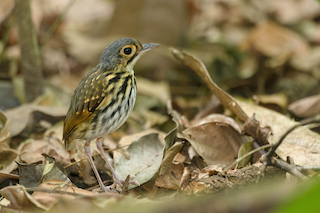
3 Hours Carara National Park
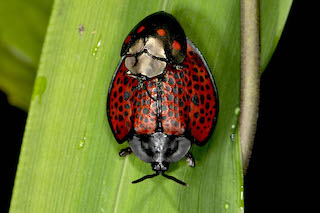
3 hours Macro PHOTOGRAPHY
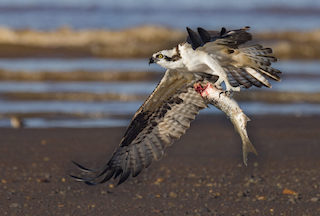
3 hours NATURE PHOTOGRAPHY
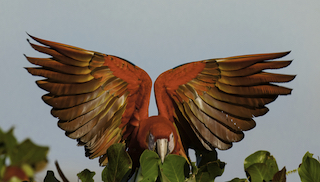
3 hours Photography at Carara National Park
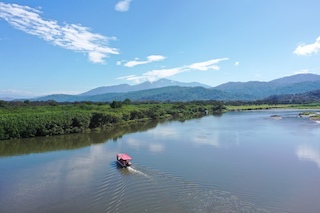
3 HOURS Tarcoles Marvels
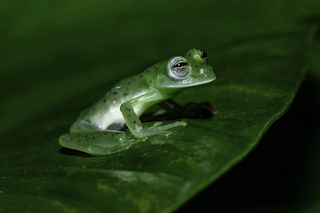
3 HOURS TOUR Night Walk
Nature group costa rica.
In an endless quest for natural beauty and unforgettable memories, Nature Group Costa Rica was born with the vision to share the overwhelming biodiversity of Costa Rica focused in two branches which are birding and photography.
We are located on the world-renowned crocodile-river, Rio Grande de Tarcoles in the Central Pacific which is home to the largest population of American Crocodiles in Central America but also the habitat for 327 species of birds, some mammals and more.
Over the past three decades, we have been blending our expertise in biology, conservation, photography, and business, to create a tour operator that is leading the way for others to follow.
Dedicated to offering the finest experiences of birding and nature photography, we have put together a collection of tours that seek to meet the demands of our clientele. Whether you are a family group wishing to see crocodiles, monkeys, or toucans; a physically challenged birdwatcher; a worldwide birder with 6000 birds on your life list; or a National Geographic award-winning photographer.
After carefully observing the local nature for more than 25 years, we have taken steps to make a positive change in the life of all flora and fauna not only in the Central Pacific but anywhere we visit by following the key principles of sustainable growth, and environmental awareness, we have improved the services that we offer; reducing their impact on the natural environment. At Nature Group Costa Rica, nature comes first, so our responsible practices, and approaches to the natural world, are our fingerprint.
Famillies & nature seekers
A nature tour in Tarcoles river or Carara National Park allows you to dive deep into the spectacular and biodiverse landscapes. Also witness the incredible wildlife of crocodiles, birds & mamals.
An experienced guide is always with you to provide exciting background information on the plants and animals of the region.
We will create your dream tour for you. Simply get in touch with us, tell us about your needs and wants and experience your very own adventure.
Birding & Wildlife Travel Experts
For some inspiration, you can find some of the most popular itineraries. Most of our clients love to end their exciting at Rio Grande de Tarcoles with a few days of relaxation on Central Pacific coast stunning beaches. Would you love that as well?
There is an overwhelming number of ways to book a trip. We believe that travel planning should be easy and worry-free. That’s why we bring trip planning to life through the experience and expertise of our guides who can make your dream trip come true. We plan your itinerary while you dream. Consultation is always free of charge and non-binding, feel free to drop us a line or call directly to our office.
Nature Group Costa Rica is not only a serious birding tour company; we are also unique in the Americas, by being the only photography tour operator to offer workshops, expeditions, and day-tours, with prestigious Nikon camera gear included. Whether you have never used a professional camera before, or you are on a photographic assignment for National Geographic, we use nothing but the best NIKKOR prime lenses, of 600-500-400-300mm optics, for the enjoyment of all nature lovers.

Custom and Set-Departure Bird & Wildlife Tours Around the World
Costa rica: birding with a camera® (bwc), tour overview:.
This unique tour of Costa Rica offers an eclectic mix of both birding sites and bird species. The very best sites for exciting species like Resplendent Quetzal, Turquoise-browed Motmot, Scarlet Macaw, Crested Owl, Three-wattled Bellbird, Turquoise Cotinga, White-crested Coquette, Snowcap, Violet Sabrewing, Spangle-cheeked and Emerald Tanagers, Golden-browed Chlorophonia, and Flame-throated Warbler have all been included on this tour. A delectable series of tanagers, trogons and hummingbirds are all on the agenda, and for many of these sites have been carefully selected to ensure the best photographic opportunities with these species. Throughout the tour, Costa Rica’s trademark top quality birding lodgings will feature, complete with birding on all of the grounds of all of the hotels and lodges used on this tour. If you are looking for a good birding tour, with a long list of specialties on the bird list, which also allows plenty of photography too, with many top-quality species bound to be photographed within a lengthy selection of “keeper” shots, then this is the ideal tour for you. We also expect to see other aspects of natural history too, whether it be sloth dozing in an open cecropia tree, a Strawberry Poison Dart Frog hopping across the damp rainforest leaf litter, a mob of unruly howler monkeys calling from the treetops, or a camp of tiny all-white bats huddled under a large leaf fashioned like a tent, there will be plenty besides birds to entertain us, even if they will be the primary focus.

Upcoming Departures:
8 - 22 March ($6790; single supplement: $750)
Ready to Book?
Other tour details:.
Length: 15 Days
Starting City: San José
Ending City: San José
Pace: Moderate
Physical Difficulty: Moderate
Focus: Birding, Wildlife, Photography
Group size: 8 + 1 leader
Detailed Itinerary
Day 1: Arrival in San Jose
After arrival in San’s Jose’s international airport, you will be transferred to nearby Alajuela, where we will overnight. If anyone arrives early enough, there will be a short afternoon walk around our hotel property (the meeting time for this would be 3pm at the hotel lobby), in order to look for Ferruginous Pygmy-Owl, Spot-breasted Oriole or Hoffman’s Woodpecker. The first tour meal will be dinner at 6:30pm in the hotel restaurant.
Day 2: San Ramon & San Luis Canopy to Arenal
Our first morning will involve an early departure (before dawn), as we target several key species early on, to the north of Costa Rica’s capital. First, we will visit a finca (farm), where early in the morning the striking White-eared Ground-Sparrow comes to visit. The same site may also yield Slate-throated Redstart, White-crowned Parrot, or Brown Jay. After that, we shall move on to our main site of the morning, near San Ramon. Here we will visit a viewpoint for one of Costa Rica’s most wanted birds, the spectacular Three-wattled Bellbird. This tour has been timed for when they are present (they arrive in late February typically), and this bellbird site in particular has been selected as it is considered one of the best to photograph this species, which habitually calls from the canopy. Laughing Falcon is also possible at this site. After that, our morning will continue in some style, by visiting the feeding station at nearby San Luis, Canopy where we will be hoping for visitors like Emerald Tanager, Tawny-capped Euphonia and Crimson-collared Tanager, while the surrounding area holds White Hawk and Black-headed Nightingale-Thrush. After lunch, we will travel to Arenal for a two-night stay, where we will stay in view of the dramatic backdrop of Arenal Volcano.
Day 3: Arenal
This morning, we will focus on the massive grounds of Arenal Observatory Lodge. The feeders can attract species like Montezuma Oropendola, while the extensive beds of Verbena flowers host hummingbirds, sometimes including Black-crested Coquette, Violet-headed Hummingbird, Crowned Woodnymph and Green Thorntail. Great Curassows are also regular on the property, and so we will be on the hunt for them too.
Day 4: Bogarin Trail to Braulio Carrillo
After a final morning in the La Fortuna/Arenal area, we shall make our way east to the foothill of the Caribbean around Braulio Carrillo National Park. In the morning we will focus on the productive area around Sendero Bogarin, where the feeders can yield species like White-throated Crake, Collared Aracari, Orange-chinned Parakeet, and Green Honeycreeper. The patchy forest nearby can also be extremely worthwhile, holding birds like Keel-billed Motmot, Yellow-throated Toucan, Rufous-tailed Jacamar, Rufous-winged Woodpecker, and often too a roosting Black-and-white Owl. This is often also a good place to pick up a three-toed sloth too. In the afternoon, we will arrive at Tapirus Lodge on the edge of Braulio Carrillo National Park. We will take an aerial tram ride through the rainforest canopy, which may yield some stellar birds as well as an incredible way to experience the rainforest too. In the late afternoon, we will check the areas around our accommodation for birds like Black-and-yellow and Speckled Tanagers, the rare Bare-throated Umbrellabird (which is perhaps as regular at this site as anywhere else), and also for Baird’s Tapir, which often gets seen around the lodge in the late afternoon or early morning. A single night will be spent at Tapirus Lodge, in the heart of beautiful, lush, primary rainforest.
Day 5: Donde Cope to Hotel Quelitales
Early in the morning, we will check for tapirs or umbrellabirds, before we check out of Tapirus Lodge and head over to nearby Donde Cope, a private property with a wonderful set of birds available. The feeders lure in species like Long-billed and Stripe-throated Hermits, and Bronze-tailed Plumeleteers, while a small pond is often home to a pair of Russet-naped Wood-Rails. However, it is Cope’s forest trail that is likely to provide the major highlights of the morning, with chances at seeing roosting pairs of both Spectacled and Crested Owls. Sometimes too, a roosting Great Potoo is available also. The rainforest is also a good place to see and photograph Strawberry Poison Dart Frog and a camp of tiny White Tent Bats too. In the afternoon, we will drive eastwards into Cartago province and stay two nights at Hotel Quelitales, which is one of the best hummingbird sites in the country. In recent years, they have been feeding a family of Scaled Antpittas, with late afternoon often being the best time for this. If they are still coming, we will time our arrival to be on site for that.
Day 6: Hotel Quelitales and Ujarras
Hotel Quelitales is rightly famed as one of the most important hummingbird sites in the country. The hotel grounds boast a list of more than 30 species recorded over the years. When you consider that the entire country of Costa Rica holds just over 50 species of hummingbirds, this local list is very impressive indeed. However, not all of those 30 species are present at any one time, as many are elevational migrants, or temporary seasonal visitors. However, we will be on the lookout for regular species such as Green-fronted Lancebill, Black-bellied Hummingbird, and White-bellied Mountain-Gem among the other regulars. In the afternoon, we shall visit some drier areas around Ujarras, where Cabanis’s Ground-Sparrow, a Costa Rican endemic, and Cabanis’s Wren can be found. A second night will be spent at the wonderful Hotel Quelitales.
Day 7: El Copal to Rancho Naturalista
For this day, we will check out very early and head out to El Copal Reserve, about an hour’s drive away, en-route to our next destination, Rancho Naturalista. El Copal is home to one of the most spectacular hummingbirds in all of Costa Rica, the Snowcap. In some years it is easily found on the grounds of Rancho Naturalista, while at other times the banks of Verbena flowers at El Copal are the best place to see and photograph the marvelous bronzy males of this species. On this tour, both sites are included to give us the very best chance at this stunning but very local species that is confined to middle elevations of the mountains of Costa Rica and far western Panama. The forest trails in El Copal are harder work, but hold some great avian prizes, like Broad-billed Motmot, Collared and Gartered Trogons, Rufous-browed Tyrannulet, White-ruffed Manakin, Speckled, Emerald, Black-and-yellow, and Blue-and-gold Tanagers, and five species of euphonia. If a swarm of army ants is encountered, there is also the chance of Bicolored, Spotted or even Ocellated Antbirds too. After a full morning in this area, we will head out towards Rancho Naturalista in the afternoon, where will spend two nights at one of the most highly rated bird lodges in all of Central America.
Day 8: Rancho Naturalista, Rio Tuis and Laguna Angostura
During the morning, we will explore the grounds right around Rancho Naturalista, where feeders hold species like Gray-headed Chachalaca, Red-billed Pigeon, and Red-throated Ant-Tanager. Sometimes mammals come in to the garden during the early hours, like agoutis, coatis or sometimes too a predatory Tayra. We will also be on the lookout for the well-named Lovely Cotinga, if this rare species should be present at the time, as well as Lesson’s Motmot, White-collared Manakin, Golden-olive Woodpecker, and the very local Tawny-chested Flycatcher. After one of the delicious home-style lunches at the lodge, we will venture out from the lodge in the afternoon, surveying the Tuis River for Sunbittern and Fasciated Tiger-Heron, and visiting a wetland, where a variety of shorebirds and waterbirds are often present, including Ringed and Green Kingfishers, and Little Blue Heron.
Day 9: Rancho to “Quetzal Country”
After some final time around Rancho, chasing whatever we are still missing, we will head south into the highlands of Costa Rica, and the famed Savegre Valley. The valley is cloaked in Oak-dominated cloud forest, which is home to one of the most revered birds in Costa Rica, the Resplendent Quetzal, which will look for the following day. We will arrive in time to see our first cloud forest birds, which could include Flame-colored Tanager, Sooty Thrush, Sooty-capped Chloropspingus, Slaty Flowerpiercer, and Acorn Woodpecker. The next three nights will be spent in a cloud forest lodge in Savegre or in Cerro de la Muerte (depending on which hotels are available). All of the choices of hotels have wonderful grounds with highland birds right on the doorstep.
Day 10: Quetzal Tour & Cerro de la Muerte
In the early morning we will make a special tour to go and see a male Resplendent Quetzal. Unlike on a traditional “birding” tour, on this “Birding with a Camera” tour, we will arrange a premium private Quetzal tour with a local quetzal expert, who will prioritize going to whichever site is the best at that specific time for the quetzal. This could be either an active nest site, or a fruiting avocado tree that they are frequenting. Ultimately, the best of the sites will be selected based on getting photos of this must-see bird. The remainder of the day will be spent in and around Cerro de la Muerte, with significant time and lunch spent at Paraiso Quetzal Lodge, which is an excellent bird hotspot, and also superb for getting photos at some of the target species in the area. Among them, we will be seeking Black-and-yellow and Long-tailed Silky Flycatchers, Golden-browed Chlorophonia, and Black-billed Nightingale-Thrush. However, it may well be the hummingbirds that leave the biggest mark, as we will aim to photograph Fiery-throated, Talamanca and Volcano Hummingbirds, and Lesser Violetear.
Day 11: Casa Tangara Dowii and Savegre area
In the morning, we shall visit a small private reserve below on the Pacific side of the mountains Cerro de la Muerte, which therefore has some birds we will not have seen higher up. Our early departure will be to ensure we are on site for the early feeding time Buffy-crowned Wood-Partridge, a rare and very difficult to see species for which Casa Dowii is rightly famous as the best site in the World. Other visitors to the feeders could include Buff-fronted Quail-Dove, Mountain Thrush, Chestnut-capped Brushfinch and the bird for which the property is named, Spangle-cheeked Tanager (the scientific name is Tangara dowii). The site is also good for Streak-breasted Treehunter and male Purple-throated Mountain-Gem can often be located on the verbena flowers that flank the short driveway. While there we will take a breakfast made by the quirky local landowner, who can also let us know of some of the myriad conservation projects he is involved in within the area. This breakfast is often a trip highlight! In the afternoon, we shall travel down into the Savegre Valley, checking out come feeders for birds like White-throated Mountain-Gem, Scintillant Hummingbird and Silver-throated Tanager. A nearby riverside trail also hosts Ruddy Treerunner, Ruddy-capped Treerunner, Torrent Tyrannulet, Black-faced Solitaire, Yellow-winged Vireo and Flame-throated Warbler.
Day 12: Cerro Buenavista to Talari Mountain Lodge
In the morning, we shall focus on whatever we are still missing in the cloud forests of the Savegre Valley or the Cerro de la Muerte area. By late morning, we will drive up to the highest point of the tour (3300m/10,900ft), Cerro Buenavista, for the highest living species in the country, Volcano Junco, which is restricted to a few peaks in the Talamanca Mountain range of Costa Rica extreme western Panama. After that, we shall drive on down, swiftly shedding clothing as we arrive in the foothills of the Pacific side of the mountains, stopping in the Canton of Perez Zeledon to pick up a bright blue male Turquoise Cotinga before we check into Talari Mountain Lodge for a single night stay.
Day 13: Chirripo Valley and Los Cusingos to Carara
In the morning, we will travel up into the hills within the Chirripo Valley, where a new site has come to the fore in recent years. This spectacular site, set within the steep foothills of the Talamanca Mountains looking down on the Cihirripo Pacifico River, is home to a diverse set of hummingbird, which we will be after, including Garden and White-tailed Emeralds, and Snowy-bellied Hummingbird. However, it is the male White-crested Coquette, which would be the grandest prize there, and we will scour the banks of Verbenas for any sign of this outrageously adorned hummingbird. Brown Violetear is also possible there too. After an hour or so focused on hummingbirds, we will descend the hill and visit a lower elevation site, Los Cusingos, the former home of famed ornithologist, Alexander Skutch. We will visit a forest trail in the hope of manakins, with Velvety and Red-capped Manakins both possible there, as is Baird’s Trogon. After lunch nearby, we shall travel north along the coast flanking the Pacific Ocean, to a hotel near Carara National Park for a single night stay.
Day 14: Tarcoles Boat Cruise and Orotina to Alajuela
In the morning, we will take a relaxed morning boat cruise along the Tarcoles River and into a mangrove lined creek in search of a long list of birds, including (but not limited to), Boat-billed Heron, Bare-throated Tiger-Heron, Double-striped Thick-Knee, Southern Lapwing, Roseate Spoonbill, Prothonotary Warbler, “Mangrove” Yellow Warbler and Lineated Woodpecker. We sometimes also find Mangrove Vireo or Panama Flycatcher too. One of the undoubted highlights will be seeing the flights of Scarlet Macaws leaving their mangrove-based roosts to fly into the neighboring forested hills for the day. There should be a few hours to explore nearby Carara National Park in the late morning after our three hour boat ride, and we might pick up an Orange-collared Manakin, if the lek is active during our visit. We shall return to our hotel for lunch and to check out. After lunch, we will visit some dry country near the town of Orotina for a few hours, where we blitz the local birds, many of which are often easy to find. We will be on the lookout for Turquoise-browed Motmot, Pacific Screech-Owl, Black-headed Trogon and Stripe-headed Sparrow. If we are lucky, we might also see a Lesser Ground-Cuckoo too. In the evening, we will arrive back at the same Alajuela hotel (near San Jose airport), where we spent the first night of the tour.
Day 15: Cinchona and Departure from San Jose
We will visit one more fantastic site for the tour, a small restaurant in Cinchona, north of Alajuela, where we will spend about three hours in the morning. This is a very relaxing final morning, before late afternoon/evening departures, when we will be birding right from the balcony of the restaurant and take breakfast there on arrival too. The main birds we will be seeking are Prong-billed Barbet, Northern Emerald-Toucanet, and a host of hummingbirds, including Violet Sabrewing, Coppery-headed Emerald, White-bellied Mountain-Gem, Green Hermit, and Green-crowned Brilliant. We will return to our hotel at lunch time to take lunch and have a late check out in the early afternoon in time to connect with late afternoon or evening flights out (flights should depart no earlier than 5pm). If you would rather spend an extra night at this hotel before flying out the next day, please let us know and we can book that for you.
Trip Considerations
PACE: Moderate. The days on this tour typically start with optional, pre-breakfast, birding at 6am, followed by a later breakfast at around 6:30-7am. Early breakfasts are not typically provided in Costa Rica. On around 6 days, an earlier start may be needed to arrive at a birding site at an early time, the timing of which is important in order to find certain, key, bird species (e.g. Bellbird, Quetzal, wood-partridges etc.). On these days a departure time of 5:00-5:30am will be required, with breakfast taken later. On only one of these days will a packed breakfast be required. All of the lunches on this tour are sit down lunches in either the lodges/hotels, or local restaurants/cafes. Sometimes these are buffets, and sometimes these are a la carte. In some places (e.g. Talari), they are a fixed menu, although all dietary restrictions are catered for. Drives of more than three hours are necessary on three days of the tour.
PHYSICAL DIFFICULTY: Moderate. Some of the birding will be on slightly inclined tracks and trails (e.g. For a limited time only at El Copal, Rancho Naturalista, and Los Cusgingos). Trail walking is expected to be taken for some time (but not the entire day) on around seven days of the tour. You can expect to walk around 2-3 miles (3.2-4.8 km) per day on average, and the walking is done at a rather slow pace.
A few hours of one morning will be spent at high elevation (3300m/10,900ft), with the highest of the lodges being for three nights in Quetzal Country where we will stay at one of two lodges in the area, at an elevation of either 7220ft/2200m or 8700ft/2650m (the lodge used will depend on the often-limited availability in this very popular area); all other lodges are much lower in altitude.
CLIMATE: Quite variable; in the lowlands, it is quite humid and temperatures usually vary from about 68°-95°F (20°-35°C). At the higher elevations it is much cooler, with temperatures ranging from about 46°-75°F (8°-24°C).This tour is timed for the Costa Rican dry season. However, the Caribbean side of Costa Rica (e.g. El Copal, Rancho Naturalista), does not have a distinct dry season, being wet, year-round. Therefore, some rain is expected, especially in these areas or the highlands (Quetzal Country), which are also prone to sudden influxes of wet weather.
ACCOMMODATION: Good to excellent, all have private, en-suite bathrooms, full-time hot water, and 24hr electricity. Wi-Fi is also available in all lodges, though often it only works in the public areas and not the rooms. The simplest accommodation is Talari Mountain Lodge for one night, which is a great location for birds. All of the other accommodations are very good to excellent.
PHOTOGRAPHY: As a Birding with a Camera® (BwC) tour, this trip chases the maximum number of species in the given areas, but also offers up good photo opps, as it visits many areas that have feeders (like San Luis Canopy, Arenal Observatory Lodge, Bogarin Trail, Donde Cope, Hotel Quelitales, Rancho Naturalista, Paraiso Quetzal Lodge, Feathers Garden in Savegre, Casa Tangara Dowii, Talari Mountain Lodge, and Cinchona), and photography of birds in Costa Rica, in general, is relatively easy over some other Neotropical countries.
GEAR: Binoculars are essential. A 300 mm lens with teleconverter(s) or a 100-400 mm zoom work well in most areas. A mirrorless SLR camera helps in darker situations for being able to shoot at higher ISOs and at very low shutter speeds, but is by no means required. Longer lenses such as 500mm or 600mm are fine if you have them, but they can be tiring to carry on some of the walks. Tripods are generally not used on this tour.
Other Information
TRAVEL REQUIREMENTS: A valid passport is required; the passport must be valid for at least six months past your intended stay. Tourist visas are currently not required for citizens of the US, Canada, UK, Australia, New Zealand, South Africa, and all Western European countries. Visas are currently only required of nationalities mainly in Asia, Africa, Eastern Europe, and the Middle East. Travel requirements are subject to change; if you are unsure, please check with the nearest embassy or consulate, or ask our office staff for help.
WHAT’S INCLUDED?: Tips to drivers, local guides, and lodge/restaurant staff; accommodation from the night of day 1 to the night of day 14; meals from dinner on day 1 (unless you arrive too late for dinner service) to lunch on day 15; safe drinking water and/or juice during meals (if eating at a restaurant that includes no drinks reasonable non-alcoholic beverages will be provided for that meal); Tropical Birding tour leader with scope and audio gear from the afternoon of day 1 to early afternoon on day 15; one arrival and one departure airport transfer per person (transfers may be shared with other participants of the same tour if they are on the same flight, or other guests from the same hotel); if the San José hotel has a free airport shuttle, you will be expected to use this and private transfers will not be provided). Ground transport for the group to all sites in the itinerary from the morning of day 2 to the afternoon of day 15 (for smaller groups the guide will drive and, for larger groups there will be an experienced, local driver); a printed and bound checklist to keep track of your sightings (given to you at the start of the tour – only electronic copies can be provided in advance).
WHAT’S NOT INCLUDED?: Optional tips to the tour leader; tips for luggage porters if you require their services; flights; airport departure tax; snacks; additional drinks apart from those included; alcoholic beverages; travel insurance; excursions not included in the tour itinerary; extras in hotels such as laundry service, minibar, room service, telephone calls, and personal items; medical fees; other items or services not specifically mentioned as being included.
Tour Reviews
*Participated on this Tour? Leave a Review! We would also love to see your favorite photo, upload it!

Cotinga Tours is celebrating 25 years!
Testimonial: "Heather, we want to thank you so much for everything you did to help us have an amazing vacation. We had an absolutely wonderful trip to Costa Rica thanks to you and Cotinga Tours. In addition to booking us in some amazing, unforgettable hotels and awesome activities, your personal relationships with the operators were invaluable when we needed to make last minute changes. Your attention to detail and knowledge of every aspect of the country made it a unique, tailor-made trip to remember. We are elated with how things turned out! All of your advice and recommendations were spot-on. We would highly recommend Cotinga to anyone who would consider going to Costa Rica. We really appreciate all that you did to make it a meaningful experience that included something for everyone in our family and showed so many facets of such a beautiful country." ~Steve and Jennifer Patterson, Washington, DC

Special Raptor Migration Tour
Come join paco on an amazing birding adventure, sept 21 - oct 3, 2024.
Observing the raptor migration in Costa Rica is a truly enchanting experience, where nature enthusiasts and birdwatchers are treated to a unique blend of tropical beauty and avian prowess. Costa Rica, situated at the crossroads of North and South America, serves as a vital corridor for the southern raptor migration, attracting a diverse array of species. As the birds soar above lush rainforests, expansive coastlines, and mist-covered mountains, observers witness a breathtaking dance in the sky. The iconic sight of hawks, eagles, and vultures riding thermals against a backdrop of vibrant foliage creates a vivid spectacle. The country's strategic location also provides an opportunity to witness not only the majestic residents but also transient raptors en route to their final destinations. The rich biodiversity and stunning landscapes of Costa Rica enhance the overall experience, making it a birdwatcher's paradise during the southern raptor migration.

Cotinga Tours specializes in Costa Rica Birding Tours , Nature Tours & Explore Costa Rica Tours with a nature focus. We are an owner-operated company that provides personalized service and the knowledge of Costa Rica’s natural ecology that only a local company can offer. We are passionate about birdwatching, conservation and sharing Costa Rica’s rich wild life and habitats with others. We design our birding tours with your comfort and enjoyment as our highest priority. We find restful and relaxing travel allows you to fully enjoy your outdoor experience. Your accommodations, meals, and transportation have been carefully selected to maximize your comfort and peace of mind, while enabling you to bask in Costa Rica’s rich natural beauty.
Are you a single birder, a couple that loves to bird together or just a couple of birding friends? You can join one of our scheduled Costa Rica birding tours .
If you have a small group of birdwatching friends we can help to customize the perfect tour for your group or you can choose one of our tried and true Costa Rica bird watching tour itineraries and just pick the dates,
If you prefer a more general nature tours we have some itineraries that you can choose from or with our guidance we can customize the perfect nature tour experience,
Explore Costa Rica Tours are usually a blend of nature, beach and you can splash in some adventure to your liking, We create a completely custom itinerary to your liking. Fill out our Customize Your Tour Questionnaire .
VISIT OUT BIRDING PAGE FOR MORE DATES

Custom Birding
We help you design the perfect tour for your small group.
Either choose one of our tried and true itineraries and your prefered dates and we will handle everything else or we can help design the perfect birding tour just for your small group.
Click here to customize

Custom Nature
Either choose one of our tried and true itineraries and your prefered dates and we will handle everything else or we can help design the perfect Nature tour just for your small group.

We help you design the perfect mix of nature, beach and adventure.
Fill out our customize your tour questionnaire and let us know what you want and we will help you organize the best vacation.

coming soon
The Ultimate In Birding Tours
- Angola Tours
- Botswana Tours
- Cameroon Tours
- Cape Verde Islands Tours
- Comoro Islands Tours
- Djibouti Tours
- Ethiopia Tours
- Gabon Tours
- Ghana Tours
- Kenya Tours
- Liberia Tours
- Madagascar Tours
- Malawi Tours
- Mauritius Tours
- Morocco Tours
- Namibia Tours
- Réunion Tours
- Rwanda Tours
- São Tomé & Príncipe Tours
- Senegal Tours
- Seychelles Tours
- Sierra Leone Tours
- Socotra Tours
- Somaliland Tours
- South Africa Tours
- Tanzania Tours
- Uganda Tours
- Western Sahara Tours
- Zambia Tours
- Zimbabwe Tours
- Antarctica Tours
- Ascension Island Tours
- Atlantic Odyssey Tours
- Australia Subantarctic Tours
- Falkland Islands Tours
- Indian Ocean Subantarctic Islands Tours
- New Zealand Subantarctic Tours
- Saint Helena Tours
- South Georgia Tours
- Tristan da Cunha Tours
- Afghanistan Tours
- Bahrain Tours
- Bangladesh Tours
- Bhutan Tours
- Borneo Tours
- Cambodia Tours
- Central Asia Tours
- China Tours
- Cyprus Tours
- Georgia (Caucasus) Tours
- India Tours
- Indonesia Tours
- Israel Tours
- Japan Tours
- Java & Bali Tours
- Kazakhstan Tours
- Kuril Islands & Kamchatka Tours
- Malaysia Tours
- Mongolia Tours
- Myanmar (Burma) Tours
- Nepal Tours
- Pakistan Tours
- Philippines Tours
- Russia Tours
- Saudi Arabia Tours
- Sri Lanka Tours
- Sulawesi & Halmahera Tours
- Sumatra Tours
- Taiwan Tours
- Thailand Tours
- Tibet Tours
- Turkey Tours
- Turkmenistan Tours
- Uzbekistan Tours
- Vietnam Tours
- Australia Tours
- Christmas Island Tours
- Cook Islands Tours
- French Polynesia Tours
- Hawaii Tours
- Micronesia Tours
- New Caledonia Tours
- New Zealand Tours
- Papua New Guinea Tours
- Pitcairn & Henderson Tours
- Samoa Tours
- Solomon Islands Tours
- Vanuatu Tours
- West Papua (Indonesia) Tours
- Western Pacific Odyssey Tours
- Azores Tours
- Belarus Tours
- Finland Tours
- Franz Josef Land Tours
- Hungary Tours
- Madeira Tours
- Norway Tours
- Romania Tours
- Spain Tours
- Svalbard (Spitsbergen) Tours
- Alaska Tours
- Bahamas Tours
- Colorado Tours
- Costa Rica Tours
- Dominican Republic Tours
- Guatemala Tours
- Honduras Tours
- Jamaica Tours
- Lesser Antilles Tours
- Mexico Tours
- Panama Tours
- Puerto Rico Tours
- Texas Tours
- Trinidad Tours
- United States of America Tours
- Argentina Tours
- Bolivia Tours
- Brazil Tours
- Chile Tours
- Colombia Tours
- Ecuador Tours
- Galapagos Tours
- Guyana Tours
- Paraguay Tours
- Suriname Tours
- Venezuela Tours
- Tours Calendar (Tours by Date)
- News & Tour Reports
- Booking Form & Information
- The Birdquest Team
- About Us & Frequently Asked Questions
- Sign up for our e-Newsletter
- Custom Birding Tours & Extensions
- Finding the World's Bird Families
- Leading for Birdquest
- Wild Images Bird Photography Tours

Many of the flights and flight-inclusive holidays on this website are financially protected by the ATOL scheme.
Email [email protected]
Telephone 01254 826317 (International +44 1254 826317)
North/Central America & The Caribbean
CLASSIC COSTA RICA – The Ultimate Costa Rica endemics and specialities itinerary
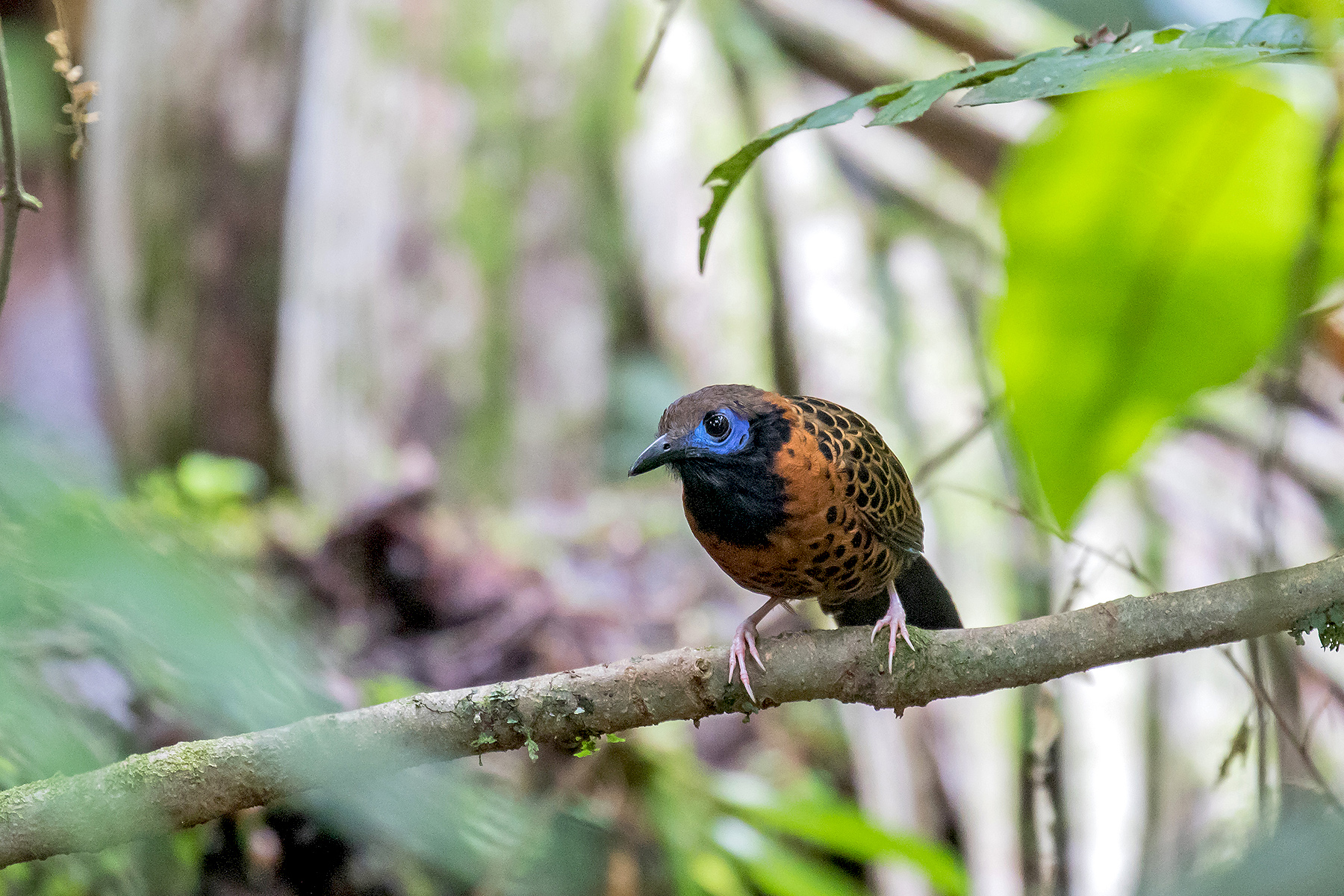
Ocellated Antbird (image by Pete Morris)
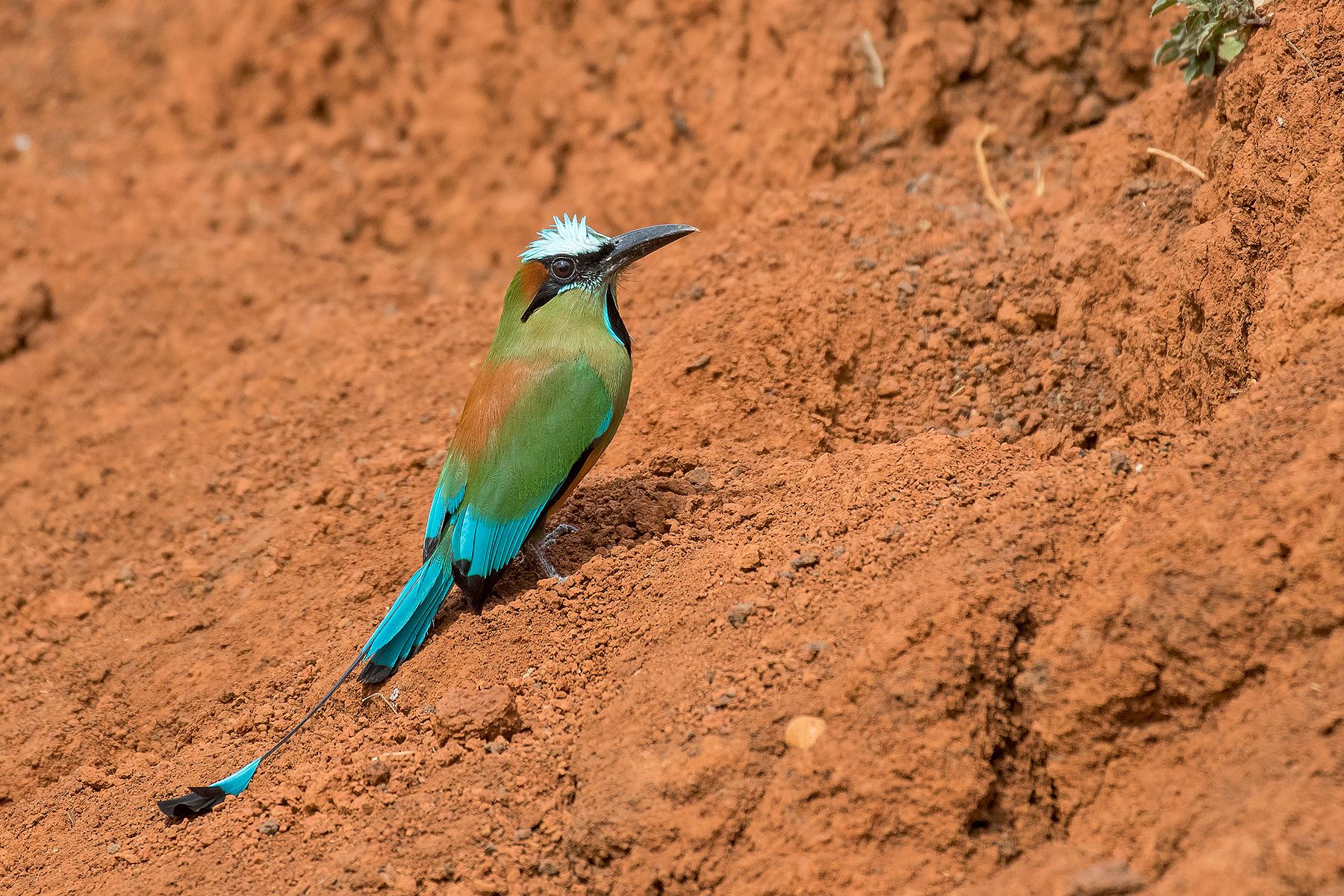
Turquoise-browed Motmot (image by Pete Morris)
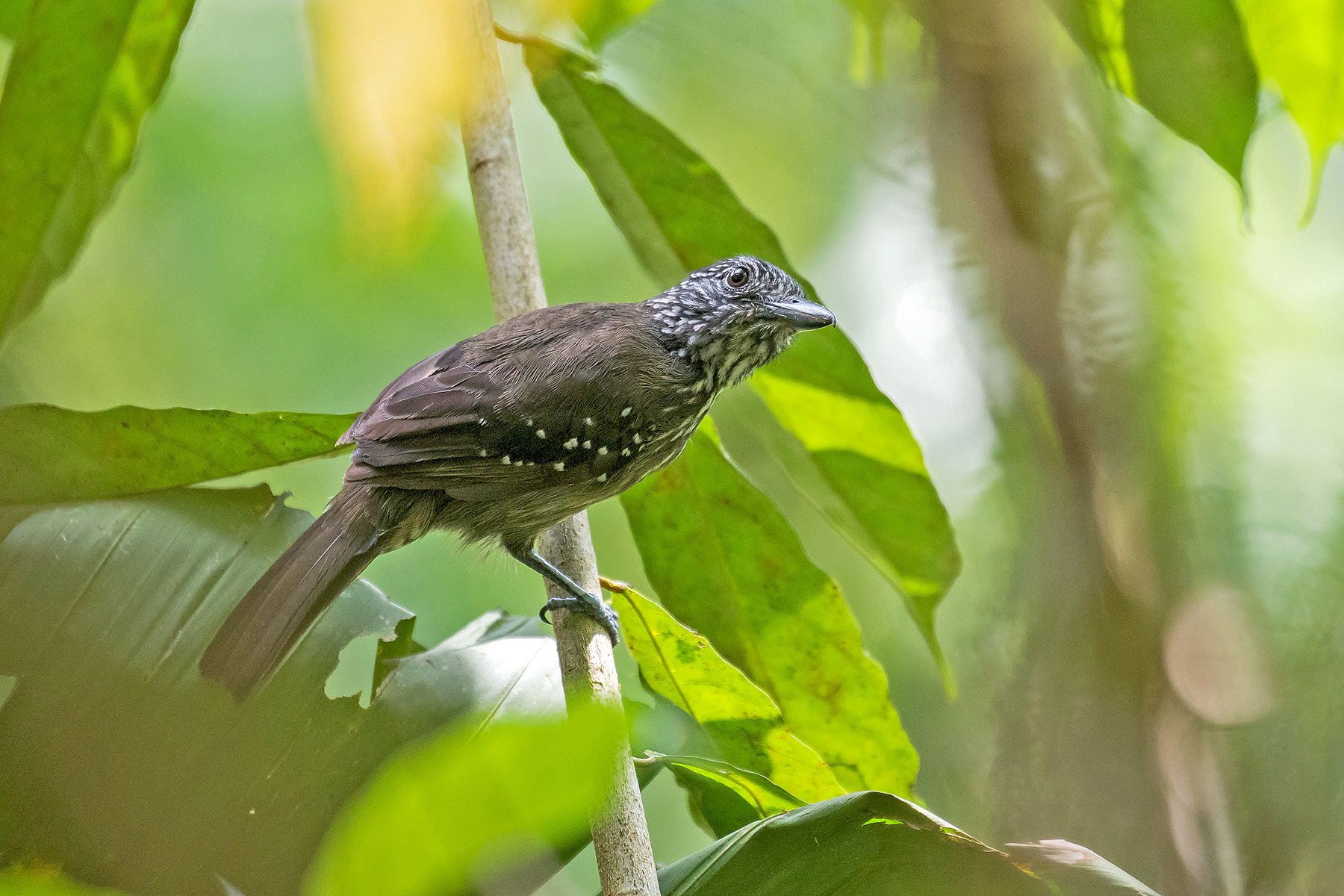
Black-hooded Antshrike (image by Pete Morris)
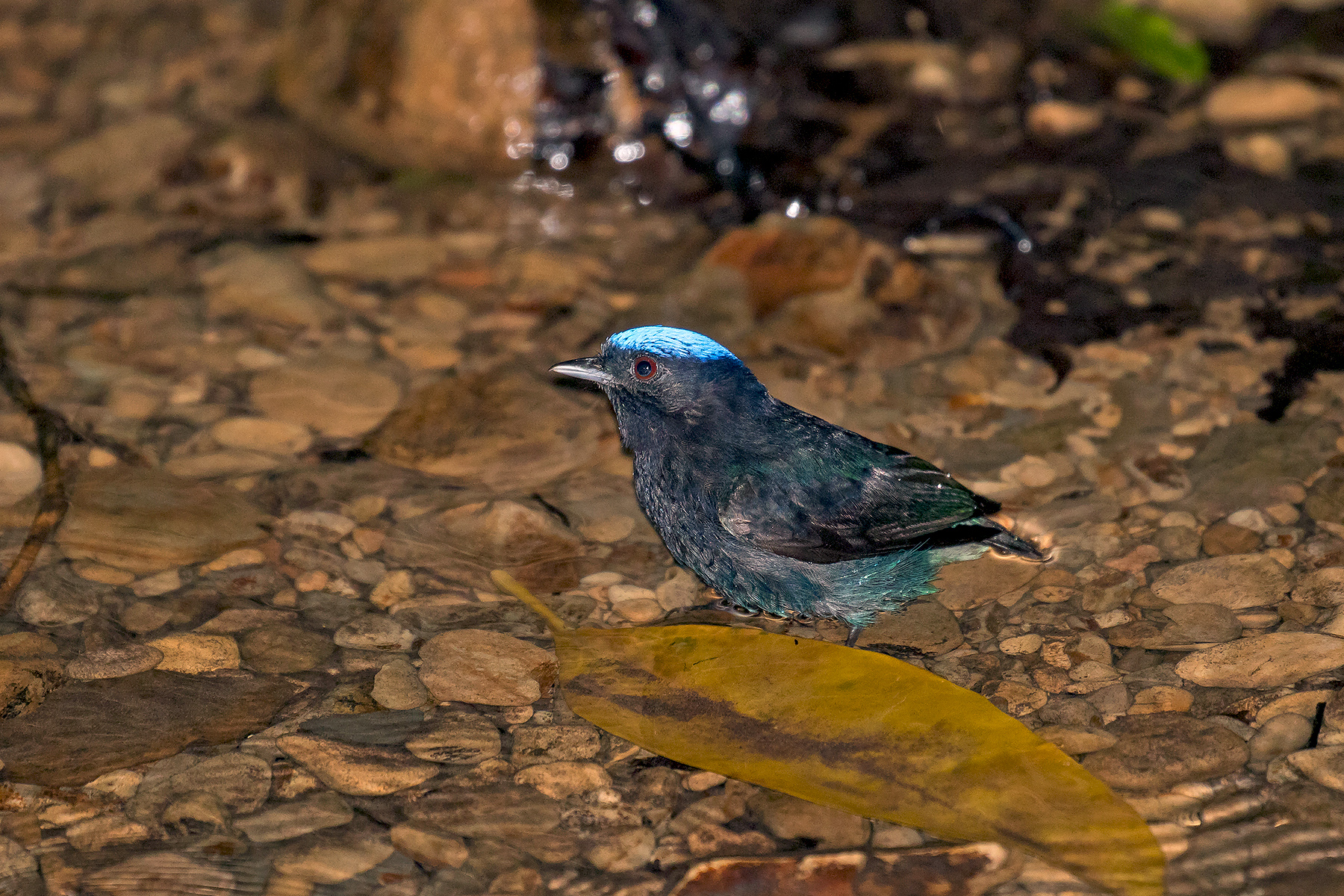
Blue-crowned Manakin (image by Pete Morris)
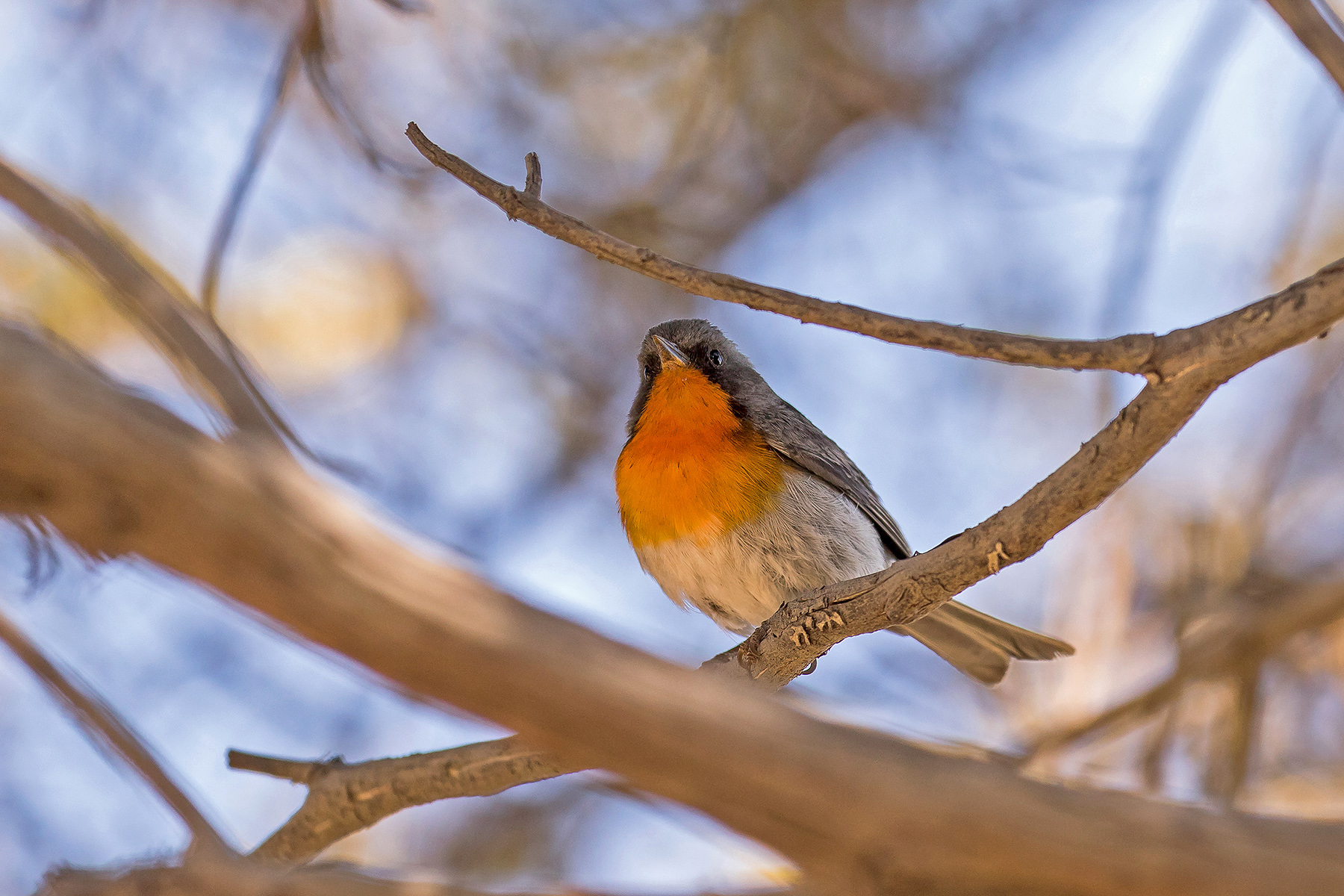
Flame-throated Warbler (image by Pete Morris)
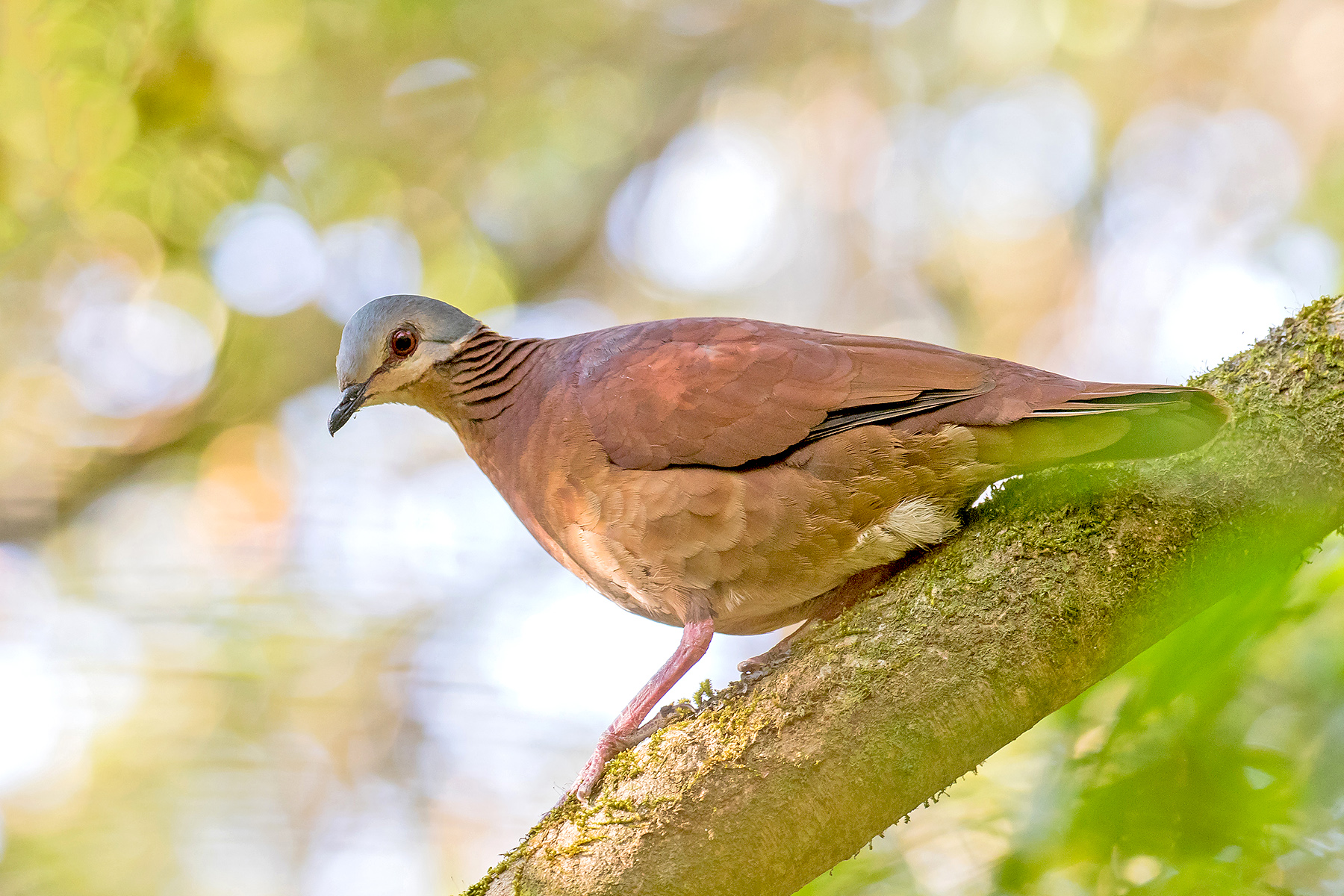
Chiriqui Quail-Dove (image by Pete Morris)
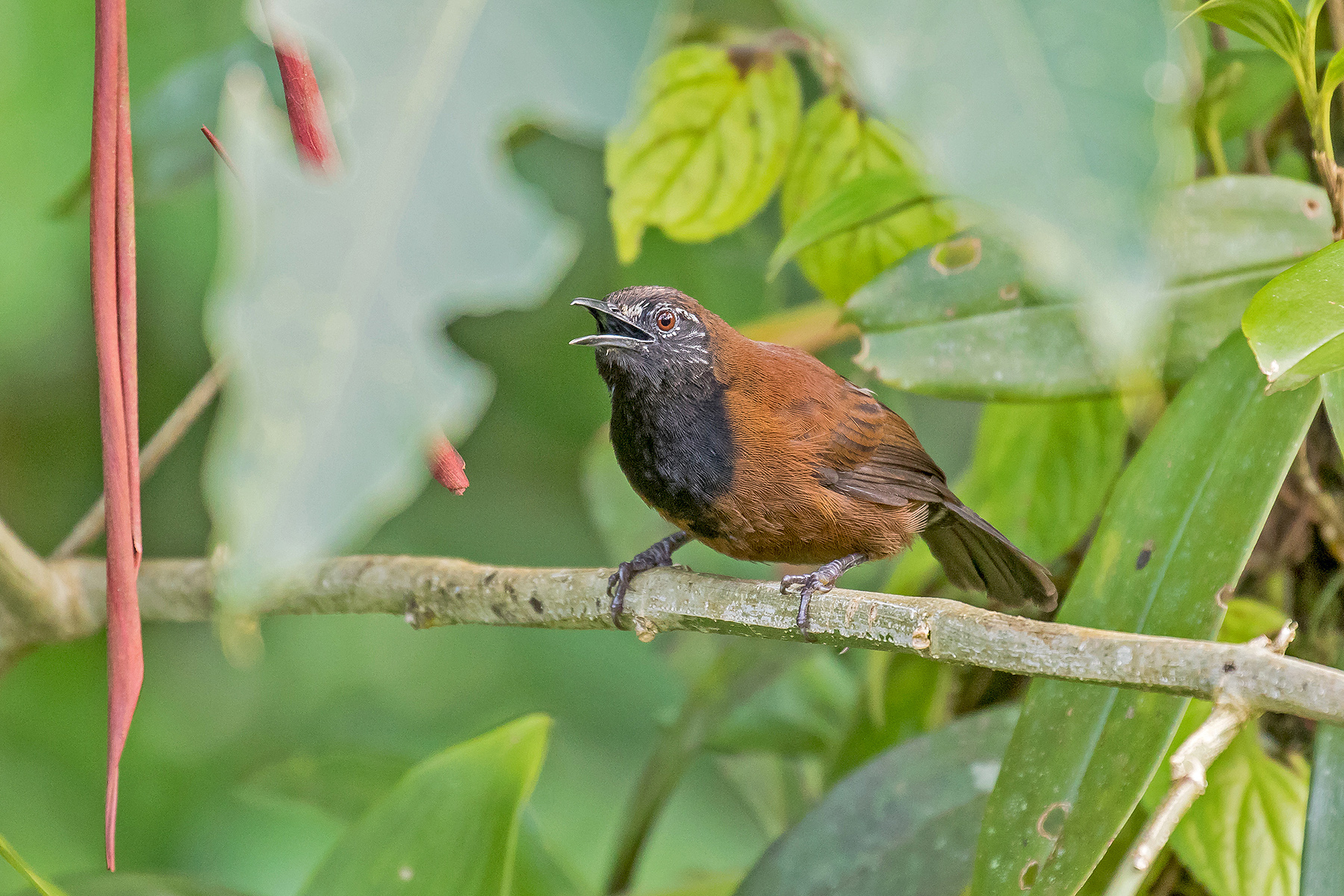
Black-bellied Wren (image by Pete Morris)
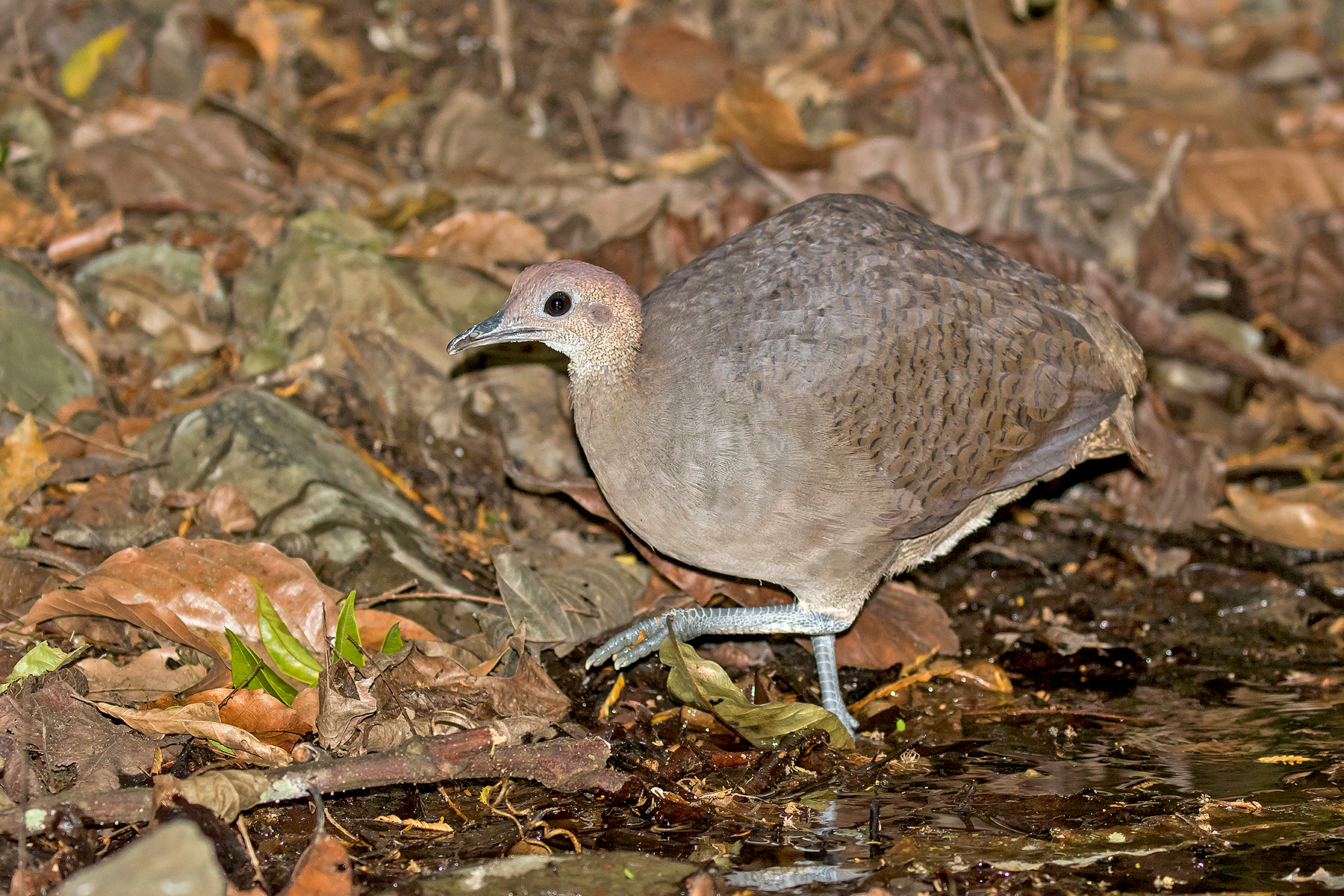
Great Tinamou (image by Pete Morris)
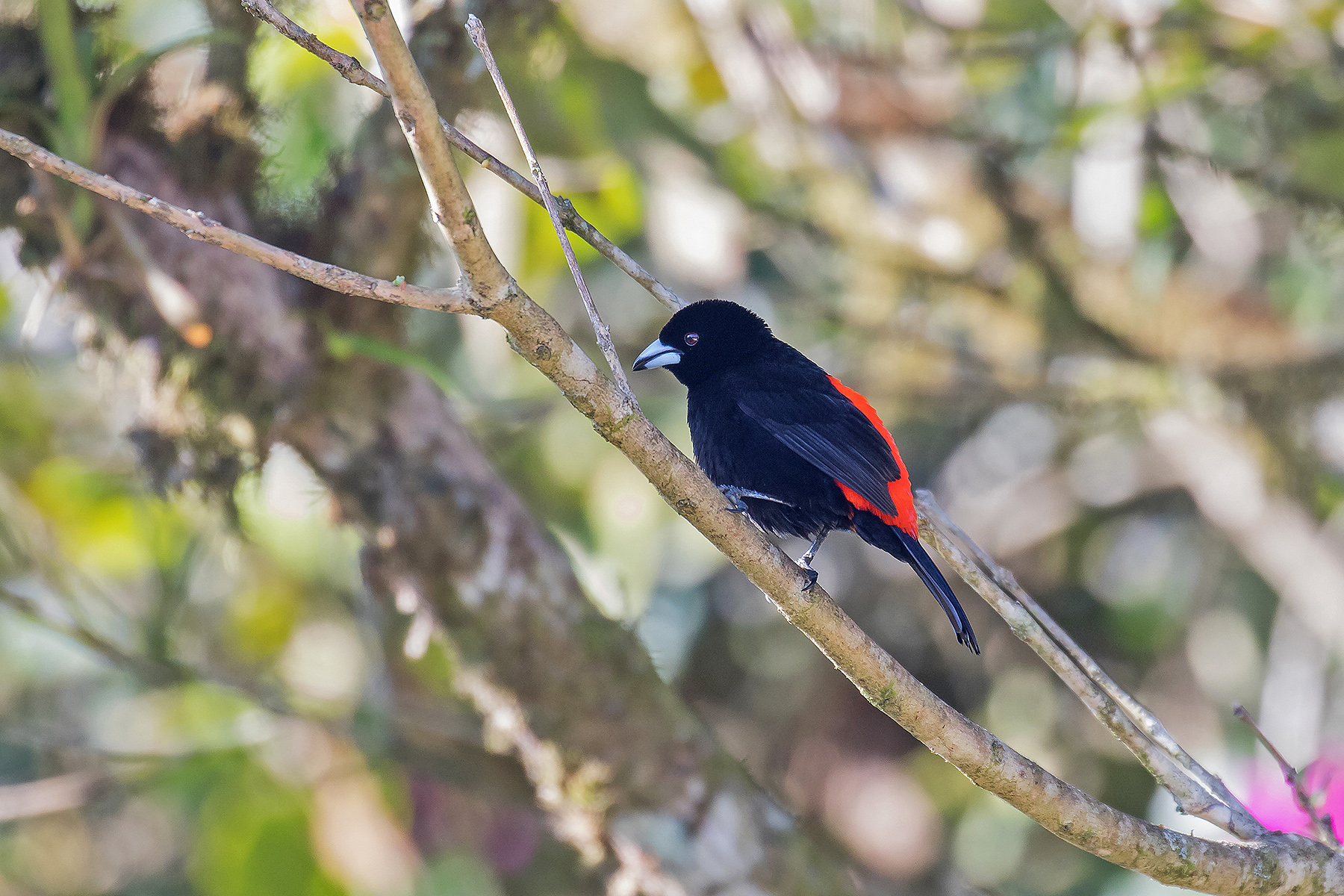
Cherrie's Tanager (image by Pete Morris)
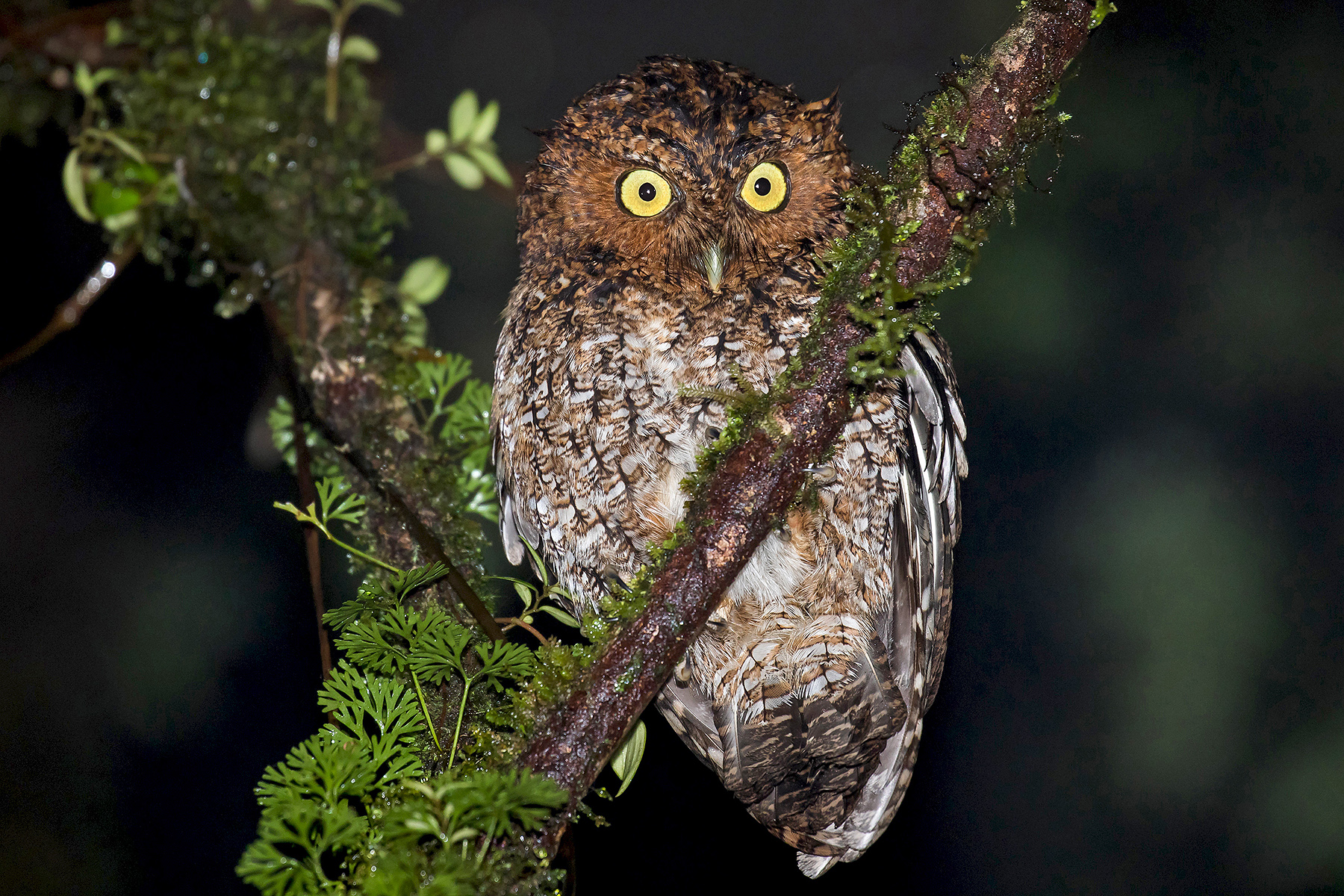
Bare-shanked Screech Owl (image by Pete Morris)
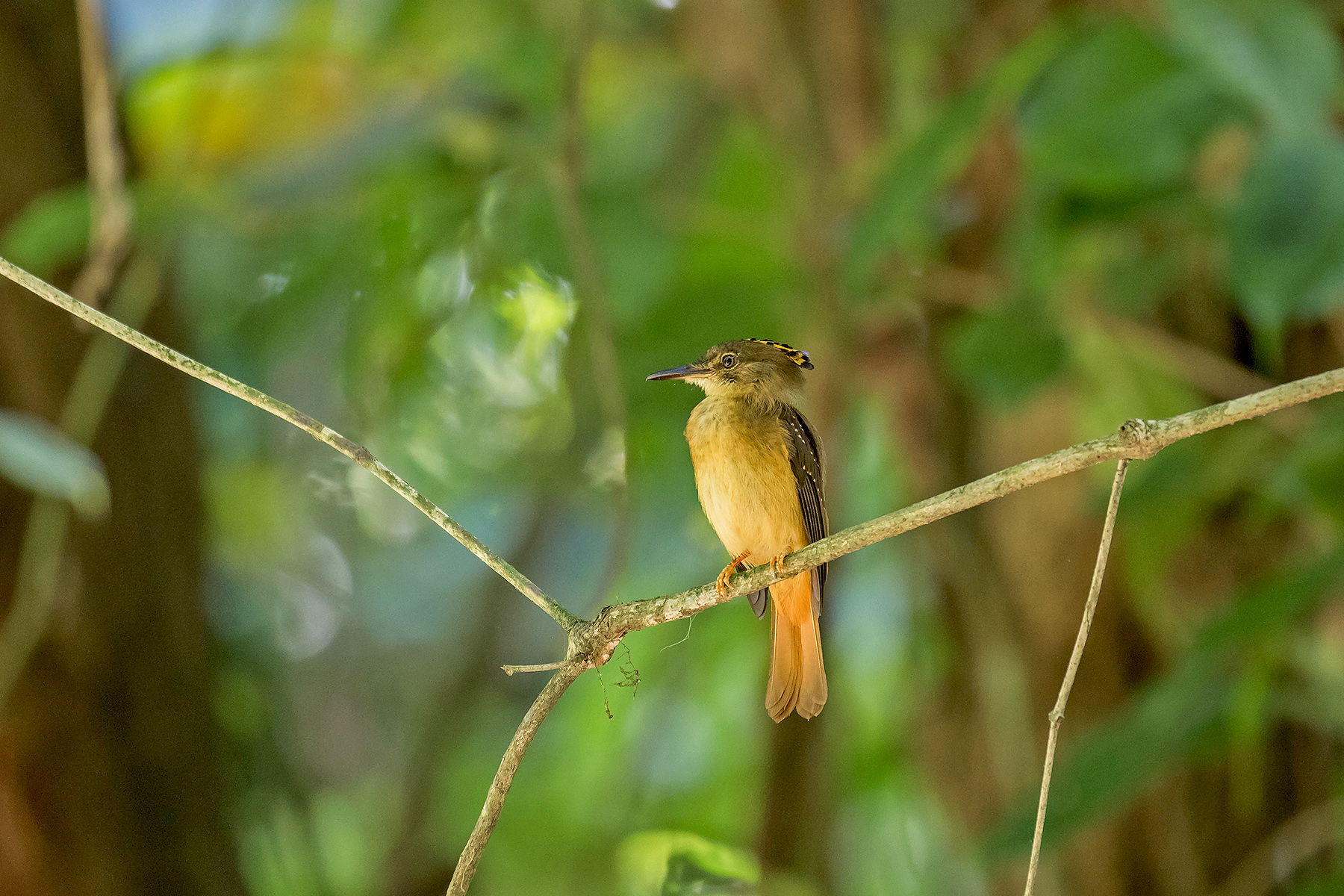
Northern Royal Flycatcher (image by Pete Morris)
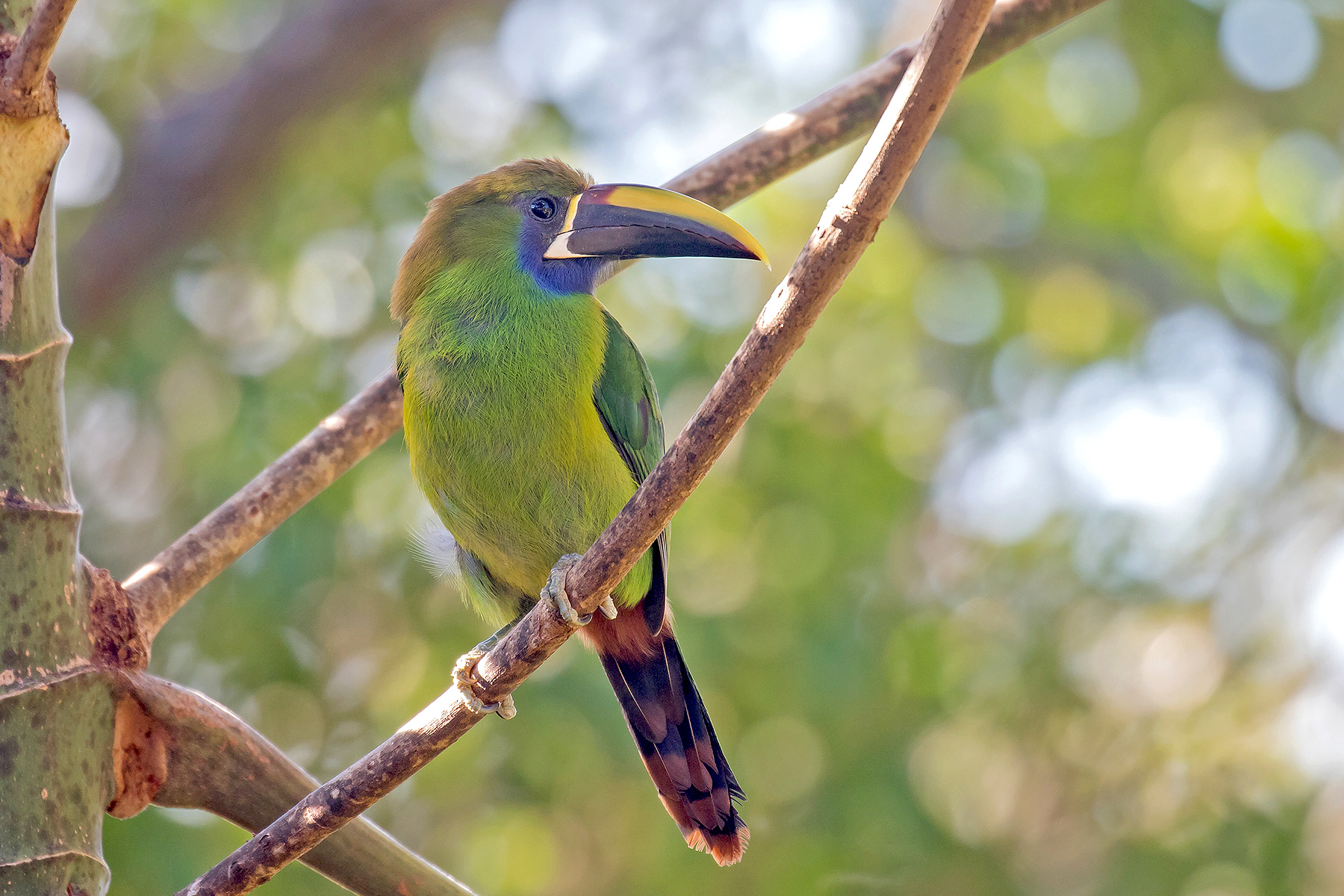
Blue-throated Toucanet (image by Pete Morris)
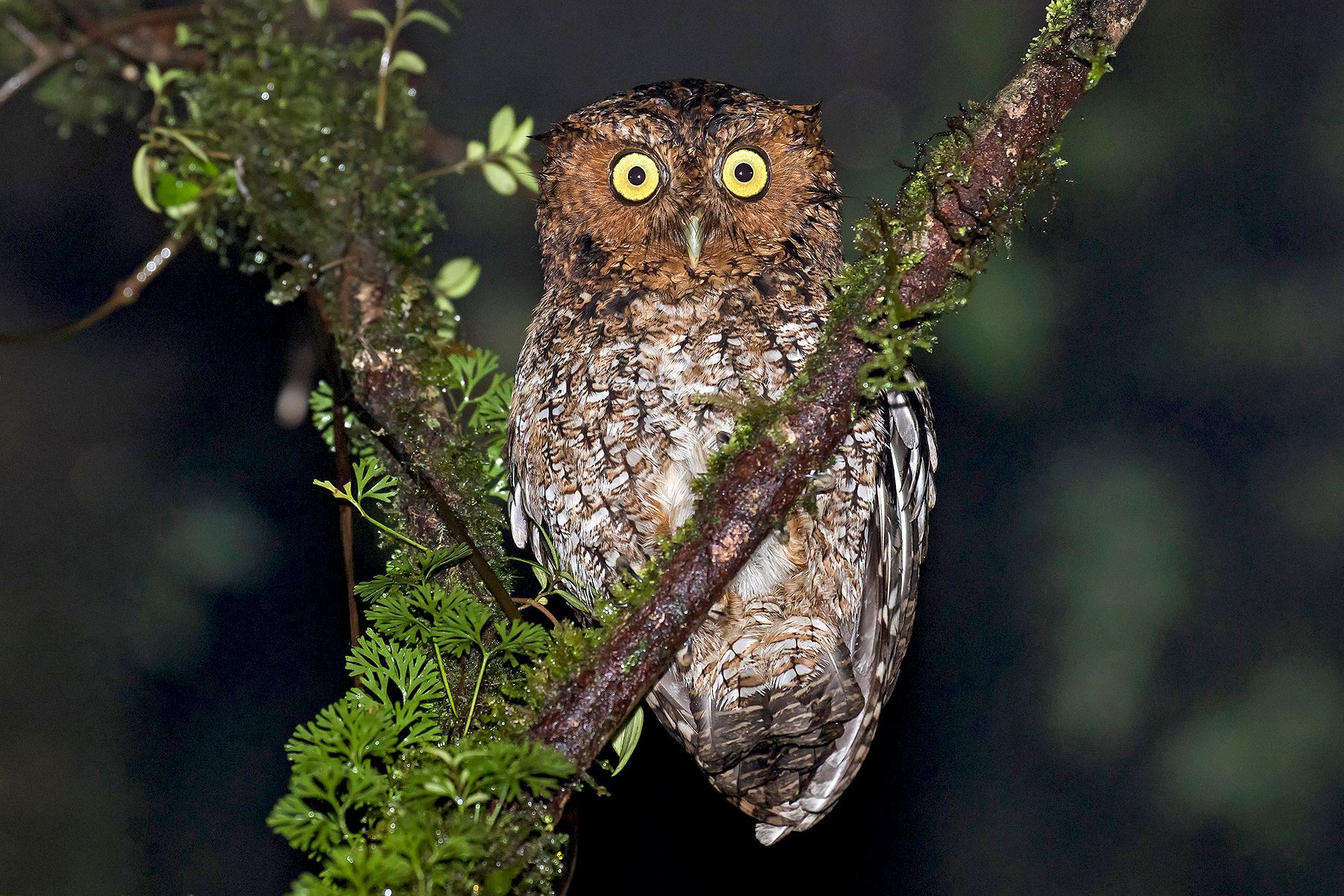
Blue-and-gold Tanager (image by Pete Morris)
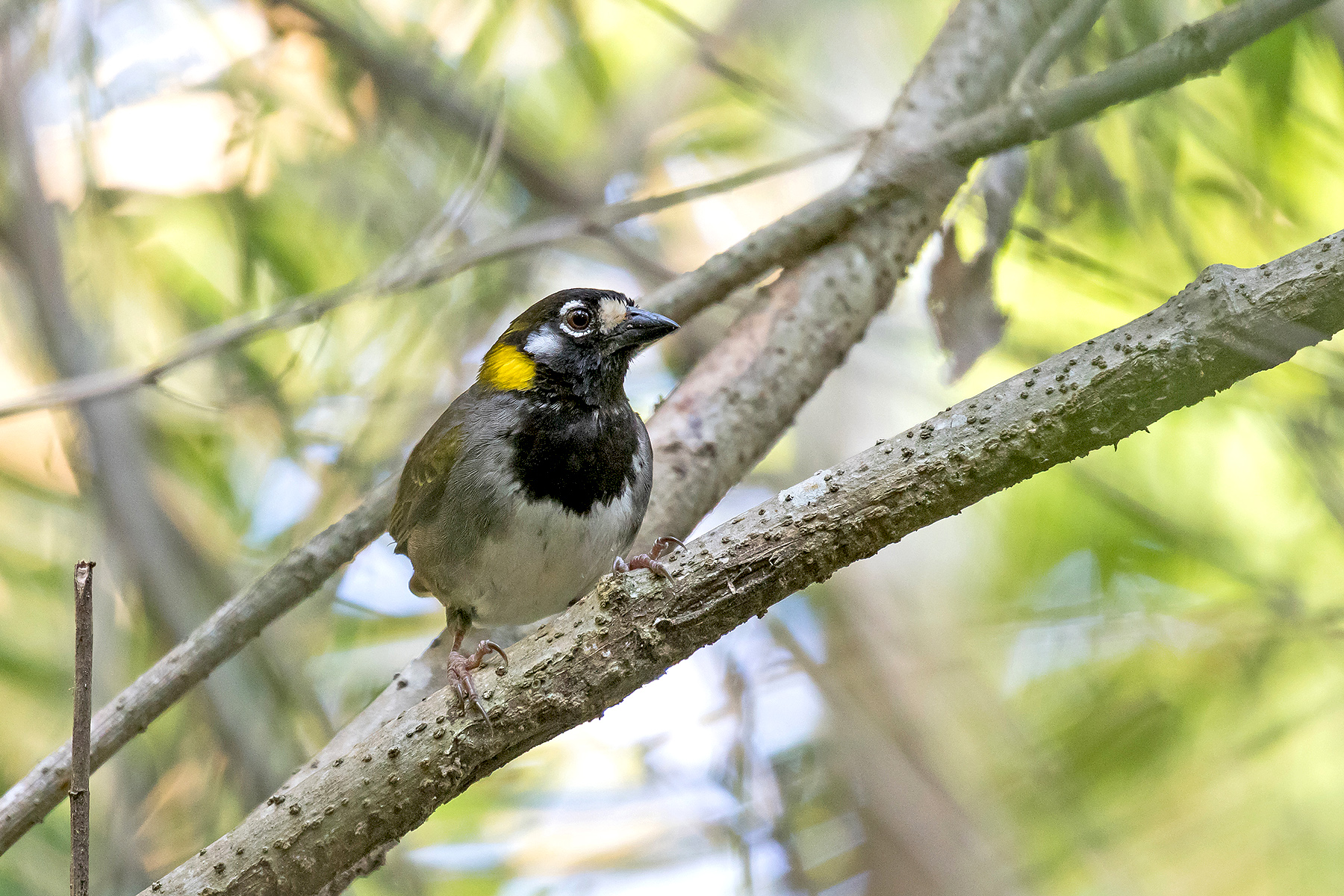
White-eared Ground Sparrow (image by Pete Morris)
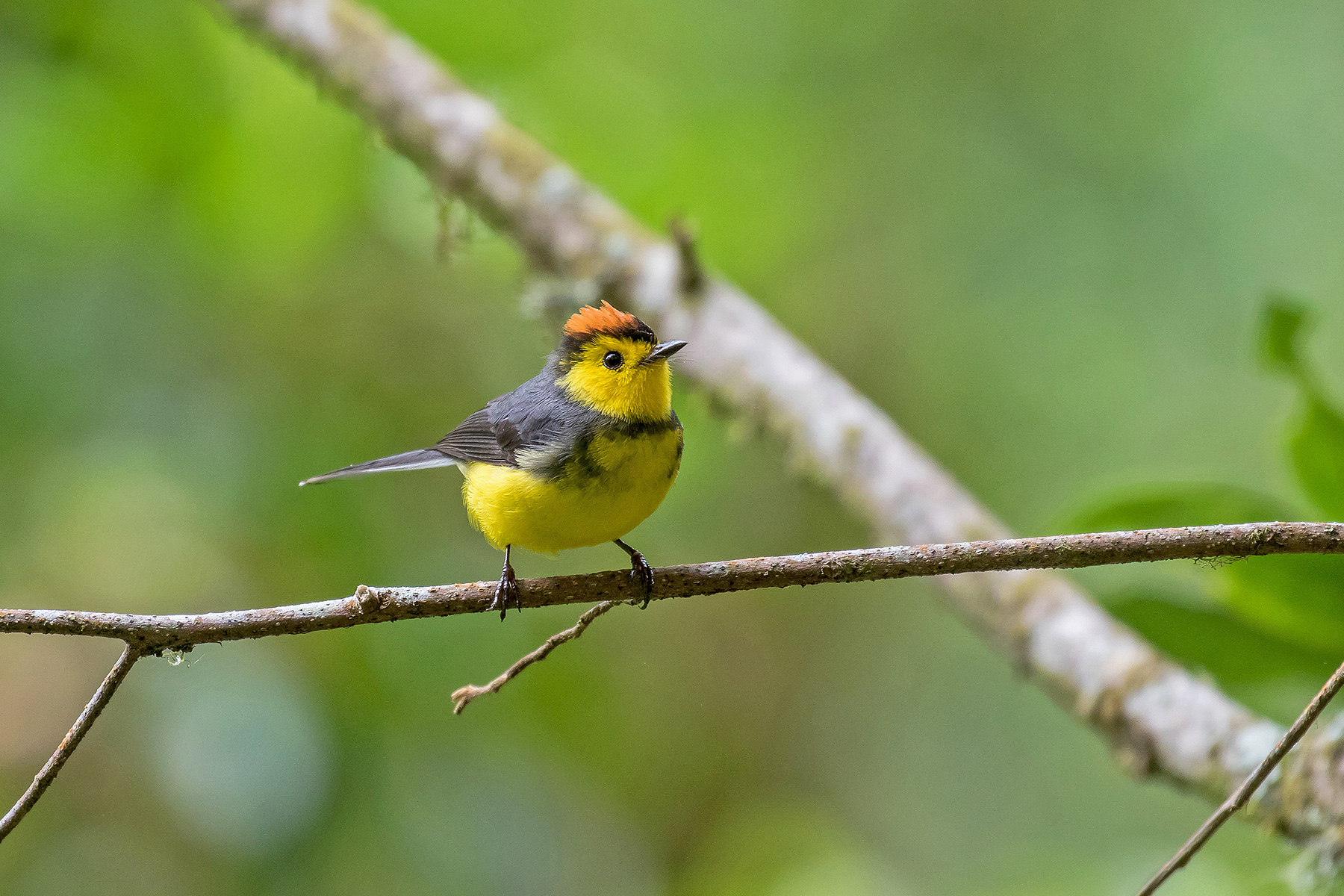
Collared Whitestart (image by Pete Morris)
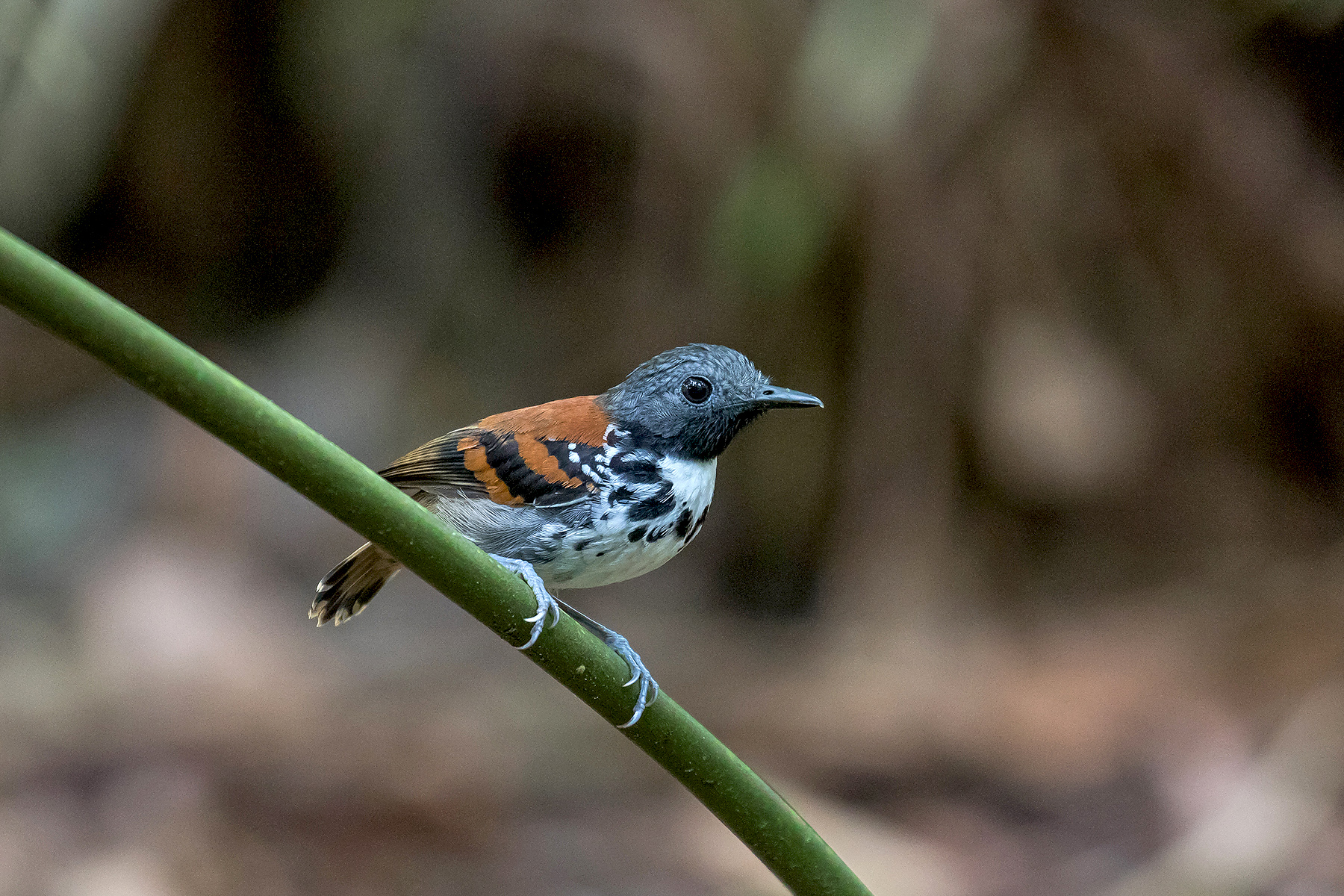
Spotted Antbird (image by Pete Morris)
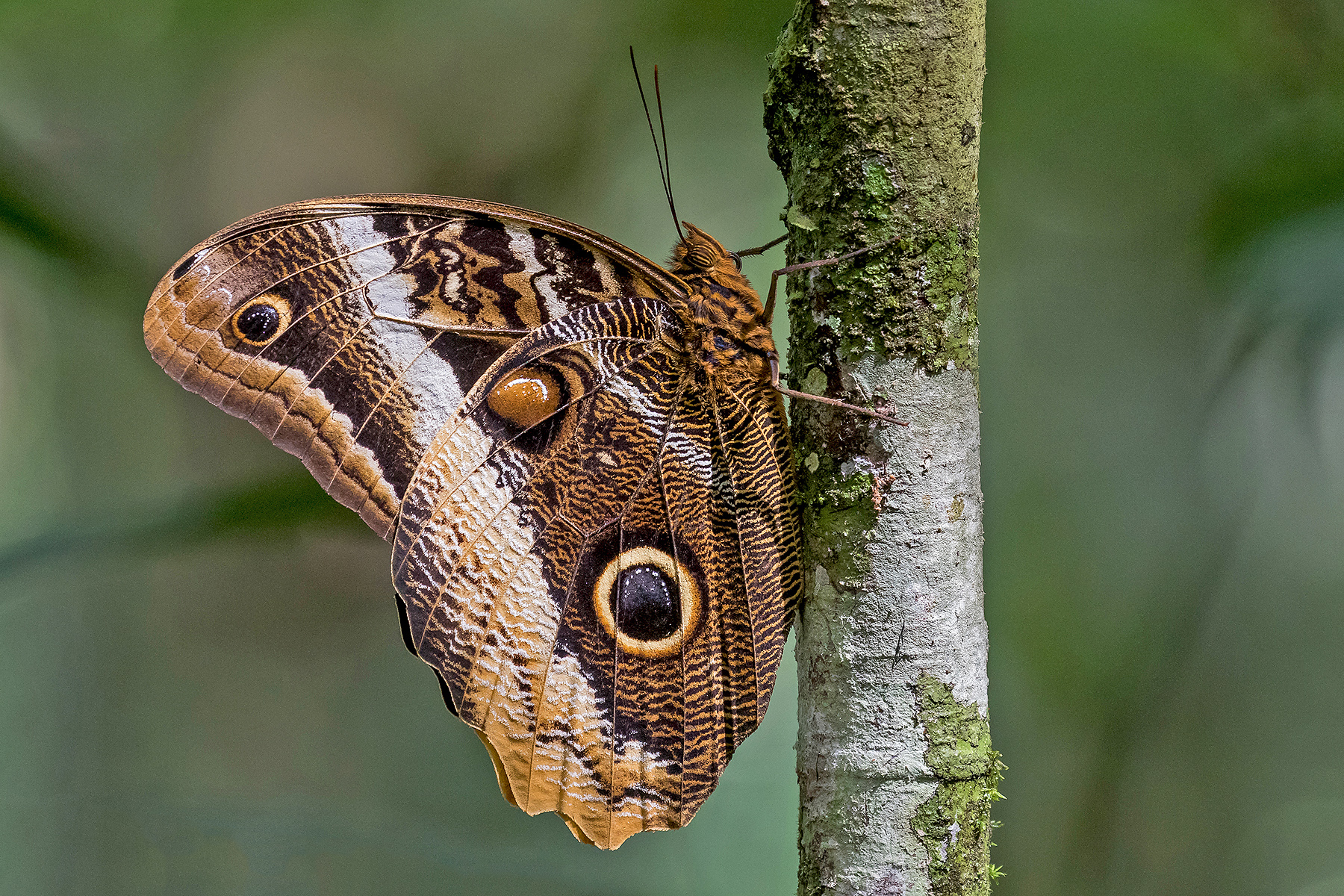
Owl Butterfly (image by Pete Morris)
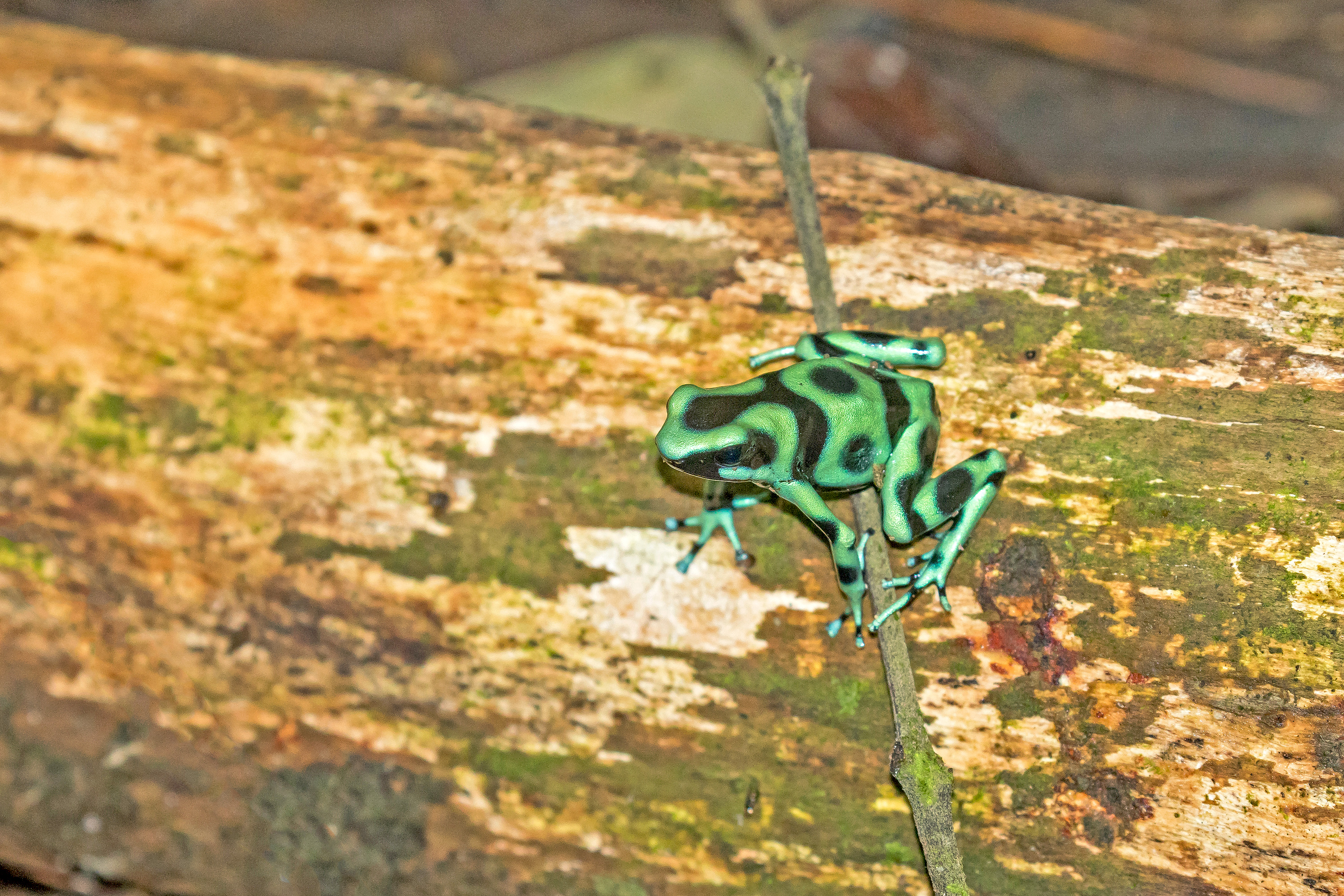
Green-and-black Poison Dart Frog (image by Pete Morris)
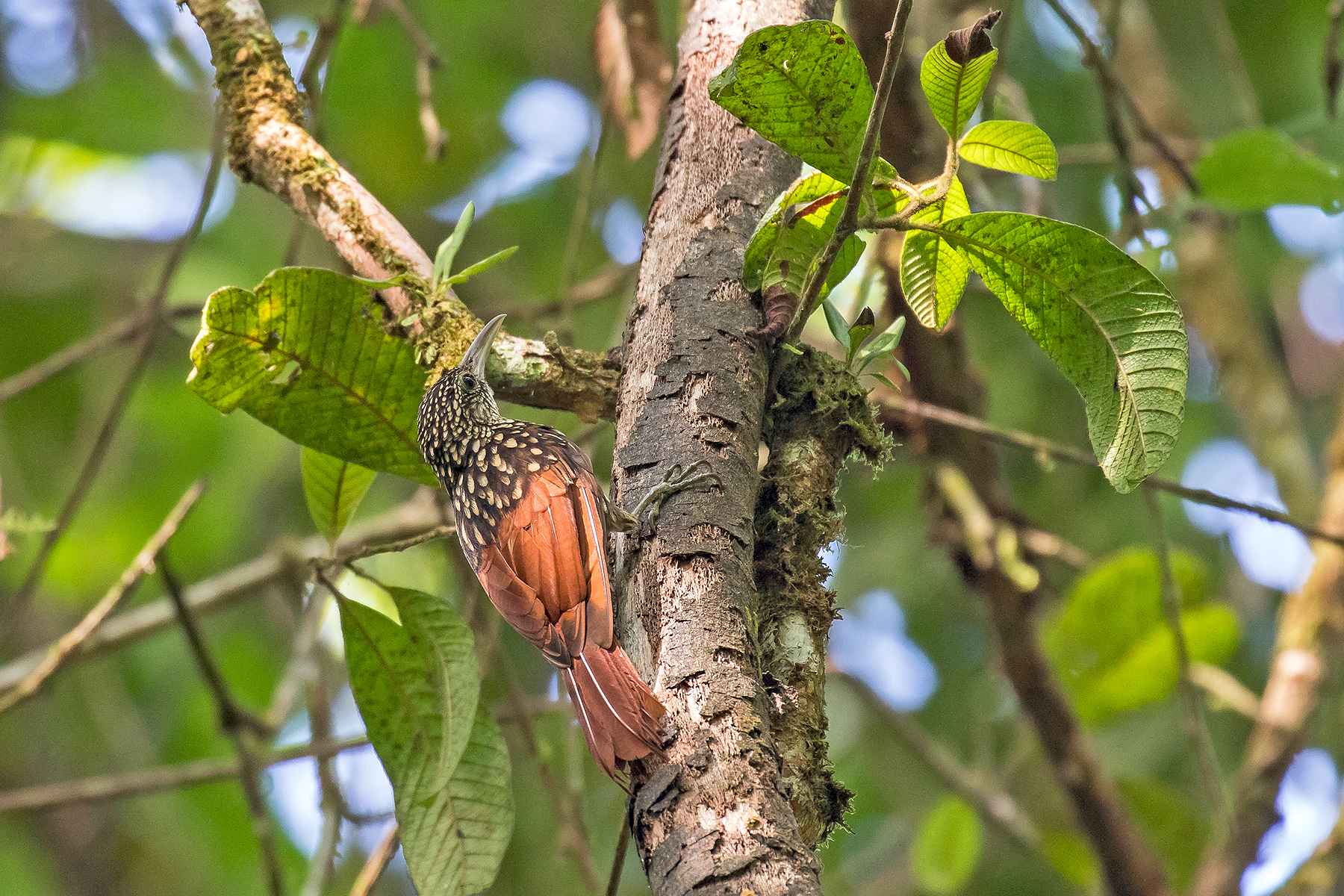
Black-striped Woodcreeper (image by Pete Morris)
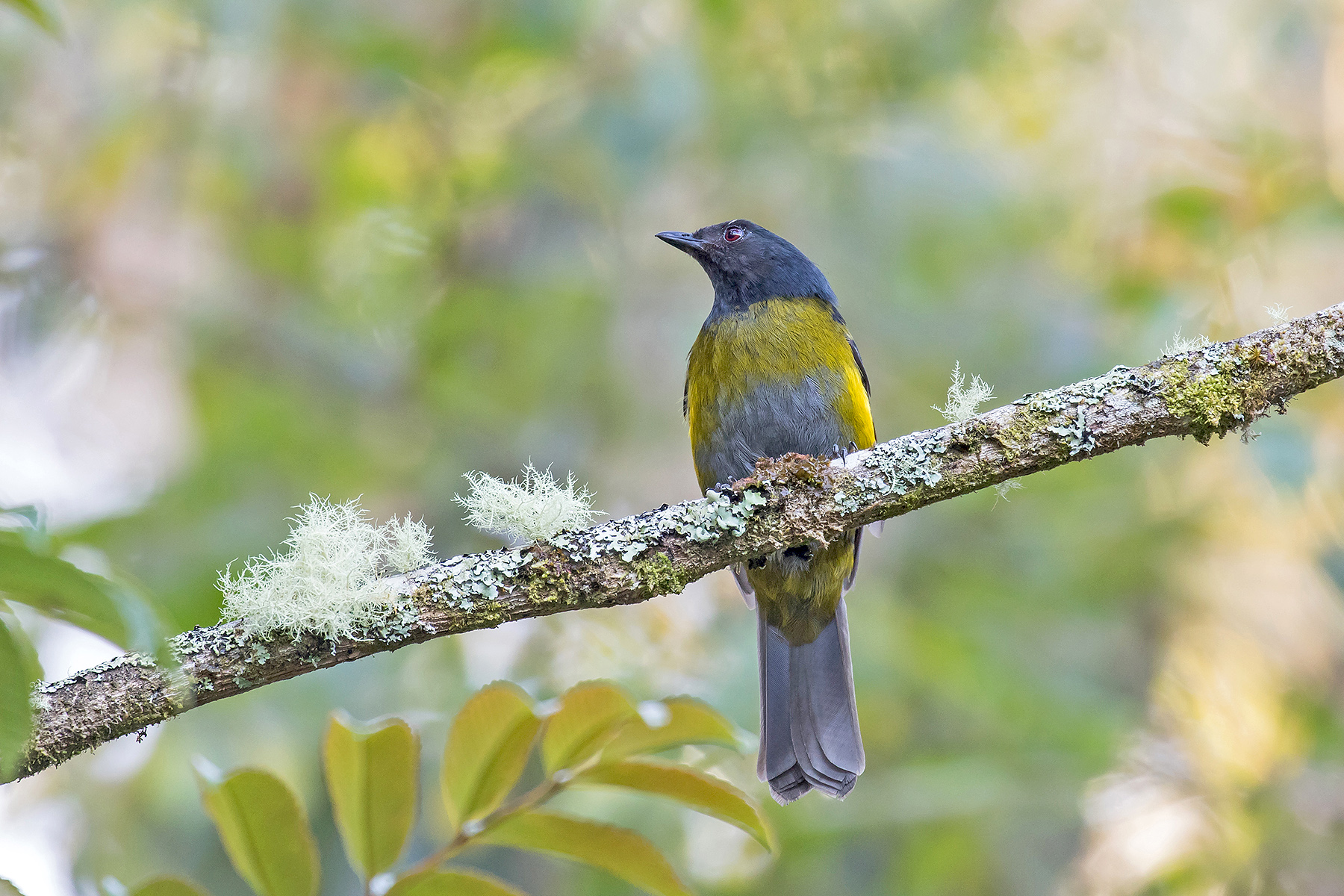
Black-and-yellow Phainoptila (image by Pete Morris)
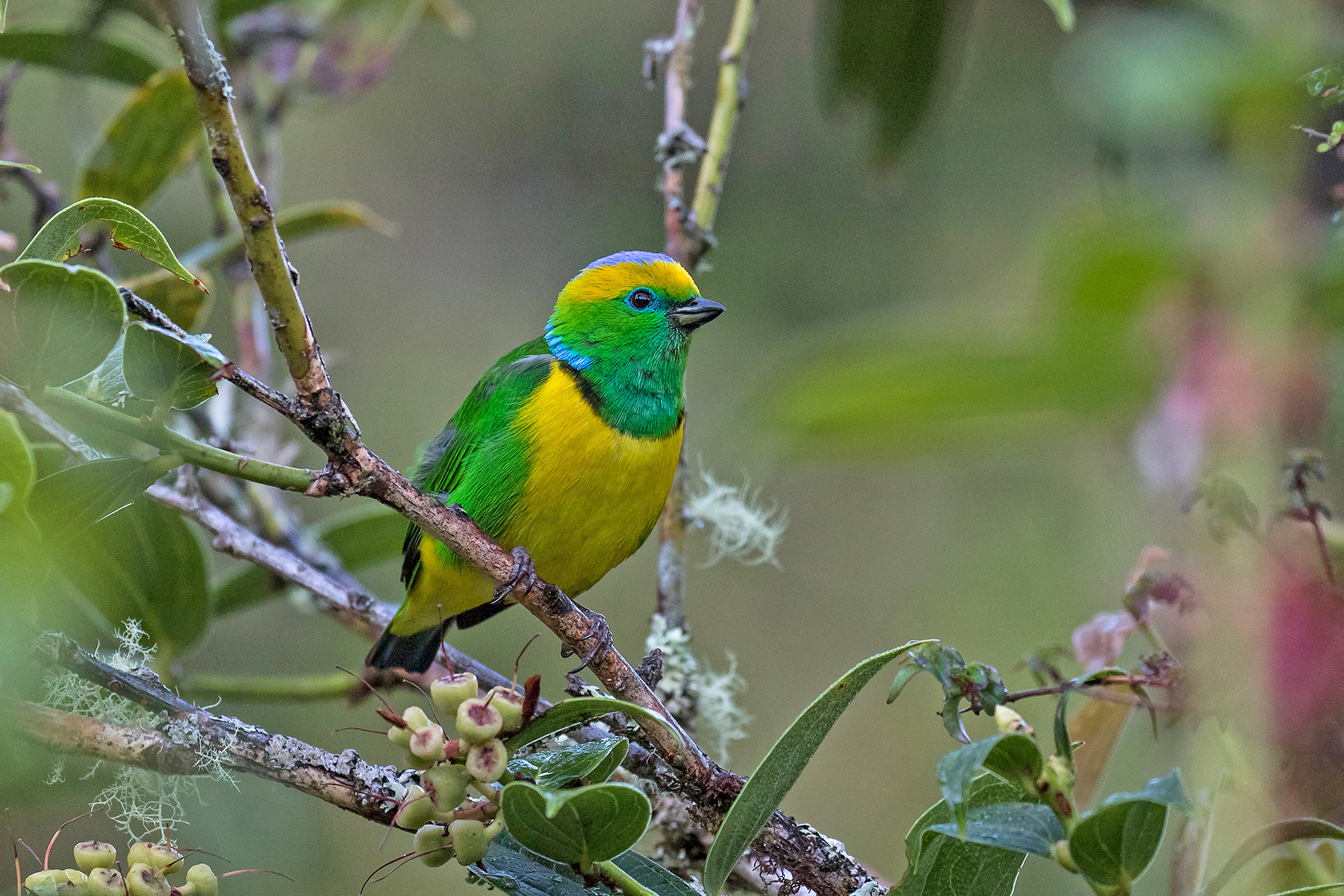
Golden-browed Chlorophonia (image by Pete Morris)
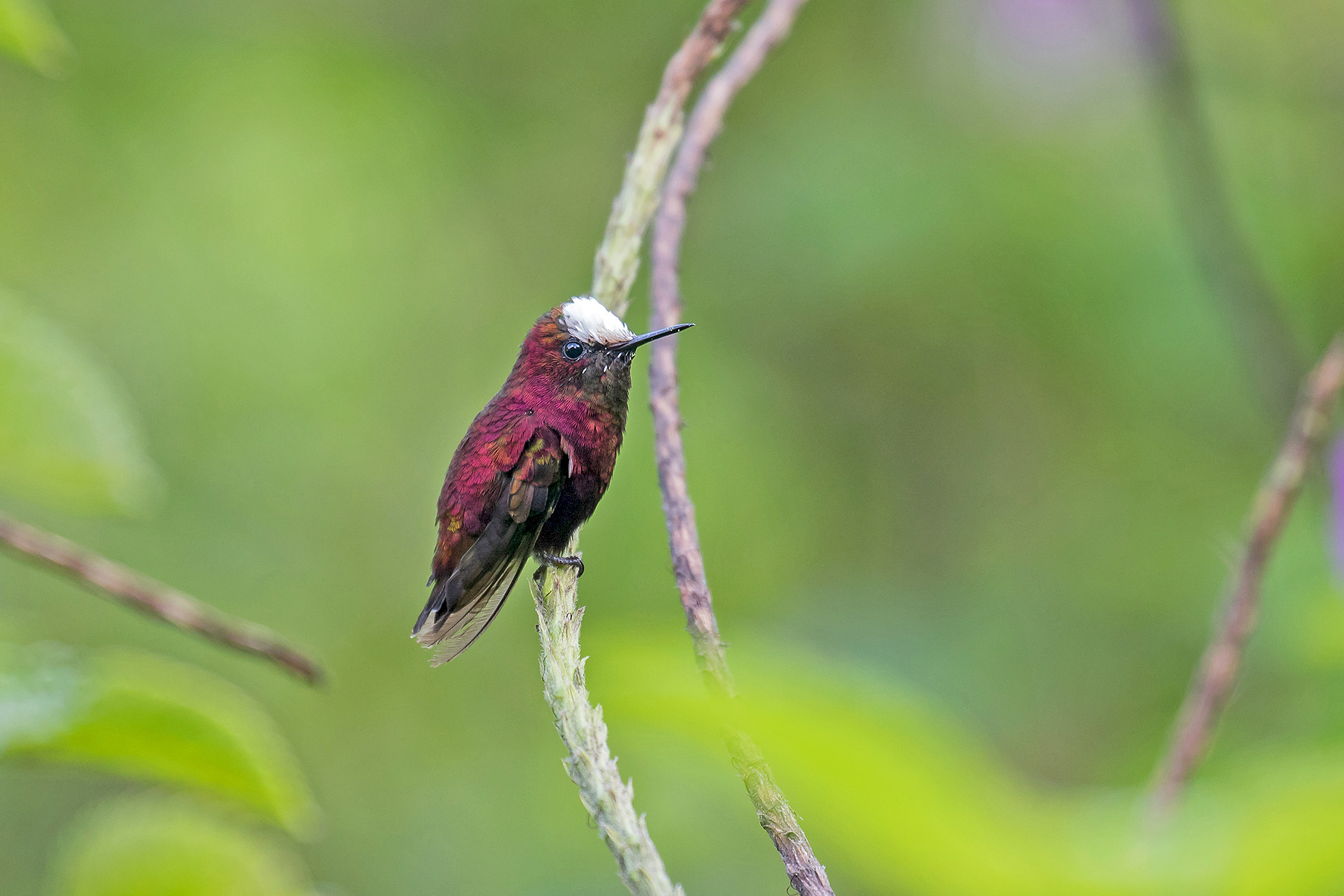
Snowcap (image by Pete Morris)
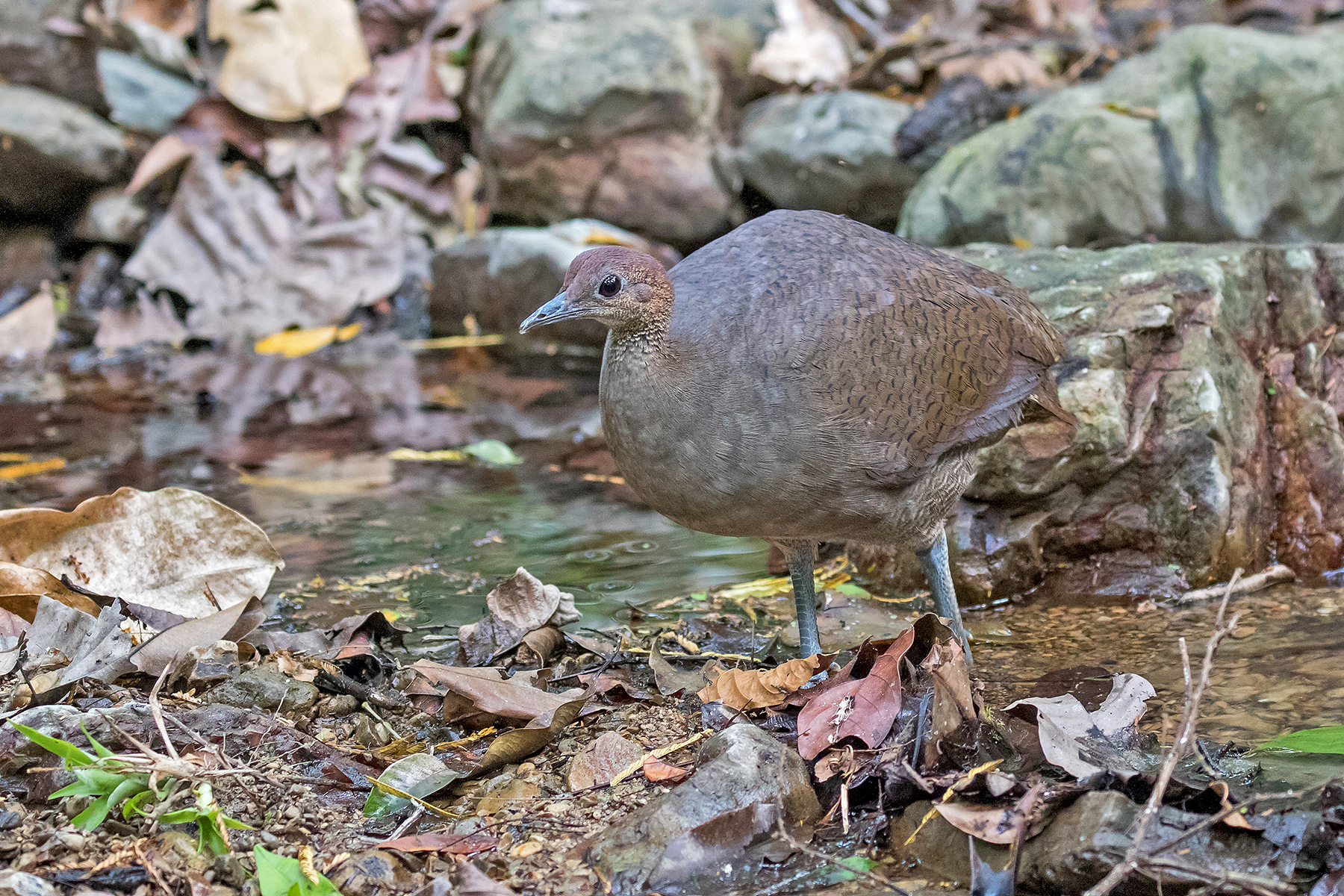
Streak-breasted Treehunter (image by Pete Morris)
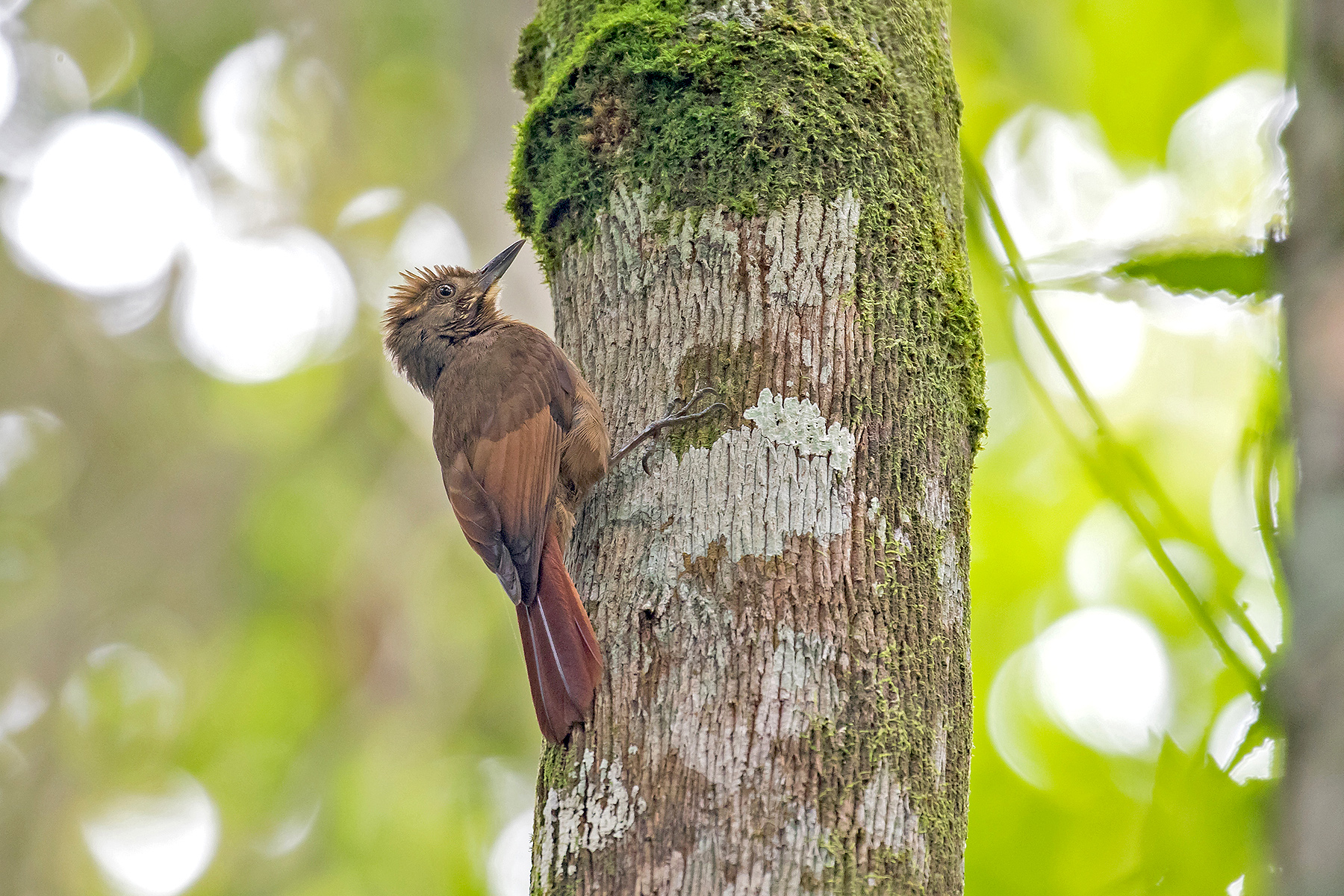
Tawny-winged Woodcreeper (image by Pete Morris)
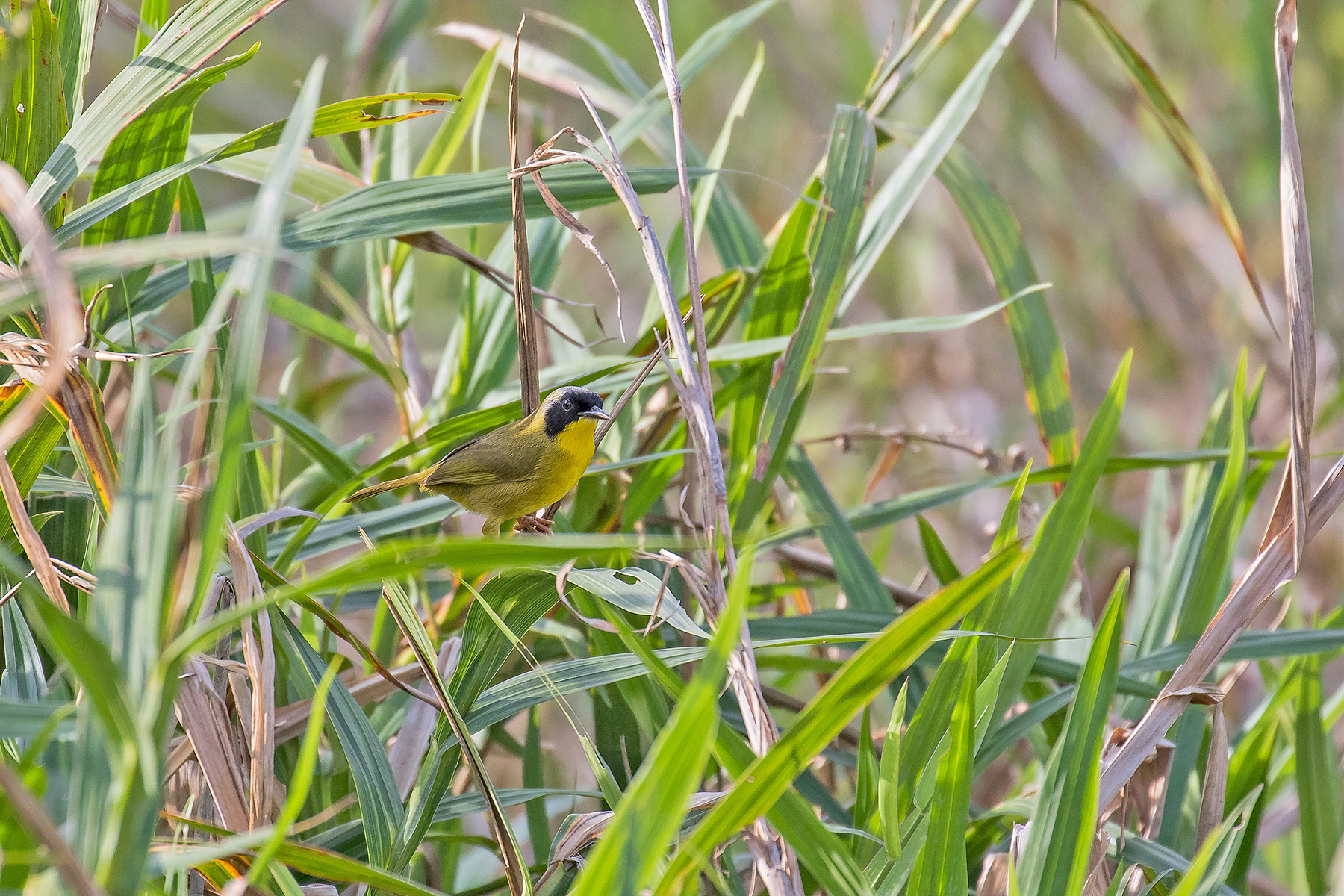
Chiriqui Yellowthroat (image by Pete Morris)
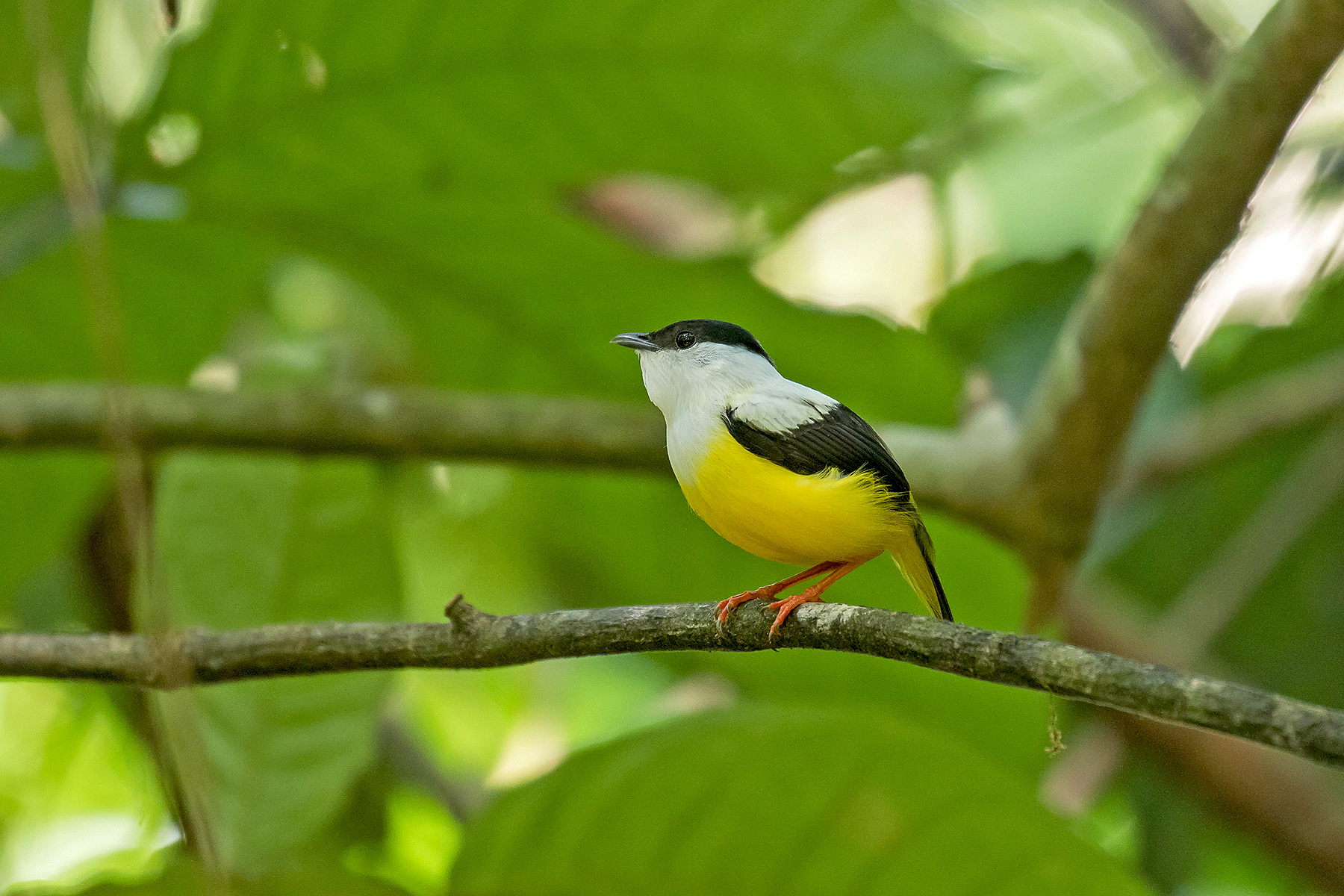
White-collared Manakin (image by Pete Morris)
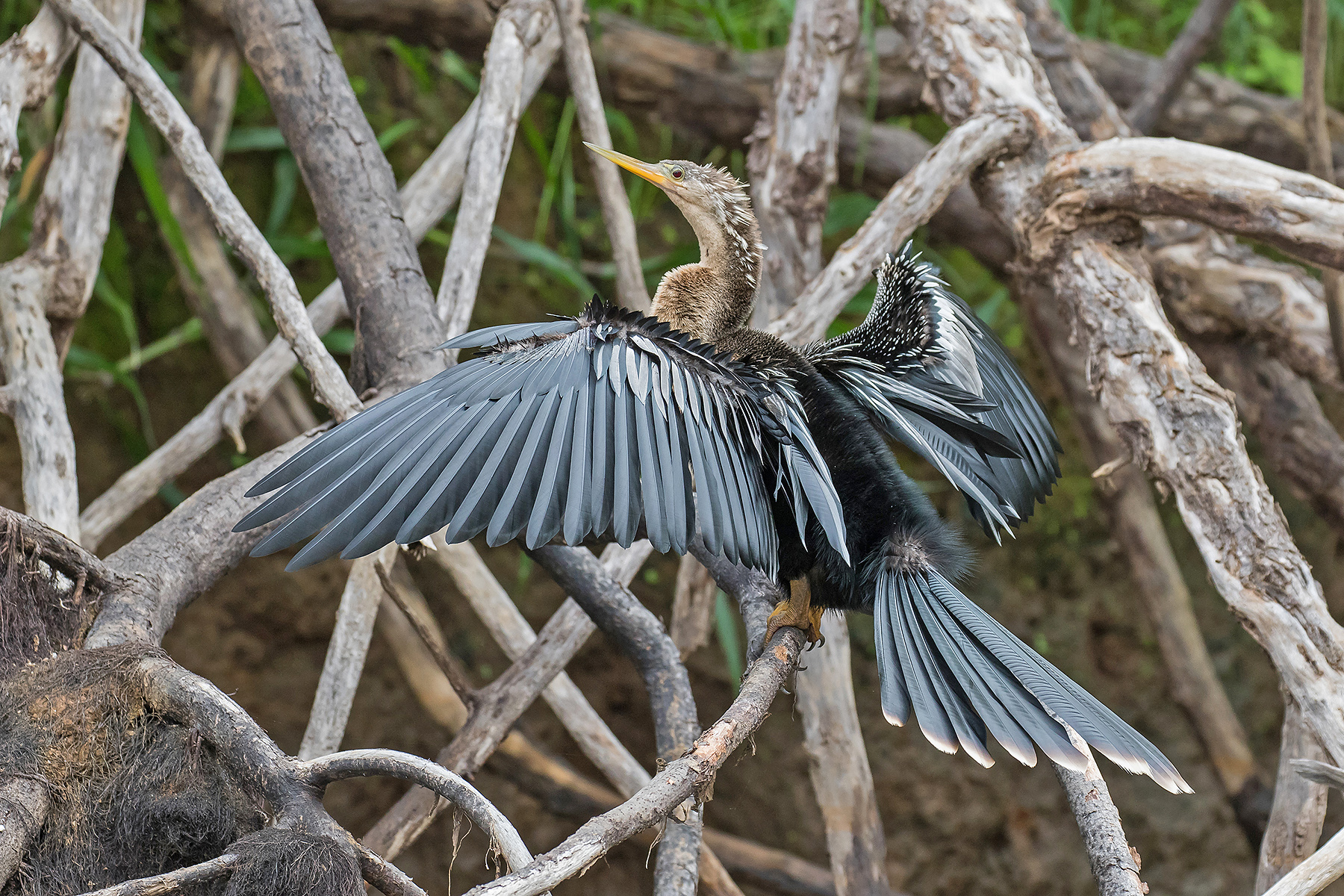
Anhinga (image by Pete Morris)
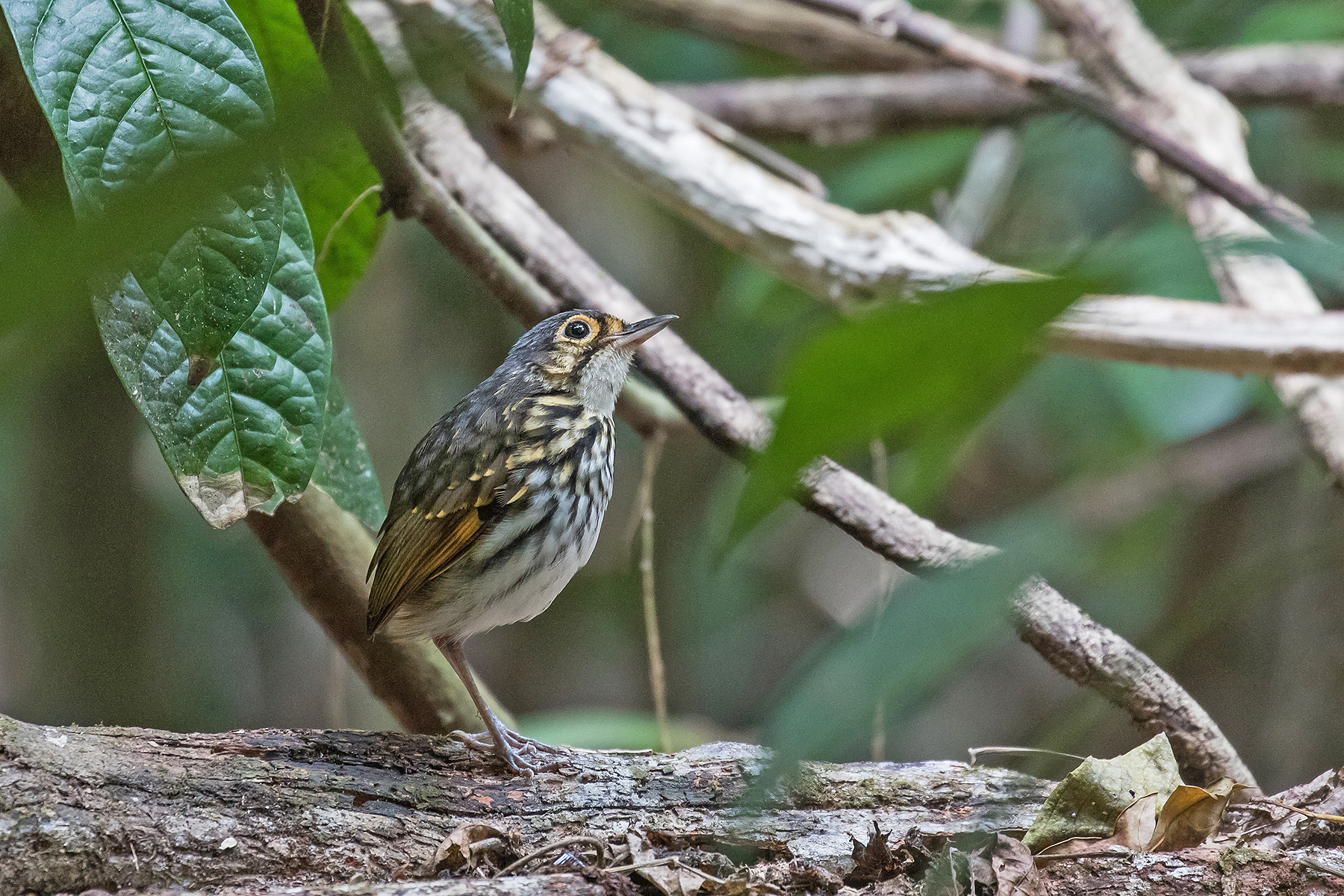
Streak-chested Antpitta (image by Pete Morris)
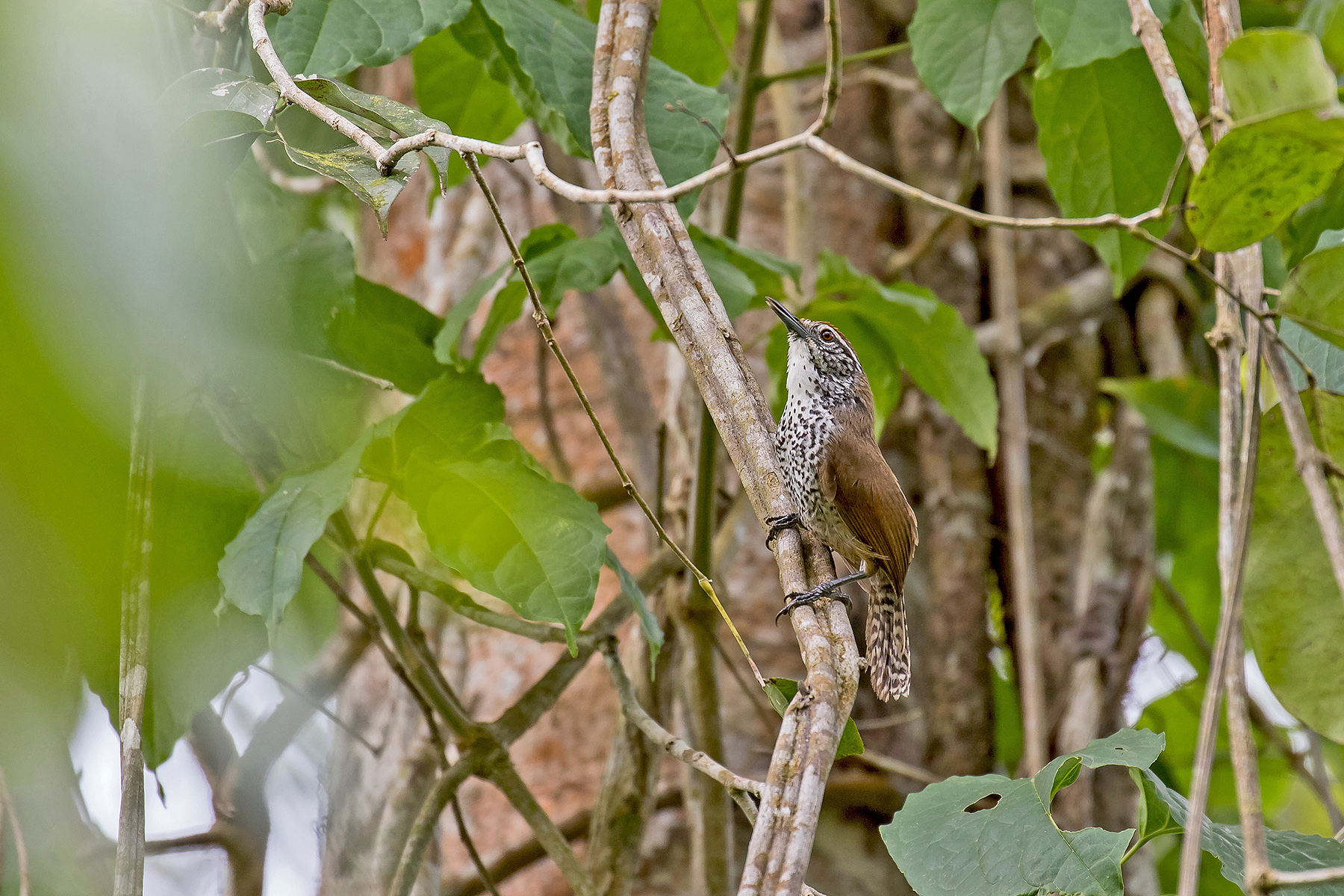
Spot-breasted Wren (image by Pete Morris)
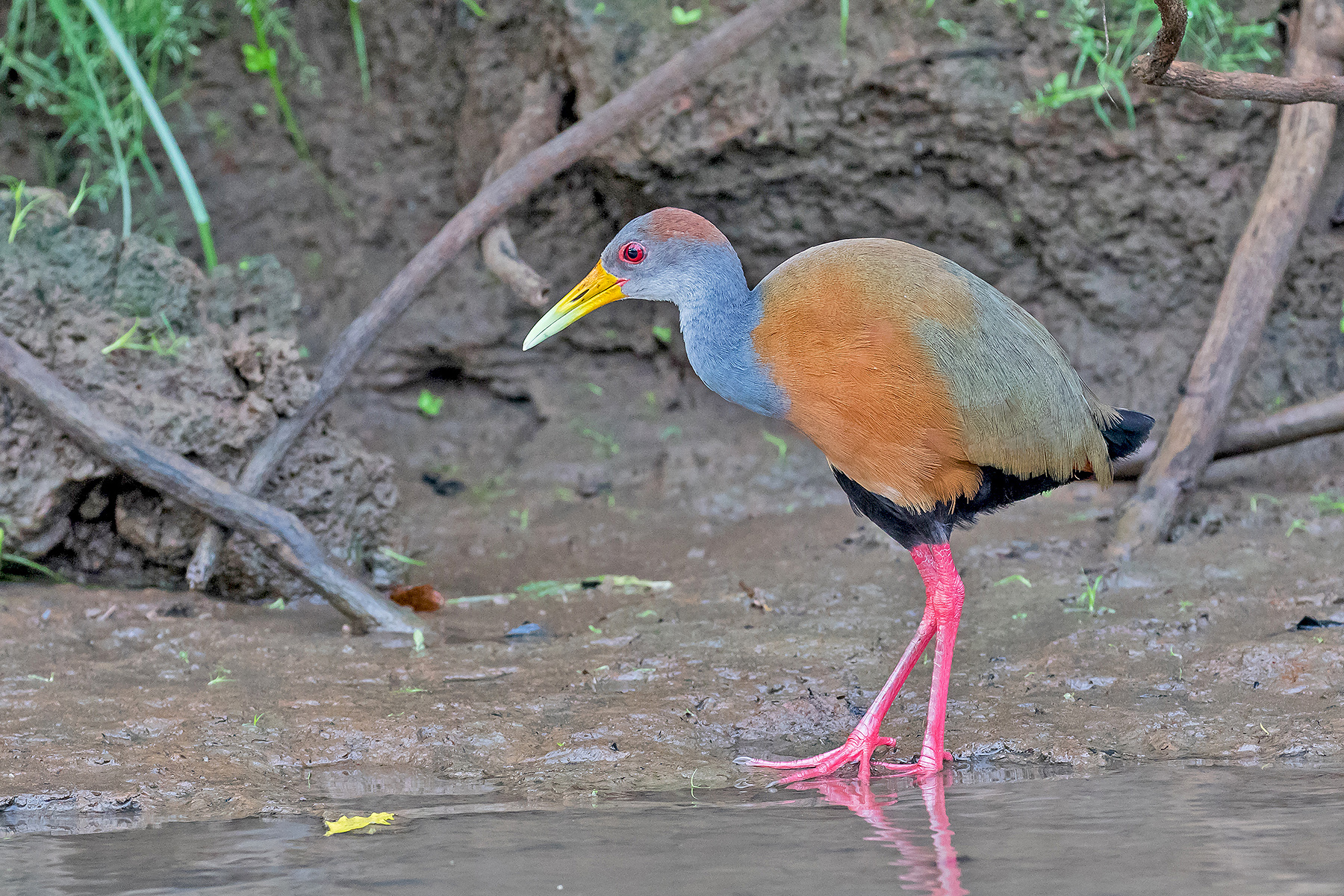
Rufous-naped Wood Rail (image by Pete Morris)
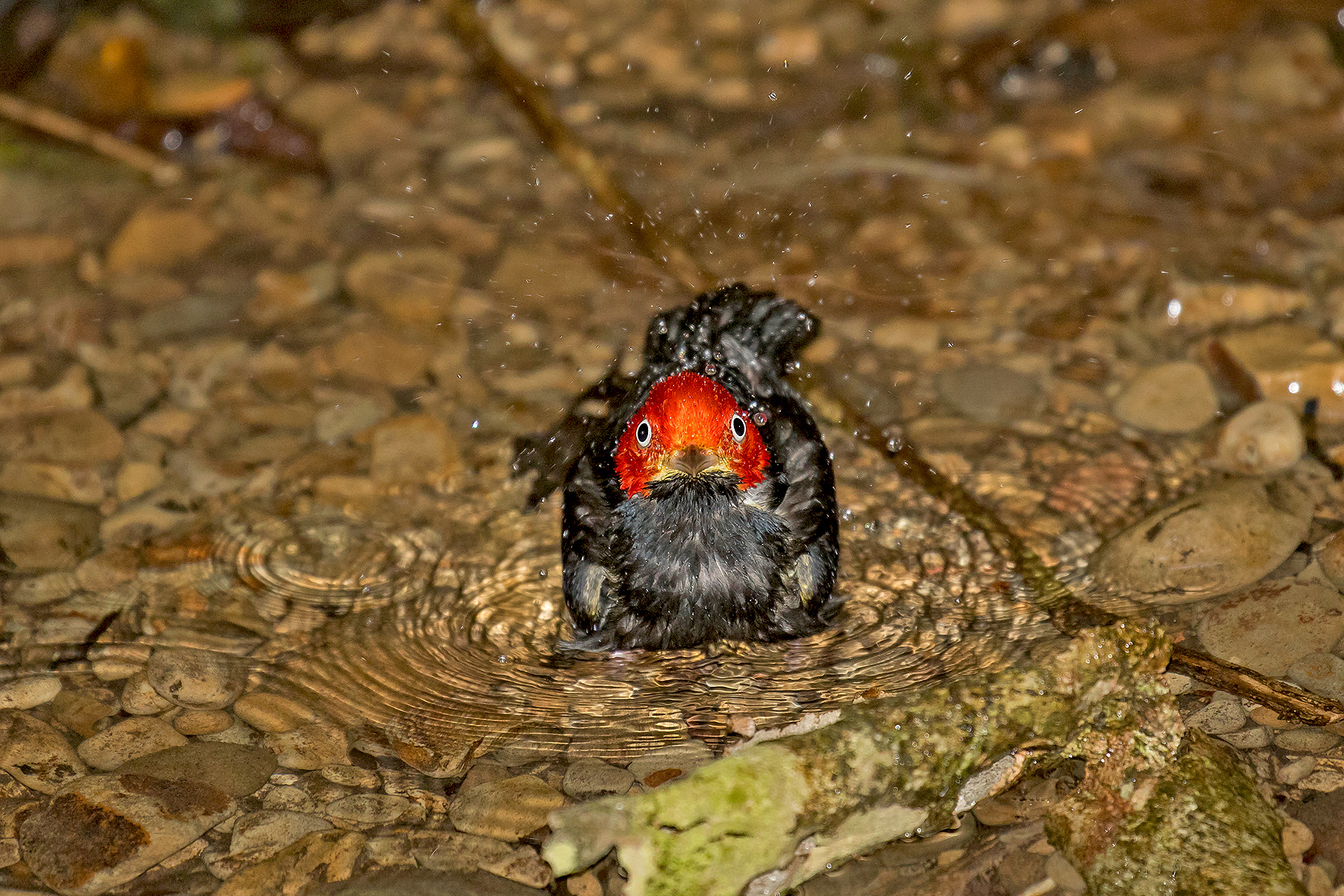
Red-capped Manakin (image by Pete Morris)
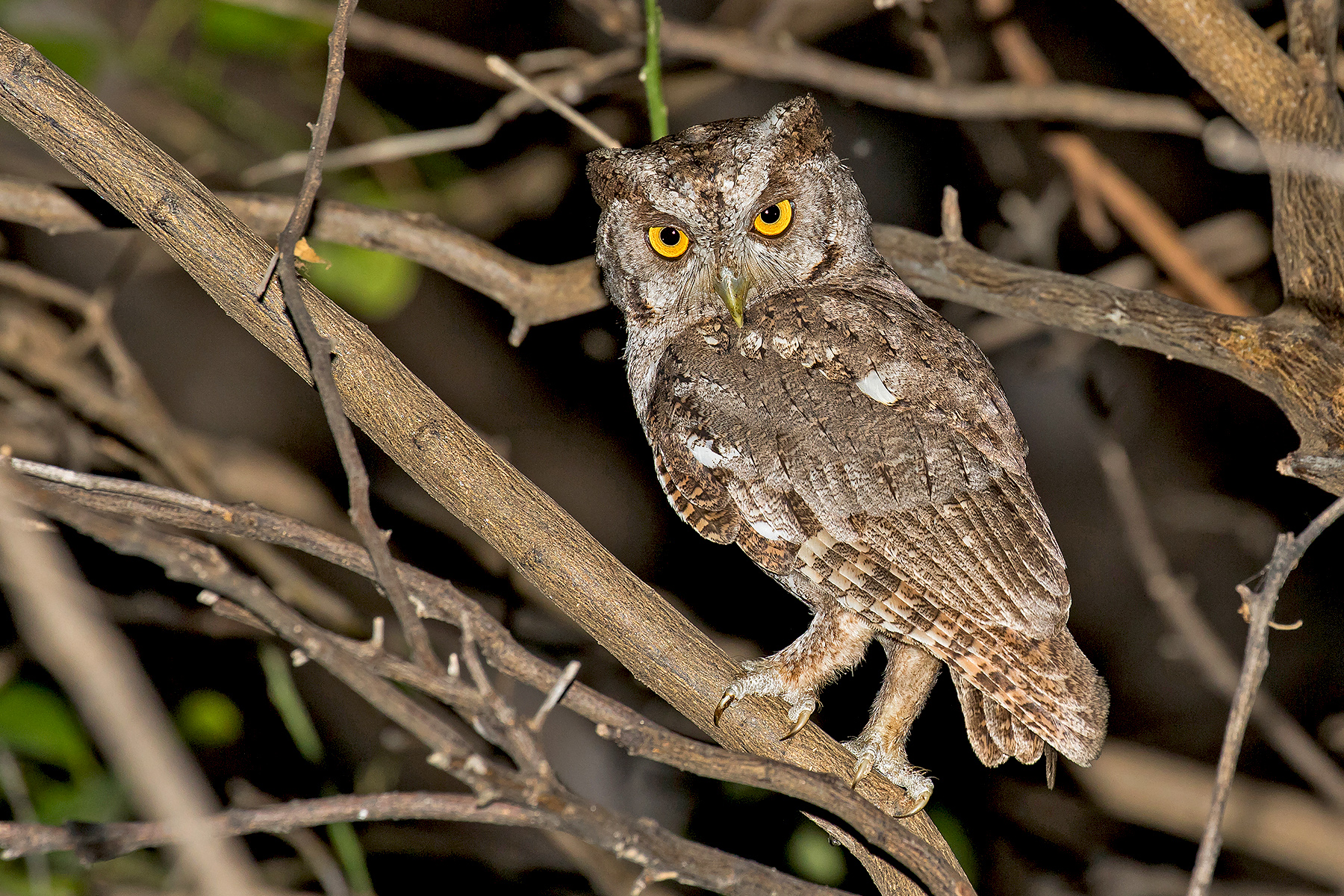
Pacific Screech Owl (image by Pete Morris)
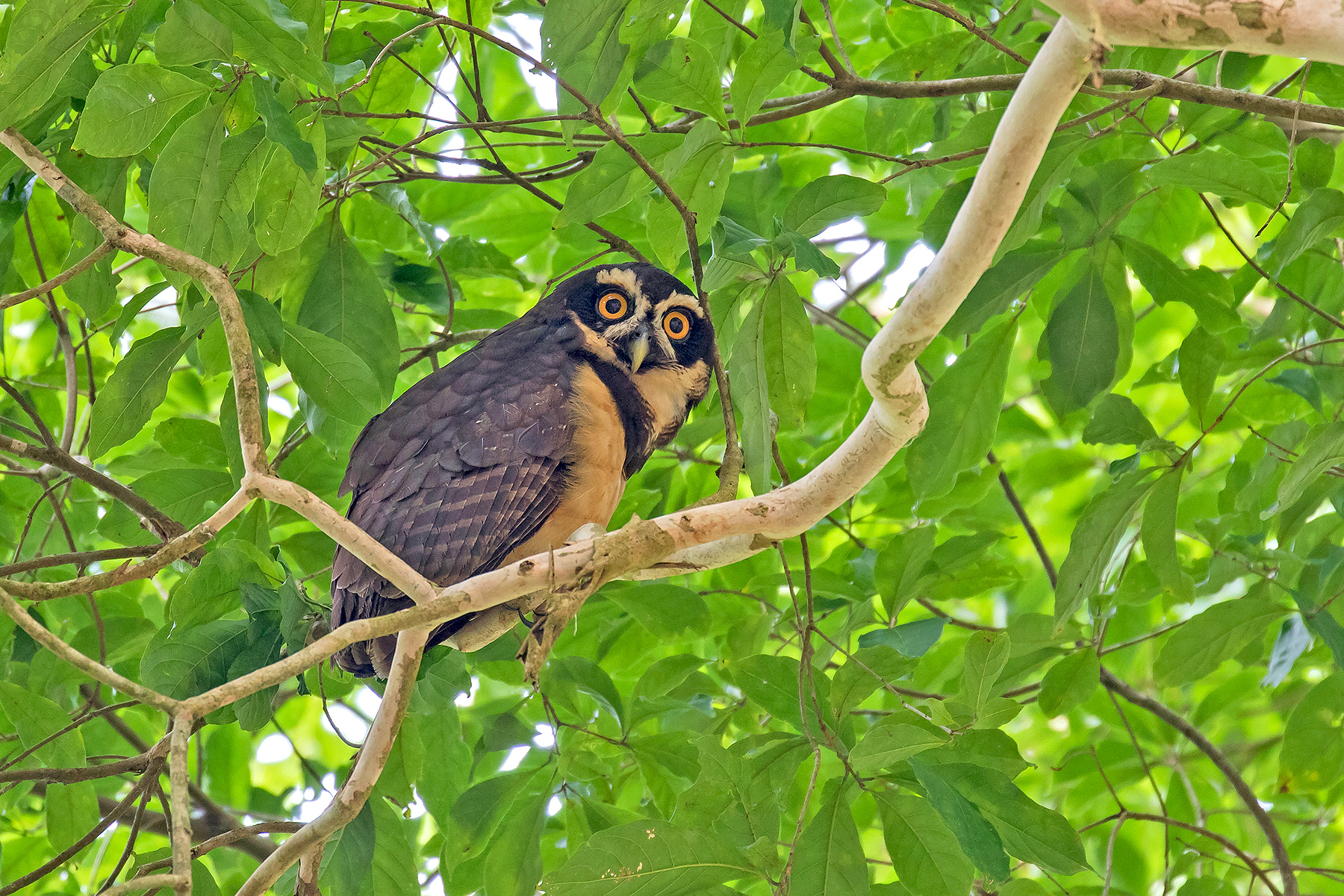
Spectacled Owl (image by Pete Morris)
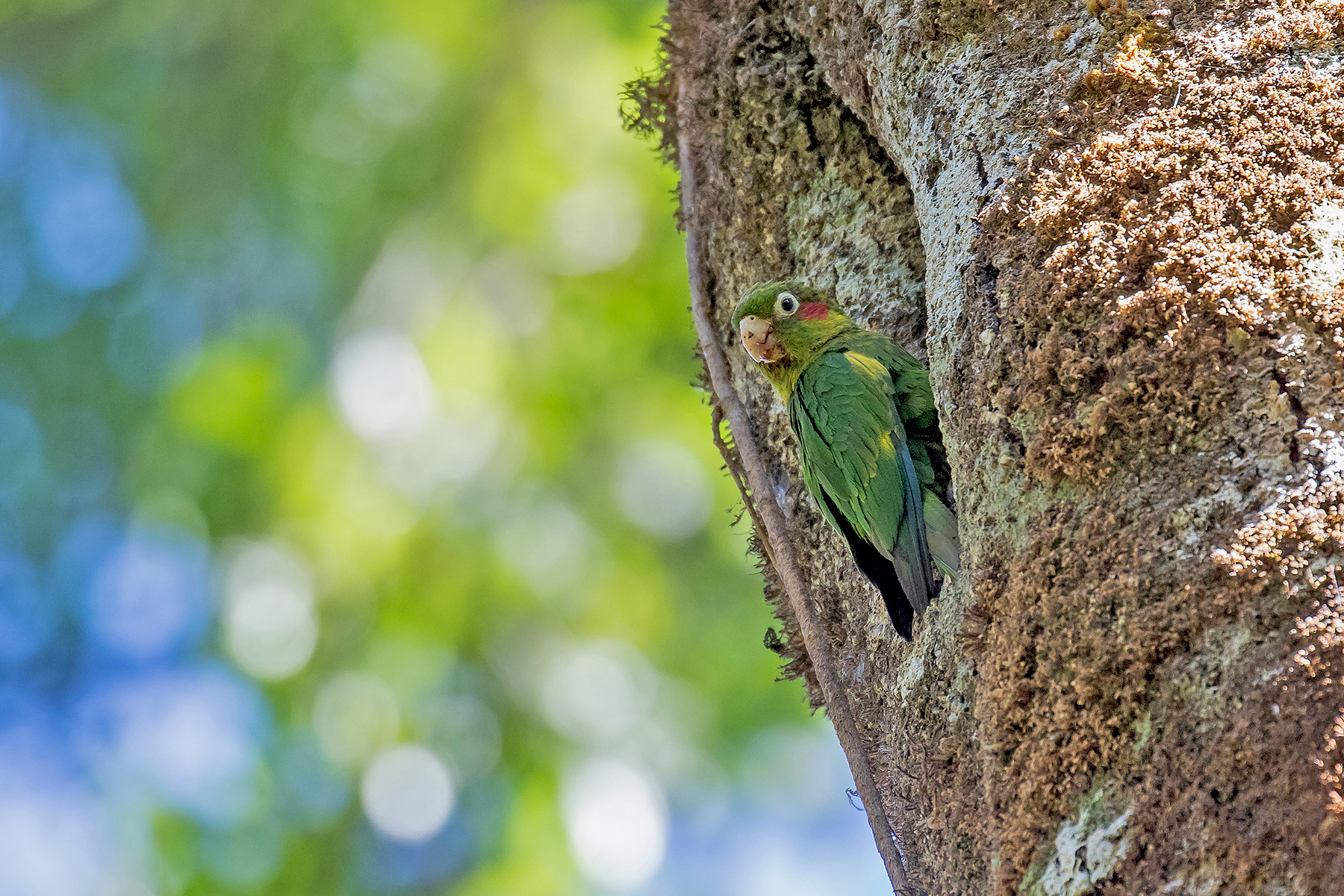
Sulphur-winged Parakeet (image by Pete Morris)
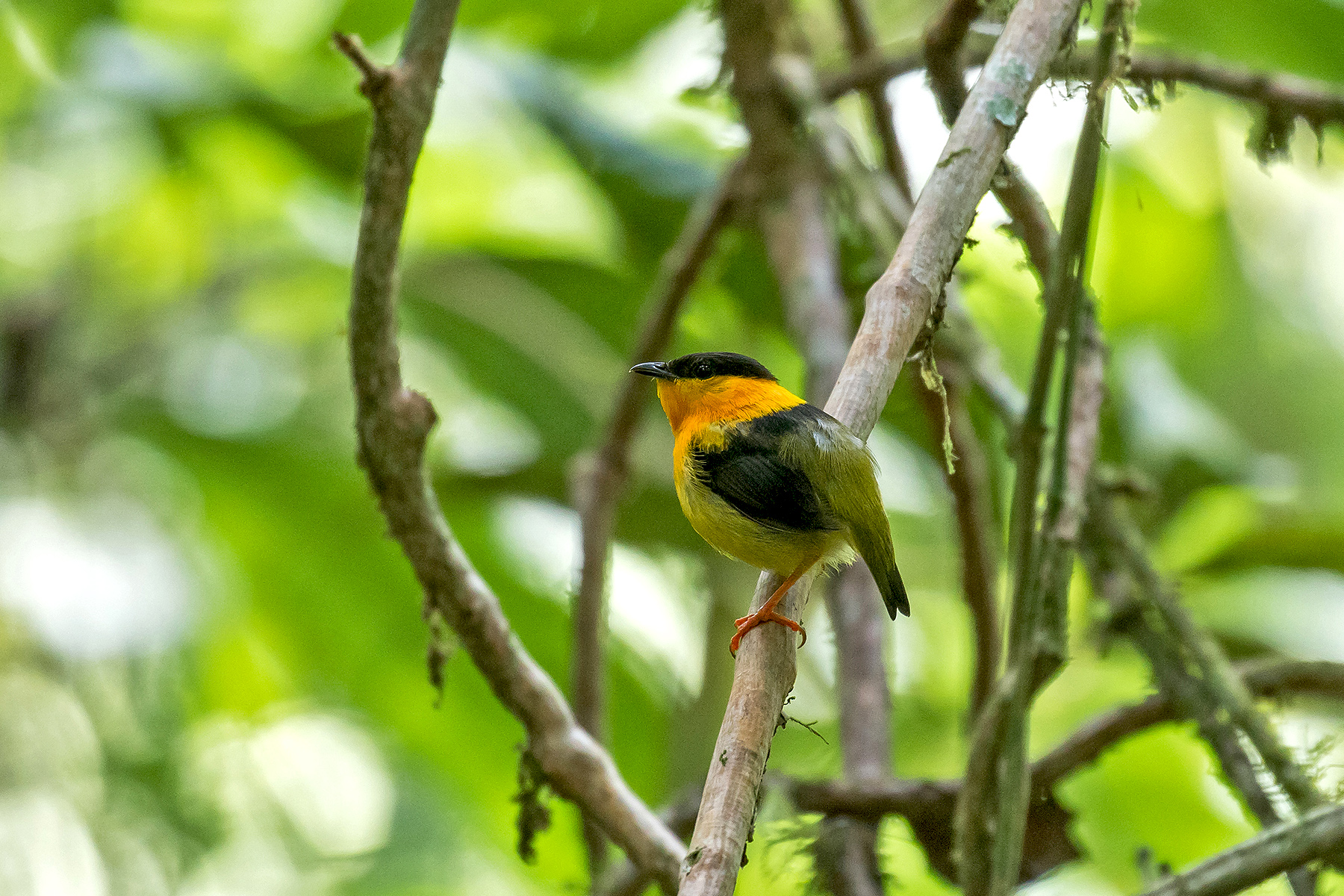
Orange-collared Manakin (image by Pete Morris)
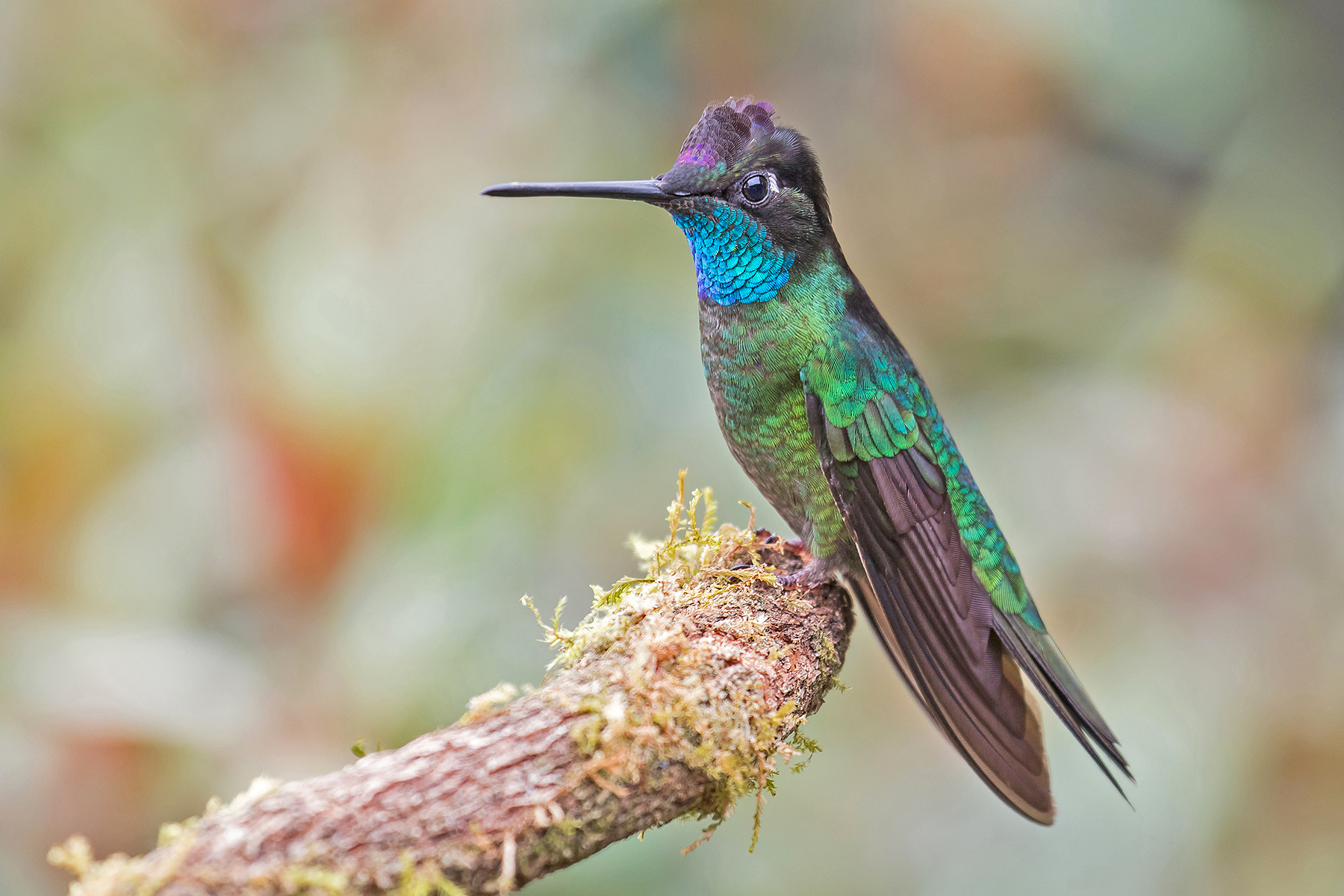
Admirable Hummingbird (image by Pete Morris)
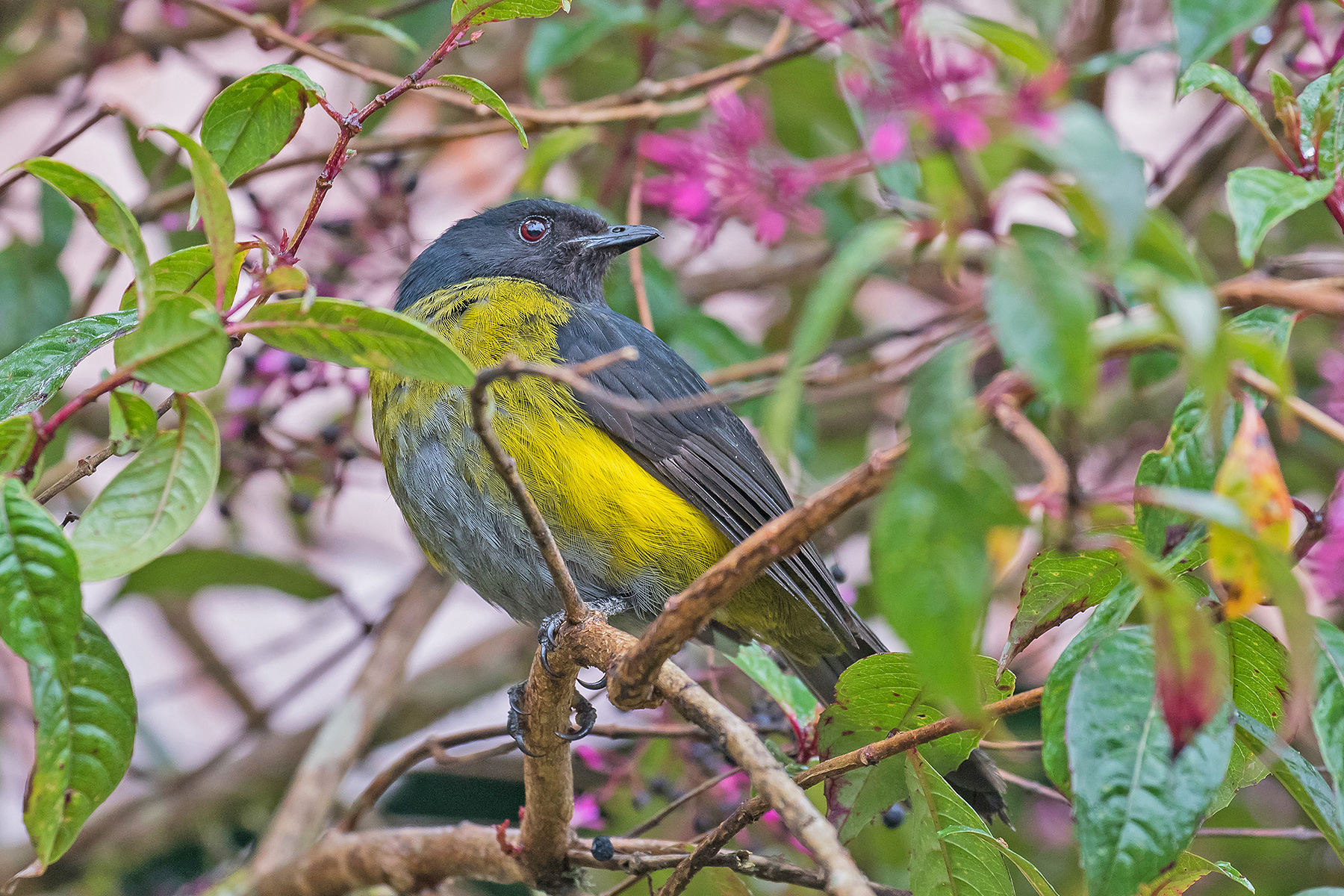
Nicaraguan Seedfinch (image by Pete Morris)
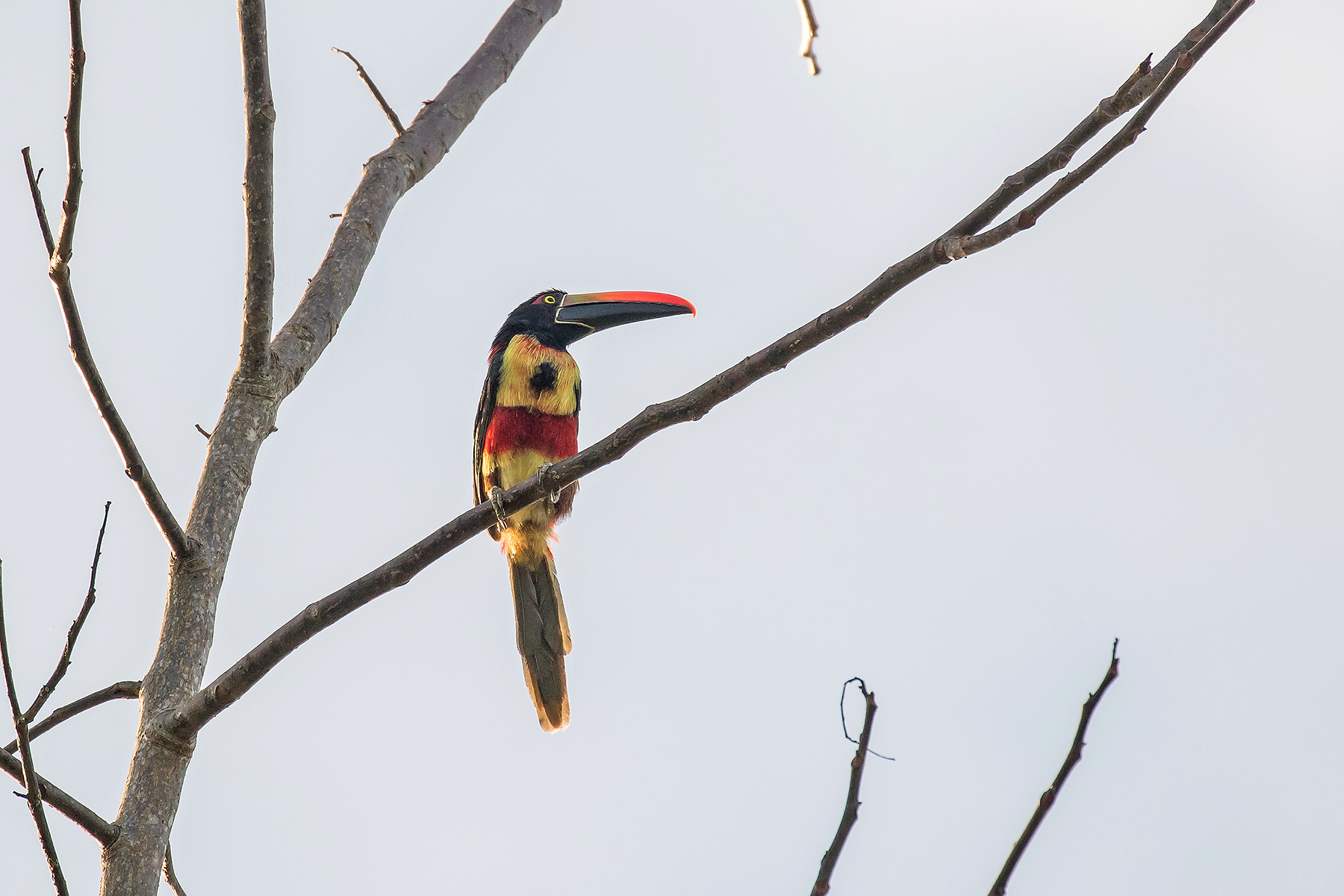
Fiery-billed Aracari (image by Pete Morris)
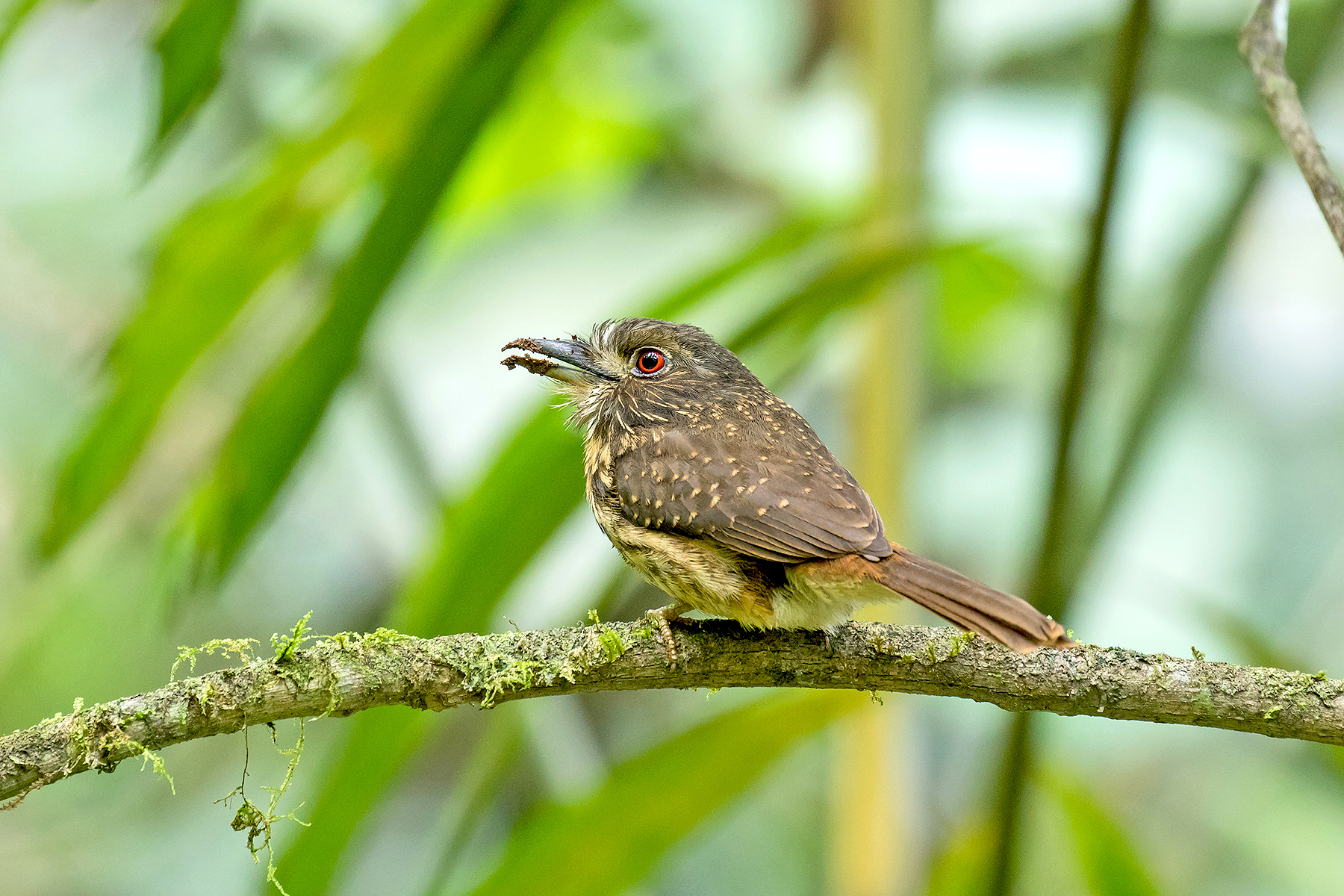
White-whiskered Puffbird (image by Pete Morris)
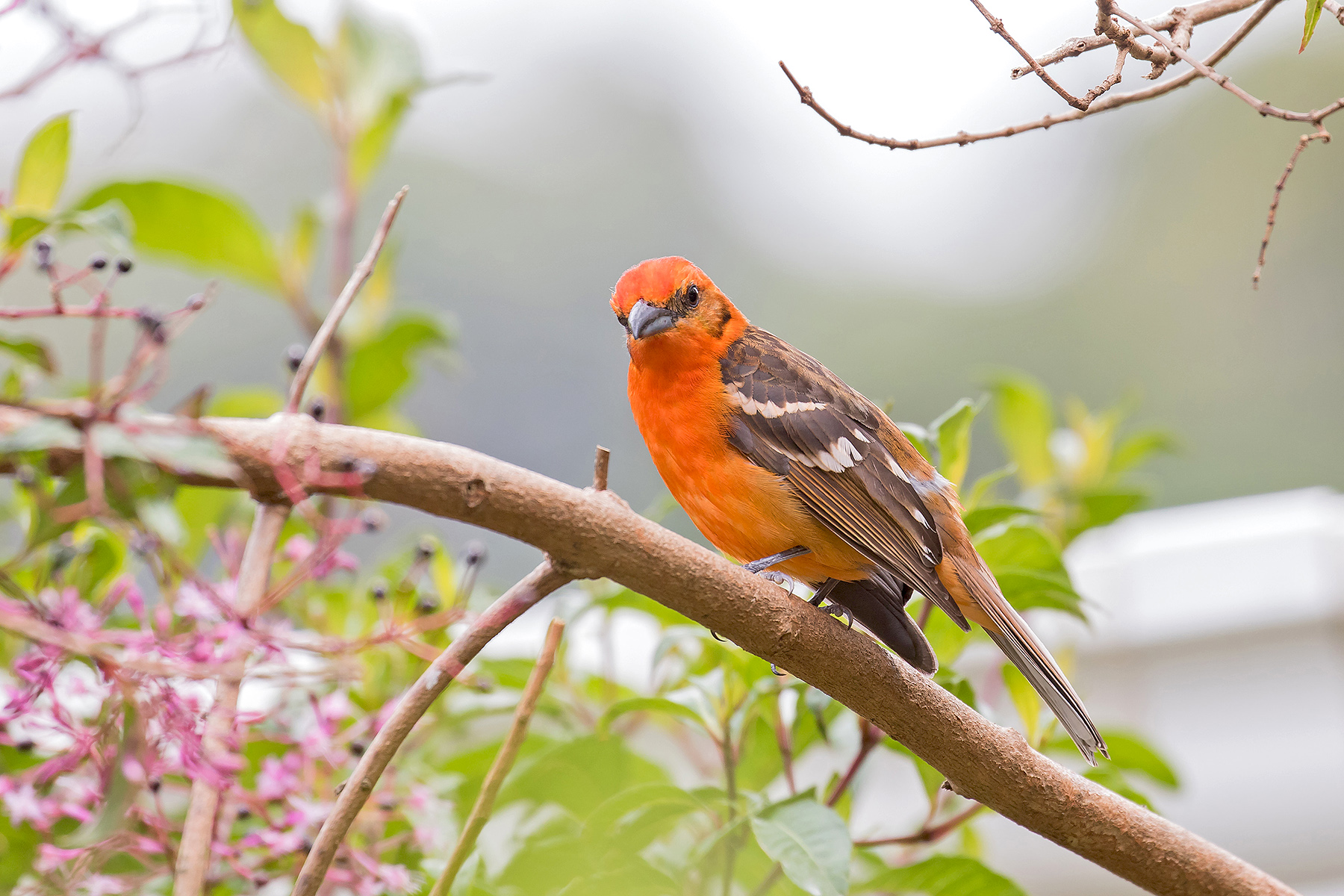
Flame-coloured Tanager (image by Pete Morris)
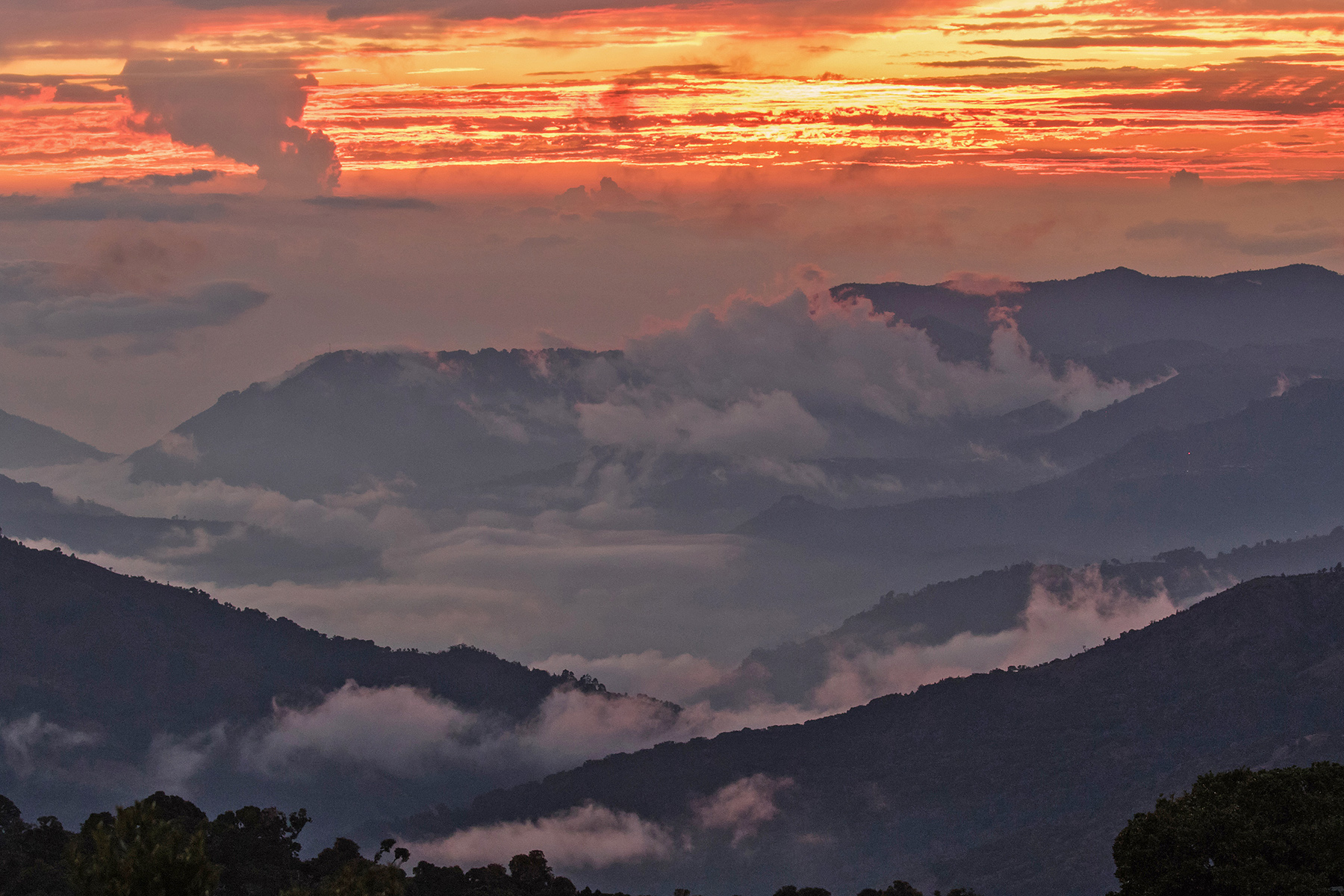
Cerro de la Muerte at sunset (image by Pete Morris)
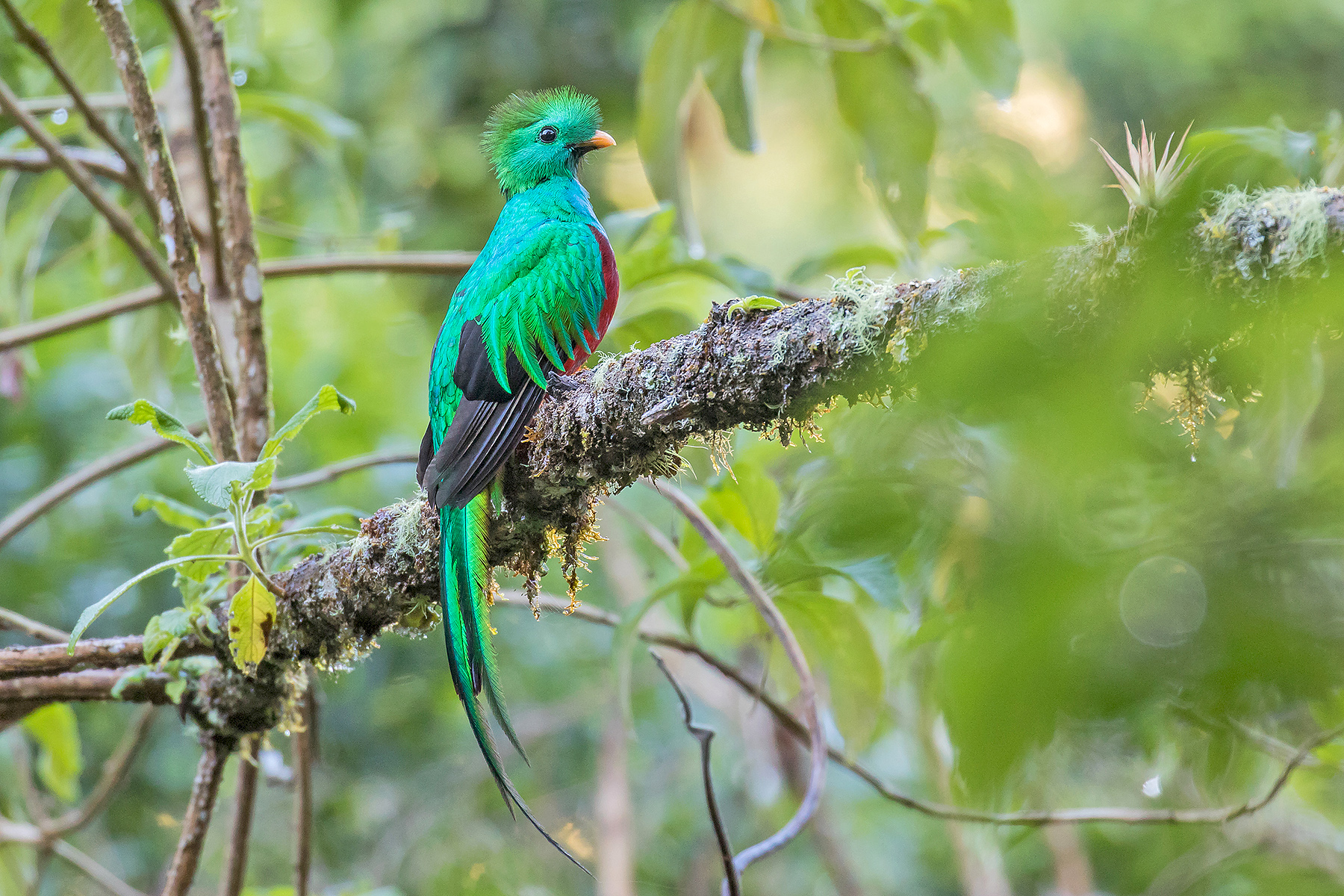
Resplendent Quetzal (image by Pete Morris)
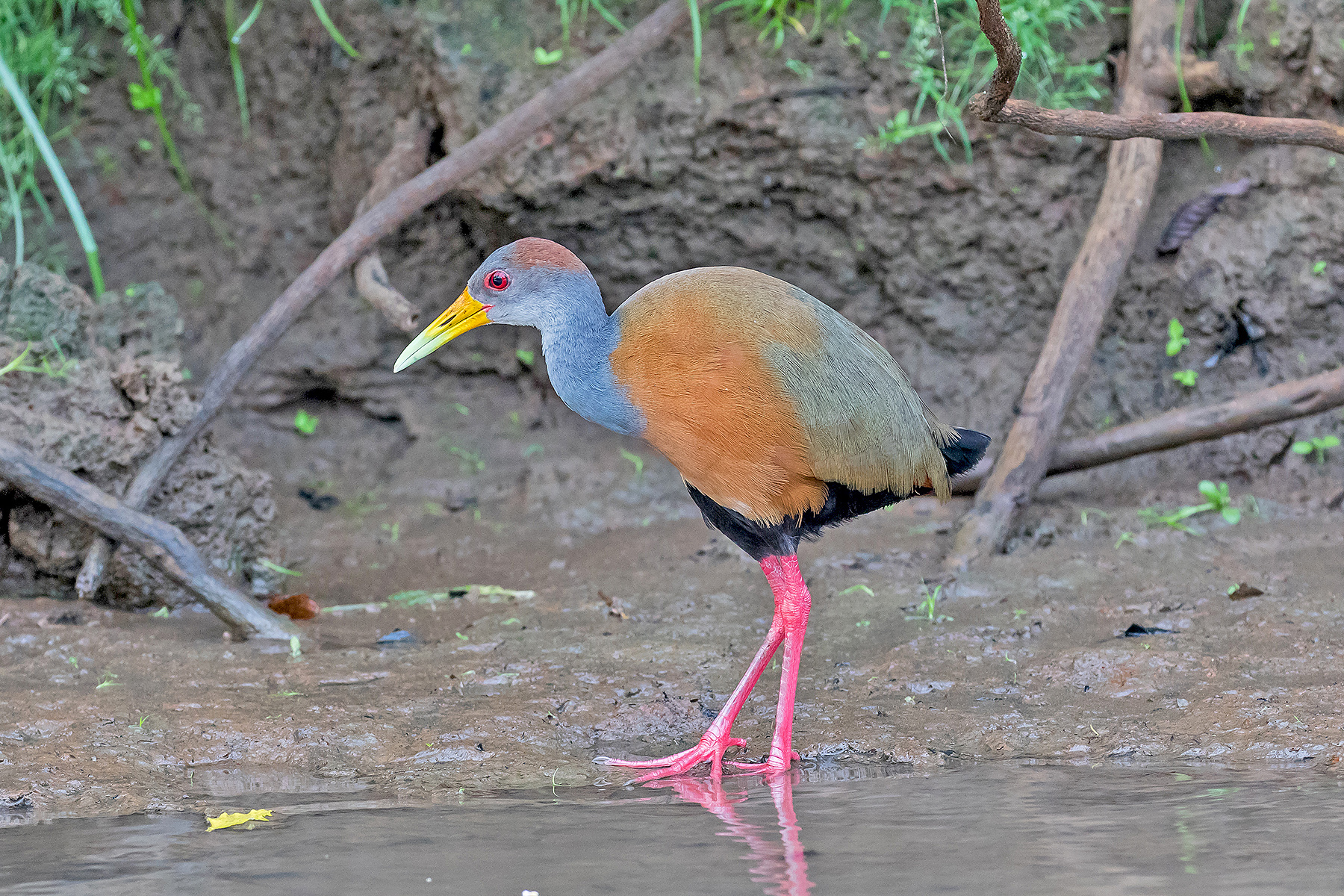
White-tipped Sicklebill (image by Pete Morris)
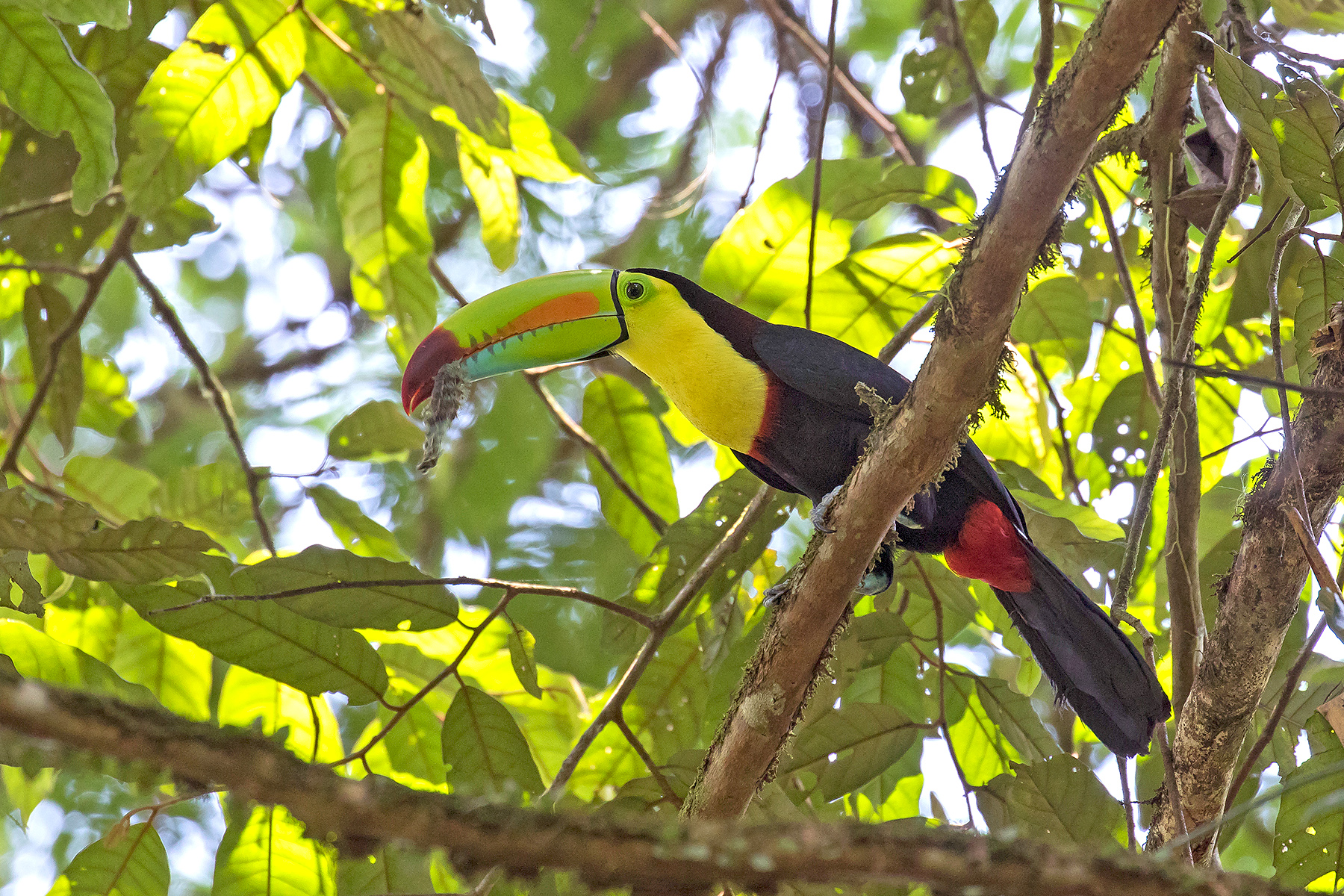
Keel-billed Toucan (image by Pete Morris)
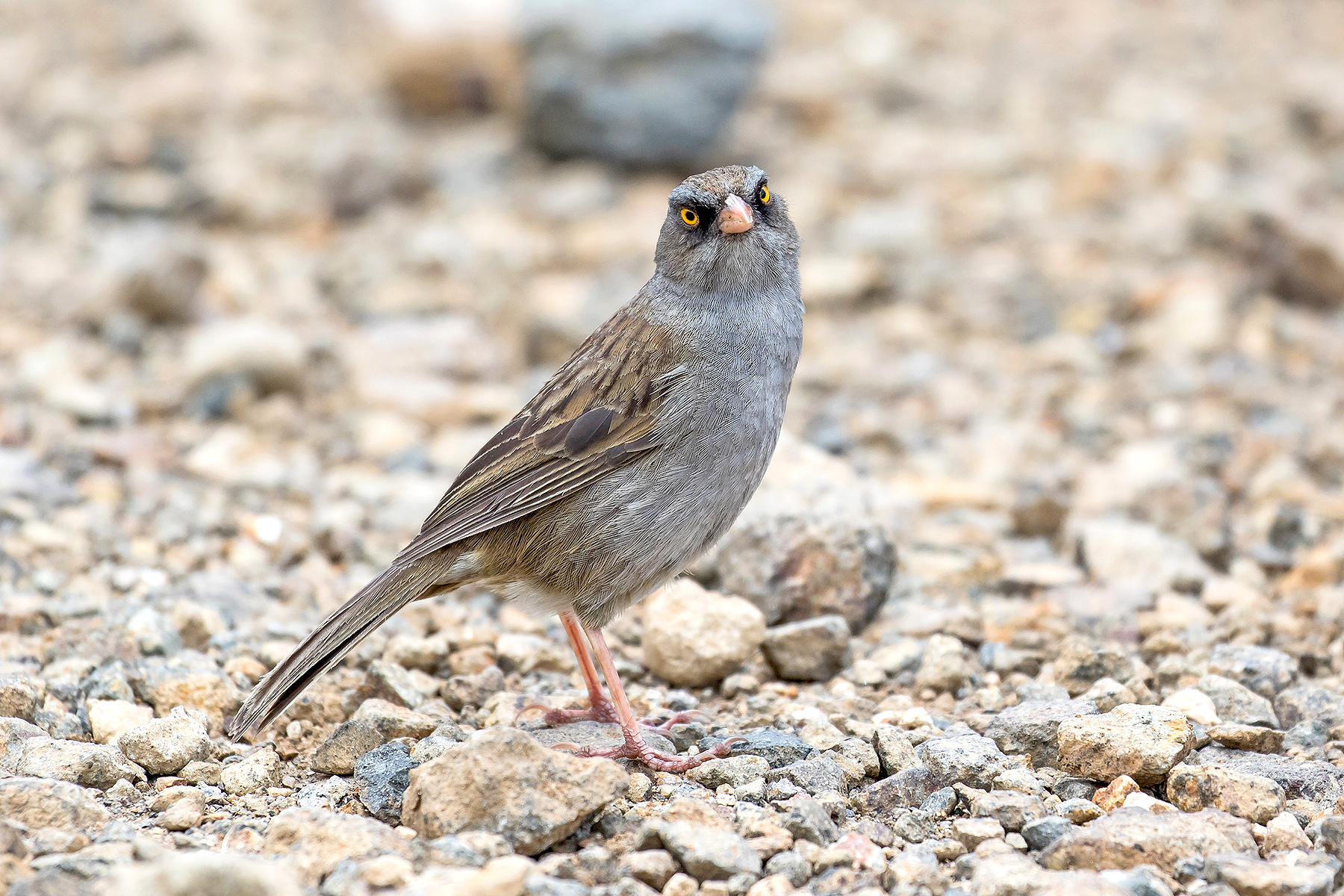
Volcano Junco (image by Pete Morris)
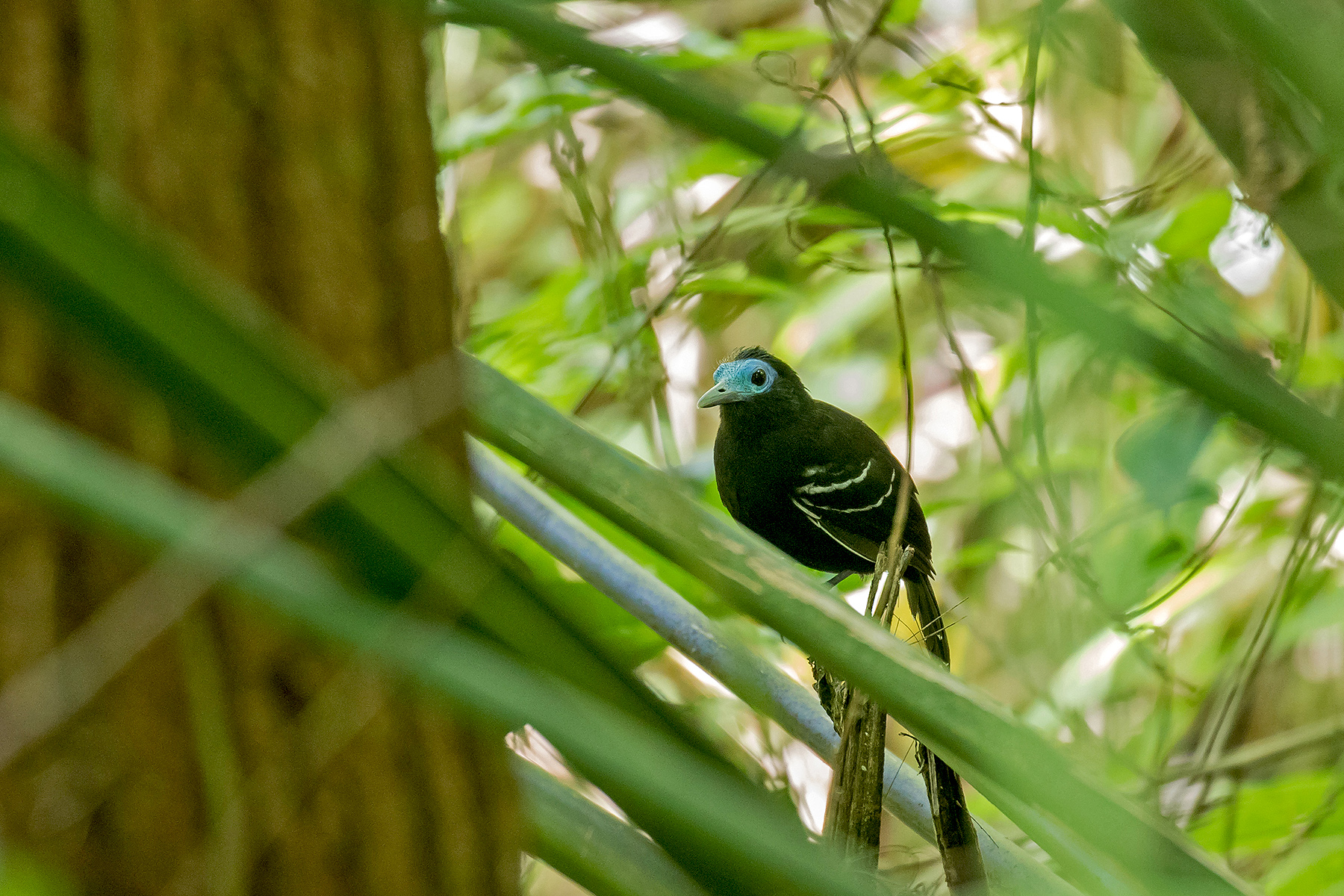
Bare-crowned Antbird (image by Pete Morris)
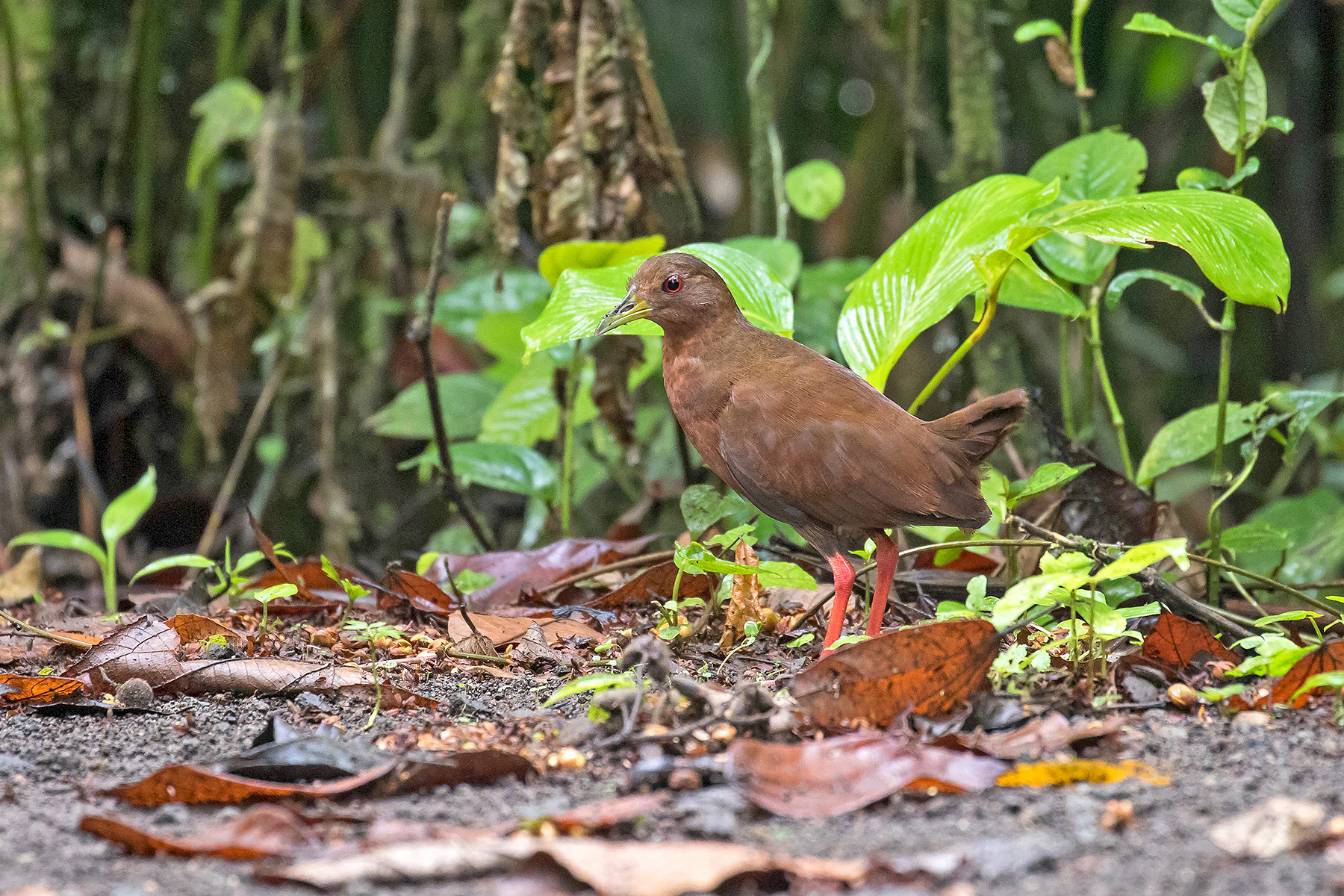
Uniform Crake (image by Pete Morris)
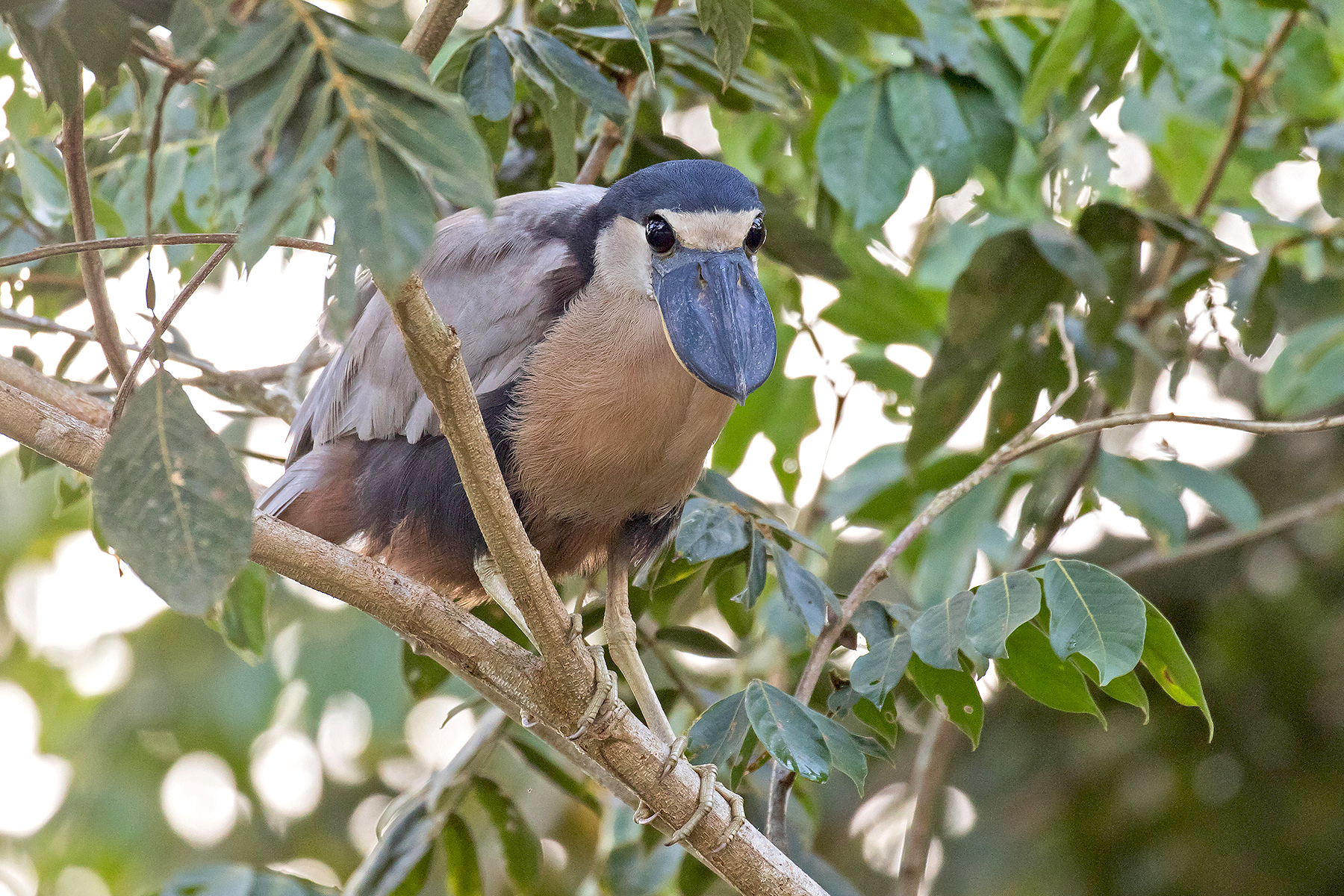
Boat-billed Heron (image by Pete Morris)
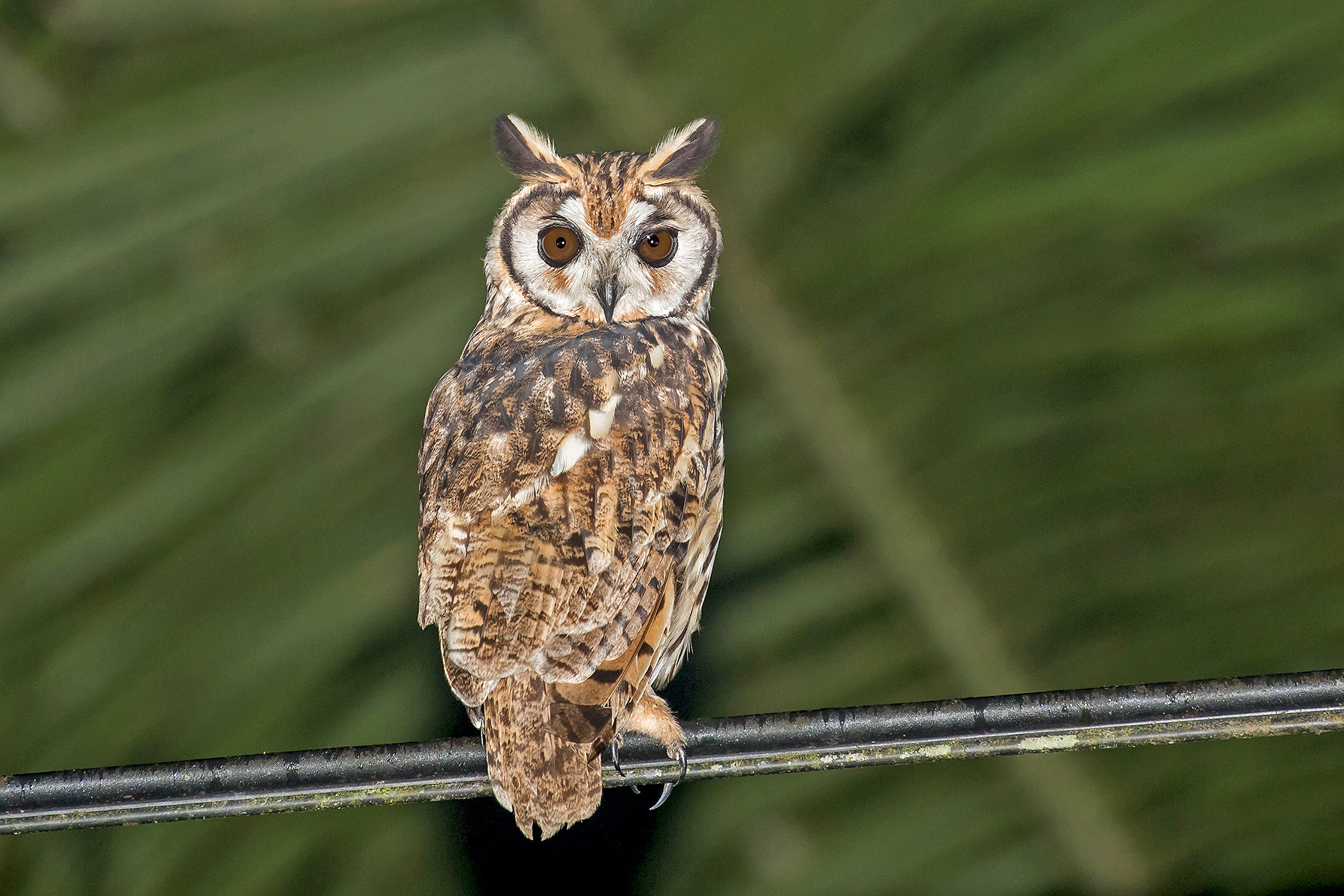
Striped Owl (image by Pete Morris)
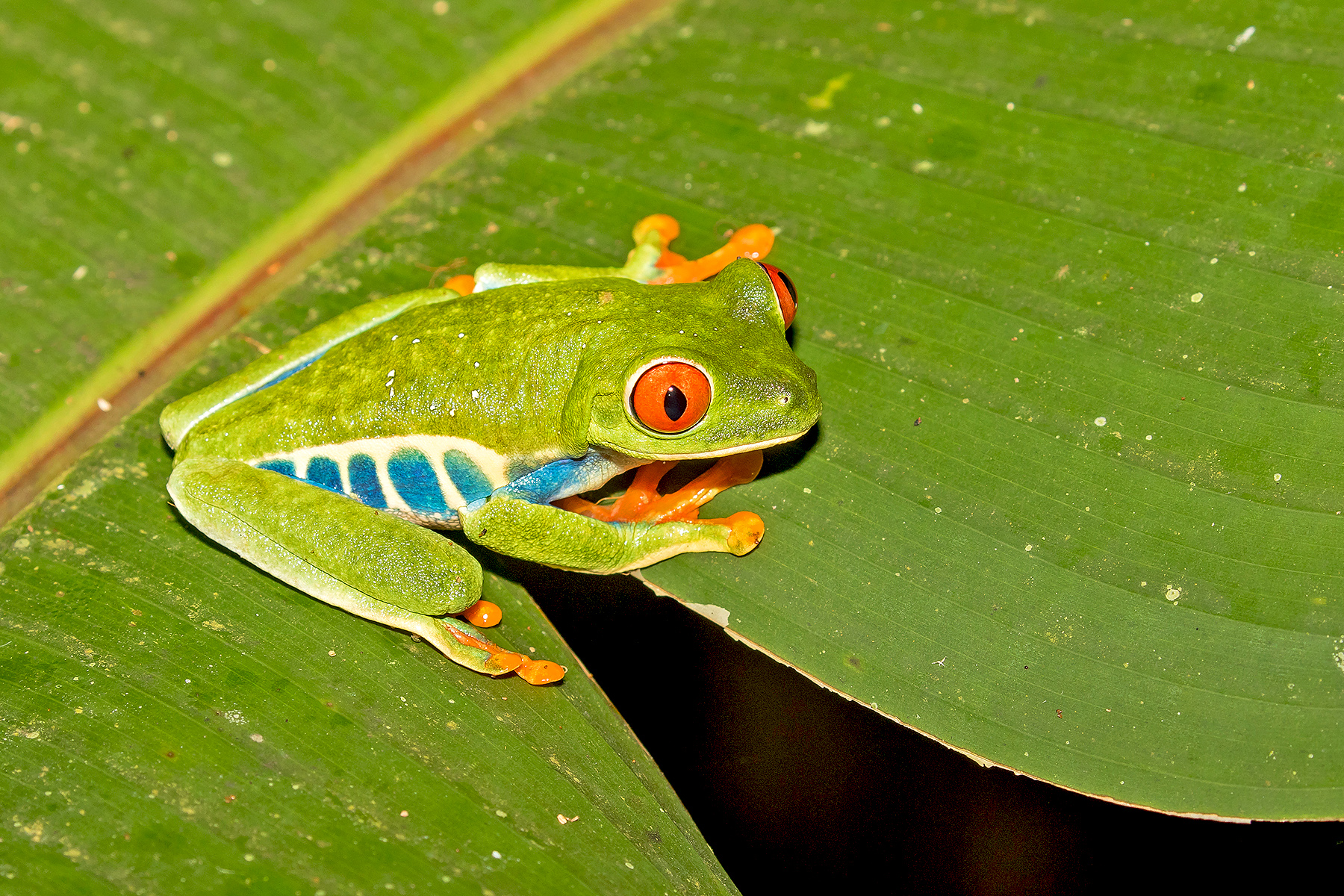
Red-eyed Tree Frog (image by Pete Morris)
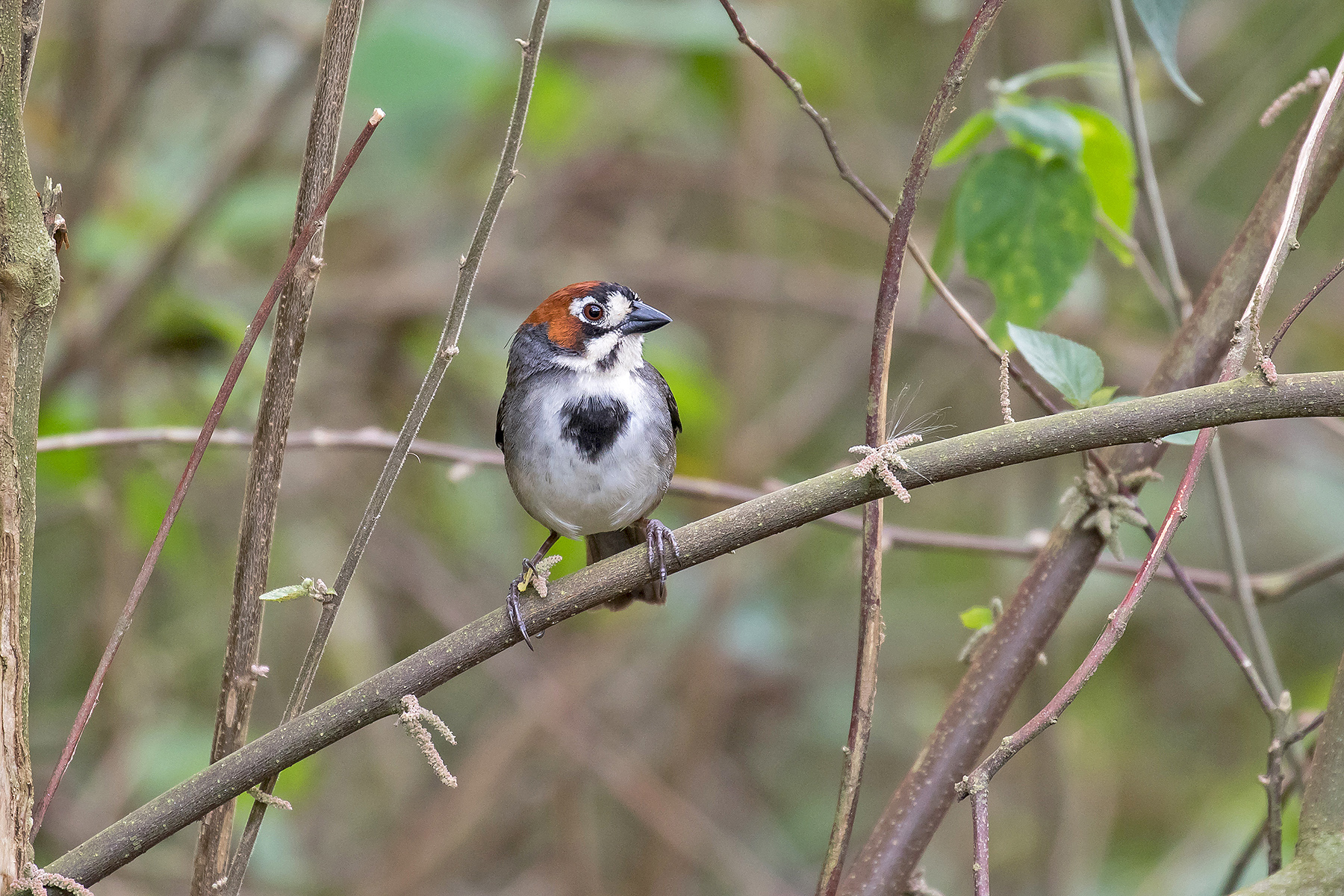
Cabanis's Ground Sparrow (image by Pete Morris)
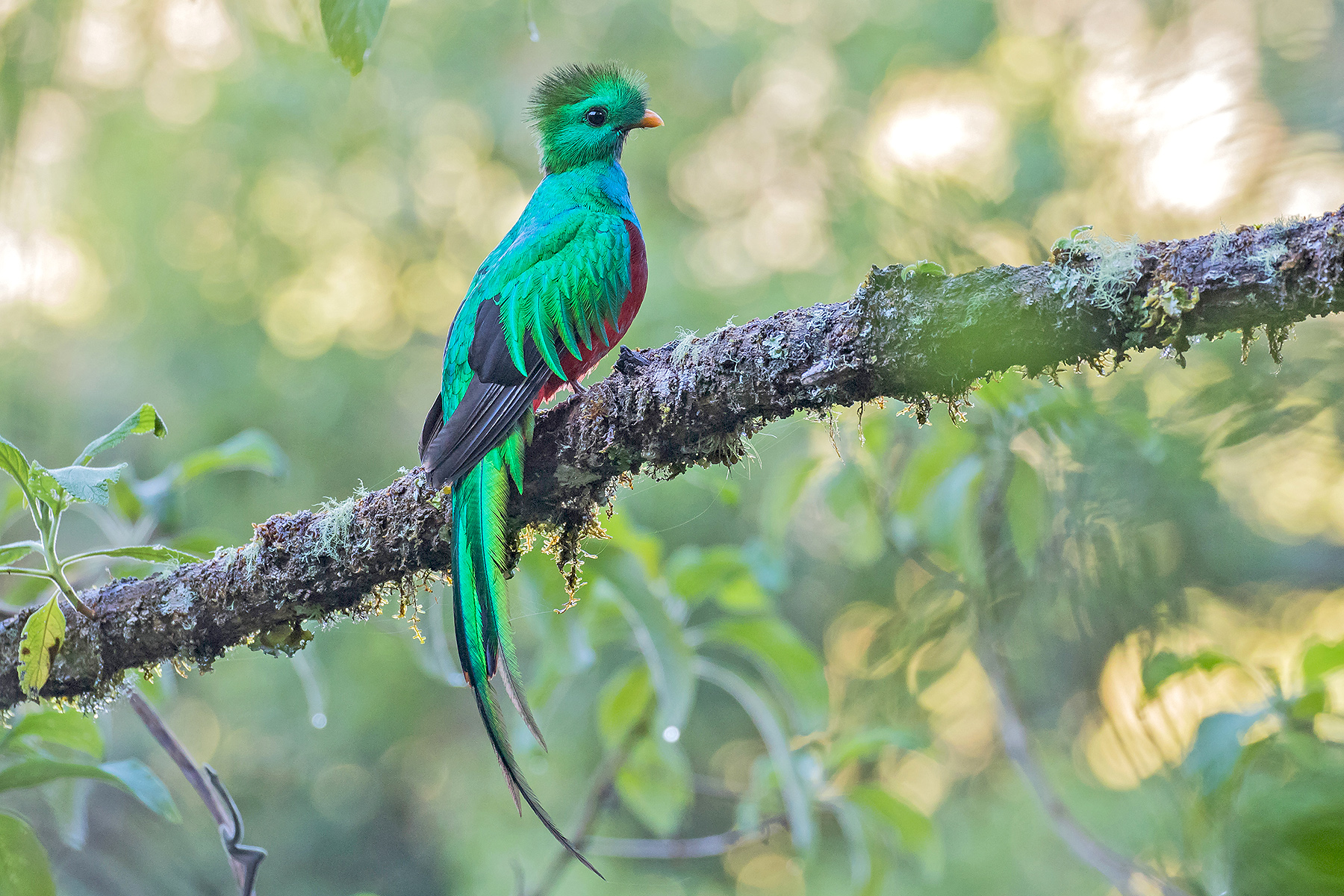
Turquiose Cotinga (image by Pete Morris)
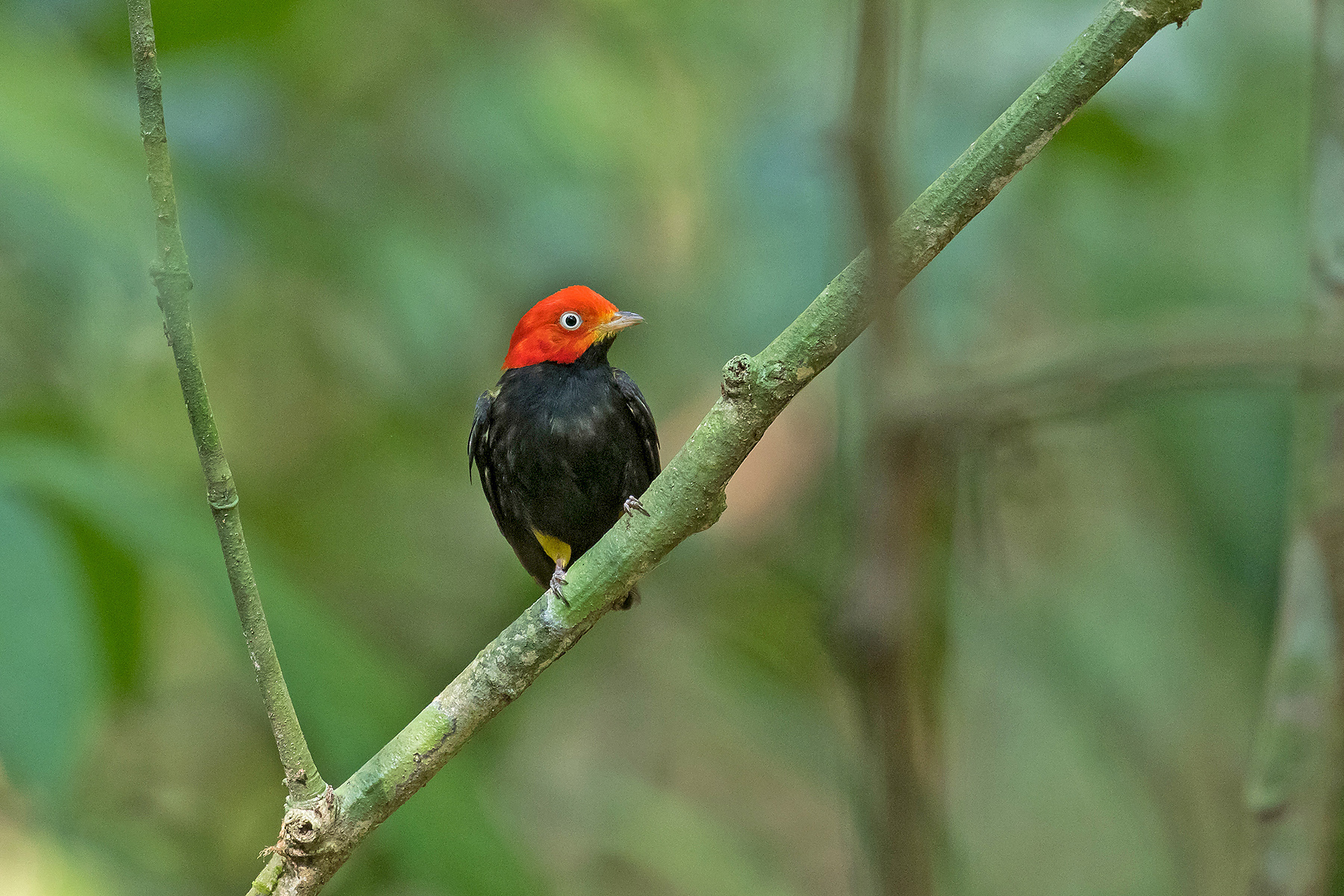
Bare-throated Tiger Heron (image by Pete Morris)
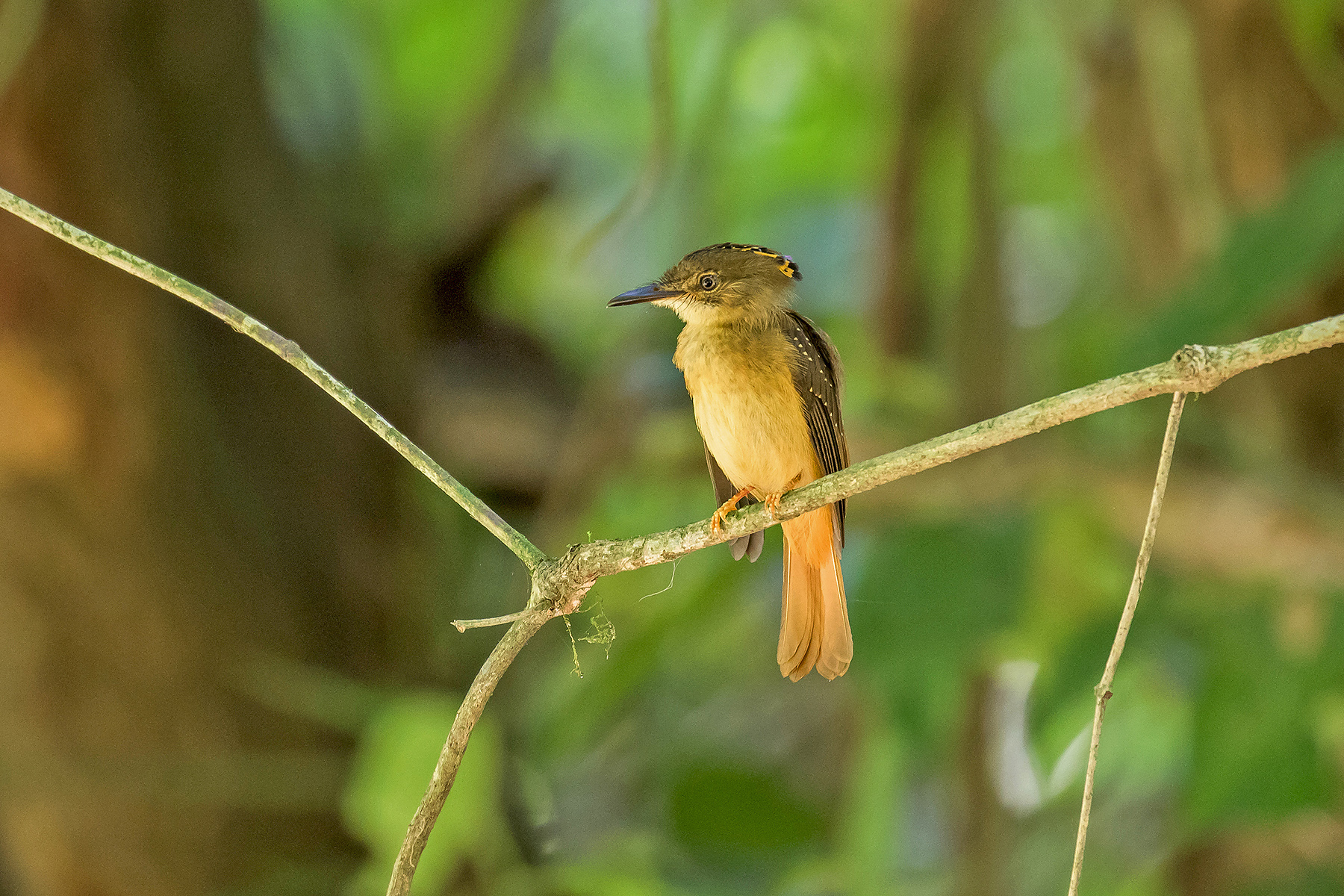
Great Curassows (image by Pete Morris)
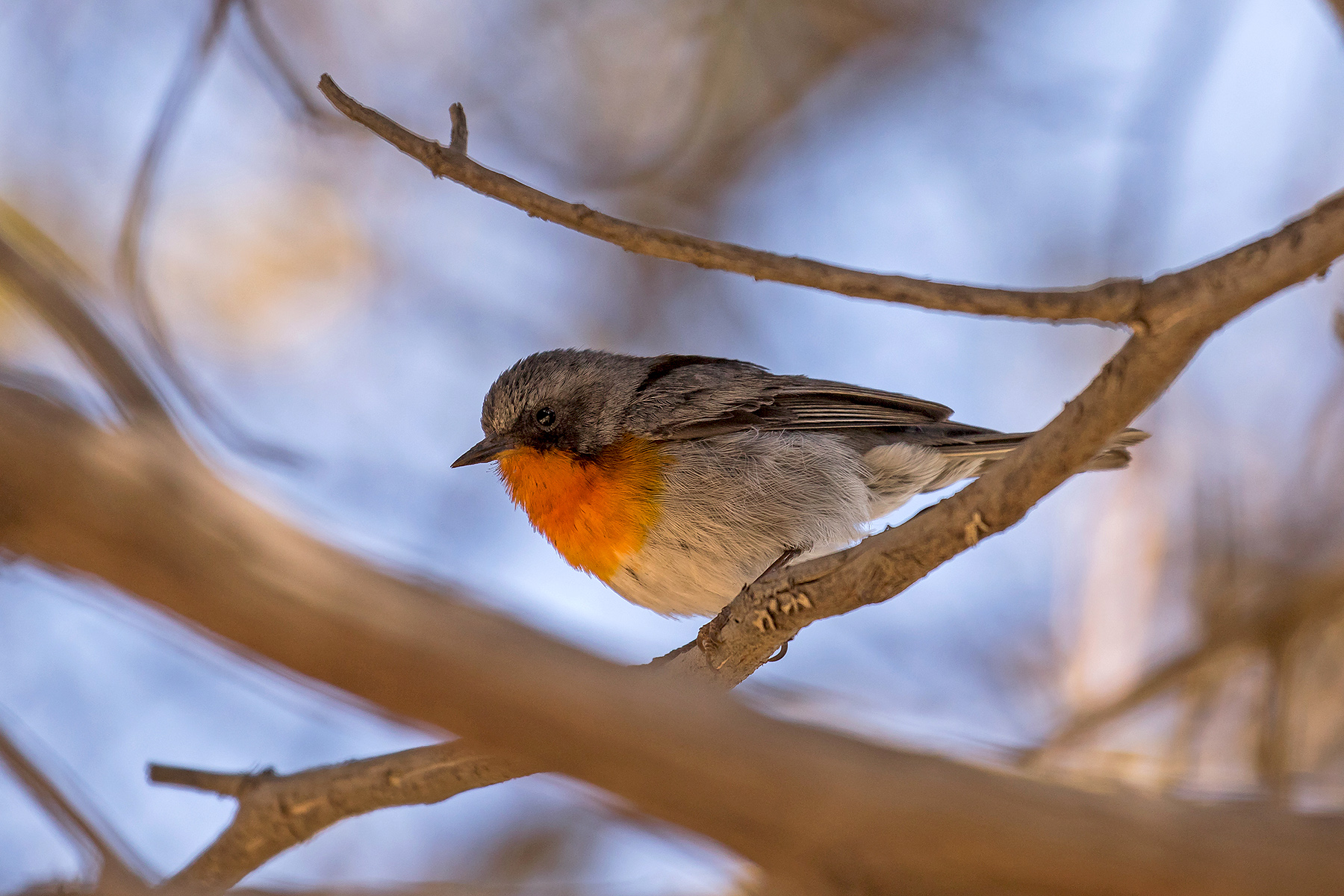
Cabanis's Wren (image by Pete Morris)
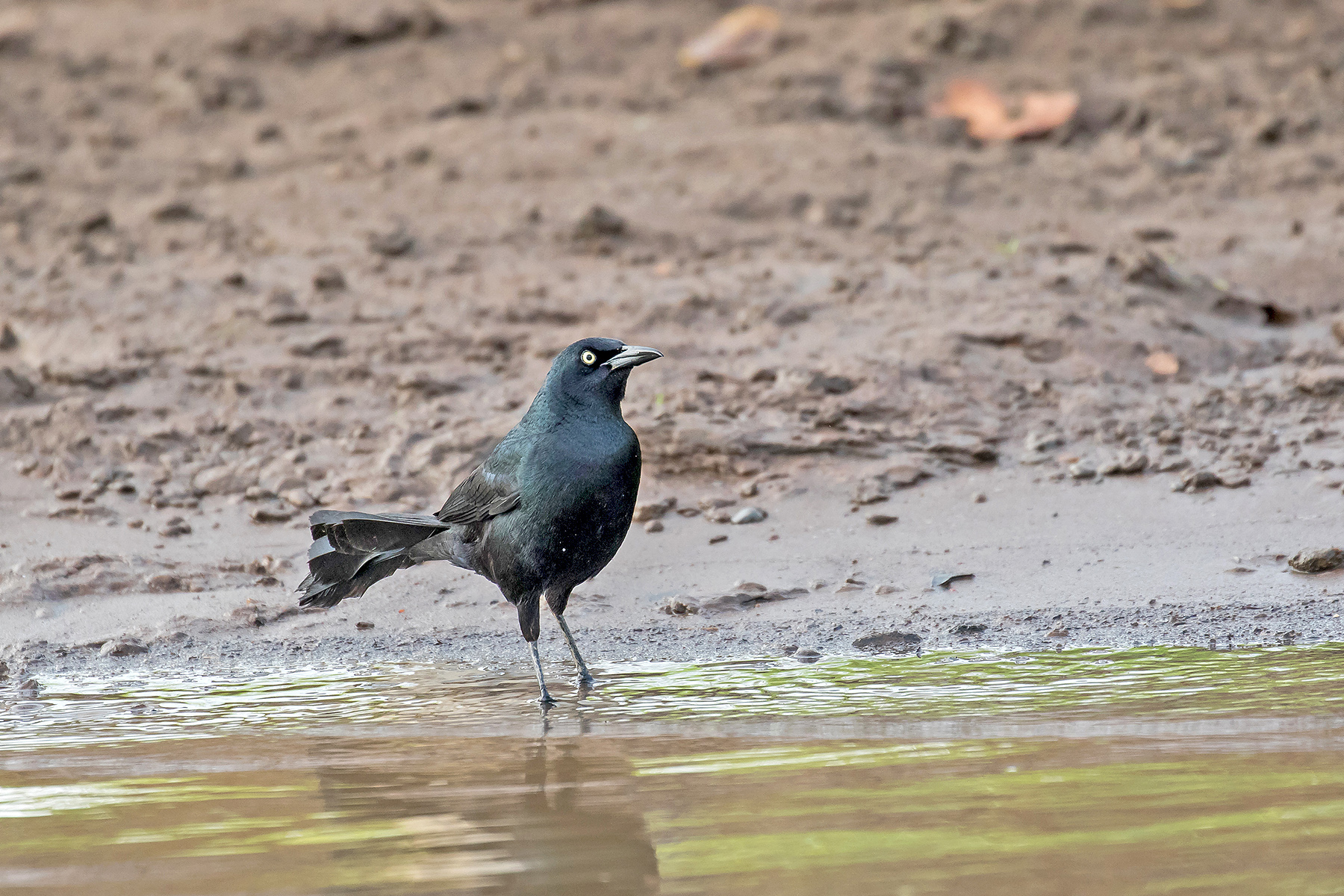
Nicaraguan Grackle (image by Pete Morris)
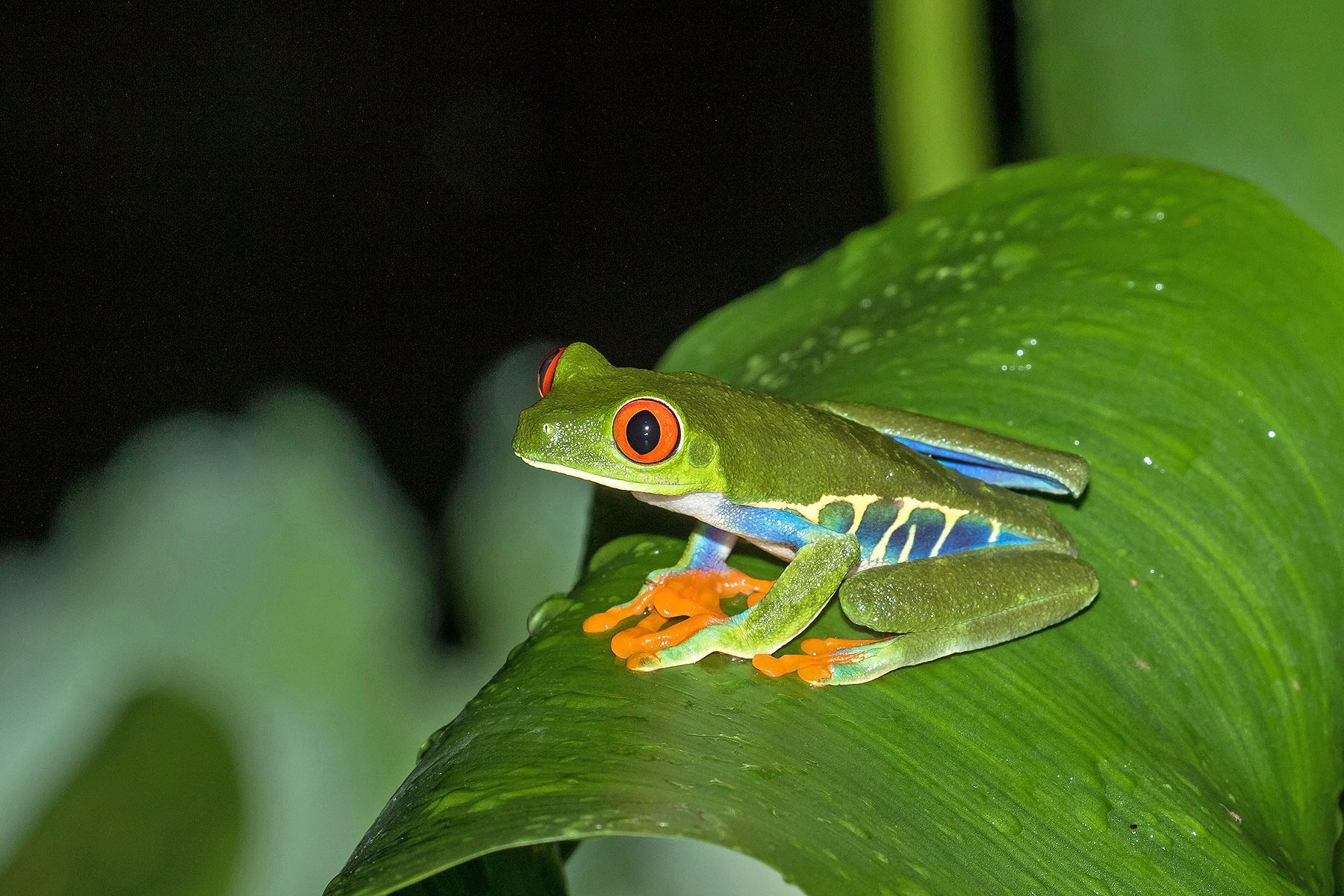
Three-wattled Bellbird (image by Pete Morris)
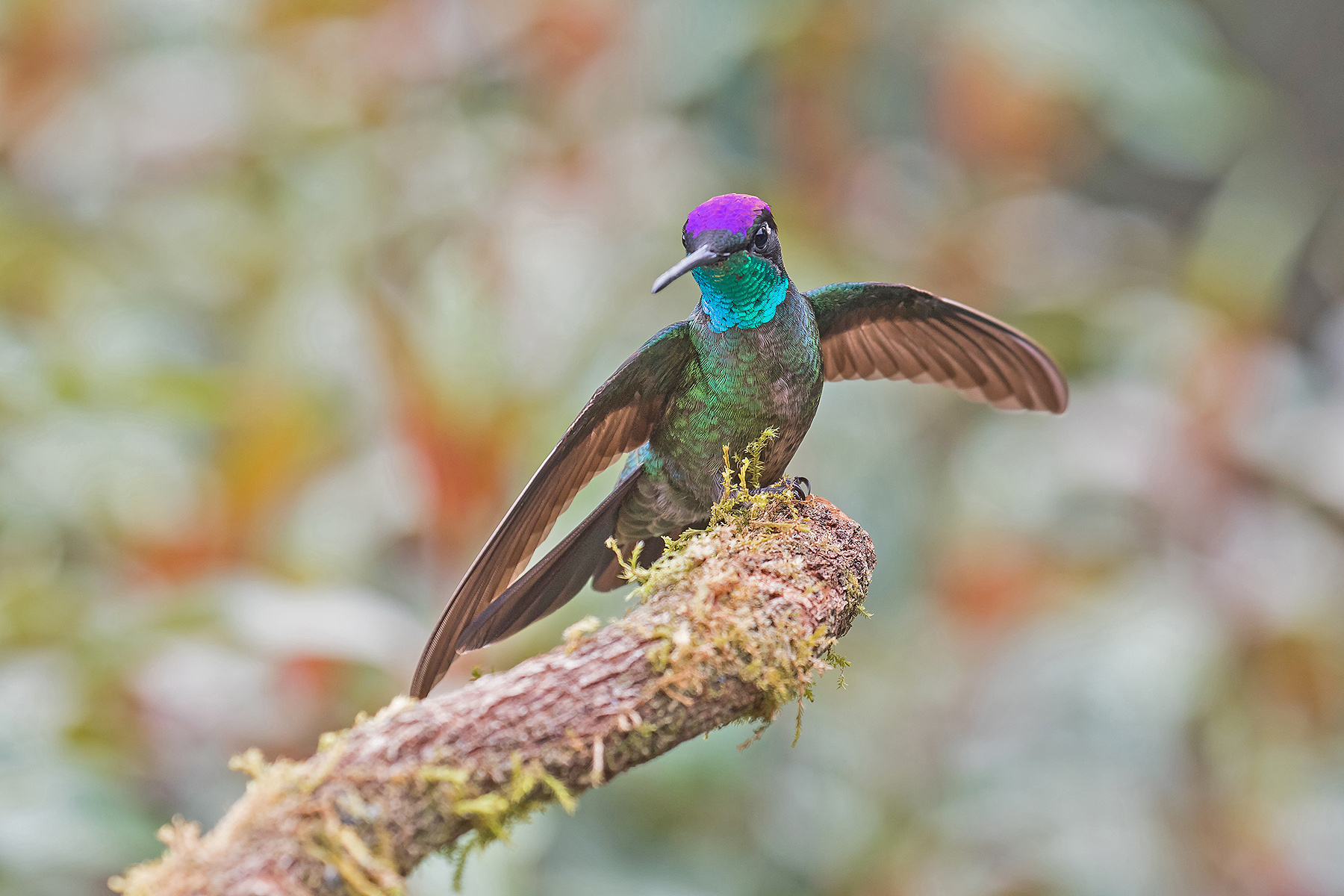
Crested Guan (image by Pete Morris)
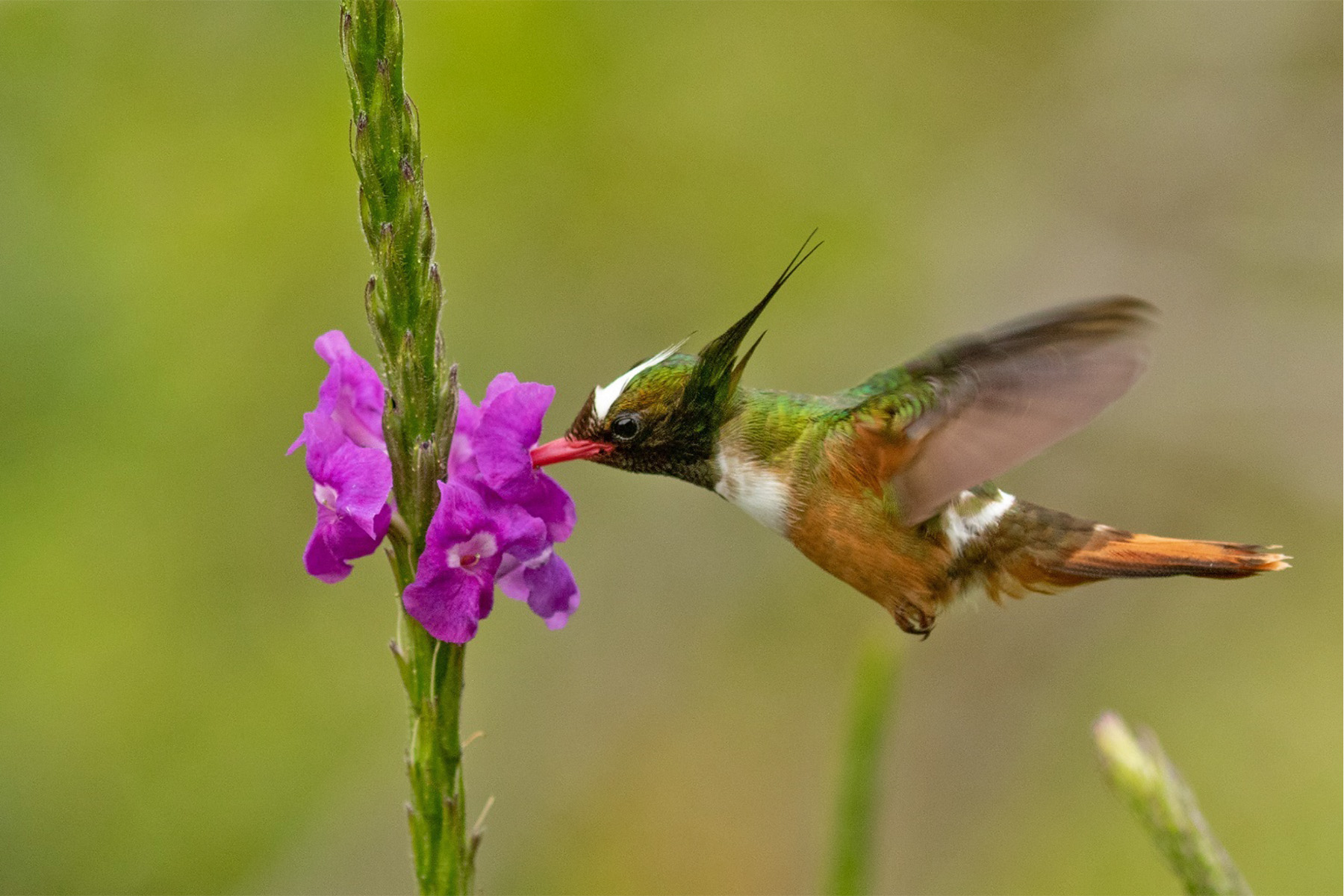
White-crested Coquette
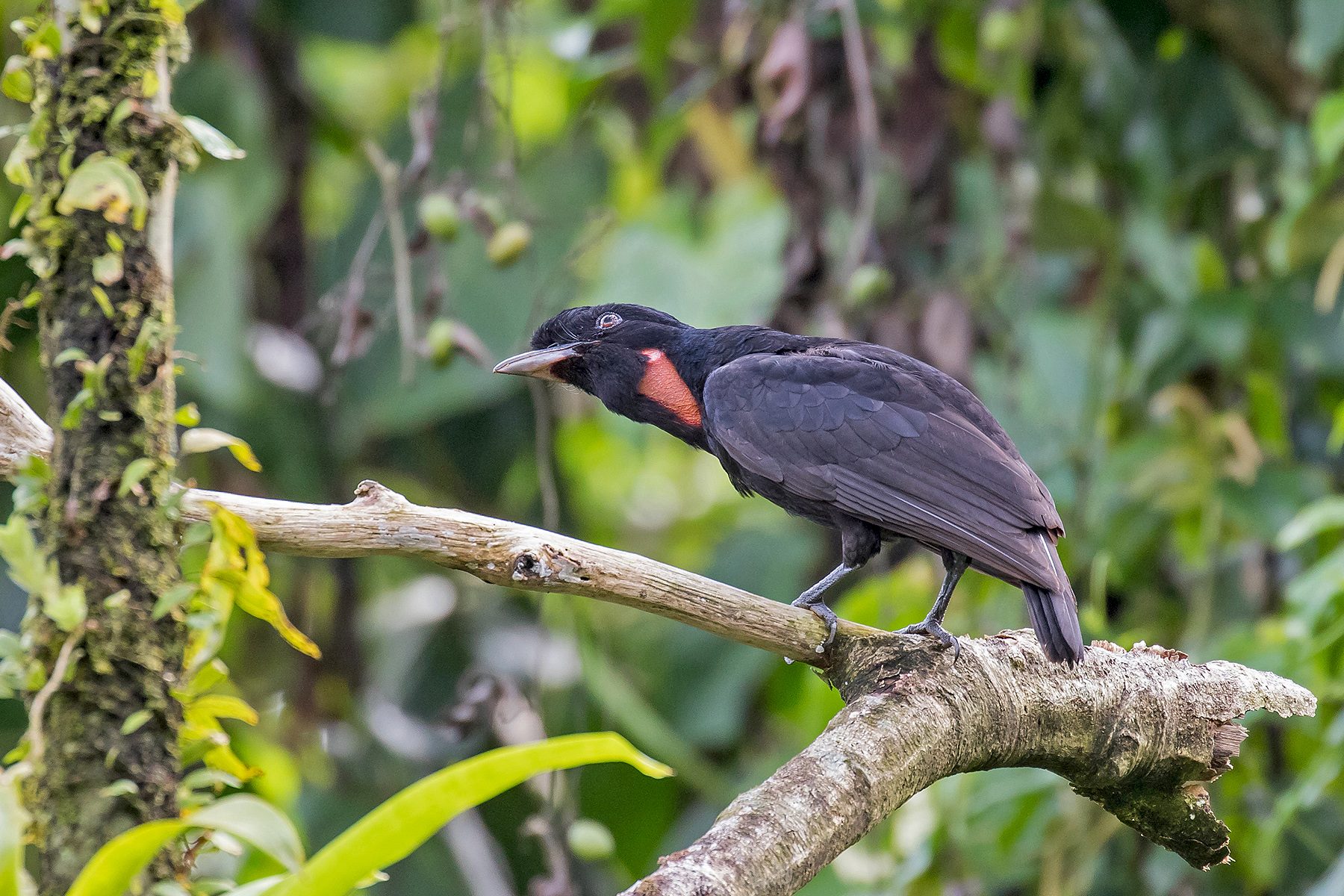
Bare-necked Umbrellabird (image by Pete Morris)
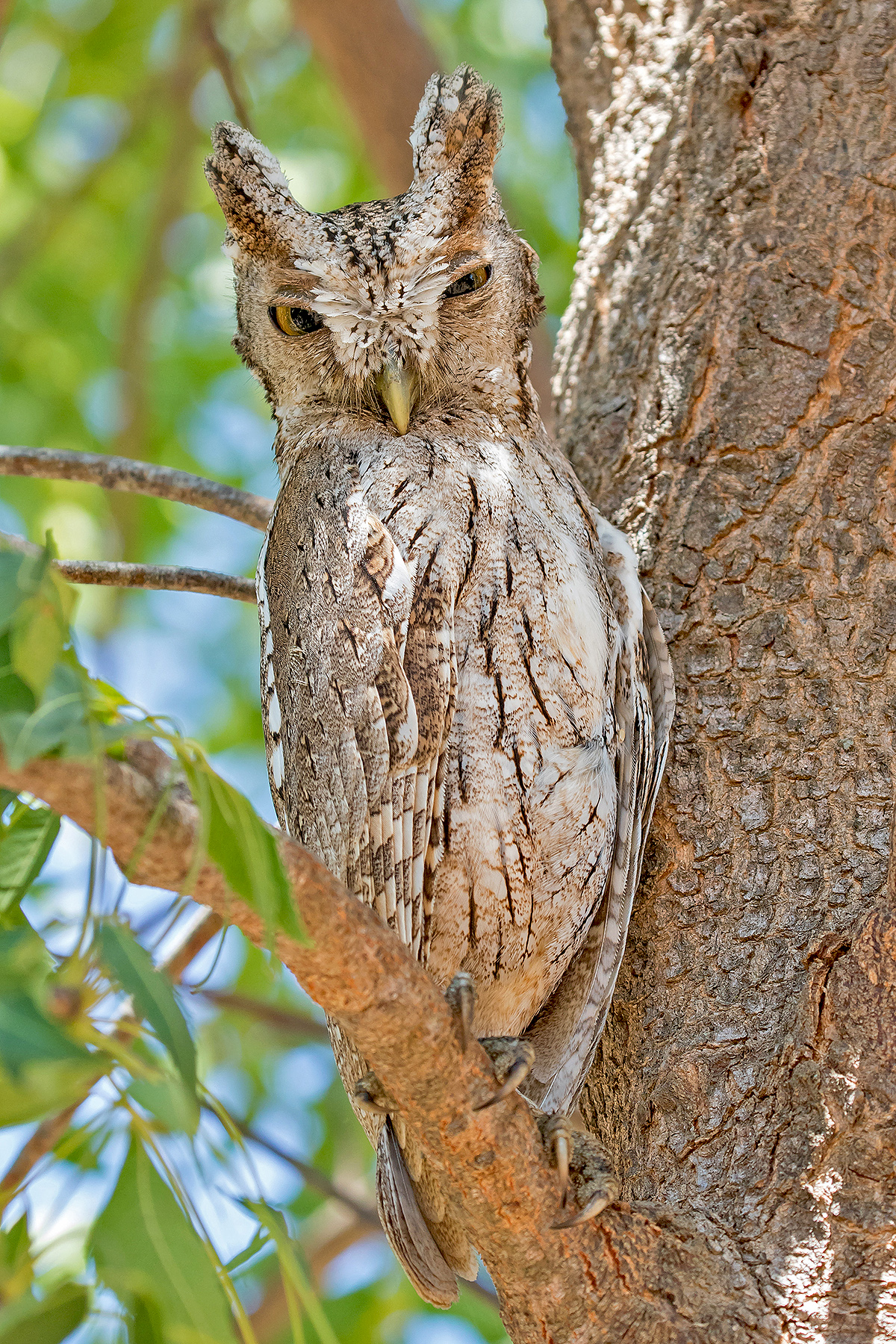
White-throated Crake (image by Pete Morris)
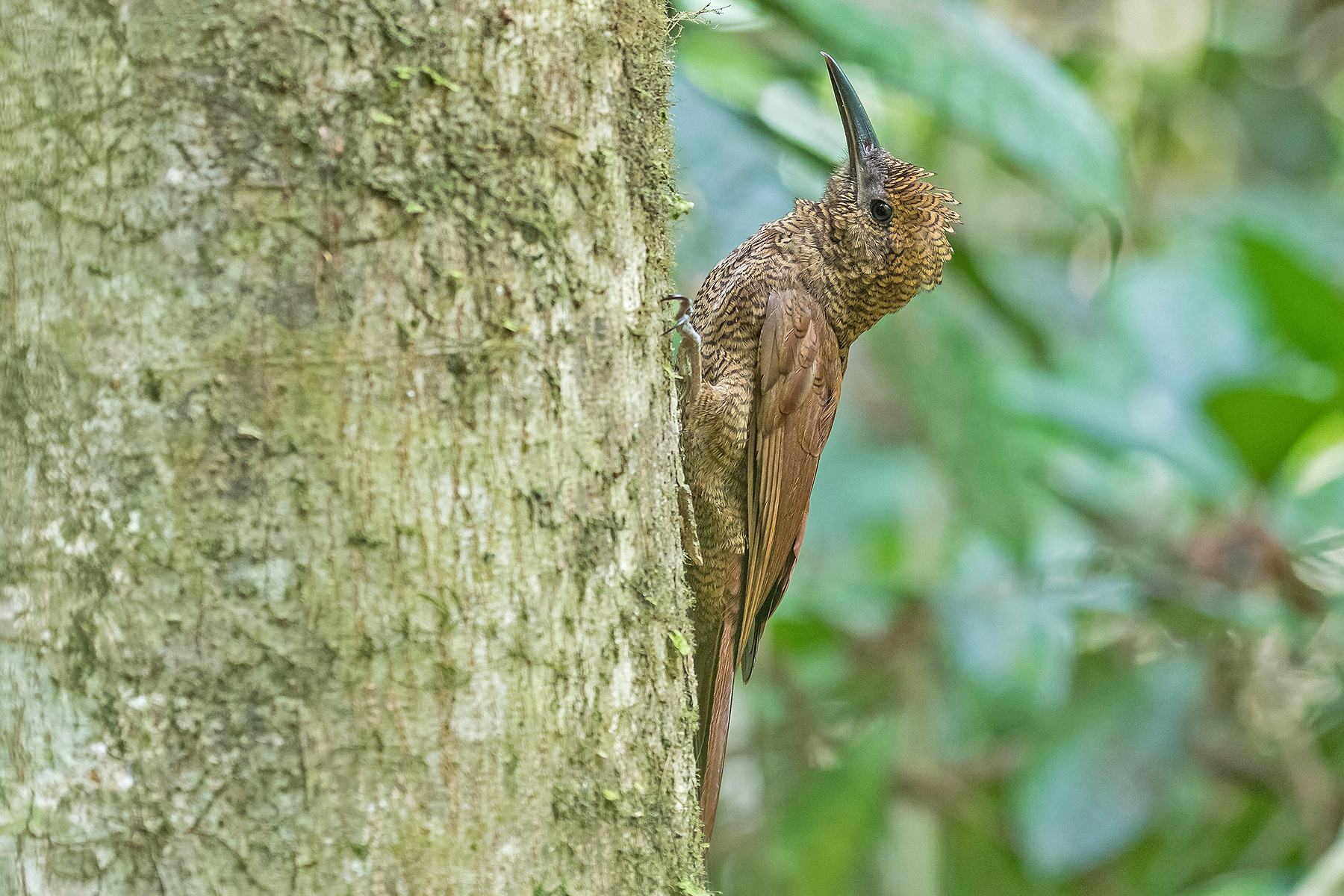
Northern Barred Woodcreeper (image by Pete Morris)
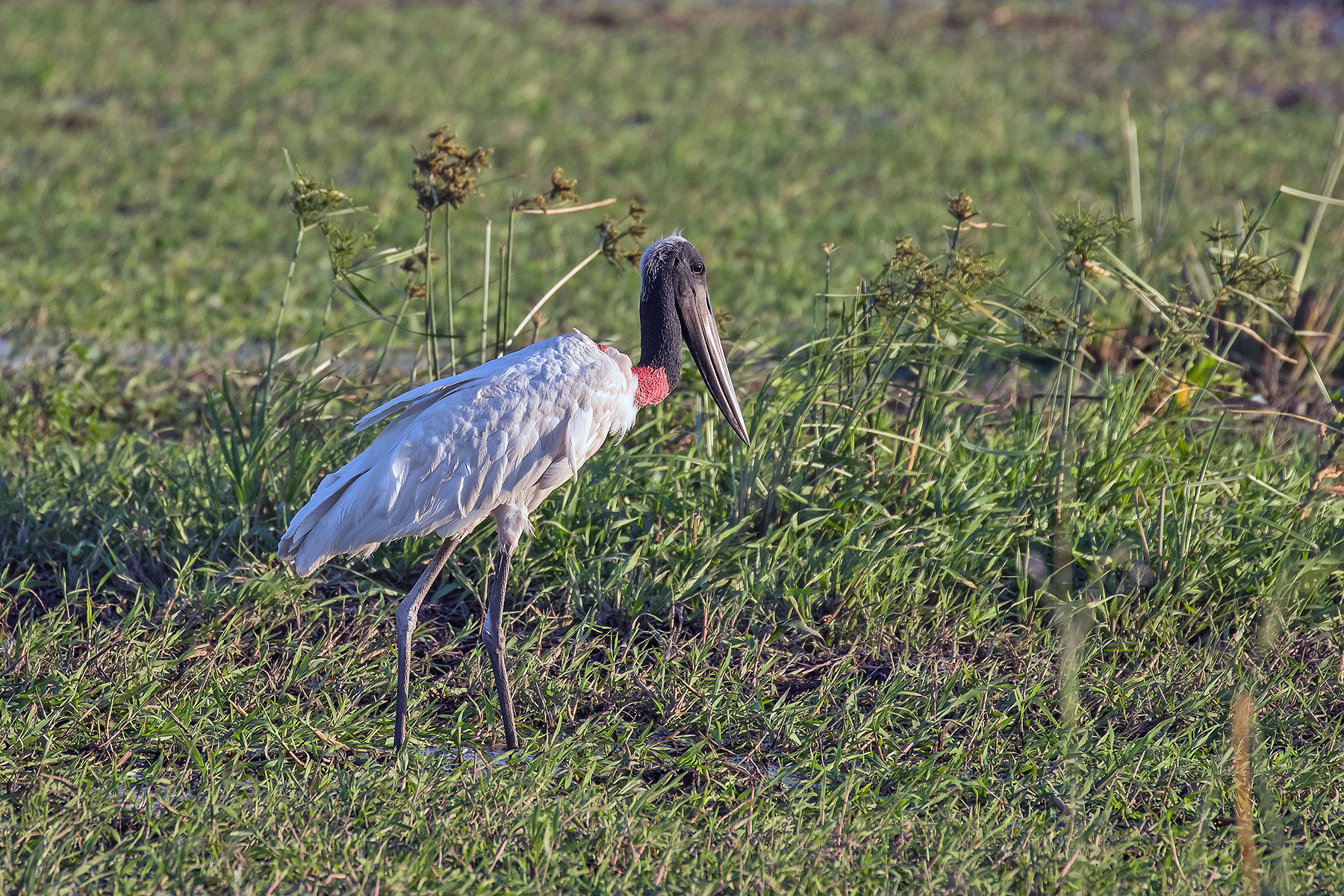
Jabiru (image by Pete Morris)
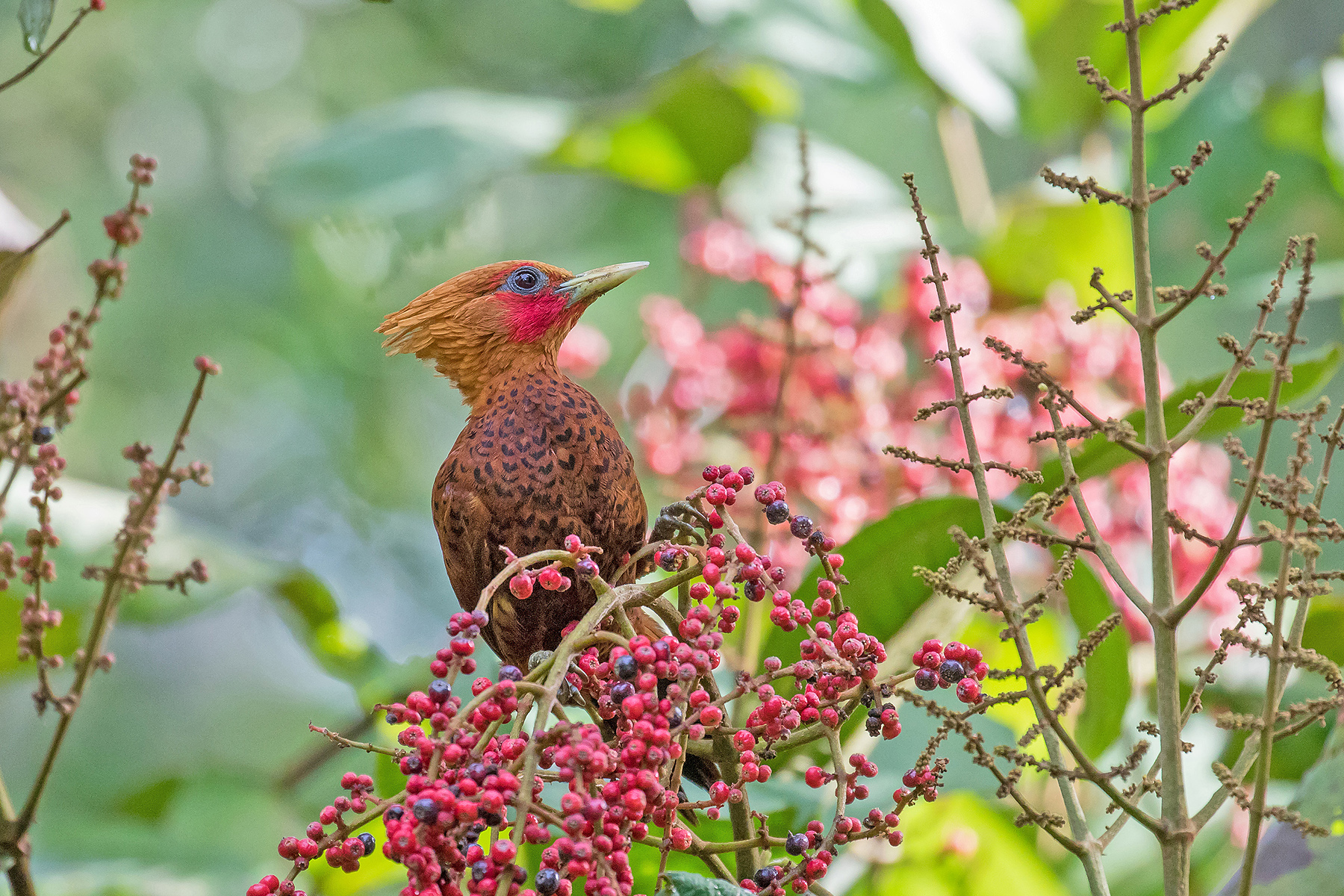
Chestnut-coloured Woodpecker (image by Pete Morris)
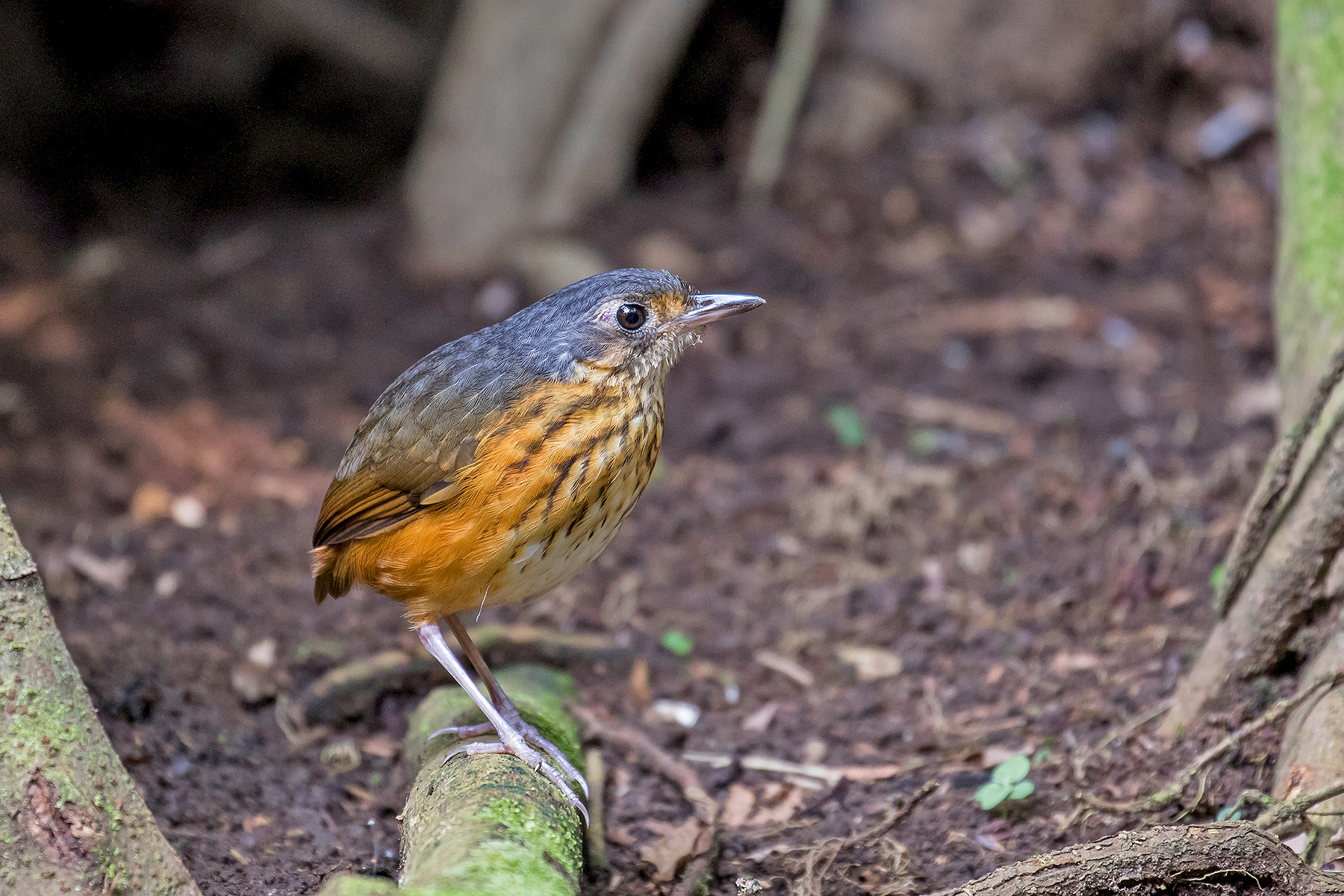
Thicket Antpitta (image by Pete Morris)
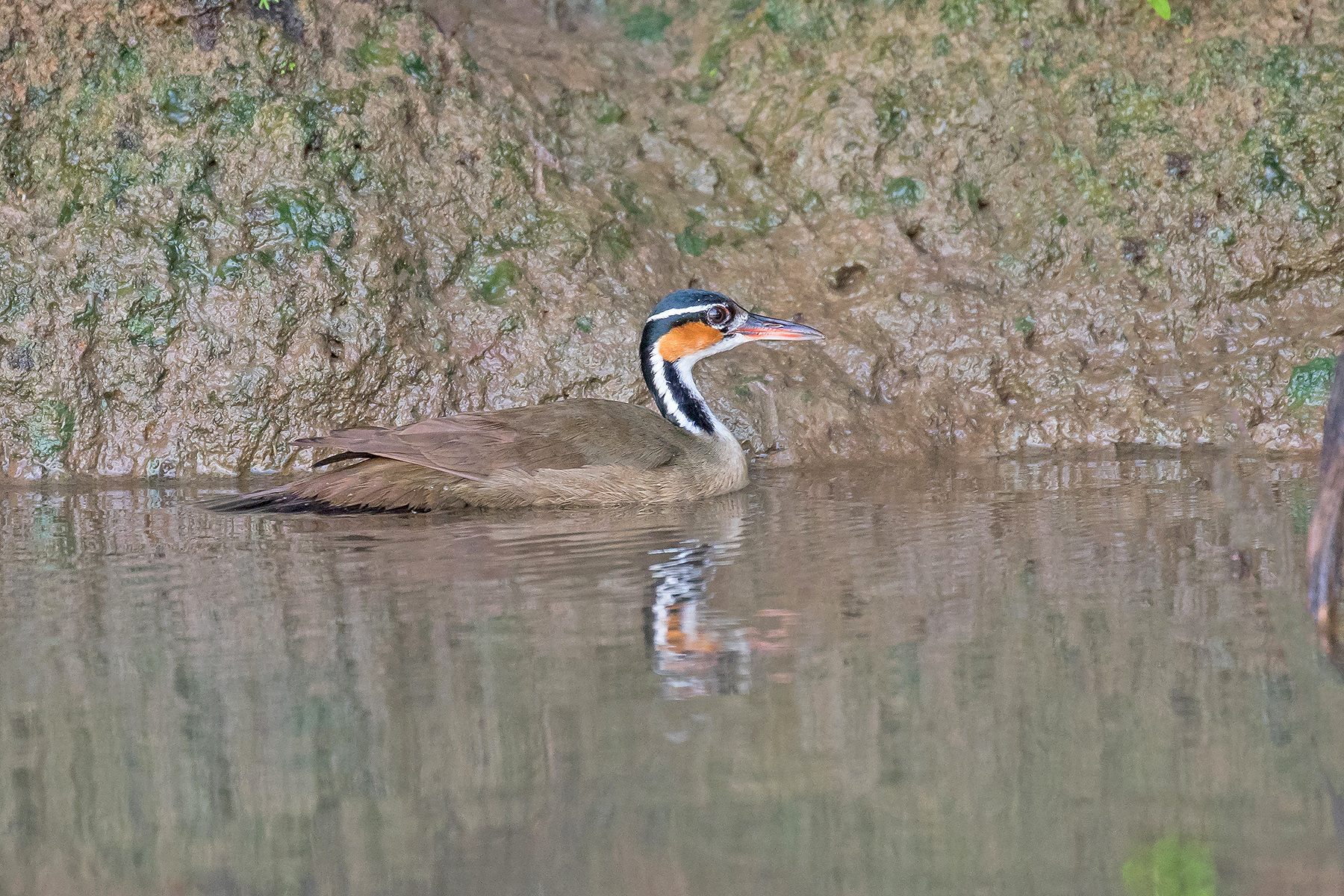
Sungrebe (image by Pete Morris)
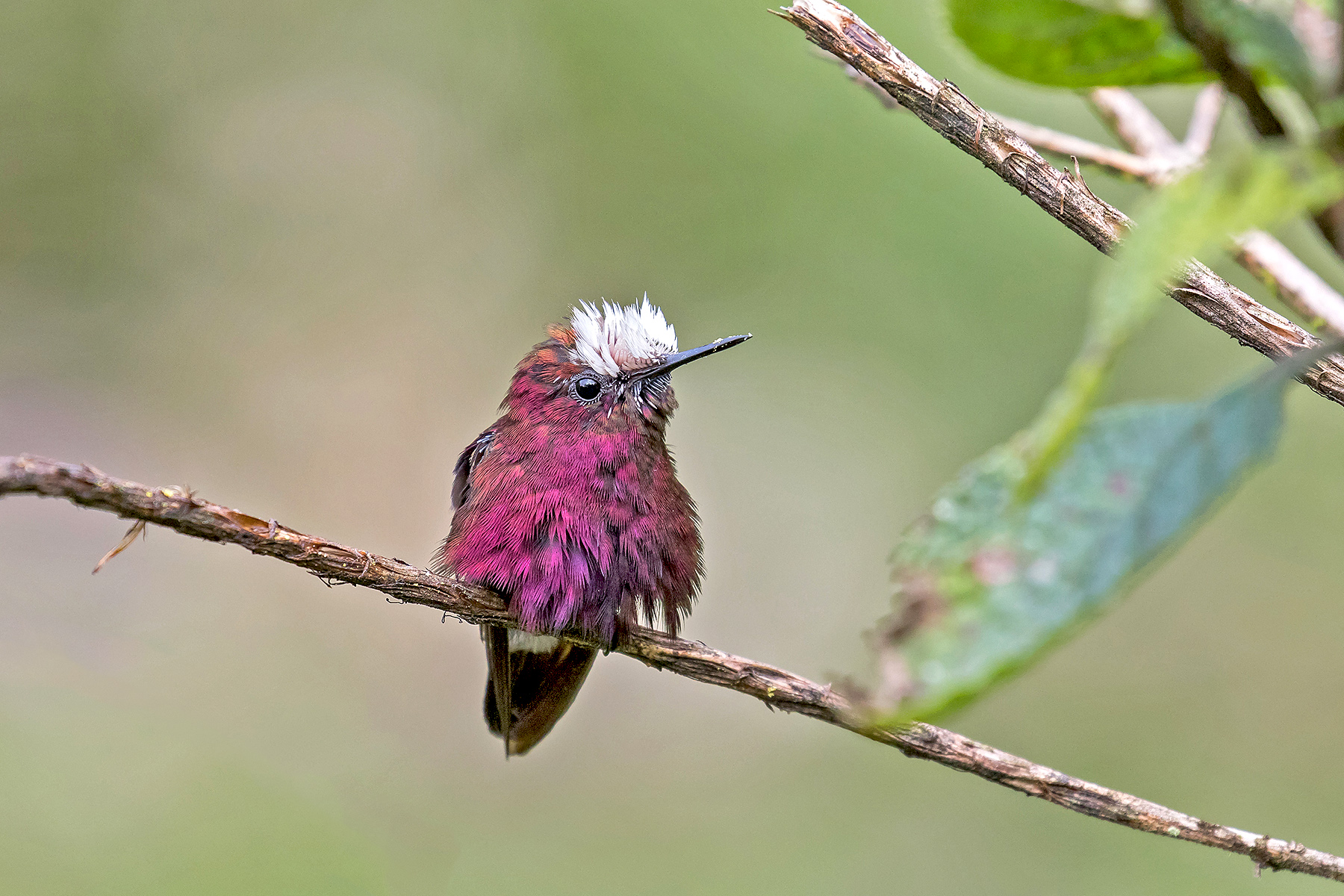
Sooty-faced Finch (image by Pete Morris)
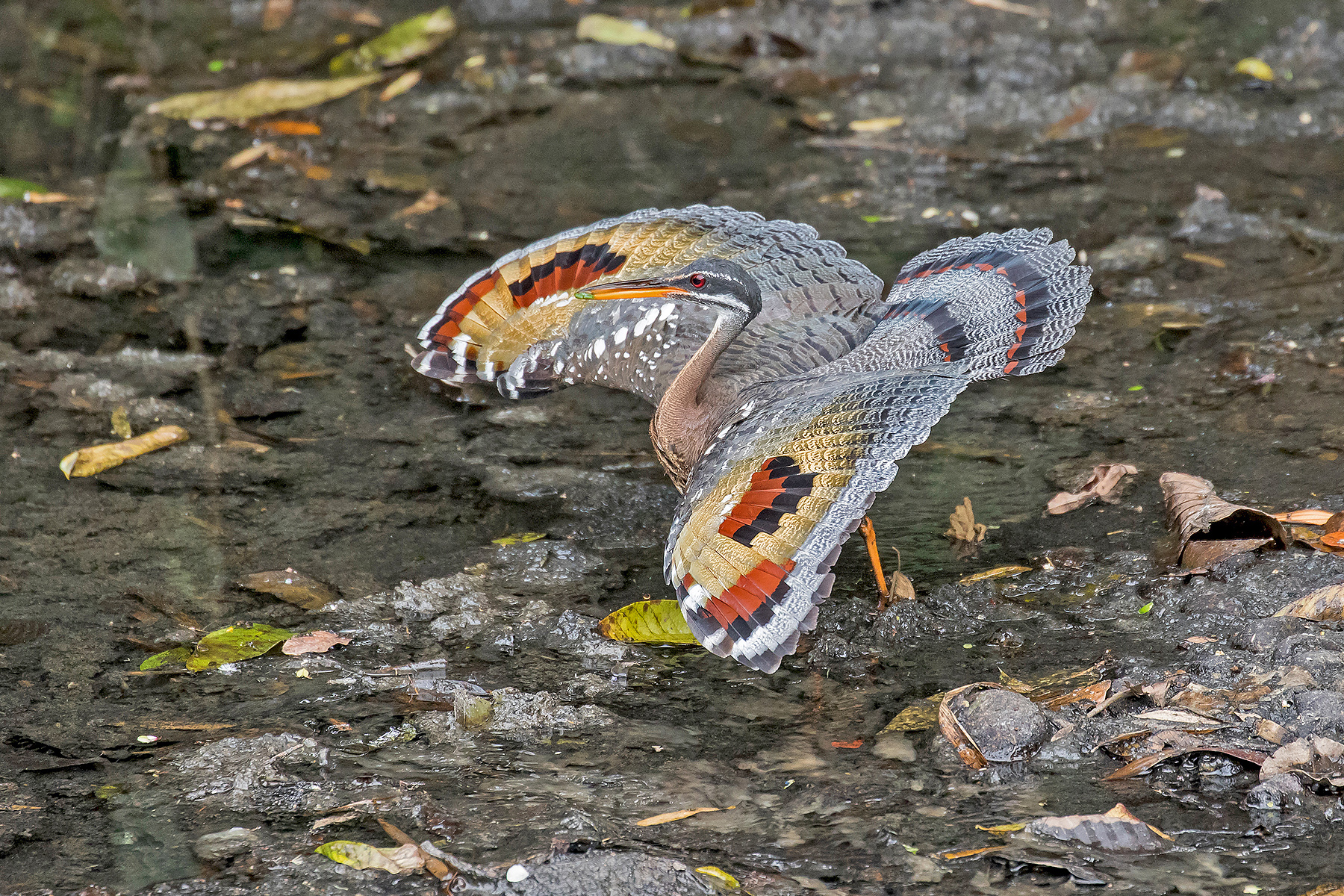
Sunbittern (image by Pete Morris)
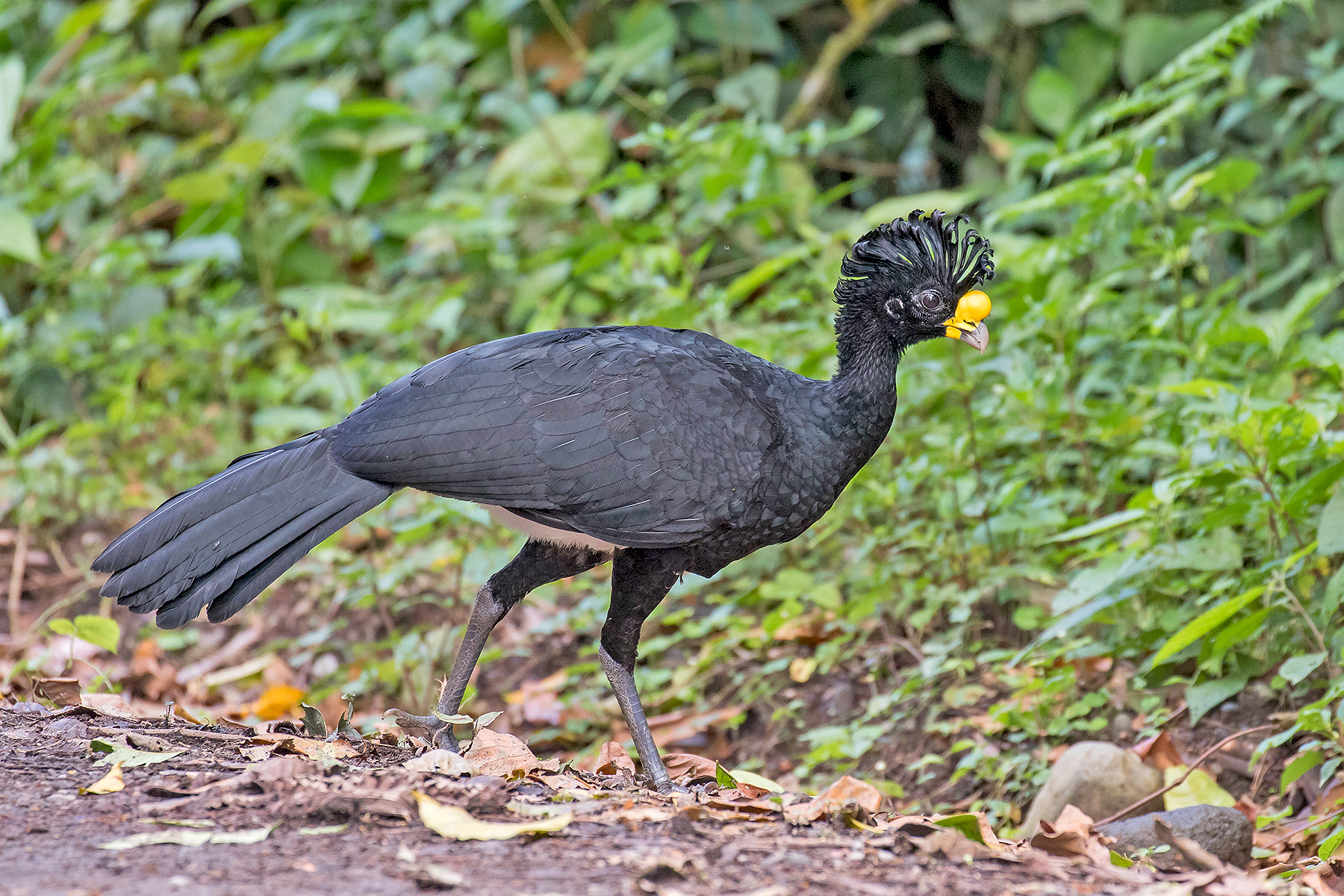
Great Curassow (image by Pete Morris)
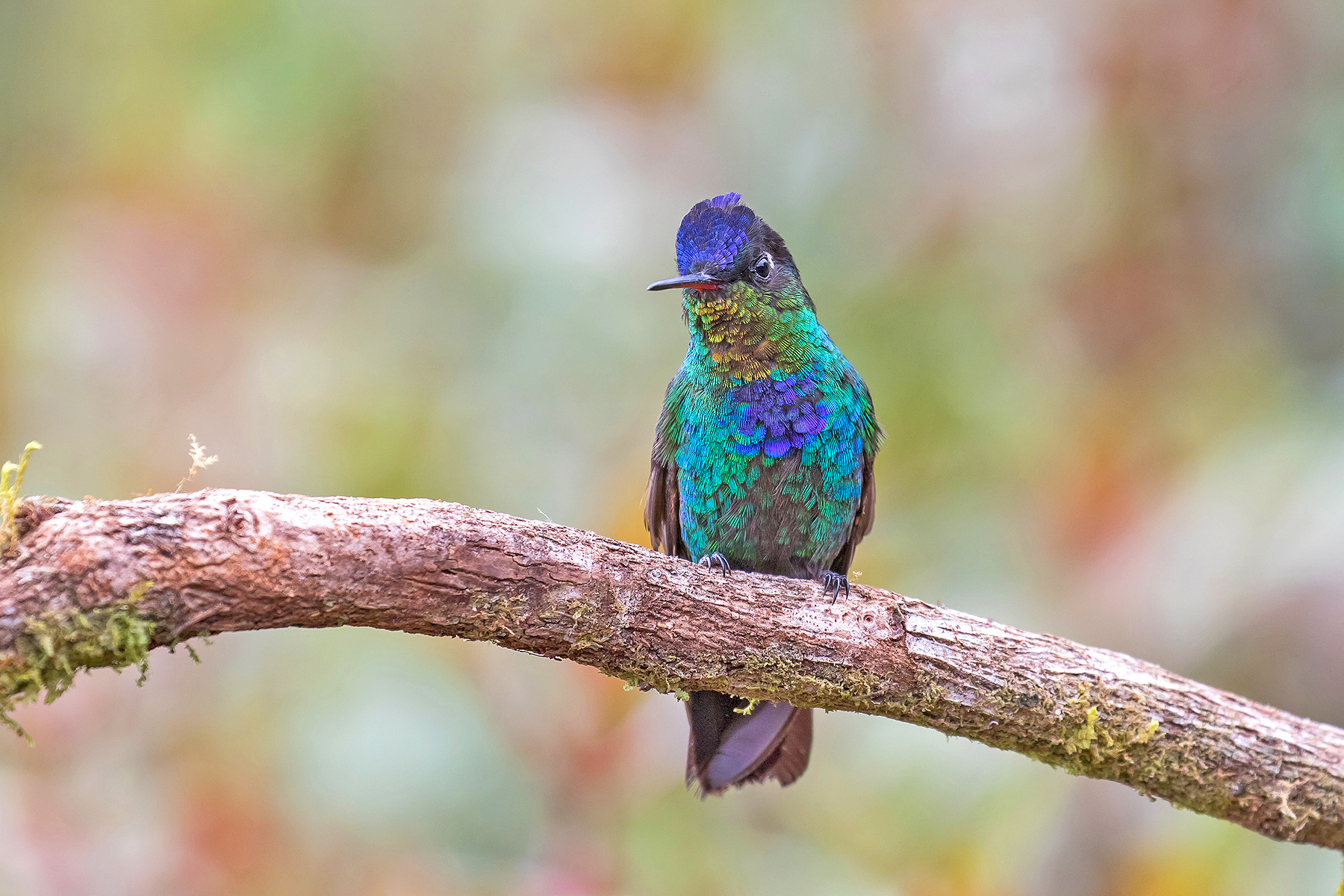
Fiery-throated Hummingbird (image by Pete Morris)
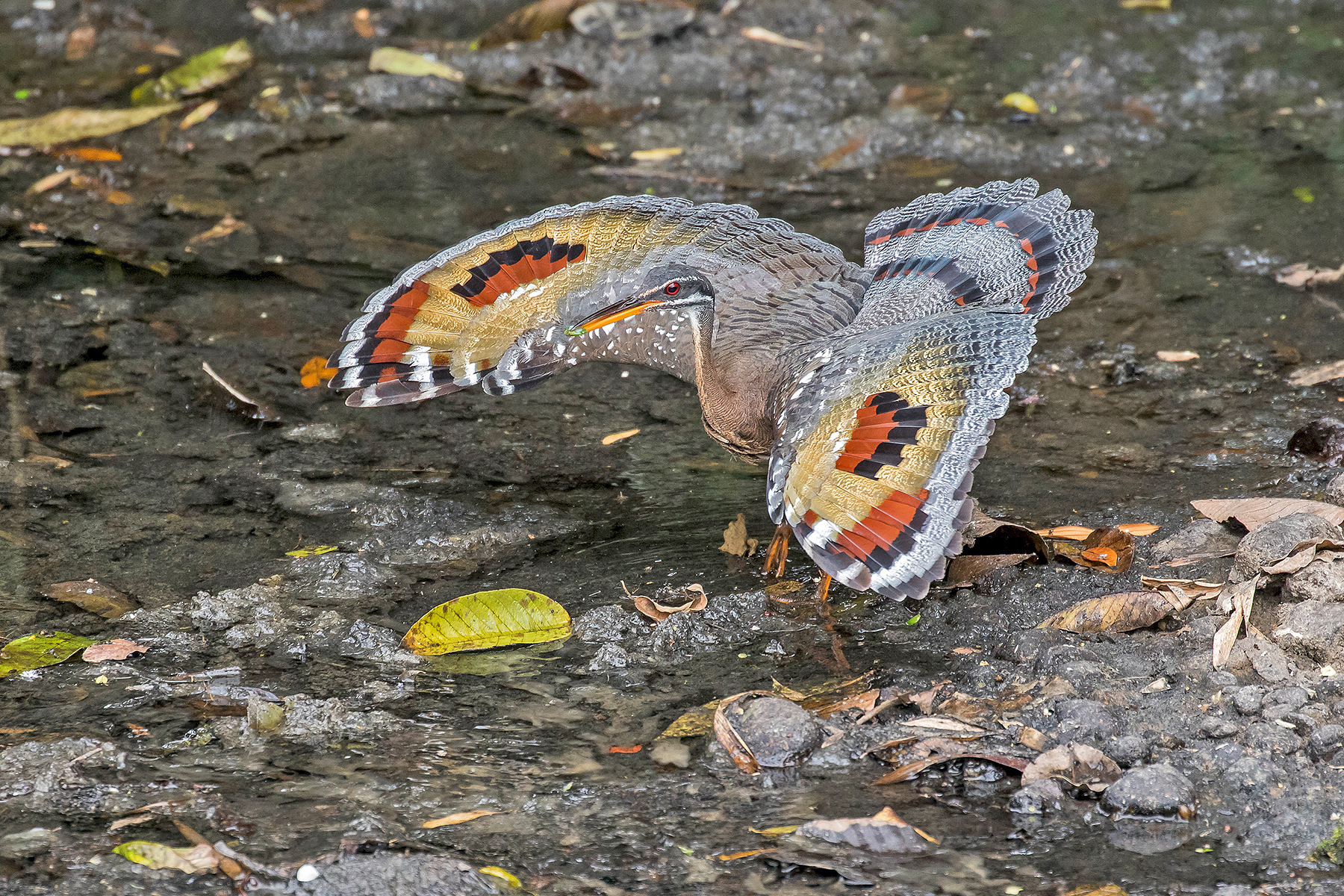
Spotted Wood Quail (image by Pete Morris)
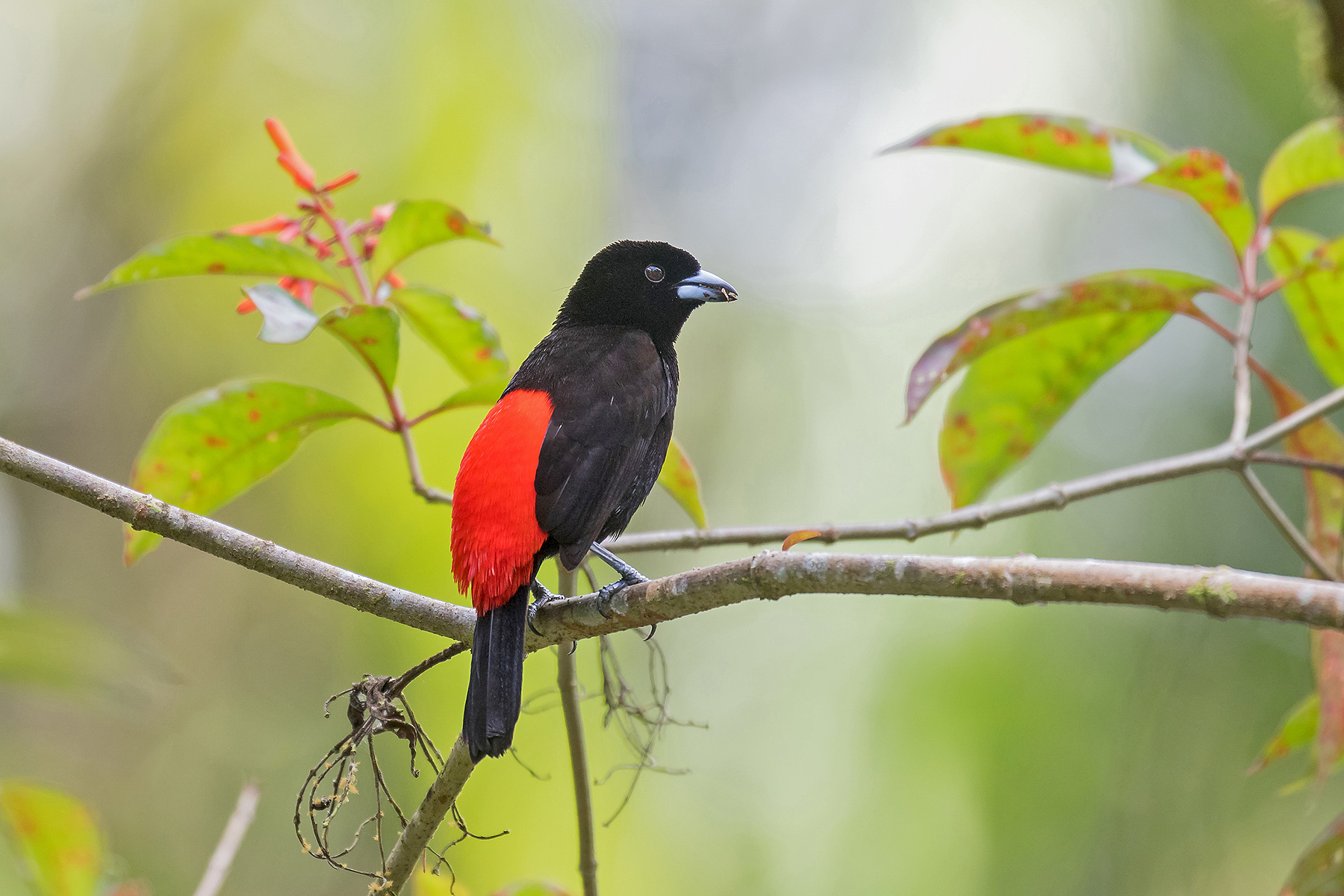
Passerini's Tanager (image by Pete Morris)
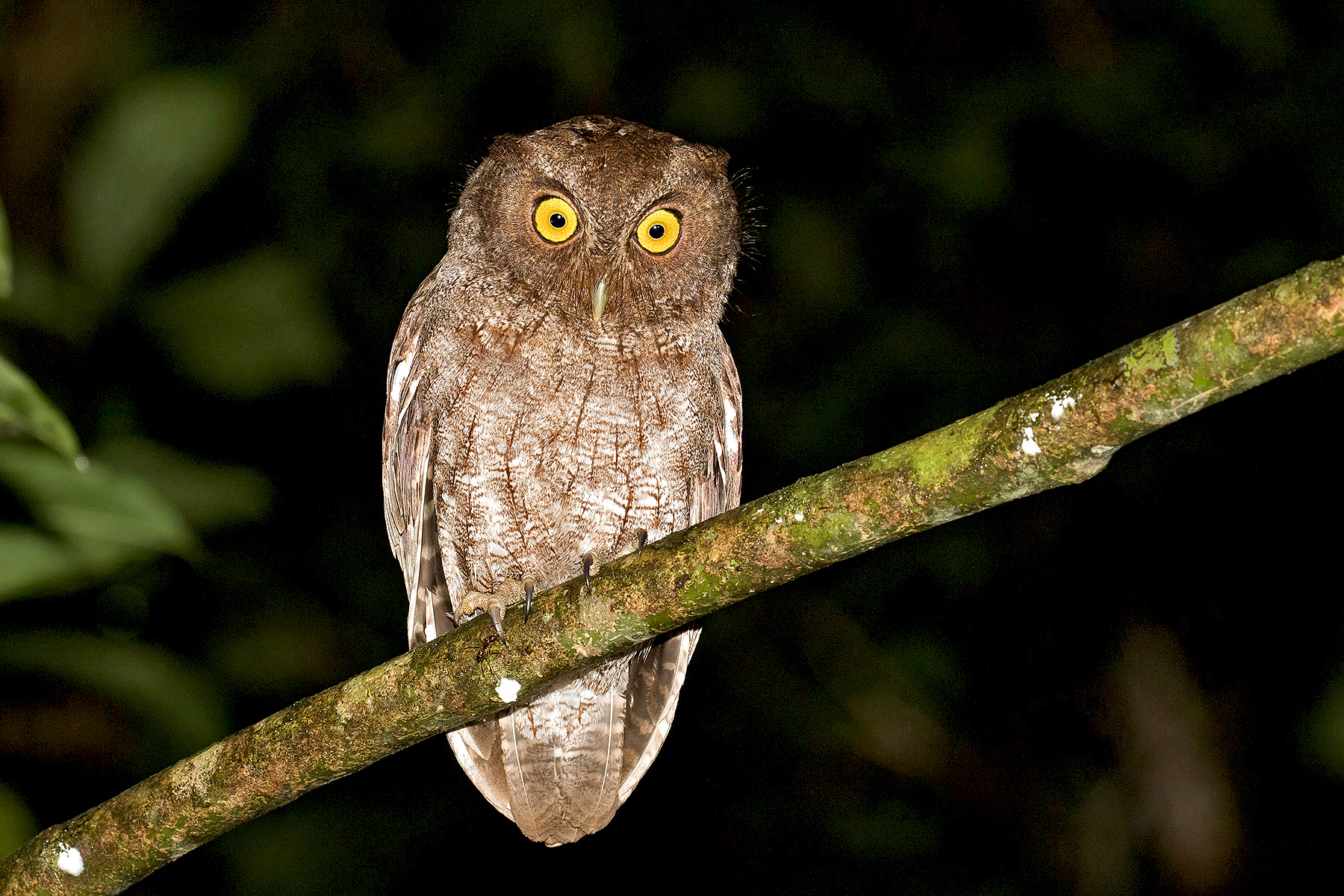
Vermiculated Screech Owl (image by Pete Morris)
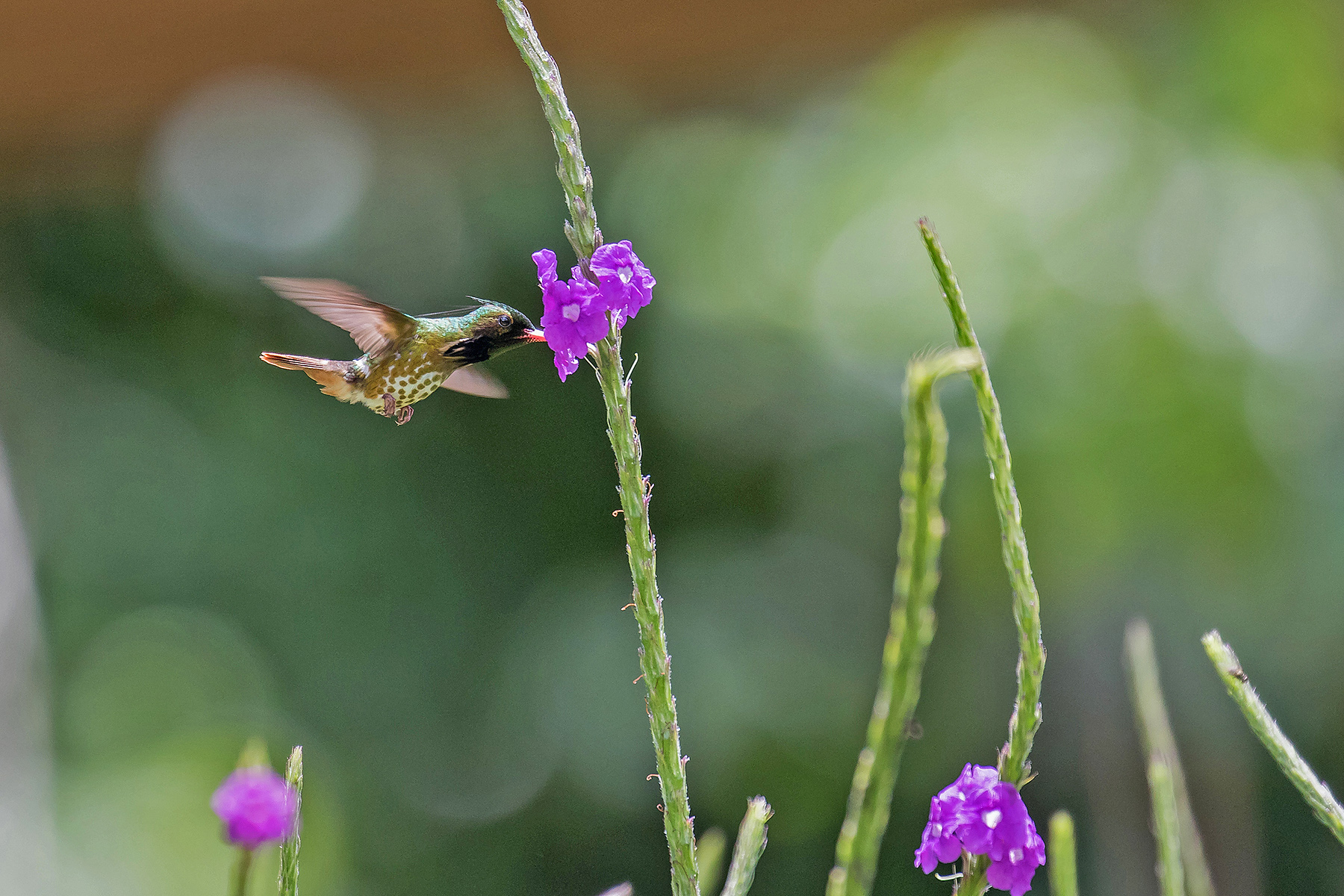
Black-crested Coquette (image by Pete Morris)
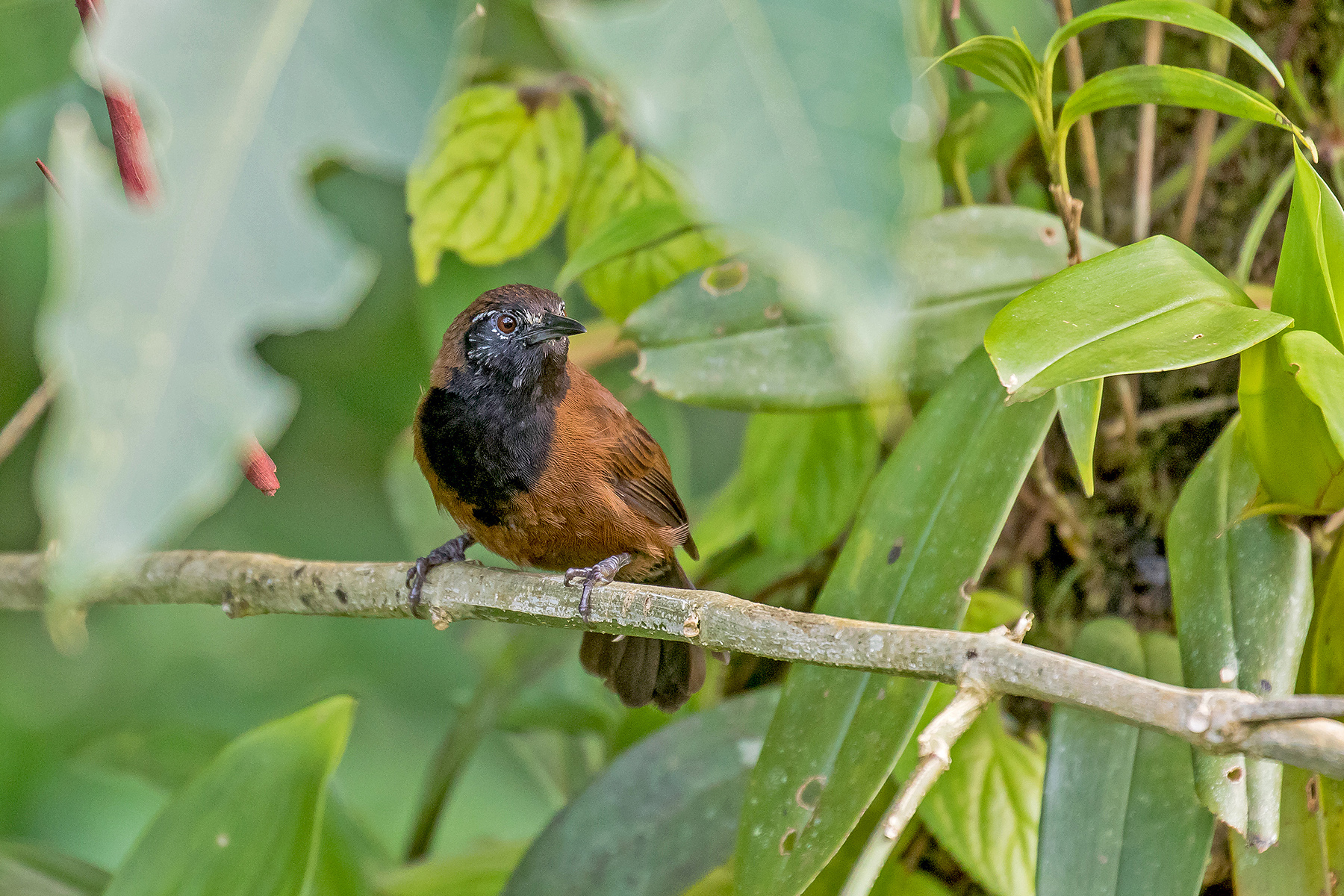
Black-throated Wren (image by Pete Morris)
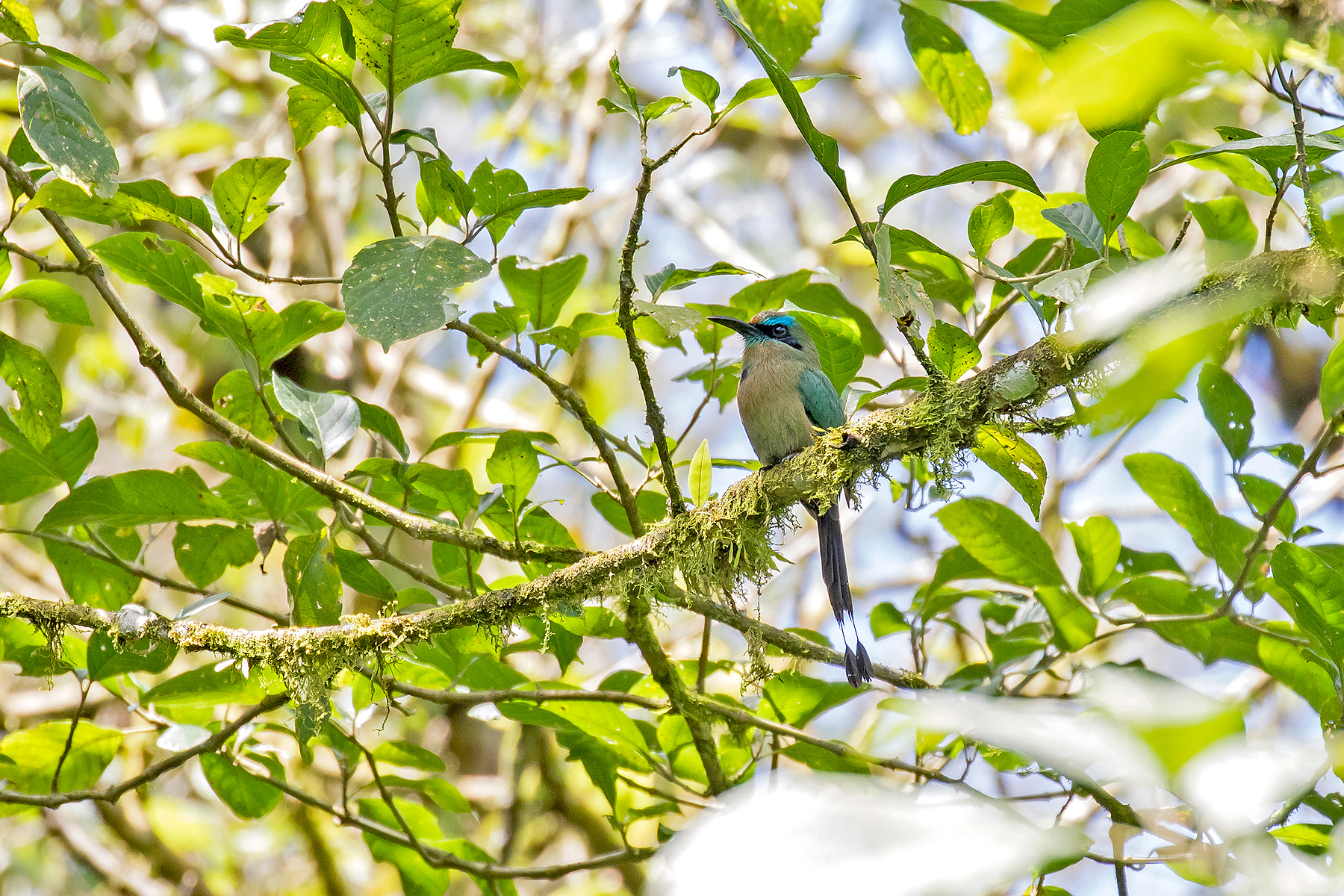
Keel-billed Motmot (image by Pete Morris)
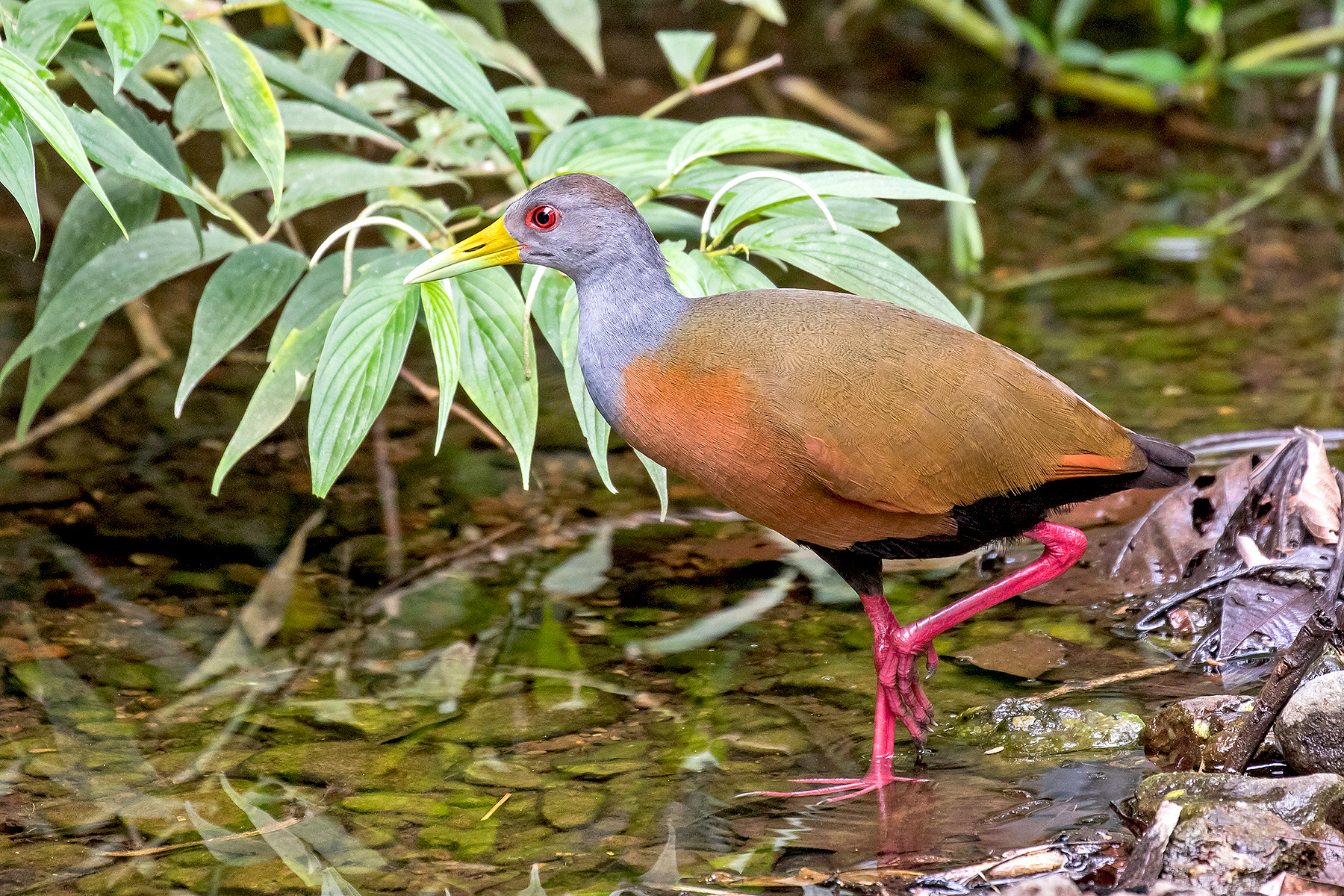
Grey-necked Wood Rail (image by Pete Morris)
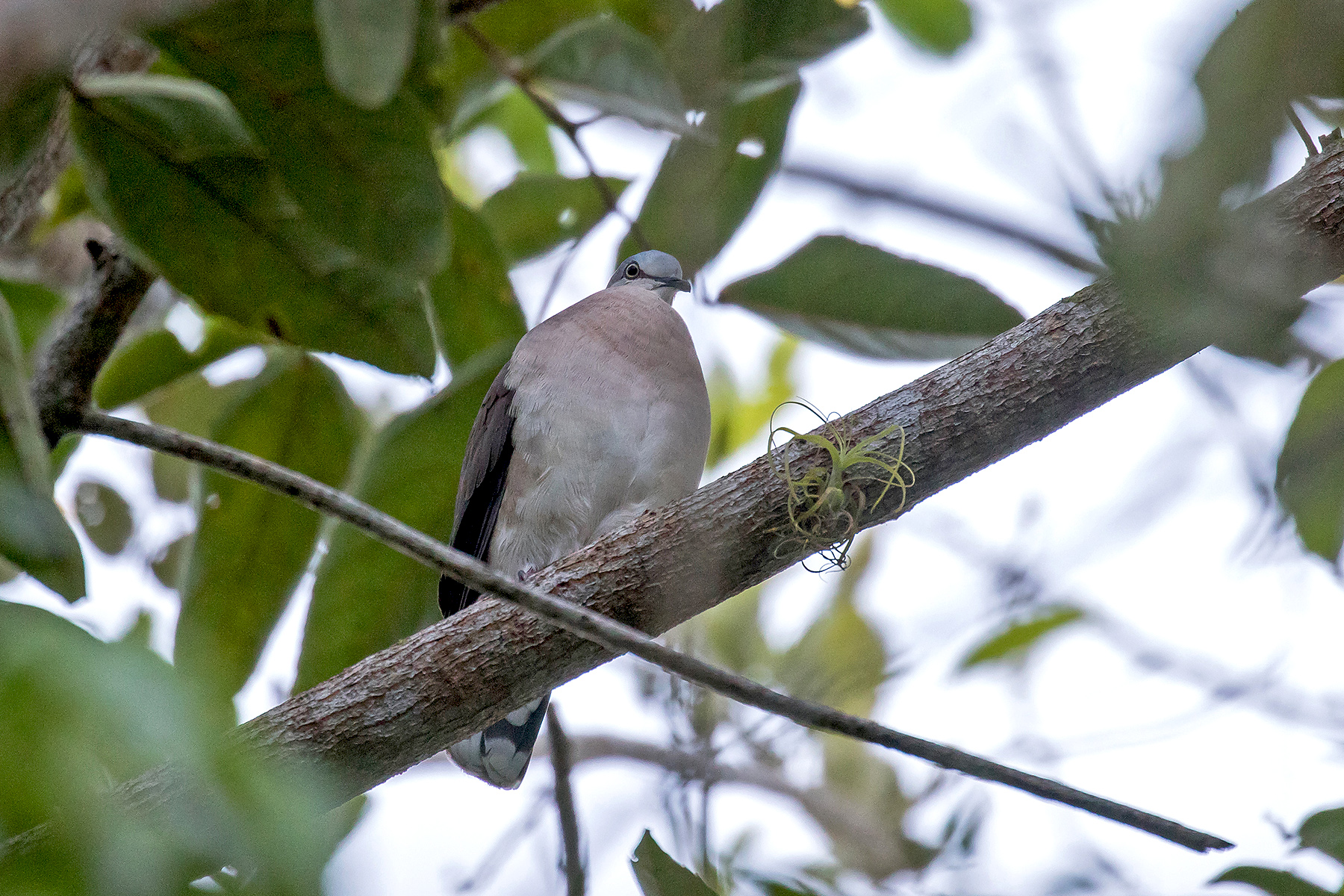
Grey-headed Dove (image by Pete Morris)
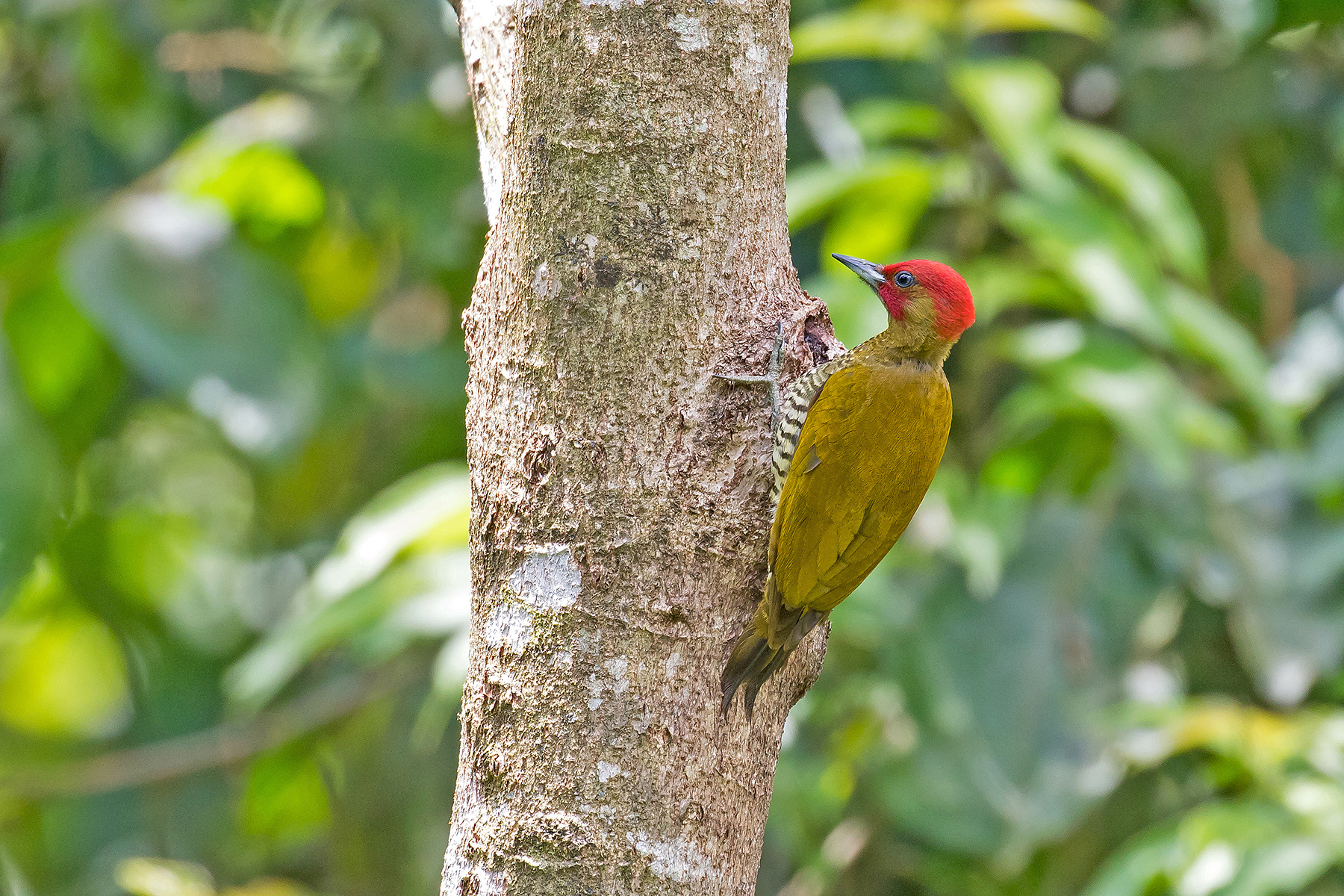
Rufous-winged Woodpecker (image by Pete Morris)
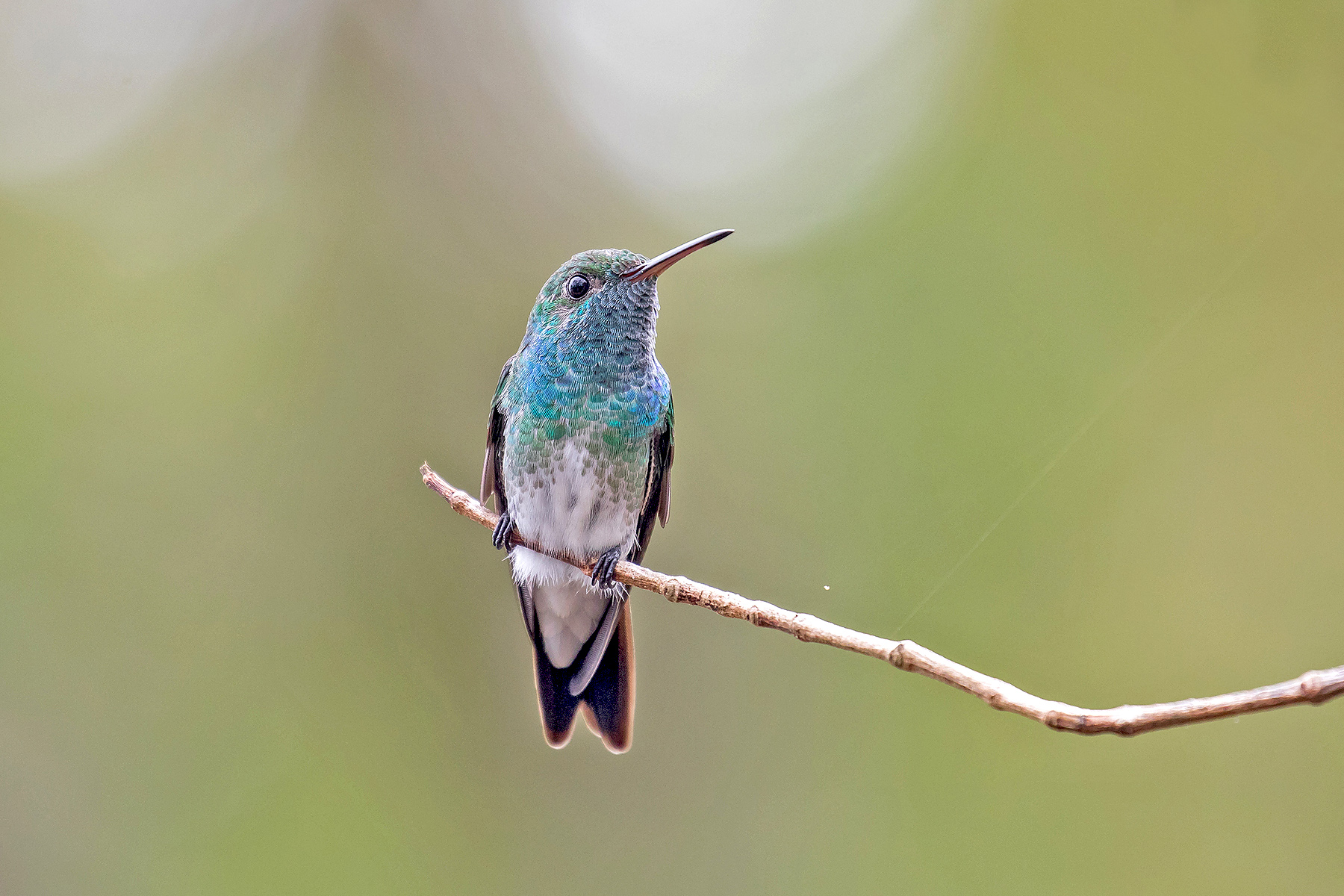
Mangrove Hummingbird (image by Pete Morris)
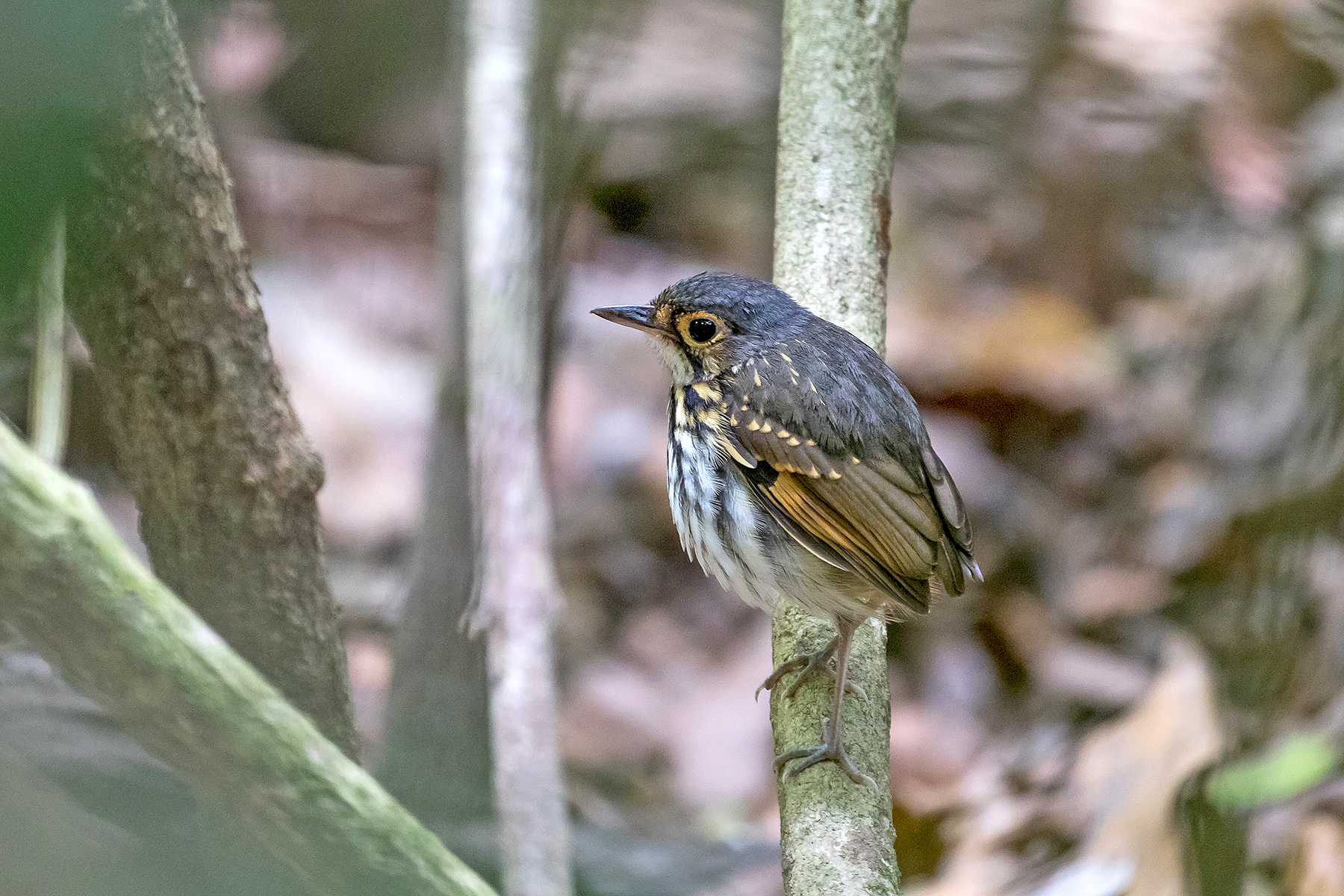
Crested Owl (image by Pete Morris)
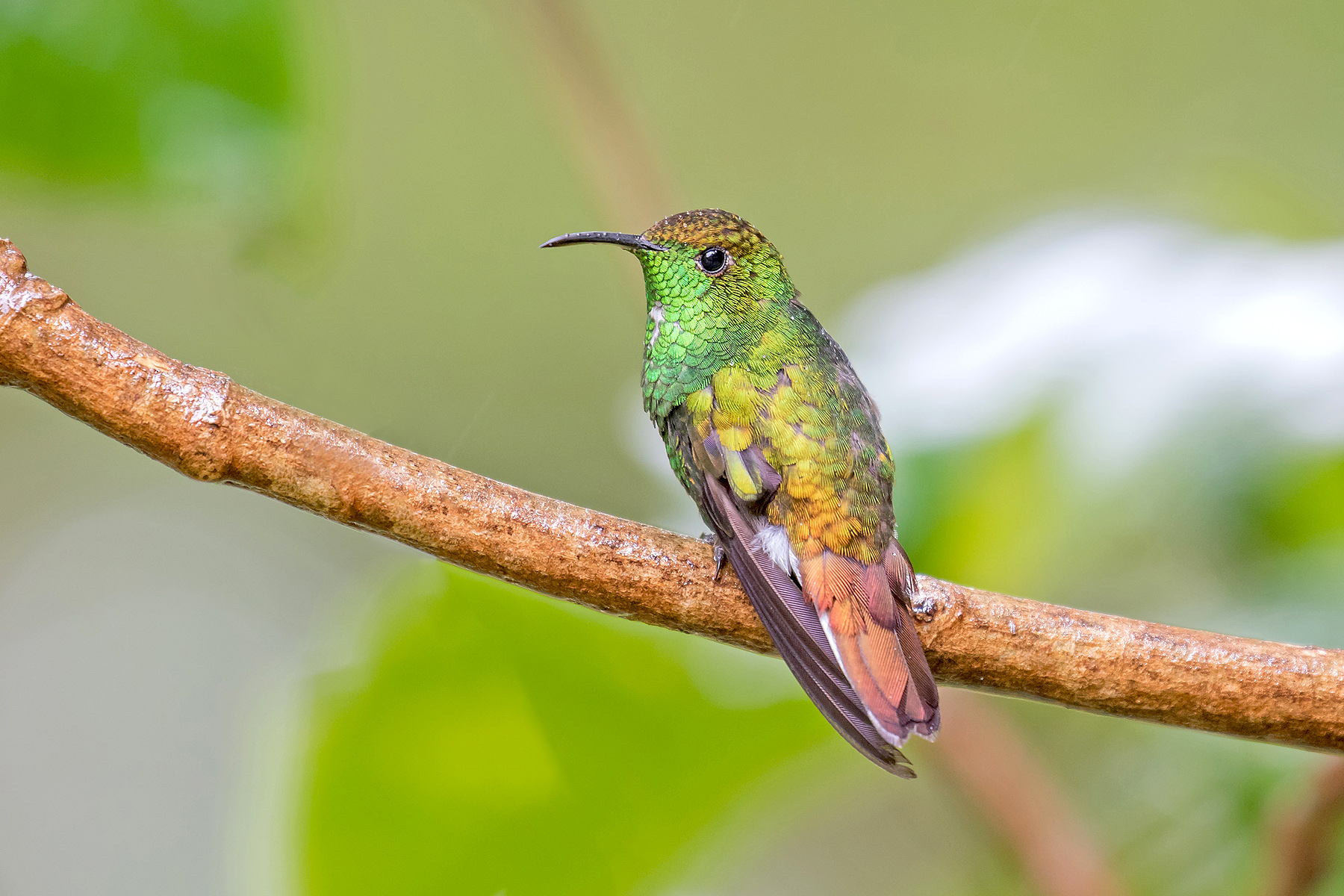
Coppery-headed Emerald (image by Pete Morris)
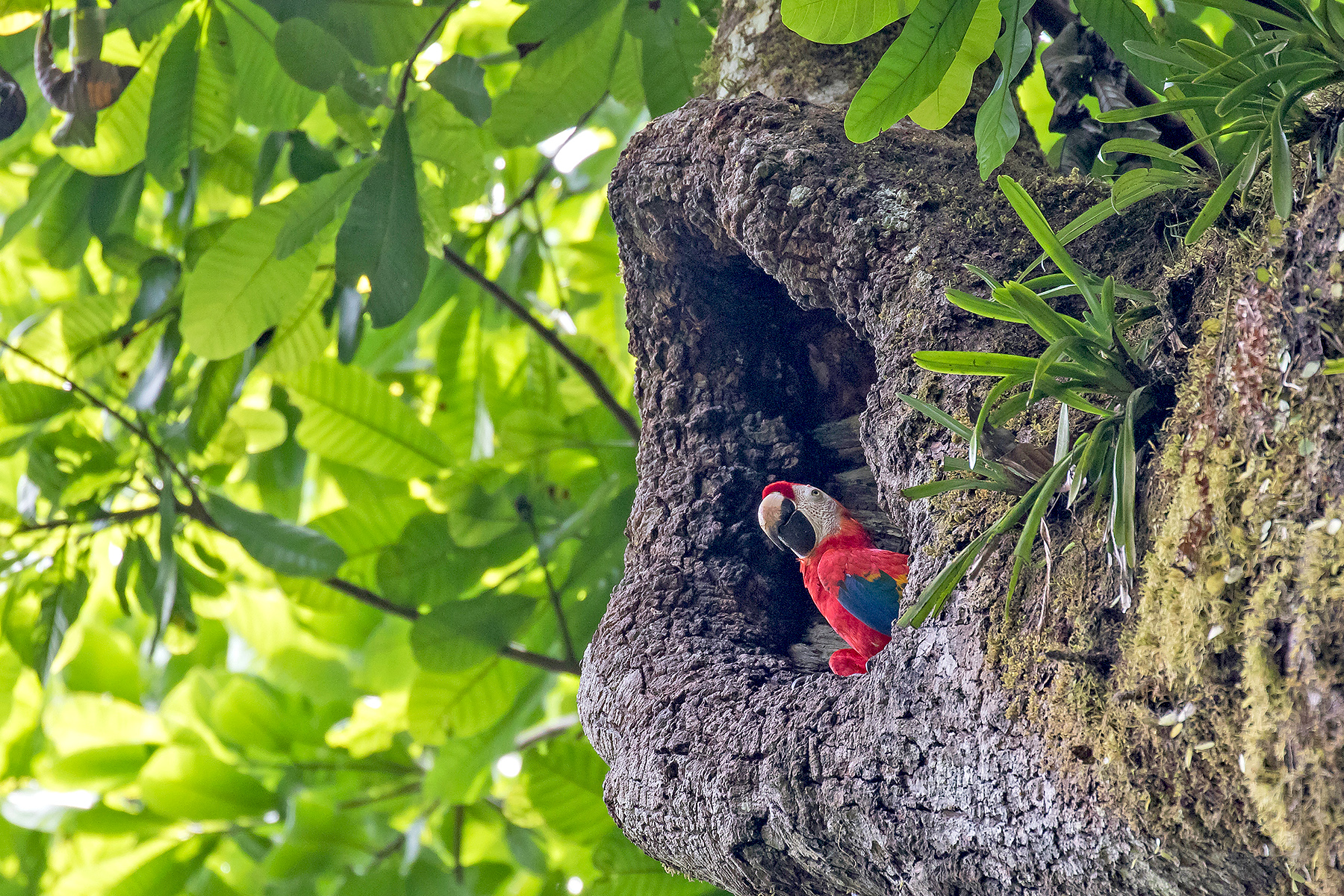
Scarlet Macaw (image by Pete Morris)
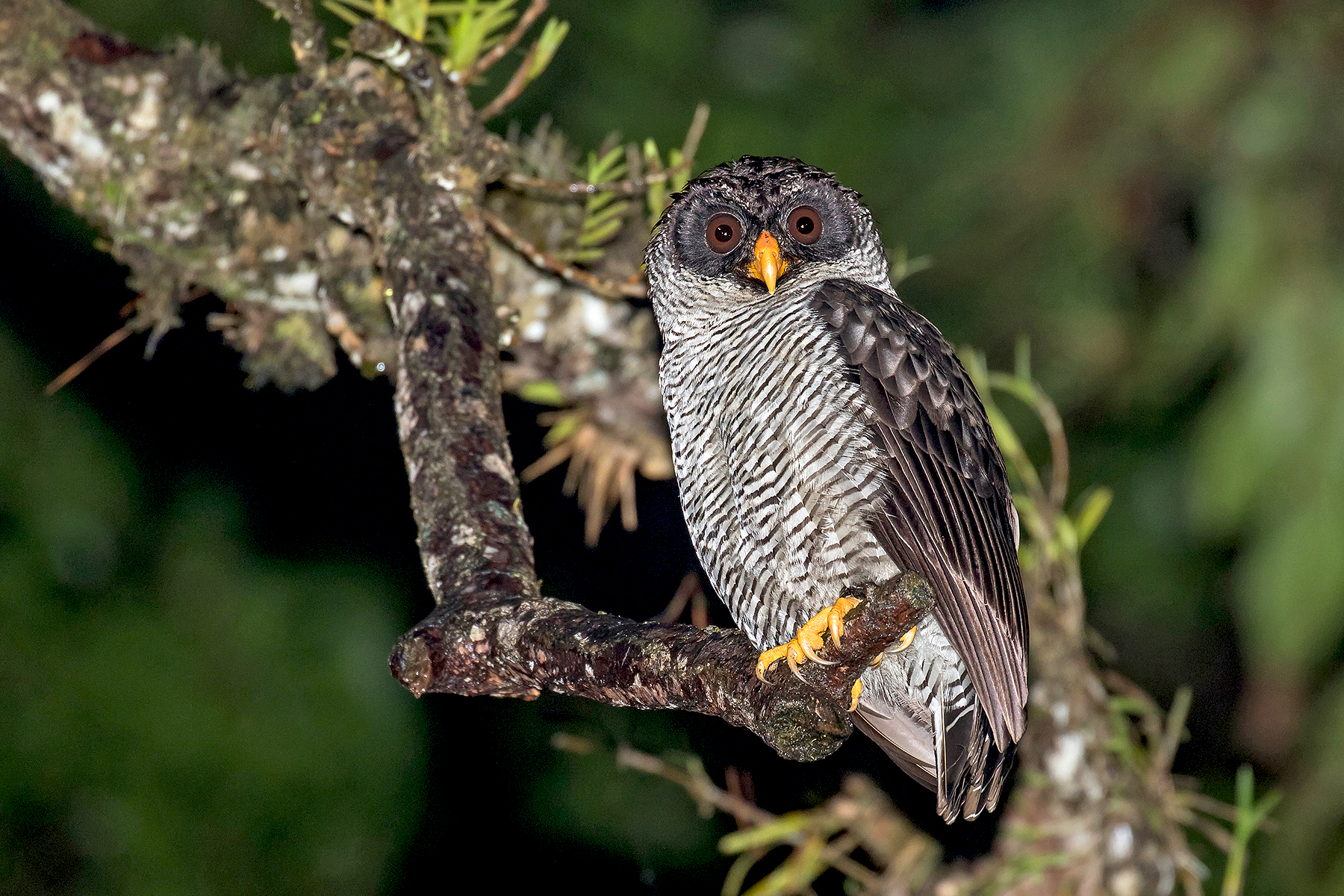
Black-and-white Owl (image by Pete Morris)
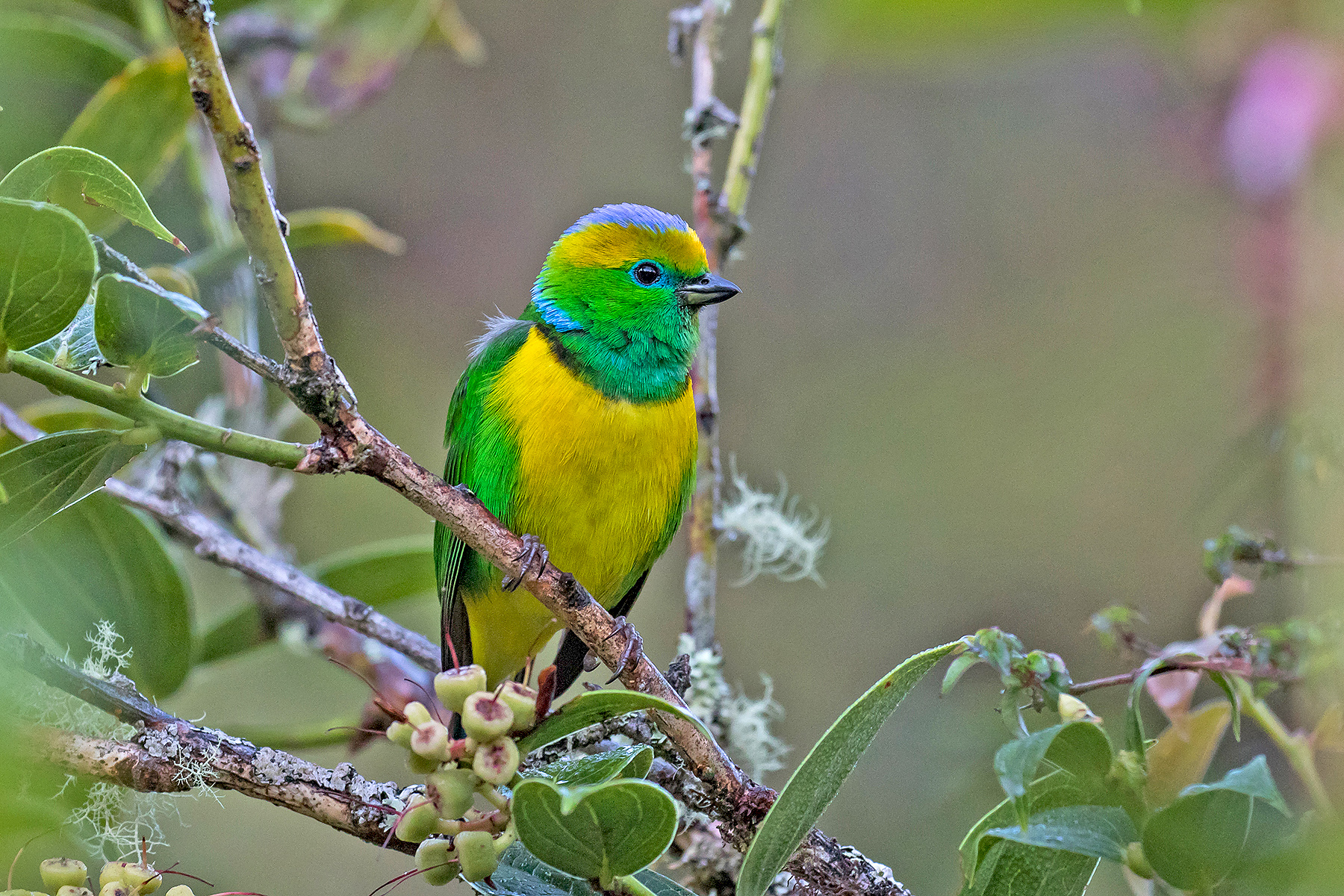
Violet Sabrewing (image by Pete Morris)
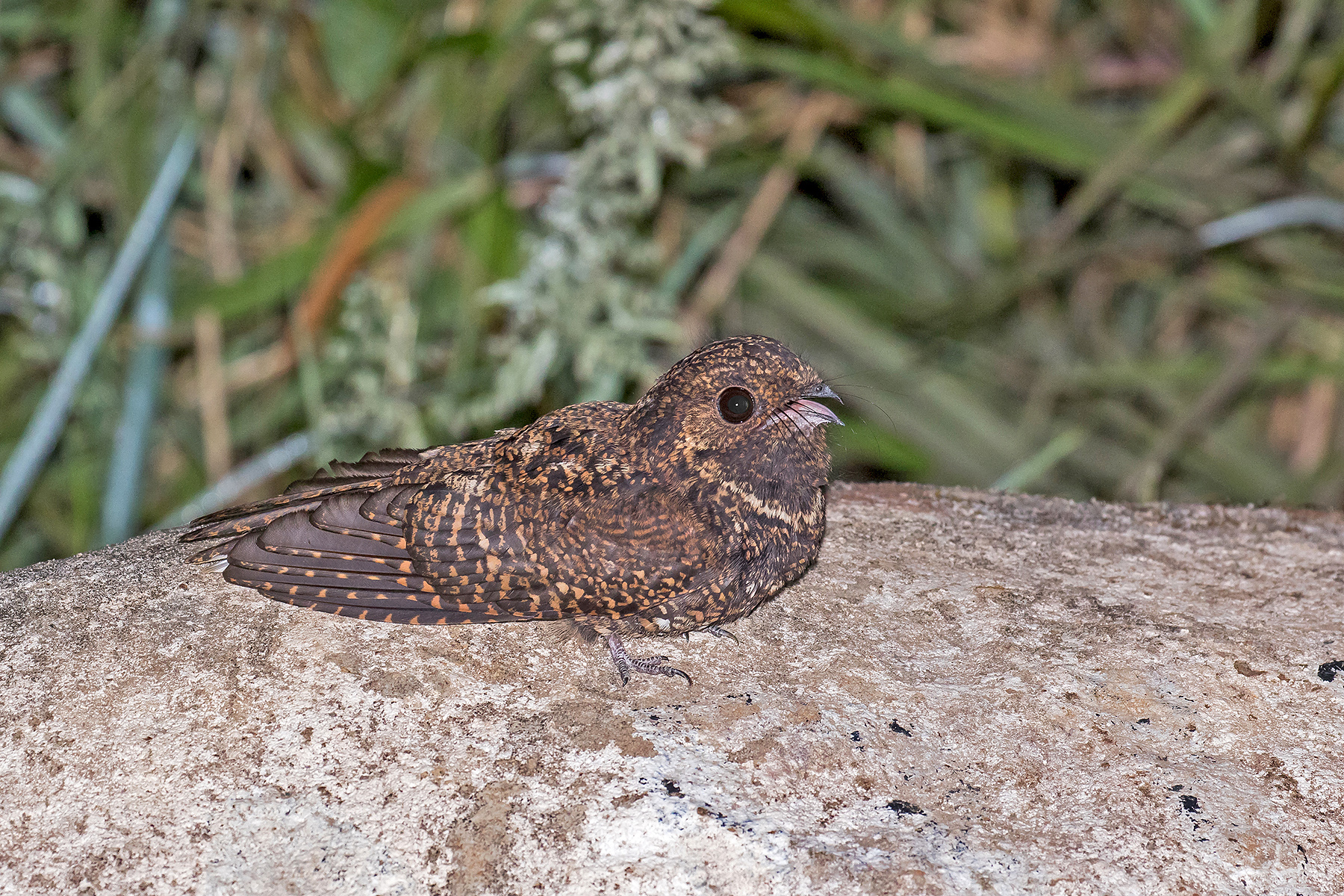
Dusky Nightjar (image by Pete Morris)

CLASSIC COSTA RICA BIRDING TOUR: OVERVIEW
Birdquest’s Classic Costa Rica birding tours are without a doubt the ultimate way for birders to explore this classic Central American destination. Our unrivalled ‘Grand Costa Rica’ tour provides by far the most comprehensive Costa Rican birding tour itinerary available and records far more of the specialities of this small but bird-rich country than any other tour. Costa Rica has an extraordinary number of near-endemic and regional specialities, yet many are widely scattered across the country making it impossible to include a large number in one of the standard 2-week itineraries in the country. From signature creatures such as Resplendent Quetzal and Three-wattled Bellbird to major specialities such as Snowcap, Tody and Keel-billed Motmots, Yellow-billed Cotinga, Chiriqui Yellowthroat, Black-cheeked Ant-Tanager, Nicaraguan Grackle and Nicaraguan Seed Finch and even a real chance of the rare Bare-necked Umbrellabird, our extraordinary journey has it all!
Had Christopher Columbus been a birdwatcher, he could not have christened his new-found land on his last voyage in 1502 more aptly – Costa Rica or ‘Rich Coast’. Around 900 species of birds have been recorded from this small Central American country, the highest species diversity in an area of this size anywhere on earth. Not only is its avifauna exceedingly rich, but Costa Rica (together with neighbouring western Panama) is one of the greatest centres of avian endemism in the world, with around 80 species found nowhere else!
Costa Rica is now well-known as one of the best areas for birding on earth, for a series of stunning wildlife films and the many glowing reports from visitors have made people realize what a treasure house of nature this gem of a country really is. Costa Rica is utterly unlike the preconceived view of Central America. There is no recent history of revolutions, medal-bespattered dictators, political prisoners and masses of half-starved, landless peasants. Instead, Costa Rica is one of the most prosperous countries in Latin America with the highest literacy level in the region, no army (it was abolished as unnecessary in 1949!), stable democratic government, excellent standards of public health and the highest percentage of land area devoted to national parks and reserves of any country in the world, and with an environmentally conscious government that strives for a sustainable existence!
This beautiful land is an ornithological melting pot where the avifaunas of Central and South America merge. Here we will see Central American species at the southern limits of their range, South American species at their northern limits and numerous species that are endemic to Costa Rica and western Panama.
For the birdwatcher, the factor that makes Costa Rica so attractive is not simply its astonishingly rich avifauna, but the fact that it is packed into such a small area. In Costa Rica one could, if one wanted, drive from the Pacific lowlands up over the central highlands and down to the Caribbean lowlands in a matter of five or six hours, passing through every major habitat zone found in Central America!
This carefully crafted itinerary represents the most comprehensive Costa Rica tour available, producing more of the regional specialities than any other. Superb, relatively easy birding, mostly good accommodations and generally good roads make birding this small but incredibly rich country a real pleasure.
During our Costa Rica birding tour, we shall first explore the central valley around the capital, San José, as we look for montane and foothill specialities at Irazú Volcano, and the hospitable Rancho Naturalista in the Caribbean slope foothills. Amongst the numerous specialities at these great locations are Buffy-crowned Wood-Partridge, Timberline Wren, Sooty-capped Bush Tanager, Volcano Junco, the lovely Snowcap, Tawny-chested Flycatcher, Slaty Flowerpiercer, the near-endemic Blue-and-gold Tanager, Large-footed Finch, and the endemic Cabanis’s Ground-Sparrow.
From here we will make our way into Costa Rica’s central highlands, reaching the subalpine zone at over 3000m at Cerro de la Muerte. Here we will find many montane specialities, including the incomparable Resplendent Quetzal, Bare-shanked Screech Owl, Costa Rican Pygmy Owl, Dusky Nightjar, Fiery-throated Hummingbird, Ruddy Treerunner, Buffy Tuftedcheek, Ochraceous Pewee, Black-capped Flycatcher, Sooty and Mountain Robins, Black-billed Nightingale-Thrush, Long-tailed Silky-Flycatcher, Black-and-yellow Phainoptila, Yellow-winged Vireo, Collared Whitestart, Flame-throated and Black-cheeked Warblers, the curious Wrenthrush (or Zeledonia), which was formerly often placed in a family of its own, Black-thighed Grosbeak and Yellow-thighed Finch. With luck, we will encounter the rare Unspotted Saw-whet Owl.
Next, our we will visit San Isidro, Las Cruces and the Golfito region in the southwest of the country, where specialities include White-tailed Emerald, Chiriqui Yellowthroat, White-crested Coquette, the endemic Mangrove Hummingbird, the magnificent Turquoise Cotinga, the endangered Yellow-billed Cotinga and the endemic Black-cheeked Ant-Tanager.
Moving northwards, we come to the famous Carara Reserve where we will explore beautiful white sand beaches, mangrove swamps and some of the best remaining areas of lowland rainforest along Costa Rica’s Pacific coast. Here, the magnificent Scarlet Macaw is still quite common and we will enjoy the host of other birds, including such stars as Boat-billed Heron at one end of the size spectrum and the stunning Streak-chested Antpitta at the other.
We then return to the mountains for the magnificent cloud forest and lush pastures of the northwestern highlands, staying at both the renowned Monteverde and at remote San Gerardo. Amongst the many special birds here are Black Guan, Buff-fronted and Chiriqui Quail-Doves, the strange Three-wattled Bellbird and White-eared Ground-Sparrow.
Next, our Costa Rica birding tour will explore the dry forests and wetlands of Guanacaste’s Nicoya Peninsula for such species as Thicket Tinamou and Lesser Ground Cuckoo, and the Cordillera de Guanacaste in northwest Costa Rica where both Tody and Keel-billed Motmots occur.
We will then enjoy the Nicaraguan border region and the marshy wetlands of Lago Caño Negro where we can find the restricted-range Nicaraguan Grackle and Nicaraguan Seed-Finch, as well as the strange Sungrebe.
Moving to the Arenal Volcano and the Braulio Carillo area, we will seek additional Caribbean specialities including Black-crested Coquette, Streak-crowned Antvireo and Thicket Antpitta and we have a chance of the rare and spectacular Bare-necked Umbrellabird and Lattice-tailed Trogon as well as Black-headed Antthrush and maybe an antswarm experience!
Our next port of call on this speciality-rich tour will be the unforgettable, bird-rich rainforests of Costa Rica’s Caribbean lowlands at the Organization of Tropical Studies’ reserve at La Selva. Snowy Cotinga is relatively easy to see here and we should also observe the endangered Great Green Macaw.
Finally, we will return to the hills as we seek out Black-bellied Hummingbird and White-bellied Mountaingem.
Birdquest has operated Costa Rica birding tours since 1987.
What makes the Birdquest Costa Rica birding tour special? Firstly the extraordinary itinerary. Far and away the best there is! Secondly, the Birdquest group size limit is lower than for many Costa Rica tours, significantly so in some cases. Given the high proportion of forest birding during Costa Rica tours, this is a real advantage for our participants.
Accommodation & Road Transport: The hotels/lodges are mostly of a good standard throughout. Food is simple, canteen-style at the research stations at Las Cruces and La Selva. Road transport is by small coach and roads are mostly good.
Walking: The walking effort during our Costa Rica birding tour is mostly easy, but there are a few moderate grade walks and a few slippery trail sections.
Climate: At lower altitudes, it is generally hot, but at higher altitudes conditions range from warm to cool (even cold at the highest levels). Periods of sunny weather alternate with overcast spells. There is regular rainfall on the Caribbean slope, but elsewhere rainfall is less frequent and more irregular. It will be rather humid at times.
Bird Photography: Opportunities during our Costa Rica birding tour are quite good.
TOUR HIGHLIGHTS
- Enjoying birding in one of the most diverse country on Earth and recording about 600 species, including 45 Hummingbirds and all 5 accessible endemics!
- Exploring the very scenic Volcán Irazú, overlooking San José, in search of restricted-range species like Volcano Junco and Peg-billed Finch
- Marvelling at the stunning Resplendent Quetzal, a contender for 'best bird in the world'
- Waiting patiently at flowering vervains for Snowcaps and Black-crested Coquettes to appear
- Admiring the 'world-mega' Sunbittern near Rancho Naturalista
- Seeking many near-endemics in the moss-encrusted forest of the Cerro de la Muerte, including the monotypic Wrenthrush and the rare Silver-throated Jay
- Standing in awe at the unbelievably-coloured Turquoise Cotinga in the San Isidro area
- Looking for one of the most range-restricted and endemic species of the country, Black-cheeked Ant Tanager
- Birding along rivers and amongst mangroves in search of Yellow-billed Cotinga and the endemic Mangrove Hummingbird
- Visiting world-famous Carara National Park and seeing its tame Streak-chested Antpittas
- Scarlet Macaws flying overhead at the Tarcoles river estuary and mangroves
- First hearing and then observing the extraordinary Three-wattled Bellbird at Monteverde
- Strolling through the dry northwest and finding a Lesser Ground Cuckoo
- Looking for the unique Tody Motmot and superb Lovely Cotinga on the slopes of Volcán Tenorio
- Taking boat rides through Caño Negro and Medio Queso wetlands to find Nicaraguan Grackle, Nicaraguan Seedfinch and Pinnated Bitterns
- Walking around the inspiring Arenal Observatory Lodge and locating a Northern Tamandua and the sought-after Keel-billed Motmot
- Spending a full day looking for Bare-necked Umbrellabird, one of Costa Rica’s toughest specialties
- Birding the Caribbean lowland rainforest at La Selva, and observing spectacular Great Green Macaws, tame tinamous and Snowy Cotingas
OUTLINE ITINERARY
- Day 1: Afternoon tour start at San José. Drive to Volcán Irazú.
- Day 2: Volcán Irazú, then drive to Rancho Naturalista.
- Day 3: Rancho Naturalista.
- Day 4: Rancho Naturalista, then drive to Cerro de la Muerte.
- Day 5: Cerro de la Muerte.
- Day 6: Cerro de la Muerte, then drive to San Isidro.
- Day 7: Alexander Skutch reserve, then drive to Wilson Botanical Gardens near Las Cruces.
- Day 8: Wilson Botanical Gardens, then drive to the Golfito region.
- Day 9: Golfito region.
- Day 10: Golfito region, then drive to Carara reserve.
- Day 11: Carara reserve.
- Day 12: Drive to Monteverde.
- Day 13: Monteverde.
- Day 14: Monteverde, then drive to La Ensenada.
- Day 15: La Ensenada, then drive to Volcán Tenorio.
- Day 16: Volcán Tenorio National Park, then drive to Caño Negro for late afternoon boat trip.
- Day 17: Caño Negro area, including boat trip, then drive to Volcán Arenal.
- Day 18: Volcán Arenal, then drive to Braulio Carillo area.
- Day 19: Braulio Carillo area.
- Day 20: Braulio Carillo area, then transfer to La Selva.
- Days 21-22: La Selva and surrounds.
- Day 23: Drive to Cachi area.
- Day 24: Cachi area, then drive to San José airport for afternoon tour end.
To see a larger map, click on the square-like ‘enlarge’ icon in the upper right of the map box.
To see (or hide) the ‘map legend’, click on the icon with an arrow in the upper left of the map box.
To change to a satellite view, which is great for seeing the physical terrain (and for seeing really fine details by repetitive use of the + button), click on the square ‘map view’ icon in the lower left corner of the ‘map legend’.
PRICE INFORMATION
Birdquest Inclusions: Our tour prices include surface transportation, accommodations, meals and entrance fees.
We also include all tipping for local guides, drivers and accommodation/restaurant staff.
Deposit: 20% of the total tour price. Our office will let you know what deposit amount is due, in order to confirm your booking, following receipt of your online booking form.
TO BOOK THIS TOUR: Click here (you will need the tour dates)
The single supplement will not apply if you indicate on booking that you prefer to share a room and there is a room-mate of the same sex available.
This tour is priced in US Dollars. Amounts shown in other currencies are indicative.
Air Travel To & From The Tour: Our in-house IATA ticket agency will be pleased to arrange your air travel on request, or you may arrange this yourself if you prefer.
CLASSIC COSTA RICA BIRDING TOUR: DETAILED ITINERARY
Costa Rica: Day 1 Our Costa Rica birding tour begins this afternoon at San José. Costa Rica’s capital city situated in the heavily populated Central Valley, but we will head for the slopes of Volcán Irazú, overlooking the valley, for an overnight stay.
Costa Rica: Day 2 This morning we will explore the slopes of the Irazú Volcano. At middle altitudes are large areas of montane forest interspersed with pastures and potato fields. At high altitudes, the chaparral-like paramo contains dense stands of montane bamboo whilst lower down at treeline the elfin woodlands are surrounded by natural savannas.
Early today, we will listen out for the noisy Buffy-crowned Wood Partridge, and with persistence, we may be fortunate enough to see this shy species. Sometimes the calls of the remarkable Resplendent Quetzal also cut through the cool morning air, and we have our first chance of finding this iconic species here.
Many of the other birds here are restricted to the mountains of Costa Rica and Panama, with this volcano offering our first chance at some of the more difficult to find of these specialities. Here we are likely to encounter Fiery-throated Hummingbird, Timberline Wren, Sooty and Mountain Thrushes, Sooty-capped Bush Tanager, Slaty Flowerpiercer, the stunning Flame-throated Warbler, Yellow-thighed and Large-footed Finches, and Volcano Junco. At this time of year, the tiny Volcano Hummingbirds can often be seen doing their amazing aerial display flights.
Should the bamboo be flowering, we could also encounter Maroon-chested Ground Dove, Barred Parakeet, Cabanis’s (or Blue) Seedeater or the rare Peg-billed Finch, although these species can be very hard to find and may not even be present in the area.
Later we shall descend to Rancho Naturalista, located on the Caribbean slope, for a two nights stay. We will stop along the way to look for the shy endemic Cabanis’s Ground Sparrow.
Either today, in the Central Valley, or in other open habitats during the tour, we will come across Lesson’s Motmot, Cabanis’s Wren, the restricted-range Hoffmann’s Woodpecker and Finsch’s Parakeet, and a number of widespread species such as Western Cattle Egret, Black and Turkey Vultures, Red-billed Pigeon, Ruddy Ground Dove, Inca and White-tipped Doves, Squirrel Cuckoo, Groove-billed Ani, Lineated Woodpecker, Tropical Kingbird, Great Kiskadee, Brown Jay, House Wren, Clay-coloured Thrush, Palm and Blue-grey Tanagers, Bananaquit, Rufous-capped Warbler (the local form is sometimes split as Chestnut-capped Warbler), Greyish Saltator, Melodious Blackbird (a recent invader from Nicaragua) and the ubiquitous Great-tailed Grackle.
On our way to Rancho Naturalista, we will make a stop at a small wetland where we may find a number of wetland species such Blue-winged Teal, Lesser Scaup, Ring-necked Duck, Least and Pied-billed Grebes, Black-crowned Night Heron, White-tailed Kite, Western Osprey, Snail Kite and Purple Gallinule, while at a nearby river we will look out for Fasciated Tiger Heron.
Costa Rica: Day 3 Today we will visit the little known but very birdy reserve called El Copal, which is home to many interesting species. Here we will make our way along various trails through the forest as well as spending time in the clearings.
In particular, we shall be looking out for the brilliant near-endemic Blue-and-gold Tanager and the rarely-seen Yellow-eared Toucanet.
Other birds that are very possible at this site include Crested Guan, both Ruddy and Short-tailed Pigeons (overlapping in altitude here), Green Hermit, the impressive Green-fronted Lancebill, Gartered and Collared Trogons, Buff-throated Foliage-gleaner, the range-restricted Tawny-throated Leaftosser, Olivaceous Woodcreeper, the spectacular Brown-billed Scythebill, Russet Antshrike, Slaty Antwren, Dull-mantled and Zeledon’s Antbirds, the elusive Ochre-breasted Antpitta, the uncommon Rufous-browed Tyrannulet, White-throated Spadebill, Rufous Mourner, the smart White-ruffed Manakin, Ruddy-tailed Flycatcher, the sneaky Northern Schiffornis, the delightful Song Wren, Black-headed Nightingale-Thrush (with its eerie song), White-vented and Tawny-capped Euphonias, the scarce Ashy-throated Bush Tanager, colourful White-winged, Carmiol’s, Emerald, Silver-throated, Speckled, Black-and-yellow, and Bay-headed Tanagers, Black-faced Grosbeak and Scarlet-thighed Dacnis.
Mainly catering to birders, hospitable Rancho Naturalista is perched on a hillside overlooking the fertile Tuis river valley.
Not far from the lodge, patches of primary foothill forest host one of Costa Rica’s most localized birds. Early in the morning, the near-endemic Tawny-chested Flycatcher advertises its presence with its characteristic song and we have an excellent chance of seeing this speciality. Even better, the exquisite Snowcap, undoubtedly one of the most spectacular ‘hummers’, is regularly seen visiting gardens in the area. We shall wait for this tiny jewel to show itself in all its splendour, and we should also see Stripe-throated Hermits, Violet-headed Hummingbird, White-necked Jacobin, Green-breasted Mango, Brown Violetear, Rufous-tailed Hummingbird, Crowned (or Violet-crowned) Woodnymph, Bronze-tailed (Red-footed) Plumeleteer and Green-crowned Brilliant.
Other birds we may well see in the open areas or along the forest trails include Double-toothed Kite, Grey-headed Chachalaca, Grey-chested Dove, White-crowned and Brown-hooded Parrots, Common Pauraque, Dusky-backed, White-collared and Chestnut-collared Swifts, Keel-billed Toucan, Collared Aracari, Golden-olive and Black-cheeked Woodpeckers, Wedge-billed, Cocoa, Spotted and Streak-headed Woodcreepers, Plain Antvireo, Mistletoe Tyrannulet, Scale-crested Pygmy Tyrant, Yellow-bellied Elaenia, Common and Black-headed Tody-Flycatchers, Tropical Pewee, Ochre-bellied, Sulphur-bellied, Piratic, Social, and Grey-capped Flycatchers, Bright-rumped Attila (the local form is sometimes split as Flammulated Attila), Masked Tityra, Cinnamon Becard, White-crowned Manakin, Blue-and-white and Northern and Southern Rough-winged Swallows, White-breasted Wood Wren, Band-backed, Stripe-breasted and Black-throated Wrens, Tropical Parula, Golden-crowned Warbler, Golden-hooded, Scarlet-rumped (the form here is sometimes split as Passerini’s) and White-lined Tanagers, Red-throated Ant Tanager, Black-headed and Buff-throated Saltators, Yellow-faced and Blue-black Grassquits, Variable Seedeater (the black form here is a potential split as Black Seedeater), Thick-billed (or Lesser) Seed-Finch, Orange-billed and Black-striped Sparrows, Chestnut-capped Brushfinch, Olive-crowned Yellowthroat, Montezuma Oropendola, Scarlet-rumped and Yellow-billed Caciques and Bronzed Cowbird.
During the northern winter period, visitors include Broad-winged Hawk, Olive-sided and Yellow-bellied Flycatchers, Tennessee, Kentucky, Chestnut-sided, Golden-winged and Blackburnian Warblers, and Baltimore Oriole.
During our visit to the area, we shall also look for Sunbittern along a nearby river and visit a good area for the localized White-throated Flycatcher.
Costa Rica: Day 4 After some final birding at Rancho Naturalista, we will drive up into the Cordillera de Talamanca for a two nights stay at Cerro de la Muerte. In the late afternoon, we will have time for some initial exploration of the splendid mountain habitat.
Costa Rica: Day 5 Cerro de la Muerte or the ‘Mountain of Death’ was so named because of the many people who died of cold whilst crossing it en route between the Central Valley and Valle del General to the south. Nowadays the Pan American Highway crosses the mountain at over 3300m and a comfortable lodge ensures that it no longer holds such fears.
Here we will be birding the temperate oak forests with their thick bamboo understorey. At these altitudes many of the birds seem remarkably tame, and whilst the number of species is not great, most are confined to the high mountains of Costa Rica and adjacent Panama. Here lives one of the world’s most spectacular birds, the Resplendent Quetzal. This is one of the few places where these wonderful birds can be seen without difficulty and we will be able to watch in fascination as they fly from tree to tree with their incredibly elongated uppertail coverts dancing along behind them.
We shall also concentrate our efforts on finding such birds as Costa Rican Pygmy Owl, Sulphur-winged Parakeet, Ruddy Treerunner, Buffy Tuftedcheek, the secretive Silvery-fronted Tapaculo, the rare Ochraceous Pewee, Black-capped and Golden-bellied Flycatcher, Black-faced Solitaire, Black-billed Nightingale-Thrush, Long-tailed Silky-flycatcher, Black-and-yellow Phainoptila, Yellow-winged Vireo, Collared Whitestart, Black-cheeked Warbler, the curious Wrenthrush (or Zeledonia), which was formerly often placed in a family of its own, Grey-breasted Wood Wren, Spangle-cheeked Tanager, Black-thighed Grosbeak, the smart Sooty-faced Finch and Golden-browed Chlorophonia. With patience, we should also see the scarce Silvery-throated Jay and a covey of spectacular Spotted Wood Quail.
The hummingbird feeders at our hotel provide excellent opportunities for studying Lesser Violetear, Admirable, Scintillant and Volcano Hummingbirds, and Grey-tailed Mountaingem. We shall also keep a lookout for Dark Pewee in the nearby treetops.
Some of the more widespread species we should encounter here include Band-tailed Pigeon, Swallow-tailed Kite, Acorn and Hairy Woodpeckers, Spot-crowned Woodcreeper, Torrent Tyrannulet, Mountain Elaenia, Northern Tufted and Yellowish Flycatchers, Black Phoebe, Brown-capped Vireo, Ochraceous Wren, Ruddy-capped Nightingale-Thrush, Slate-throated Whitestart, Flame-coloured Tanager and Rufous-collared Sparrow. During the northern winter period, Black-throated Green and Wilson’s Warblers are present.
Night-time excursions will give us the opportunity to find Bare-shanked Screech Owl, Dusky Nightjar and, with persistence and luck, even the rare and shy Unspotted Saw-whet Owl.
Costa Rica: Day 6 After spending much of the day at Cerro de la Muerte we shall descend to the San Isidro area for an overnight stay, stopping en route to look for the near-endemic Snowy-bellied Hummingbird.
Costa Rica: Day 7 While at San Isidro we will be looking in particular for the stunning but threatened Turquoise Cotinga.
Before leaving the San Isidro area, we will make a visit to the famous private reserve of Dr Alexander Skutch, who was one of the world’s leading authorities on neotropical birds. A wide variety of birds can be seen in his ‘garden’ and in the forest along the entrance road. Some of the species we expect to find here are Orange-chinned Parakeet, Charming (or Beryl-crowned) Hummingbird, near-endemic Garden Emerald, Purple-crowned Fairy, Baird’s Trogon, the near-endemic Fiery-billed Aracari, Olivaceous Piculet, Golden-naped Woodpecker, Tawny-winged Woodcreeper, Plain Xenops, Yellow Tyrannulet, Northern Bentbill, Golden-crowned Spadebill, Slate-headed Tody-Flycatcher, the scarce Yellow-bellied Tyrannulet, Yellow-olive Flatbill, Dusky-capped and Boat-billed Flycatcher, White-winged Becard, the near-endemic Orange-collared Manakin, Rufous Piha, Tawny-crowned and Lesser Greenlets, Rufous-breasted Wren, Orange-billed Nightingale-Thrush, White-shouldered and Gray-headed Tanagers, Green, Shining and Red-legged Honeycreepers, Blue Dacnis and Buff-rumped Warbler. If the Vochysia trees are flowering, our concerted effort to find the elusive, near-endemic White-crested Coquette should result in good views.
Afterwards, we shall continue southwards to the Wilson Botanical Gardens near Las Cruces for an overnight stay.
In more open country with scrub and fields we should find such species as Pearl Kite, Roadside Hawk, Laughing Falcon, Yellow-headed Caracara, Scaled Pigeon, Smooth-billed Ani, Striped Cuckoo, Red-crowned Woodpecker, Bran-coloured and Fork-tailed Flycatchers, Lesser Elaenia, Isthmian Wren, Yellow-throated Brushfinch, Scarlet-rumped Tanager (the local form is sometimes split off as Cherrie’s Tanager) and Streaked Saltator.
A major target today will be the lovely but shy Rosy Thrush-Tanager, a monotypic bird family.
Costa Rica: Day 8 The pleasant Wilson garden is a very birdy spot, with a host of flycatchers, warblers and tanagers, including many North American migrants, but we will be concentrating on the near-endemic White-tailed Emerald. Some of the additional species we might find here are Marbled Wood Quail, Choco Screech-Owl (only recently discovered to occur here), Ruddy Foliage-gleaner and Elegant Euphonia.
Two of the major specialities of the area are the near-endemic Chiriqui Yellowthroat, which can regularly be found around some nearby marshy ponds, and Costa Rican Brushfinch, a localized denizen of the forest edge.
Later we will head for the Golfito region for a two nights stay, stopping along the way to look for some interesting birds.
Recent deforestation has created a corridor of open country that has allowed a variety of colonizing species to invade the area as well as some other more widespread species. Of these, much the most notable are the near-endemic Veraguas Mango and the restricted-range Sapphire-throated Hummingbird. Other new birds may well include Wattled Jacana, Southern Lapwing, Pale-vented Pigeon, Brown-throated Parakeet, Red-rumped Woodpecker, Pale-breasted Spinetail, Yellow-crowned Tyrannulet, Rusty-margined Flycatcher, Red-breasted Blackbird, Crested Oropendola and Giant Cowbird.
Costa Rica: Day 9 The wilderness area of Corcovado National Park and the adjoining Piedras Blancas National Park provides some of the last remaining habitat for many of the southern Pacific slope endemics. The star bird of the area and the great prize of this morning will be the very localized Black-cheeked Ant-Tanager, one of just a handful of species entirely endemic to Costa Rica (most of the regional endemics are shared with Panama). Two fairly common near-endemic specialities of the area are Black-hooded Antshrike and Spot-crowned Euphonia. We will also be on the lookout for the elusive Uniform Crake and the uncommon Bronzy Hermit.
Other birds we could well find in the area include King Vulture, Grey-cowled Wood Rail, Blue Ground Dove, Blue-headed Parrot, Costa Rican Swift, Band-tailed Barbthroat, Long-billed Hermit, Chestnut-mandibled Toucan, Black-striped and Tawny-winged Woodcreepers, Chiriqui Foliage-gleaner, Western Woodhaunter, Bicoloured Antbird, Black-crowned Tityra, Blue-crowned Manakin, Riverside and Black-bellied Wrens, Yellow-crowned Euphonia and Blue-black Grosbeak. At night we will look for Striped and Spectacled Owls, and Tropical Screech Owl.
Costa Rica: Day 10 This morning we will make a special trip to a reliable site for the threatened endemic Mangrove Hummingbird and the stunning Yellow-billed Cotinga. After some final birding in the southern lowlands, we will drive northwards to Carara Reserve for a two nights stay. We should arrive in time for some initial exploration.
Costa Rica: Day 11 Before Carara Reserve was opened up to visitors, ornithologists were compelled to organise full-scale expeditions in order to reach Pacific-coast lowland rainforest. Now it is possible to walk into this endangered Central American habitat from a paved road!
Many of the region’s special birds can be found here including the magnificent Scarlet Macaw. These raucous, gaudy, long-tailed parrots are the park’s star attraction as they fly effortlessly amongst the large fruiting trees or flap slowly across to the nearby mangroves where they roost.
By slowly walking along the excellent trail system we may well find birds such as Great Tinamou, Northern Mealy Amazon, Slaty-tailed and Black-headed Trogons, White-whiskered Puffbird, Pale-billed Woodpecker, Northern Barred and Long-tailed Woodcreepers, Dot-winged Antwren, Chestnut-backed Antbird, Black-faced Antthrush, the lovely Streak-chested Antpitta (often confiding here), the smart Red-capped Manakin, Greenish Elaenia, Stub-tailed Spadebill (we will need some luck to see this tricky species), Ruddy-tailed and Streaked Flycatchers, Northern Royal Flycatcher, Rufous Mourner, Rose-throated Becard, Rufous-baked and Rufous-and-white Wrens, and Trilling Gnatwren. If we are very lucky we will come across Scaly-throated Leaftosser.
Mammals are not conspicuous, but we should encounter Mantled Howler and White-nosed Coati.
Along the forest edge, or in nearby open country, we will expect to encounter Grey and Short-tailed Hawks, Crested Caracara, Red-lored and Yellow-naped Amazons, Ferruginous Pygmy Owl, Lesser Nighthawk, Turquoise-browed Motmot, White-necked Puffbird, Barred Antshrike, Brown-crested Flycatcher, Grey-breasted Martin, White-throated Magpie-Jay, Tropical Gnatcatcher, Scrub Greenlet, Grey-crowned Yellowthroat, Scrub Euphonia, Variable Seedeater (the pied form here is a potential split as Black-breasted Seedeater), Blue Grosbeak and Stripe-headed Sparrow.
Dry country areas in the Carara region hold Double-striped Thick-knee, Common Ground Dove, Orange-fronted Parakeet, White-fronted Amazon, Cinnamon Hummingbird, Northern Beardless Tyrannulet, Scissor-tailed Flycatcher, Banded Wren, White-lored Gnatcatcher, Yellow-green Vireo and Olive Sparrow. With patience, we should see the shy Lesser Ground Cuckoo, and if we are in luck we will also come across Spot-bellied Bobwhite.
At lagoons and mangroves in the region we should find Brown Pelican, Neotropic Cormorant, Anhinga, Magnificent Frigatebird, Great and Snowy Egrets, Great Blue, Little Blue, Tricoloured and Green Herons, Yellow-crowned Night Heron, Bare-throated Tiger Heron, Wood Stork, American White Ibis, Roseate Spoonbill, Black-bellied Whistling Duck, Plumbeous Kite, Common Black Hawk, Northern Jacana, Black-necked Stilt, Semipalmated, Wilson’s and Collared Plovers, Lesser Yellowlegs, Willet, Spotted and Western Sandpipers, Laughing Gull, Royal Tern, Ringed, Amazon and Green Kingfishers, Mangrove Swallow, Panamanian (or Panama) Flycatcher, Northern Scrub Flycatcher, Mangrove Vireo and Mangrove Warbler. During the winter period, migrants from North America include American Yellow Warbler, Northern Waterthrush and American Redstart.
Costa Rica: Day 12 After some final birding in the Carara region, we will drive through the Pacific lowlands before climbing into the northwestern highlands of Costa Rica, to Monteverde for a two nights stay.
Costa Rica: Days 13 During the 1950s a group of Quakers, disillusioned with some aspects of life in the United States, came to Costa Rica. They settled at Monteverde, initiating the dairy farming which is a prominent feature of the area today. Realizing the importance of a stable watershed for the local economy, they ensured that the forests on the surrounding hills remained intact. We owe these far-sighted pioneers a great debt of gratitude, for today this magnificent area is protected by two major reserves, the world-renowned Monteverde Cloud Forest Preserve and the Santa Elena Reserve.
A large and varied bird community inhabits the epiphyte-laden cloudforests in these protected areas, which straddle the continental divide. Lower down on the Pacific slope there is a more pronounced dry season and here the cloudforest is replaced by semi-humid evergreen forest, home to a different set of birds. Sometimes the mornings at Monteverde are gloriously clear and one can see the forested ridges extending away into the distance. Three-wattled Bellbirds utter their deafening calls from exposed perches in the canopy, Lineated Foliage-gleaners and Streak-breasted Treehunters search the moss and bromeliad-encrusted branches, whilst at some strategically positioned feeders, we will have wonderful opportunities for prolonged views of a multitude of iridescent hummingbirds including Violet Sabrewing, Coppery-headed Emerald (endemic to Costa Rica), Purple-throated Mountaingem, Magenta-throated Woodstar, and Stripe-tailed and Blue-vented Hummingbirds.
Monteverde offers cloud forest birding at its best, although we shall doubtless have to work hard to find some of the more retiring inhabitants of the area, and the local Resplendent Quetzals are no longer as easy to see as they once were.
By quietly walking along the maze of trails we may find Black Guan, Black-breasted Wood Quail, Buff-fronted Quail-Dove, ‘Orange-bellied Trogon’ (nowadays regarded as a colour morph of Collared), Prong-billed Barbet, Blue-throated Toucanet, Smoky-brown Woodpecker, the secretive Grey-throated Leaftosser, Red-faced Spinetail, Spotted Barbtail, Slaty Antwren, Eye-ringed Flatbill, the tricky Azure-hooded Jay, Slaty-backed Nightingale-Thrush, Black-eared Warbler, Common Bush Tanager and Yellow-throated Euphonia. In the lower areas at Monteverde, we will look for Chiriqui Quail-Dove, Salvin’s Emerald, Ruddy Woodcreeper, the superb Long-tailed Manakin and the smart White-eared Ground Sparrow.
Costa Rica: Day 14 After some final birding at Monteverde we will continue our exploration of Guanacaste province with an overnight stay at La Ensenada. En route, we will visit some mangroves where, with a bit of luck, we will see the shy Rufous-necked Wood Rail.
The large cattle ranch at La Ensenada also serves as an effective reserve for a wide variety of wildlife.
Here we can see such species as Harris’s and Crane Hawks, Snail Kite, Peregrine Falcon, Black-bellied and Fulvous Whistling Ducks, Limpkin, Glossy Ibis, Plain-breasted Ground Dove, Plain-capped Starthroat, Red-winged Blackbird and Morelet’s Seedeater (formerly known as White-collared).
The dry forest landscape of rolling hills highlighted by the brilliant colours of flowering trees will provide a marked contrast from our rainforest birding. The park-like landscape around the guesthouse holds Laughing Falcon, Mangrove Cuckoo, Yellow-naped Amazon, White-throated Magpie-Jay, and Streak-backed and Spot-breasted Orioles. With luck, we will even see a Thicket Tinamou and Collared Forest Falcon. We may find Pacific Screech Owl and Spectacled Owl at their day roosts, but if not we can look for them after dark.
Costa Rica: Day 15 After some final birding at La Ensenada, a relatively short drive takes us a short distance beyond the continental divide in the Cordillera de Guanacaste. Here we will stay for two nights on the Caribbean slope of the dormant Volcán Tenorio amidst the humid forests of the beautiful Rio Celeste.
We will arrive in time for some initial exploration, mostly looking for the rare Lovely Cotinga at what was one of its most reliable site in the country, although they have been tricky in recent years.
Costa Rica: Day 16 The foothill forest of the Volcán Tenorio National Park is home to an exciting array of species including Purplish-backed Quail-Dove, Tody Motmot, Western Woodhaunter, Checker-throated Antwren, Tawny-faced Gnatwren, White-throated Shrike-Tanager and Black-faced Grosbeak. During our birding, we will be keenly observant for the growls of Spotted, Bicoloured and Ocellated Antbirds attending a swarm of raiding army ants. With a huge amount of luck, we will come across the king of the aforementioned spectacle, the rarely seen Rufous-vented Ground Cuckoo, also be following the swarm, though we would be very fortunate to observe this reclusive forest floor dweller. We can always dream! We will also be hoping for the rarely seen Slaty-backed Forest Falcon, while an evening excursion could yield both Mottled Owl and the spectacular Crested Owl.
From Volcán Tenorio, we will be heading into ornithologically little known territory not far from the border with Nicaragua. Our destination is a remote but comfortable lodge at Caño Negro, where we shall overnight.
Late this afternoon we will take a very enjoyable boat trip into a large marsh. Highlights here are likely to include the cryptic Pinnated Bittern. The rare Yellow-breasted Crake is regularly present here and we will make a special effort to try and see one. If we are fortunate this tiny bird will come close to us.
This evening we will likely see Great Potoo and there is a slim chance of Common Potoo.
Costa Rica: Day 17 This morning we will travel by boat along the Río Frío and into the marshy expanses of Lago Caño Negro. Our prime target will be the Nicaraguan Grackle, which inhabits the reedy vegetation and is only found in southern Nicaragua and northernmost Costa Rica.
More spectacular, however, will be the sheer variety of kingfishers and the large numbers of Spectacled Caimans. No fewer than five species of kingfisher occur here, and we have a good chance of seeing all of them, including Belted, Ringed, Amazon, Green-and-rufous and American Pygmy! This is also a great trip for seeing the strange Sungrebe, either resting on a sloping riverside branch or swimming stealthily along the river margins. Another of the main attractions is the strange Boat-billed Heron, whose huge eyes and massive, ridged bill create a strange, almost prehistoric appearance.
Back on land, we will be looking in particular for the restricted-range Nicaraguan Seed Finch, while other new birds may well include Lesser Yellow-headed Vulture, Grey-headed Dove and Spot-breasted and Canebrake Wrens.
Afterwards, we will transfer to Volcán Arenal for an overnight stay. On the way, we will make a stop at a place where both Uniform and White-throated Crakes are pretty reliable and often show well.
Costa Rica: Day 18 Costa Rica’s most active volcano has a perfect conical shape and depending on the weather usually allows breathtaking views. In certain years, ash columns and underground rumbling occur with nightly spectacles of glowing rocks tumbling down the slope from the volcano’s explosive eruptions.
The protected forests surrounding Volcán Arenal are widely known for their abundant birdlife and other wildlife. Our lodge here offers the most stunning views of the volcano and its birdy gardens and forest trails hold an enticing collection of specialities.
Flowering hedges around the lodge attract a variety of hummers including the amazing Black-crested Coquette and Green Thorntail whilst fruit feeders are visited by an assortment of woodpeckers, oropendolas, saltators, and such attractive tanagers as Tooth-billed, Emerald and Crimson-collared.
From the forest trails of our lodge and at the nearby ‘hanging bridges’ private reserve we should find such species as the awe-inspiring Great Curassow, White-fronted Nunbird, the restricted-range Keel-billed Motmot, Streak-crowned Antvireo, Carmiol’s, Tawny-crested, Rufous-winged and Black-and-yellow Tanagers and Olive-backed Euphonia. With some patience and luck, we should also see the shy and aptly named Thicket Antpitta.
We may also encounter White Hawk, Semipliumbeous Hawk (uncommon), Broad-billed Motmot, Bare-crowned Antbird, Bay Wren and Black-cowled Oriole.
Later we will transfer to the Braulio Carillo area for a two nights stay.
Costa Rica: Day 19 Since the disappearance of the regular Bare-necked Umbrellabird lek at San Gerardo, this iconic species has become extremely difficult to see. One site where it seems to pop up more often than others is the area adjacent to Braulio Carillo National Park, so we will give it our best shot here but will still need luck to be on our side! Another good bird we will be hoping for in this area is the brilliant, near-endemic Blue-and-gold Tanager.
Whilst searching the trails, we should encounter a number of other scarce or interesting species such as Barred Hawk, Purplish-backed and Ruddy Quail-Doves (it is always good to have more chances of quail-doves!), the uncommon near-endemic Lattice-tailed Trogon, the smart Rufous-winged Woodpecker, the sneaky Northern Nightingale-Wren, Black-headed Antthrush, Thicket Antpitta (in case we missed it before), the unique Sharpbill and the scarce Pale-vented Thrush. It is also another place where we can hope to experience an antswarm where all of the obligate antbirds could be in attendance, perhaps including that elusive ground-cuckoo!
We could also encounter include Geoffroy’s (or Central American) Spider Monkey and Mantled Howler Monkey.
During our stay in the area, we will also make an excursion inside Braulio Carrillo National Park to look for the rare Black-crowned Antpitta. Now understood to be a giant gnateater rather than a true antpitta, this species has become very hard to find in recent years.
Costa Rica: Day 20 After a final morning in the Braulio Carillo area, we will head to La Selva for a three nights stay. We will arrive in time for some initial exploration of this excellent area.
Costa Rica: Days 21-22 La Selva is the most accessible tract of humid lowland rainforest on the Caribbean slope of Costa Rica. Most of this superb reserve is primary forest; whilst other parts consist of secondary growth, swamp forest, river margins, former plantations and abandoned pasture. The area is now maintained as a natural laboratory by the Organization for Tropical Studies and an excellent network of trails allows access to every habitat. Nowadays, the accommodation at the biological station is quite comfortable and staying at this thriving research facility allows us to be right in the middle of prime habitat at all times of day and night, in contrast to the restricted access hours allowed to those who stay outside the reserve. One feels privileged to have unrestricted access to this unique place, something that comparatively few visitors experience.
Over 400 species have been recorded from the area and a great many of the birds we will encounter will not have been seen earlier in our travels. Rainforest birding is always extremely rewarding, but one must cultivate patience and keep a vigilant watch from ground level to the canopy high above our heads. The easiest birding is to be had around the clearing where the research station is situated. Here the flowering and fruiting trees act as a magnet for many different species of hummingbird and tanagers. As we walk the trails we will hear the plaintive whistles of ground-dwelling tinamous, whilst after a quiet period, we may suddenly be surrounded by strange calls and have to play hide and seek with an antbird flock amongst the tangled vegetation. Overhead in the canopy gaudy tanagers, honeycreepers and cotingas are attracted to flowering and fruiting trees.
Amongst the superb selection of birds we expect to find here is the awesome but endangered Great Green Macaw as well as Little and Slaty-breasted Tinamous (both hard to see as opposed to hear), Olive-backed Quail-Dove, Olive-throated Parakeet, Vermiculated Screech Owl, Short-tailed Nighthawk, Grey-rumped Swift, Blue-chested Hummingbird, Rufous Motmot, Pied Puffbird, Chestnut-coloured and Cinnamon Woodpeckers, Great, Fasciated and Black-crowned Antshrikes, the handsome Snowy Cotinga, Black-capped Pygmy-Tyrant, Long-tailed Tyrant, White-ringed Flycatcher, Yellow-margined Flatbill, White-collared Manakin, Chestnut-headed Oropendola and Plain-coloured and Dusky-faced Tanagers. Uncommon possibilities include the shy Agami Heron, Grey-headed Kite, the scarce Spot-fronted Swift and Purple-throated Fruitcrow.
Mammals are elusive, but we will see Collared Peccary and Central American Agouti and may be lucky enough to see a sloth or a noisy troupe of Geoffroy’s Spider Monkeys, whilst caimans sometimes bask on the riverbanks.
Costa Rica: Day 23 Today we will make our way to the Cachi area for an overnight stay. We will be making a number of stops along the way in the hope of finding a few final additions, including the exquisite Black-bellied Hummingbird.
Costa Rica: Day 24 This morning we will look in particular for the scarce White-bellied Mountaingem. After a chance to wash and change, we will head for San José, where our Costa Rica birding tour ends in the afternoon at the international airport.
CLASSIC COSTA RICA TOUR REPORT 2023
by Leo Garrigues

COSTA RICA TOUR REPORT 2022
Ultimate costa rica tour report 2019, ultimate costa rica tour report 2018, other central america birding tours by birdquest include:, best of costa rica – the most rewarding 2-week itinerary in this beautiful, bird-filled country, honduras – central american birding with a difference.
IndiGo Birding Nature Tours uses cookies to give you the best possible service. If you continue browsing, you agree to our use of cookies. More details can be found in our terms and conditions .
- [email protected]
- 812-679-8978
- Open Facebook account in a new tab.
- Open Instagram account in a new tab.
- Open Tripadvisor account in a new tab.
Costa Rica Birding Tour
Spectacular Fauna & Flora
La Selva Biological Station
Arenal & Monteverde
Discover Costa Rica's Natural Wonders on this 9-Day Breathtaking Birding & Culture Tour
Join us on this exciting multi-day adventure through the luscious rainforests and lively ecosystems of Costa Rica! This all-inclusive tour offered in conjunction with Holbrook Travel is a perfect blend of birdwatching, nature walks, cultural experiences, and relaxation. You’ll start your journey in San Jose at the charming Hotel Bougainvillea before heading to Sarapiquí’s Selva Verde Lodge, where you’ll explore the rainforest and meet some of the fascinating wildlife of this beautiful country. We’ll also give you the opportunity to learn about cocoa processing while supporting local sustainable tourism.
From venturing to the famous La Selva Biological Station to exploring the grounds of the Arenal Observatory Lodge, you’ll be amazed by over 400 bird species and other mesmerizing wildlife here in this amazing country. You will also visit Hanging Bridges and unwind in soothing local hot springs before continuing your exciting adventure to Monteverde, where you’ll explore the diverse Santa Elena and Monteverde Cloud Forest Reserves. The tour also includes an intriguing experience at the Bat Jungle , where you will learn about their importance in nature. Your journey will wrap up with a delightful coffee plantation tour at Café Monteverde and a heartwarming farewell dinner in San Jose. So, get ready to embrace the magic of Costa Rica’s natural wonders – book your unforgettable adventure with us today!
Tour Highlights
Begin your birding Costa Rica adventure by exploring botanical gardens and enjoy a welcome dinner in San Jose
Experience the rich biodiversity of Selva Verde Lodge & Rainforest Reserve in Sarapiquí
See the world-renowned La Selva Biological Station and observe hundreds of bird species
Discover Arenal Observatory Lodge, the only eco-lodge within Arenal National Park
Marvel at the hanging bridges of Arenal and relax in local hot springs
Cruise across Lake Arenal and ascend to the highlands of Monteverde
Visit a bat jungle and observe them feeding, flying, and socializing through glass windows and listen to their vocalizations via special microphones
Learn about coffee farming at Café Monteverde and enjoy a farewell dinner in San Jose
Click the tabs below to find out more...
Trip details.
$2795/person (double occupancy); $500 single supplement
Meeting point
Juan Santamaría International Airport (SJO), Costa Rica
Usually offered during winter or early spring
Availability
April 20-28, 2024
One spot left
9 days, 8 nights
- Transportation
Not included
Flights to and from Costa Rica, alcoholic beverages and extra drinks, laundry service, souvenirs and trip insurance.
What to bring
A packing list will be provided after registration.
About your guide
Expert Costa Rican birding guide and driver that will both travel with the group from beginning to end. David travels along as tour coordinator and assistant guide.
What You'll See & Do
Day 1. Welcome to Costa Rica – Airport to Hotel Bougainvillea
We’ll meet you at the airport in San José, before proceeding to Hotel Bougainvillea, a charming hotel situated on a sprawling 10-acre property adorned with botanical gardens that offer stunning city views. These gardens host more than 600 plant species, such as 22 varieties of bromeliads, and serve as an excellent spot for observing hummingbirds, motmots, tanagers, and other fascinating creatures. Later, we’ll come together with the group for an enjoyable welcome dinner.
Day 2. Sarapiqui & Selva Verde Lodge
After meeting for breakfast in the hotel restaurant, we’ll check out and head to Sarapiquí and Selva Verde Lodge. En route, we’ll stop at a café in Cinchona known for its many hummingbird feeders. Upon arrival at Selva Verde Lodge & Rainforest Reserve you will check in and then enjoy lunch. After lunch, we’ll take a guided hike in Selva Verde’s reserve which offers many covered walks, birding trails, and lookout points, with opportunities to see species such as the Keel-billed Toucan, Great Green Macaw, White-winged Becard, Sunbittern, Acadian Flycatcher, and Wood Thrush. After dinner you can join an optional walk to discover nocturnal frogs and insects.
Day 3. Sarapiqui & Selva Verde Lodge
We’ll begin our day with early morning birdwatching. After enjoying breakfast, we’ll set out to explore the reserve once more, this time on a different trail. The Selva Verde Reserve is home to one of the largest almond trees in all of Central America, providing a habitat for the endangered Great Green Macaw. In the afternoon, we’ll visit Best Chocolate to learn about the history of cocoa and its journey from fruit to the final product. This authentic experience also helps support a family-owned sustainable tourism initiative within the community. We’ll relax with a meal in the evening ahead of a busy day 4!
Day 4.Arenal & Arenal Observatory
After breakfast, we’ll head to La Selva Biological Station, a leading research center for rainforest ecosystems since 1968. Once there, we’ll watch for various bird species such as Snowy Cotinga and Spectacled Owl. After lunch, we’ll proceed to Arenal Observatory Lodge, the only eco-lodge inside Arenal National Park, located between Lake Arenal and Arenal volcano. The lodge offers seven miles of trails across 800 acres, with elevations between 1,650 and 2,950 feet. Home to over 400 bird species, including Three Wattled Bellbird and Keel billed Toucan, it’s a Costa Rica birdwatching paradise. We may also spot monkeys and other wildlife. We’ll enjoy birding at feeders and trails upon arrival. In the evening we’ll chat about our amazing day together over a nice meal.
Day 5. Arenal & Arenal Observatory
In the morning, we’ll spot birds on the lodge trails before breakfast and then head to La Fortuna to explore Bogarin Trails, where we will have the chance to see various bird species. After lunch in town, we will visit the Arenal Hanging Bridges, offering unique views of the forest canopy from 15 bridges of varying lengths, and marvel at the biodiversity found in this transitional vegetation strip. This evening, we will unwind at a local hot spring, enjoying thermal waters sourced from the Arenal Volcano before heading back to camp to refuel.
Day 6. Monteverde & Montana Monteverde
After one last bird walk around Arenal Observatory, we depart for Monteverde. We’ll start with a boat ride across Lake Arenal to Tilaran and then we will continue the last two hours up the mountain by bus. Upon arrival, we’ll check in at Montana Monteverde Hotel and settle down for lunch and a quick rest. The hotel is located adjacent to a 37 acre private forest. On a clear day there are views of the Nicoya Peninsula. After checking in and enjoying lunch, we’ll visit Santa Elena Cloud Forest Reserve for a guided hike. The reserve is managed by the local public high school’s Board of Directors. The 765-acre reserve, founded in 1992, is located along the Caribbean slope, which offers a large variety of flora and fauna. We’ll spend the evening talking about our action-packed day and enjoying a bite to eat.
Day 7. Monteverde & Montana Monteverde
After breakfast, we’ll visit the Monteverde Cloud Forest Reserve. Established in 1972, this 10,193-acre reserve is home to around 50% of Costa Rica’s biodiversity and features eight life zones. The cool and wet environment receives over three meters of rain each year and boasts a diverse array of flora and fauna, including 2,500 plant species, 300 orchids, and 200 ferns. We’ll also visit the Bat Jungle, which houses over 90 bats from eight species in a recreated cloud forest. We’ll be lucky enough to observe them feeding, flying, and socializing through glass windows and listen to their vocalizations via special microphones. Informative exhibits emphasize the importance of bat conservation.
Day 8. Wyndham Herradura
Enjoy an early-morning bird walk around the hotel. After breakfast, depart for San Jose with a stop en route at Cafe Monteverde for a coffee plantation tour. The tour covers every state of coffee farming and processing, from seed to cup. There is also a coffee shop for those that want to take delicious Costa Rican coffee home. Upon arrival into San Jose later in the afternoon, check in to the Wyndham Herradura before enjoying a farewell dinner.
Day 9. Farewell to Costa Rica
It is time to say goodbye! After one last breakfast together, we’ll head to the airport for our trip home.
Discover More Great International Birding Adventures
Belize birding & culture tour.

Testimonials

Costa Rica Birdwatching Tours
Discover the wonderful diversity of Costa Rica’s birds with our specialized birdwatching tours.
From the majestic quetzals in the mountains to the colorful tropical birds in the jungle, we’ll take you to Costa Rica’s top birdwatching spots.
Bird Watching Tour in Costa Rica For You
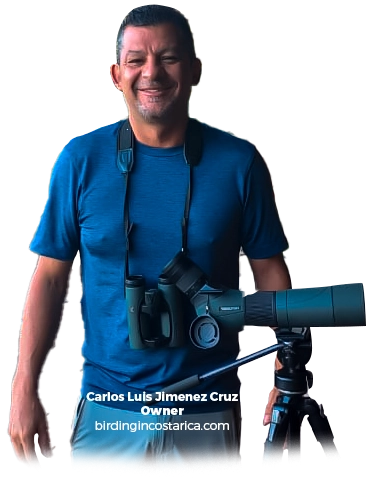
At Ave Nativa Tours, we specialize in crafting immersive bird watching and bird photography experiences in Costa Rica, spanning all the premier birding destinations across the country.
Partnering closely with top-rated birding lodges and hotels, we ensure our clients enjoy unforgettable encounters with the rich avian biodiversity of Costa Rica.
Our comprehensive services encompass transportation to diverse locales and the option of fully guided or self-guided tours, all tailored to your preferences.
With our deep-rooted local expertise and insider knowledge, we’re dedicated to curating the perfect bird watching adventure for you.
Moreover, whether your interests lean towards romance, family escapades, or broader exploration, we’re adept at customizing experiences to suit your unique desires.
Embark with us to unveil the captivating birdlife of Costa Rica – join Ave Nativa Tours!
Top 3 Costa Rica Birdwatching Tours: Explore the Best Birding Spots
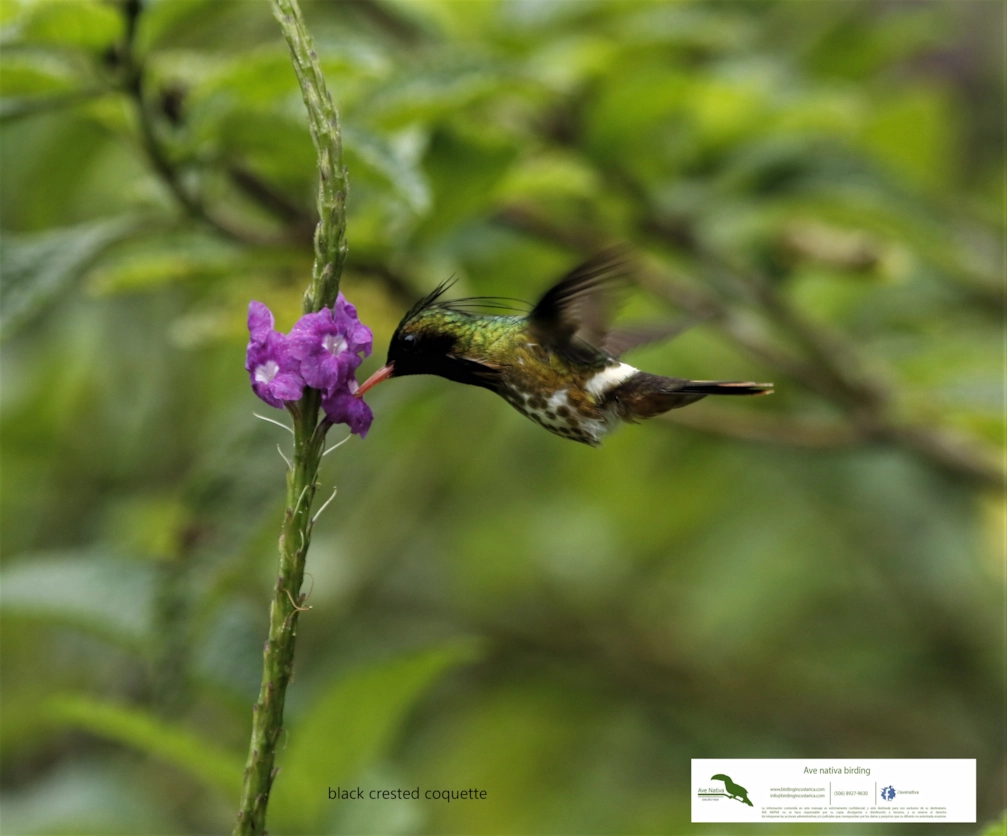
Costa Rica highlight (Birding at its best)
Puerto viejo, sarapiqui, heredia, costa rica..
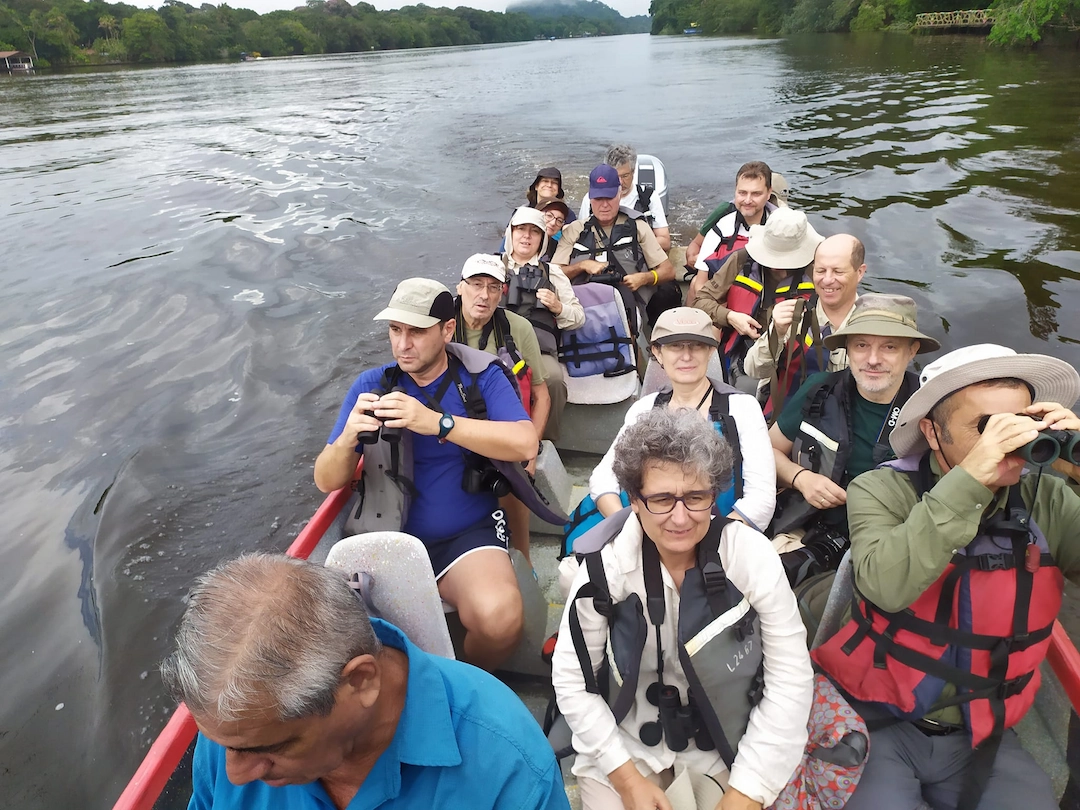
The Senior Adventure (Easy birding for Senior Travellers)
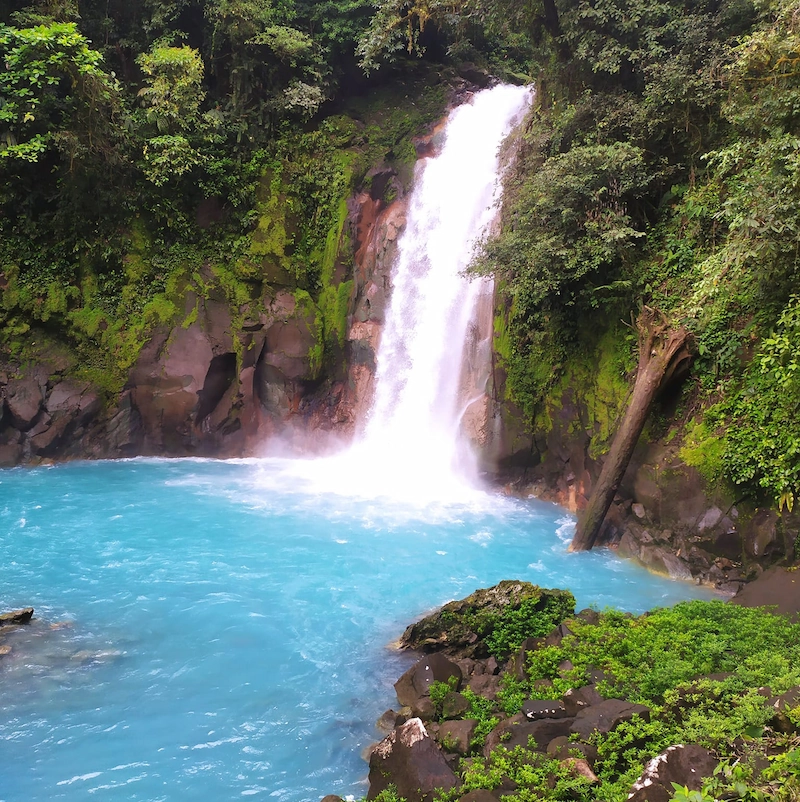
Costa Rica Central Region. (Middle Elevation Range)
We will helping you find your dream vacation, why choose us, we are professional planners for your vacations, our process, we complete every step carefully, book a tour.
Lorem ipsum dolor sit amet, consecte adipiscing elit, sed do eiusmod dolore magna
Payment Process
Confirmation, enjoy your trip, what our traveller says.

Best Destination
Discover the best destination, lates news and articles, subscribe our newsletter & get latest news, about ave nativa tours costa rica.
Discover the wonderful diversity of Costa Rica’s birds with our specialized birdwatching tours. From the majestic quetzals in the mountains to the colorful tropical birds in the jungle, we’ll take you to Costa Rica’s top birdwatching spots.
Other Pages
- Destination
Quick Links
- Privacy Policy
- Term Of Service
Book Your Holiday
(+506) 8927 9630
[email protected]
Our comprehensive tour to the most astounding birdwatching destination in all of Central America which is expected to record almost every endemic and near-endemic, including Resplendent Quetzal, Fiery-throated Hummingbird, Wrenthrush, Snowy Cotinga and many more.
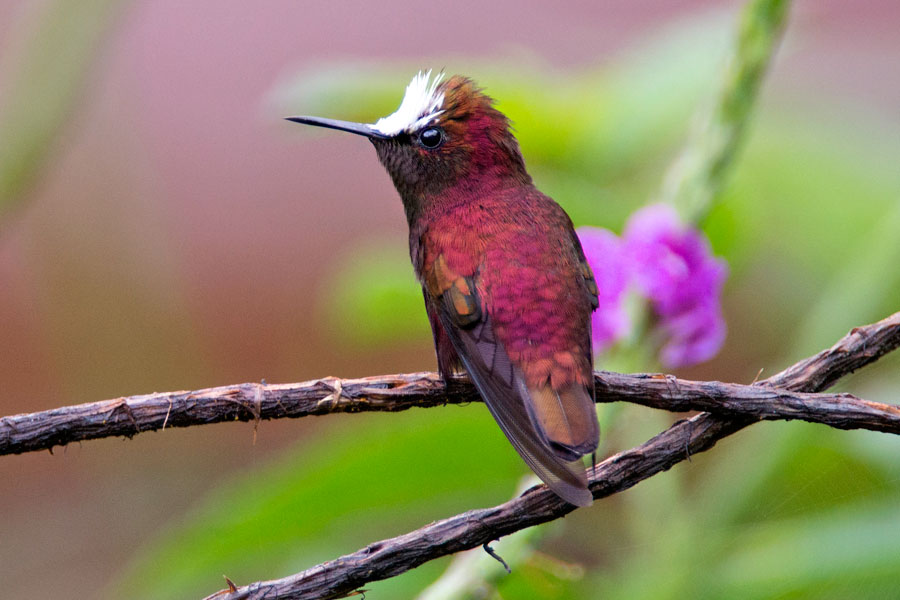
Tour Overview
Costa Rica – the Rich Coast! Over 870 species of birds have been recorded from this small country, renowned for relatively easy birding, comfortable accommodation, good infrastructure, and peaceful policies. Costa Rica with western Panama is a major centre of avian endemism, with nearly 70 species found nowhere else! Our Costa Rica birding tour visits all major habitats, sampling an astonishing variety of birds. We bird amazing Carara and Rio Tarcoles, which offer some of the best birding in the whole country. We visit cloud forests at Tapanti Reserve and high elevation forests and paramo of Cerro de la Muerte in search of Resplendent Quetzal, Silver-throated Jay and many others.
From the high mountains we descend to the incredibly bird-rich foothills of Braulio Carillo and La Selva which has some of the best Caribbean lowland forest remaining in Costa Rica with many unique birds for a whole new suite of birds. We finish on the slopes of the iconic Arenal volcano with antbird flocks, toucans, cotingas, owls and so much more. As many participants comment, each day is better than the last!
Dates & Prices
Dates & prices, what's included, tour price includes.
- All accommodation (basic to very good accommodation)
- Ground transportation (Air-conditioned bus with driver)
- 1 guide with 4 - 8 participants, 2 guides with 9 - 12
- All park, conservation and entrance fees
Tour Price Does Not Include
- Flights to and from San Jose
- Travel Insurance
- Items of a personal nature
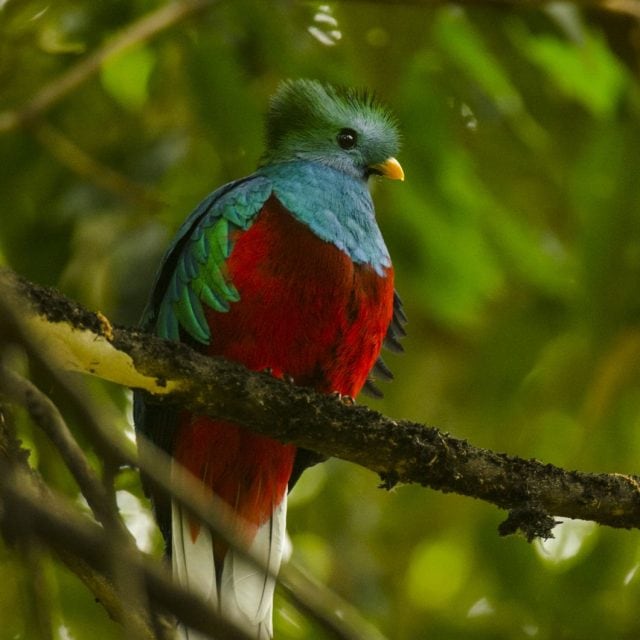
Day 1: Arrival in San José
Our Costa Rica birding tour begins with dinner and an orientation at our hotel. Participants arriving early can enjoy the beautiful hotel grounds, possibly finding Blue-crowned Motmot and several other species on the hotel grounds. Night in San José.
Day 2: Transfer to Carara
After an early walk around the hotel gardens, we head west to the Pacific coast and Carara National Park. This is the boundary between the tropical dry forest to the north and the tropical wet forest to the south. Consequently, it is incredibly diverse. We arrive in time for an afternoon outing to get familiar with some of the dry forest species, including Rufous-naped Wren, Yellow-naped Parrot, Turquoise-browed Motmot, Cinnamon Hummingbird, Scrub Euphonia, and the incredible Scarlet Macaw. Night near Carara National Park.
Days 3 & 4: Carara National Park
Carara National Park preserves a large tract of beautiful and bird-rich tropical semi- evergreen forest. It is an amazing place and birding can be marvelous. The site offers a wonderful array of woodcreepers, trogons, and manakins including the stunning Orange-collared, likely displaying when we are there. We could see several species of woodpeckers, flycatchers, antbirds, antwrens and antpittas— the possibilities seem endless! We may find American Pygmy Kingfisher by a woodland pool, or a Boat-billed Heron perched in a tree along the lagoon, or a Long-billed Gnatwren busily hunting insects—or a troop of coatimundis seemingly oblivious to our presence. We look for Baird’s Trogon, Black-hooded, Giant and Barred Antshrikes, Yellow-billed Cotinga, Golden-crowned Spadebill, and many more. We enjoy a boat trip in the mangroves along the Rio Tárcoles to look for the endemic Mangrove Hummingbird, Panama and Northern Scrub Flycatchers, Mangrove Black Hawk, and shorebirds and waders such as Roseate Spoonbill. We stay at a hotel only a few minutes from the preserve. We will also stop at a spot to watch American Crocodiles loaf along the river bank. Night near Carara National Park.
Day 5: Carara to San Isidro El General
We leave Carara early and drive south along the Pacific Coast. We make several stops on our way, keeping an eye out for specialties such as Snowy-bellied Hummingbird and Fiery-billed Aracari, we could encounter species such as Red-crowned Woodpecker, Pearl Kite and American Swallow-tailed Kite, whilst offshore Brown Boobies should be fishing. Leaving the coast we drive inland to San Isidro del General and onto our hotel. Here we encounter yet another suite of birds, such as Smooth-billed Ani, Orange-billed Nightingale-Thrush, Lesser Elaenia, Cherrie’s Tanager and Streaked Saltator, and a major attraction of this area, Turquoise Cotinga. Night in San Isidro El General.
Day 6: South Pacific
We start the day by visiting Los Cusingos, the name of Alexander Skutch’s farm, where we walk trails in the still relatively pristine lowland forest. There are many exciting possibilities here – Great Tinamou, Charming Hummingbird, White-crested Coquette, Bright-rumped Attila, Plain and Riverside Wrens, Golden-crowned Spadebill, Orange-collared, Blue-crowned and Red-capped Manakins, Baird’s and Black-headed Trogons, Dot-winged Antwren and Long-billed Gnatwren. Black-striped Sparrows sing their bouncing ball song, Orange-billed Sparrows forage in brush piles, Gray-necked Wood-Rails call from wet pastures, and Long-billed Starthroats visit tubular flowers. We look for ant swarms, which usually have several species in attendance – Gray-headed Tanager, woodcreepers including Cocoa, Tawny-winged and Ruddy, antbirds including Chestnut-backed and Bicoloured, even Roadside Hawk.
We spend the rest of the day searching for specialties here in the South Pacific lowlands. Flocks of swifts including White-collared, Chestnut-collared and Spot-fronted wheel across the sky, as does the solitary Lesser Swallow-tailed Swift. Olivaceous Piculets forage on thin branches, Garden Emeralds visit flowering trees, and we look for Yellow-green Vireo, Yellow-crowned and Spot-crowned Euphonias, Gray-headed Chachalaca, White-crowned Parrot, Tropical Gnatcatcher, Rufous-browed Peppershrike, Greenish and Yellow-bellied Elaenias, the superb Speckled Tanager and Blue Dacnis. Night in San Isidro El General.
Day 7: Transfer to the Talamanca Highlands
This morning we head off to the cloud forest and páramo of the Cordillera de Talamanca. Along the way we stop at locations for White-tailed Emerald, Fiery-throated Hummingbird and Red-headed Barbet, and visit the high paramo of Cerro de la Muerte for Volcano Junco and Timberline Wren. Then it is off our hotel in the highlands. Night in the San Gerardo de Dota area.
Day 8: Cordillera de Talamanca
Here, along dirt roads and forest trails passing among trees draped in epiphytes, we find a new suite of birds such as Ruddy Treerunner, Buffy Tuftedcheek, Black-capped Flycatcher, Long-tailed Silky-Flycatcher, Collared Redstart, Large-footed Finch, with luck Silvery-throated Jay. Our primary target is the magnificent Resplendent Quetzal, certainly one of the most beautiful birds in the world. Night Night in the San Gerardo de Dota area.
Day 9: Highlands to Orosi
We leave the highlands in the morning, stopping at La Providencia for possible Black-and-yellow Silky-Flycatcher and Wrenthrush, and head down to the town of Paraiso to tour an organic coffee farm for a quick tour of the premises, a cup of coffee, and some species we may have missed up to now – perhaps Crimson-collared Tanager, Buff-throated, Black-headed and Greyish Saltators, White-naped Brush-Finch, White-eared Ground-Sparrow, Orange-billed Nightingale-Thrush and Garden Emerald. We then head to the nearby town of Orosi. Night near Orosi.
Day 10: Tapantí National Park and on to the Caribbean lowlands
We depart early for the Tapantí Reserve. The Reserve is a great example of middle to high elevation Caribbean forest, and we look for Black Guan, Brown-billed Scythebill, Streak-breasted Treehunter, Black-bellied Hummingbird, Green-fronted Lancebill and Chestnut-headed Oropendola along with Golden-bellied Flycatcher, Common Bush-Tanager, Spangle-cheeked Tanager, Slate-throated Redstart and Prong-billed Barbet. After a productive morning, we head further downslope, but travel via magnificent Braulio Carrillo National Park. At a vervain hedge, we look for Violet-headed Hummingbird, and with great luck Snowcap. In the park, we walk trails looking for specialties such as Lattice-tailed Trogon, Ornate Hawk-Eagle, Black-headed Nightingale-Thrush, Black-and-yellow Tanager, and several antbirds and antwrens. Night at La Quinta Sarapiquí Lodge.
Day 11: Caribbean Lowlands
We make the lodge our central point for birding several diverse locations in some of the richest areas in Costa Rica. During our stay, we visit La Selva, a wonderful tract of wet lowland rainforest where some 400 species of birds have been reported. We’ll see a fine array of neotropical fauna—tinamous, motmots, puffbirds, cotingas, trogons, toucans, chachalacas, maybe ant-followers at an ant swarm or a Great Curassow walking stealthily on the forest floor, lots of tanagers, as well as monkeys and who knows what else! We will also keep and eye and ear out for the endangered Great Green Macaw. Both its size and brilliant plumage make it a very impressive bird. Night at La Quinta Sarapiquí Lodge.
Day 12: Transfer to Caño Negro
After a final morning of birding, we head north toward the Caño Negro Wildlife Refuge near Costa Rica’s northern border. We will make a few opportunistic stops along the way before arriving at our hotel. The wetlands of this area provide refuge for large numbers of a multitude of species during the dry season and the wetlands have been recognized for their international importance. Night in Caño Negro.
Day 13: Caño Negro and transfer to Arenal
Our highlight today will be a morning boat tour on the river and wetlands of this area. We can expect to see an abundance of waterbirds, including Black-bellied Whistling-Ducks, several herons and egrets, up to five species of Kingfishers, and the massive Jabiru stork. We will also search for several other specialties of this area, including Black-collared Hawk, Nicaraguan Grackle, and Lesser Yellow-headed Vulture. After this delightful experience, we make our way to our home for the next three days on the slopes of the Arenal Volcano. Night at Arenal Observatory Lodge.
Day 14 & 15: Arenal area
The rainforest at the base of the volcano supports a rich assortment of birds typical of the Caribbean foothills and we should find colourful motmots, noisy raucous parrots in the upper canopy, trogons perched quietly at mid-canopy, Rufous-tailed Jacamars sallying out to catch butterflies, and spectacular Collared Aracaris and Keel-billed Toucans. Odd grunting noises come from Masked Tityras. Mammals include Three-toed Sloth and Spider Monkey. If it is clear, the view of the volcano is breathtaking!
We spend our days exploring the trails and along roads through forest and second-growth woodlands of this area, looking for Caribbean-slope specialties. If we are fortunate, we will encounter a swarm of army ants marching across the forest floor with their attendant army ant followers – antbirds, antshrikes, antwrens, woodcreepers, even hawks. White-necked Puffbirds and Long-tailed Tyrants may be perched conspicuously on exposed dead snags, manakins may be displaying at their leks on the forest floor, and mixed-species flocks could pass by with a dozen or more species in each flock - foliage-gleaners, flycatchers, dacnis, tanagers, warblers, woodpeckers and more. Nights at Arenal Observatory Lodge.
Day 16: Transfer from Arenal to San José
We spend a final morning enjoying the feeders and grounds of the lodge, we travel from Arenal down the Caribbean slope, across the lowlands and over the mountains to the Central Valley. There will be several key stops along the way depending on what we have seen so far. We may stop in at more hummingbird feeders for scarcer hummingbirds such as Coppery-headed Emerald, a Costa Rican endemic, and Purple-throated and White-bellied Mountain-Gems. We arrive at our charming hotel for a final dinner to celebrate a rewarding an productive journey through this beautiful country. Night near the San José airport.
Day 17: Departure
Our tour concludes today and you can transfer to the airport anytime today for flights home.
What to Expect
The daily travel schedule on our Costa Rica birding tour will vary to account for weather, bird species and habitat. Expect optional early morning, before-breakfast walks on most days, as well as late evening viewing. Almost without exception it is best to begin birding at daybreak in the tropics, when bird activity and song are at their peak. In forest regions, we concentrate on “edge” birding until the light is sufficient to enter forest trails. Often bird activity slackens off by noon, when we may return to our hotel for lunch and a short siesta. On occasion, picnic lunches will be prepared for us, maximizing our time in the field and allowing us a more flexible schedule.
We bird again in the coolness of the late afternoon, occasionally staying out after dusk to search for nightbirds. Weather conditions on the trip will range from hot to cool; mostly, it will be warm to hot with a mixture of sun and cloud. Our time at Carara National Park will be hot and dry. Cerro de la Muerte and our accommodation in the highlands at Paraiso Quetzal will be cool, and could be windy and wet. The Caribbean lowlands at La Selva are likely to be hot and humid. Walking conditions range from easy to moderate; if there has been rain, then trails could be muddy. Our maximum elevation on this tour is Cerro de la Muerte, where we drive up to 3,451 m (11,322 ft).
Strong, waterproof footwear is advised and a light rain-jacket and waterproof hat are often essential. There will be opportunities for photography, as many birds and other wildlife allow close approach and we visit several excellent feeder stations. Bring mosquito repellant - mosquitoes are not usually a problem but can be active after rain. In the evening we eat at the hotel or lodge where we are staying. At this time we discuss the day’s activities, review the list of birds and other wildlife that we have seen and heard, and prepare for the next day.
Watch more tour videos and subscribe to our YouTube Channel
Featured Wildlife
While we cannot guarantee sightings of the birds or mammals listed below, we believe that encountering these species is quite likely during this tour.
- Resplendent Quetzal
- Scarlet Macaw
- Coppery-headed Emerald
- Spectacled Owl
- Snowy-bellied Hummingbird
- Fiery-billed Aracari
- Volcano Junco
- Black-crested Coquette
- Turquoise-browed Motmot
- Black-hooded Antshrike
- Black-and-yellow Tanager
Past Tour Checklists
View the list of birds and other wildlife we encountered on our past tours.
- Costa Rica 2023 species list (ebird)
- Costa Rica 2020 species list
- Costa Rica 2019 species list
- Costa Rica 2016 species list
- Costa Rica 2015 species list
- See More...
- Costa Rica 2014 species list
- Costa Rica 2012 species list
- Costa Rica 2011 species list
- Costa Rica 2009 species list
- Costa Rica 2008 species list
- Costa Rica 2007 species list
- Costa Rica 2006 species list
- Costa Rica 2004 species list
- Costa Rica 2002 species list
Trip Reports & Inspiration
Tour reviews, you might also like.
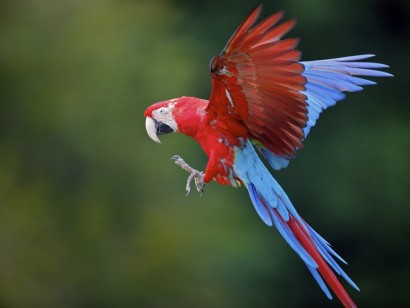
Costa Rica Sampler

Costa Rica: Caribbean Mountains to

Belize & Tikal
- Conservation
- In the media
- Birding blog
- How to book
- Booking FAQs
- Plan your trip
- Land Tour FAQs
- Insurance FAQ
WHERE WE GO
- Mexico & Central America
- South America
- Australia & New Zealand

- Terms of Use
- Privacy Policy

Birdwatching Costa Rica
FROM: $ 1180
FROM: $ 1454
FROM: $ 1588

1 Day Birding Tour Quetzal’s Paradise and San Gerardo de Dota
Highlands, Tropical Cloud forest, San Gerardo de Dota

Birding Escape IX – 13 Days 12 Nights
Central Valley - Northwest Pacific - Central Pacific

1 Day Tour Sarapiquí
Northern Lowlands

1 Day Tour Santa Rosa National Park
Northwestern Pacific, Tropical Dry Forest, Guanacaste

1 Day Tour Braulio Carrillo & Irazú

Birding Escape I – 5 Days 4 Nights
Caribbean Foothills and Cloudforest Highlands of Talamanca

Birding Escape II – 5 Days 4 Nights
Monteverde Area and Central Pacific Lowlands Carara.

Birding Escape III – 5 Days 4 Nights
Central Valley Highlands and Caribbean Lowlands
The Best Personalized Tours in Costa Rica
Birding in Costa Rica is an extraordinary experience, with 812 species recorded with voucher to date (Official List of the Birds of Costa Rica 2006 by the Scientific Cometee of the Ornitological Association of Costa Rica - published in April 2007) Costa Rica offers to birders great birdwatching opportunities within relatively short distances, involving very diverse habitats in the six ornitologic regions of the country, from sea level to high mountains above 11.000 f.a.s.l. Exciting guided tours and itineraries take you to wonderful locations where you are able to enjoy the best of birding and nature. Our staff will be happy to assit you with your technical questions about birds, locations, and other details, to make of your trip the best birdwatching experience you could possibly have in this neotropical country.
Why Choose Us?
We are a tour operator which has been arranging programs for birdwatchers from around the world since 1991. We help you to set the ideal itinerary considering your main requirements as well as the birds you want to watch during your journey. We provide packages including all services from your arrival until your departure from Costa Rica, as well as one day birding tours . Our services are ranged from medium to high category in lodging and meals depending on your needs; we also provide transportation and a knowledgeable birding guide who will take you to the specific spots for you to watch or take a picture of the target birds. Let us know the interests of your journey, and we will be glad to advise and assist you planning the itinerary that fits better to fulfill your expectations.
“There is nothing in which the birds differ more from man than the way in which they can build and yet leave a landscape as it was before.”
Visit our Websites

- About Costa Rica
- Birding Trips
- Near Liberia
- Near San Jos�
- Photo Gallery
Intense birding for one week thru the most popular spots of the country or a more comprehensive trip that covers a lot of habitats in two weeks
Birding Near Liberia
The best options for birding day trips if you are visiting the Province of Guanacaste. A great blend of habitats with incredible diversity
Birding Near San Jos�
The most remarkable birding spots near the Central Valley such as rain forest, paramo and cloud forest at glance from the city of San Jose
Photo & video gallery
Enjoy the fascinating tropical colorful avifauna with photos and videos taken during our birding trips and day tours
LET�S GO BIRDING, DAY BIRDING TRIPS and ITINERARIES around Costa Rica. Vast knowledge in organizing and leading trips along with a background in Ecotourism helps us to give personalized attention and provide unforgetable experiences.

Natural Discovery Costa Rica

Our Costa Rica Bird Watching & Photography Tours (2024 & 2025 Small Group Packages)
Scheduled small group packages, quest for the agami costa rica – birding & birding with a camera.
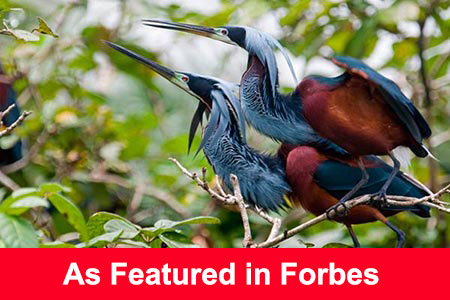
Dates: May 28 – June 9, 2024 Days: 10 nights | 11 Days Focus: Birding, Nature, History
Target List Trek Costa Rica – Birding & Birding with a Camera
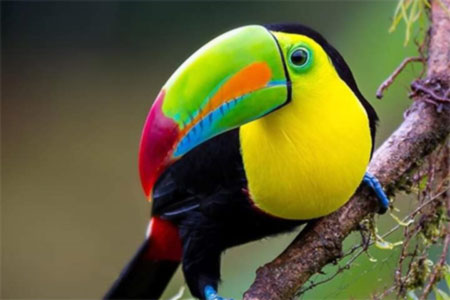
Dates: March 16 – 26, 2025 Days: 9 Nights | 10 Days Focus: Bird & Nature Photography
Tracking the Trogons Costa Rica – Birding & Birding with a Camera
Dates: January 7 – 17, 2025 Days: 9 nights | 10 Days Focus: Birding and Nature
King Vulture Venture Costa Rica – Bird Photography
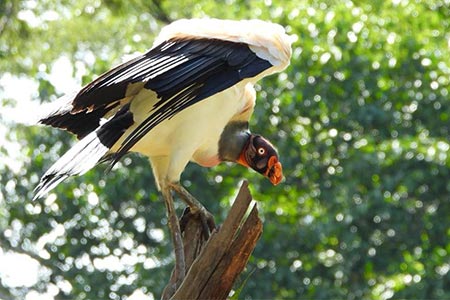
Dates: Feb 10 – 24, 2025 Days: 13 Nights | 14 Days Focus: Bird & Nature Photography
Hunt for the Harpy Eagle Panama – Birding & Birding with a Camera
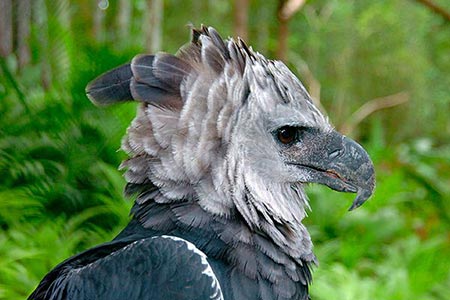
Dates: Multiple. Please inquire. Days: 8 Nights | 9 Days Focus: Birding and History
Search for the Elusive Birds Costa Rica – Birding & Birding with a Camera
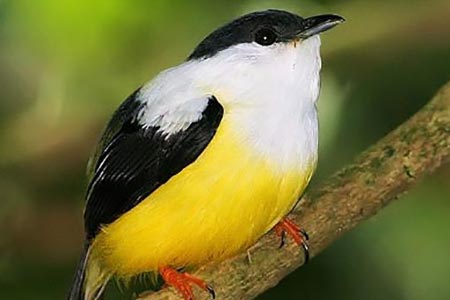
Dates: October 14 – 22, 2024 Days: 8 Nights | 9 Days Focus: Birding, Nature, History
Birding Station to Station Costa Rica – Birding & Birding with a Camera
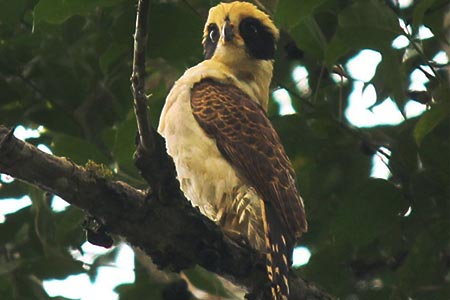
Dates: November 29 – December 11, 2024 Days: 11 Nights | 12 Days Focus: Birding and Nature Photography
Hunt for the Hummingbirds Costa Rica – Birding & Birding with a Camera
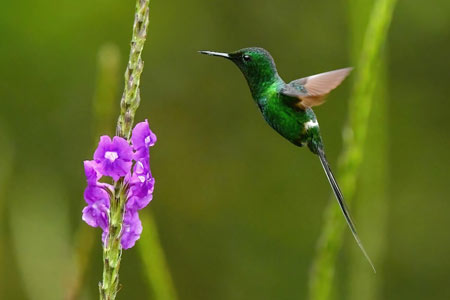
Dates: April 01 – 13, 2025 Days: 12 Nights | 13 Days Focus: Birding & Bird Photography
Quest for the Agami Heron
The Quest for the Agami Heron package is a 10 night – 11 day bird watching trip to Costa Rica , perfect for birders, bird and nature photographers, and general naturalists. This incredible journey gives travelers the chance to see some of Costa Rica’s rarest and most exciting bird species, plus, for the naturalist in all of us, the opportunity to experience one of nature’s most special experiences, viewing of the ancient Leatherback Sea Turtles. It’s hard to decide who is the star of this tour, the Agami Heron or the Leatherback Turtle, because having the opportunity to see both in one trip is truly special. Guests will stay in a combination of rustic research centers, birding lodges, and full service hotels featuring amenities like spas and swimming pools. Over 11 days of travel, the group will visit the top Costa Rica’s bird watching spots .
With your private naturalist birding guide, you’ll travel from the highest mountain peaks in Costa Rica, the Talamanca Mountains, Savegre Lodge and Quetzal country, to the lush green valleys of Turrialba, at the foothills of the Turrialba Volcano, for a chance to see the lovely Snowcap Hummingbird, then on to the sultry Caribbean Lowlands, exploring dense tropical rainforests and peaceful canals. Here guests will have their chance for the Agami Heron and Leatherback turtles. The trip also includes a visit to the spectacular La Selva Biological Station. An excellent place to experience over 400 species of birds and 125 species of mammals. If you enjoy reptiles and amphibians, La Selva offers a wonderful chance to see and photograph a wide array of species. The journey continues as the group heads to the Arenal Volcano region and a stay at the Arenal Observatory Lodge. The combination of some of the best birding in the country, and the most spectacular view of the majestic Arenal Volcano is simply amazing. Traveling with your expert birding guide on this small group trip to Costa Rica will be an experience you will never forget.
Costa Rica Bird Photography Hot Spots
Few places in the world offer the opportunity to see and photograph so many different species of birds, in a ten day period, as Costa Rica. Our superb ten day birding and photography tour is designed to take guests through five distinct wildlife habitats, giving bird watchers and photographers the chance to see and get the best shots of the most beautiful birds in the country.
The journey will begin in the Central Valley for a chance to meet your expert birding guide and an opportunity to warm up your cameras and binoculars in the gardens of the Hotel Bougainvillea. With 10 acres of lush tropical gardens, your birdwatching and photography can begin right away. The next morning the group heads towards the Caribbean Lowlands, but will stop for a chance to experience one of Costa Rica’s top nature sites, the La Paz Waterfall Gardens. If you love hummingbirds, here is a chance to see and get photos of the Coppery Headed Emerald (one of the 2 species of hummingbirds endemic to only Costa Rica), and the Black-Bellied Hummingbird, a beautiful species wanted by most bird watchers.
After La Paz, your day continues as you reach the Tirimbina Lodge & Reserve. This location is a great place to see the Great Green Macaw. Your tour will also include a visit to The La Selva Biological Station, for a chance to see the Pale Billed Woodpecker or the Black and White Owls (among more than 400 species recorded) and in the afternoon a visit to Cope’s Gardens, a private reserve that is a “must visit” location for bird watchers and photographers. There are gardens and feeders to attract a wide variety of species. Your naturalist guide will help you spot the best species of each area.
The birding tour continues to the foothills of the Arenal Volcano and a visit to the Arenal Observatory Lodge. The private reserve is a fantastic spot for forest species, as well as bird watching and photography at the feeders and in the tropical gardens. It’s not just about birds at this beautiful location, there is a wide array of wildlife on the grounds and in the surrounding forest. From Arenal it’s on to the highlands of Monteverde and the lush cloud forest of the National Park. The target list includes the Resplendent Quetzal, the Three-Wattled Bell Bird, Black Breasted Wood Quail, Violet Sabrewing Hummingbird, and many more species. From the cool cloud forests the birding tour continues to the Pacific Coast for birding and photography at Carara National Park and the Tarcoles River Reserve. This is Scarlet Macaw country, you’re sure to get some great sightings and pictures in the Park or around your hotel.
We hope you will join us for a chance to see some life birds and take your best pictures in a combination of natural forest settings, viewing platforms and feeders, and private gardens. This tour is designed for photographers and bird watchers of all skill levels. You’ll be lead by one of the top birding experts in the country, so have your cameras and binoculars ready, you don’t want to miss a single species.
Tracking the Trogons
Costa Rica is home to ten species of Trogons, three of which are endemic (Bairds, Orange-Bellied, and Lattice-Tailed, found only in Costa Rica). This splendid 9 night – 10 day package will take guests through the best birding areas of Costa Rica, in search of all ten species of Trogons (and much more, of course). The widespread habitats of Trogons, from the Central Valley to the Caribbean Foothills of Arenal, the cloud forest of Monteverde to the Central Pacific and Carara National Park, creates a fantastic road map for seeing all the top bird species in Costa Rica.
In Braulio Carillo National Park and La Selva Biological Station you’ll search for the Slaty-Tail, Lattice-tail, Black-throated, and Gartered Trogons. When you reach Arenal, the group will be on the lookout for the Orange-Bellied, Gartered, and Black-Throated Trogons. On to the cloud-forests of Monteverde and of course, your expert birding guide will be looking for the largest and most beautiful Trogon, the Resplendent Quetzal. The cloud forest is also home to the Orange-Bellied Trogon, so have your binoculars ready for this species as well. Finally, the group will visit Carara National Park, located in the Central Pacific of Costa Rica where you’ll be searching for the Bairds and Black-Headed Trogons. The toughest Trogon will be the Elegant Trogon, which is rarely seen outside of Guanacaste but some sparse sightings exist in other areas. Your Naturalist Guide will be on the look-out for this hard species.
Along with the Trogons, your expert Birding/Naturalist Guide will find Hummingbirds, Raptors, Parrots, Toucans, Tanagers, Warblers, Manakins, Antbirds, Wrens, Sparrows and all the most wanted species in Costa Rica. If you enjoy all wildlife, not just birds, you’ll have a chance to see a wide variety of reptiles and amphibians, and mammals including monkeys, sloths, bats, peccaries, agoutis, coatis, opossums, raccoons, deer, and hopefully a tamandua, a tyra, and maybe one of Costa Rica’s elusive cats.
Accommodations on this bird watching tour range from full service hotels, to birding lodges, and even includes a biological station. Each hotel was chosen to provide the very best birdwatching at each location. Your expert birding guide will be with you every step of the way as you explore the different National Parks, Reserves, gardens, and feeders. Don’t be surprised to make stops along your drives as well, to check out the off the beaten track locations that only your guide knows about. We hope you can join us on this fantastic journey and experience some of the best birdwatching of your life.
Costa Rica Birding & Photography at its Best
Costa Rica has been a favored destination of birders and wildlife photographers for many years. National Geographic and the Discovery Channel have many fine series and specials showcasing the natural wonders of Costa Rica. Now we’re giving you the opportunity to get into the field, binoculars and cameras in hand, searching for and photographing Costa Rica’s top bird species .
This amazing journey will take you from the Caribbean Foothills of Arenal, to the Caribbean Lowlands near the border of Nicaragua, through the lush valleys of Turrialba, the misty highlands of the Talamanca Mountains and the warm jungles of the Central Pacific.
From hummingbirds to herons, toucans to tanagers, and parrots to puffbirds, we’ll be tracking down the top species of each area to give you the chance to get your top shots and build your life list.
Your professional expert birding guide will be with you every step of the way, helping you find your most wanted birds. If reptiles and amphibians or mammals are more your interest, we can help you discover and photograph them too. With an exceptional array of habitats, this journey gives each guest a chance to not just experience tropical rainforests, mid-elevation foothills, lowland secondary forest, highlands, and transitional forest; but also a wide variety of birding and photography environments.
Somedays guests will bird watch and take photos in a natural forest setting, walking the park trails, looking for those elusive species. At other locations birding and photography will be from observation decks, with natural feeders.
One of the highlights of the trip is a chance to take pictures and bird watch from a secret blind, set up to get amazing views and photos of the remarkable King Vulture. At several private gardens, guests can enjoy the feeders as toucans, tanagers, parakeets, honeycreepers and more stop by for a bite. If you love photography, and you love birds, this tour will give you an experience you’ll never forget.
Search for the Elusive Birds
This 8 night – 9 day birding and nature tour in Costa Rica gives avid bird watchers and bird photographers the chance to see some of Costa Rica’s rarest and most exciting bird species. With your private naturalist birding guide, you’ll travel throughout the country on this small group trip to Costa Rica and experience nature at its best.
Along with a chance to see many different birds, this itinerary features some classic Costa Rica activities, giving guests a chance to immerse themselves in the culture of Costa Rica. Enjoy cooking classes with a Costa Rica chef, and prepare local specialties together, visit Guayabo National Park, the only true archeological site in Costa Rica, spend time at CATIE, a very important research center for tropical plants and fruit trees, experience one of nature’s greatest miracles, the nesting of the Green Sea Turtles in Tortuguero and visit the conservation museum, set up to aid the conservation efforts to protect these endangered creatures. With a combination of national parks, an interesting look at conservation, birdwatching, and all the wildlife of Costa Rica, our private bird watching tour is the perfect choice for guests with all types of interests.
The lodges on the Elusive Birds package include rustic birding lodges, and full service hotels. Your expert birding guide will be with you every step of the way to enhance your experience. He’ll help you spot the top birds and animal species, and provide interesting commentary about the history and culture of Costa Rica. We’d love to have you join us on this unique Costa Rica birding tour.
Birding Station to Station
Our November birding adventure “Birding Station to Station” is an exceptional opportunity for guests to visit a wide array of bird habitats in Costa Rica.
With your private birding guide you’ll travel to six different eco-zones from the Talamanca Mountains, to the Caribbean Foothills, and Lowlands, and the incredible Forests of the Central Pacific.
Along the way, guests will visit several private gardens, and the world renowned Los Cusingos, the home of Alexander Skutch, the father of conservation in Costa Rica.
The trip is capped off by visits to the two top Biological Stations in the country. This adventure is an exceptional opportunity for birders, bird photographers, and nature lovers to gather many endemics for their life lists and to get those once in a lifetime photos.
Awards & Accolades

About Costa Rica Focus
Costa Rica Focus is a birding tour company that offers customized Costa Rica birdwatching tours for individuals or groups of people and guided by a knowledgeable birding expert who will help you spot and learn about the beauty of the birds of Costa Rica. Let’s talk about your Costa Rica birding vacation!
Quick Birdwatching Links
- Costa Rica Bird Photography
- Our Naturalist Guides
- Birds of Costa Rica
- Bird Checklist
- Privacy Policy
Contact Costa Rica Focus
(888) 788-4272
- Follow Follow

Summer in Costa Rica
July 17 - 24, 2024
- Full Itinerary
- Photo Gallery
Travel Details
- Trip Reports
- Know Before You Go
- Other Trips You May Like
Few places rival Costa Rica’s ecological diversity. Over a quarter of the country is protected lands, boasting 850 bird species and 200+ mammals. Why July? Resident birds are just fledging their young, and rains bring life to so many life forms. Afternoon clouds cool down temperatures and we spend time in the mountains! We visit a wonderful mix of habitats, giving you the chance to see numerous species. Explore the lush Monteverde cloudforest in search of the dazzling Resplendent Quetzal, lovely Long-tailed Manakin, and bizarre Three-wattled Bellbird. Immerse yourself in tropical wonder at Arenal Observatory with a volcano in view and Monteverde Mountain Lodge with birdy and accessible trails. Finally, spend time at Carara National Park near Tarcoles. Explore both sides of the Continental Divide on this fun summer Costa Rica birding tour—what a great way to immerse yourself in Costa Rica’s stunning biodiversity and observe an exciting list of birds and other wildlife.
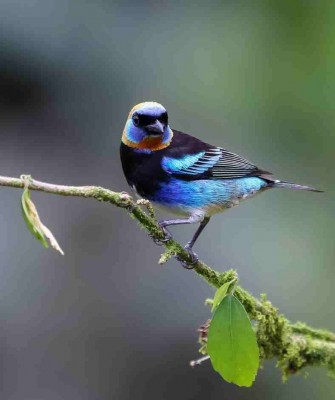
- "Our guide was absolutely outstanding. Extremely knowledgeable - great spotter!, kind, generous, funny. He knows the birds, the country, the field trips, the locations. He had many surprise destinations for us with beautiful scenery and lots of birds." — 2023 Traveler
- "The trip met my expectations exactly. I wanted to see lots of interesting birds and take some pictures, both of which I was able to do...It was extremely well organized and there were no logistical problems at all." — Jim Majure, 2023 Traveler
- "Magical - trip of a lifetime! An amazing exploration of beautiful places that one doesn't often hear about in CR. An abundance and diversity of birds and wildlife." — 2023 Traveler
- "Amazing! If I’d seen a fraction of the birds we saw I would’ve been thrilled..." — 2023 Traveler
- “Experienced Costa Rica from coast to coast. Had amazing guides having incredible knowledge of the birds, wildlife and fauna in Costa Rica. These guys were the best guides I’ve ever had in knowledge of birds, butterflies, habitats and general knowledge of Costa Rica. Also, they were very personable and caring to the participants.” — Caroline DePalma, 2023 Traveler
- “Superb - Birds, Bugs, Blooms, Butterflies and Best Guides! Hard to list all the highlights…Where would I start? The Great Potoo? The American Pygmy Kingfisher? The Three-Wattled Bell Bird? The Hummingbirds? The boat trips. The Eyelash Viper. The Bark Scorpion in our bathroom? How in the name of heavens did Johan and Robert find all those birds? Incredible guides! They kindly adjusted to the varied speeds and limitations of the group members. We were blessed.” — Janet Barrett, 2023 Traveler.
- “A varied and very enjoyable look at several different habitats in a country I knew little about before going there. I had three "target birds" - tiger heron, sun bittern, and swallow-tailed kite - and saw all three of them well. We had two excellent boat trips, on the Cano Negro wetlands and the Tarcoles River estuary. Saw great birds and other wildlife close-up.” — Adrienne Lovelock, 2023 Traveler
Tour Highlights
- Relax at the beautiful Hotel Bougainvillea upon your arrival; bird their 10-acre award winning botanical garden where birds and beautiful sculptures mingle
- Search for hummingbirds, trogons, and mammals too, from Monteverde Mountain Lodge, nestled in lush cloud forest
- View the Arenal Volcano right from your balcony!
- Admire lowland primary rainforest at La Selva Biological Station
- Stay cool up in the mountains—explore Monteverde and Santa Elena Cloud Forest Reserves in search of Resplendent Quetzal, Northern Emerald-Toucanet, Collared Redstart, and Azure-hooded Jay
- Visit famous Carara National Park to see stunning Scarlet Macaw and secretive antbirds
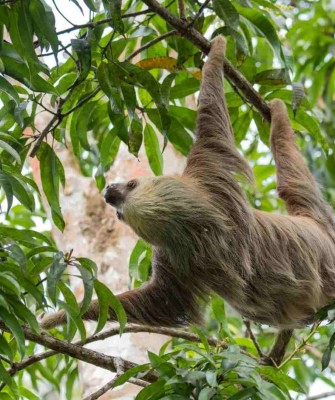

Trip Itinerary
Itineraries are guidelines; variations in itinerary may occur to account for weather, road conditions, closures, etc. and to maximize your experience.
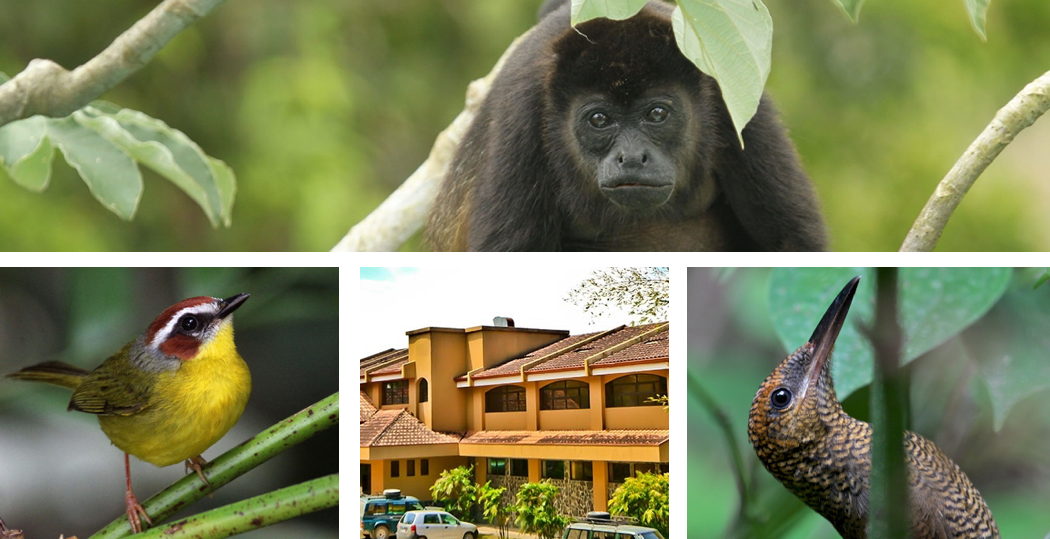
Wed., July 17 : Arrivals in San Jose | Hotel Bougainvillea
Bienvenido a Costa Rica! Please plan to arrive today in San José by 5:00 PM so you can join our welcome dinner and orientation. You are met at the airport for a transfer to our hotel in the hills of the historic suburb of Heredia. The Bougainvillea hotel is a family-owned and operated hotel with a welcoming atmosphere; fresh-cut flowers from the 10-acre garden, and original paintings and sculptures by leading local artists adorn the interior. Massive beamed ceilings, wood paneling, and a fireplace all contribute to the warm feeling of a country inn. And, there are always great birds to greet you as you stroll trails through the garden. Tonight we gather to enjoy a welcome dinner and the chance to meet your guides and travel companions. Accommodations at the Hotel Bougainvillea (D)
Thurs., July 18 – Sat., July 20 : La Selva Biological Station | Arenal Observatory Lodge | La Fortuna
We leave early today to head to the lowlands of Sarapiqui, on our way to Arenal—well worth a stop. Enjoy a visit to one of the world’s premier biological stations as we seek out some extraordinary birds. We’ve even seen Great Tinamou nesting here! We then travel west to La Fortuna. At an elevation of about one thousand feet, we settle in to awesome digs at Arenal Observatory Lodge and and enjoy visits to the nearby town of La Fortuna feature Caribbean foothill rainforest. Due to the perpetually mild and wet climate, this habitat is particularly rich in fruit-eating birds such as toucans, oropendolas, and tanagers. Ant swarms are also a big feature. Most of Costa Rica's obligate antbirds inhabit the understory of this rainforest. Arenal Observatory Lodge is a particularly comfortable lodge from which to explore this habitat. There is a beautiful terrace that looks upon the currently dormant Arenal Volcano and an elaborate set of fruit feeders. Collared Aracari, Yellow-throated Toucan, Montezuma Oropendola, and Black-cheeked Woodpecker all squabble over the tasty morsels of papaya, banana, and other fruit on offer. Once the larger birds have had their fill, tanagers such as Crimson-collared, Emerald, and Bay-headed often make a pass at the fruit. On the forest floor, there is often Gray-chested Dove, Black-striped Sparrow, and Great Curassow picking off the scraps from above. The lodge grounds also feature lovely flower gardens and thoughtfully placed fruiting trees (mostly Ficus), which attract many birds from the surrounding forest. Row upon row of flowering blue porterweed attract Black-crested Coquette, Brown Violetear, Green Thorntail, Violet-headed Hummingbird, and Bronze-tailed Plumeleteer. Wide, carefully maintained, and gently sloping forest trails offer fantastic birding opportunities. Every day is different—even every hour is different! Some of the birds that regularly make an appearance include Dull-mantled Antbird, Thicket Antpitta, Broad-billed Motmot, Semiplumbeous Hawk, and Black-and-yellow Tanager. For those that happen upon an ant swarm, antbird species such as Bicolored, Spotted, and Ocellated Antbird are possible. During our days here, we explore both in and around the lodge grounds and take local, off-site field trips too. Outside the grounds of Arenal Observatory Lodge, the entrance road and nearby national park offer great birding. White-faced Nunbird, Slaty-tailed Trogon, Rufous Mourner, and Long-tailed Tyrant are all regular along the 'peninsula road.' The more open pastures can have the spectacular White-throated Magpie-Jay, a species usually associated with the dry forests of the Guanacaste region. The small river that crosses underneath the road often has Black Phoebe and (for those who are lucky) Bare-throated Tiger-Heron. Down at La Fortuna, Sendero Bogarin features secondary growth forest crisscrossed by streams. The birds here are similar but different from those found at Arenal Observatory Lodge. Uniform Crake, White-throated Crake, and Russet-naped Wood-Rail are all common here, although they are not always easy to see. The brushy thickets hold several territories of Black-throated Wren, Fasciated Antshrike, Keel-billed Motmot, and Rufous-tailed Jacamar. Among flocks of tanagers, one sometimes finds the tiny Olivaceous Piculet, the smallest woodpecker in North America. The owner of the property often has a staked out Black-and-white Owl roost, as well as multiple spots to look for both Brown-throated Three-toed and Hoffmann's Two-toed Sloths. After birding here, there is a nice chocolate shop in town with locally sourced chocolate, coffee, and fresh baked goods! We also enjoy some prized feet-up on the balcony of your room time, looking off to the volcano …. Accommodations at Arenal Observatory Lodge (B,L,D)
Sun., July 21: Higher into the Mountains | Monteverde | Children’s Eternal Rainforest
We leave Arenal this morning for another fabled Costa Rican destination. Traveling up a gradient of elevation allows us to bird in varied habitats—great fun! Monteverde is a treasured location in Costa Rica where many birders get their first feel for birding lush montane forests. Remote, Monteverde has retained its charm despite its popularity and is still an excellent place for birding. We stay three nights to access several reserves. Plus, we have great birding right outside our door on the lodge grounds! Our hotel, the Monteverde Mountain Hotel, sits amongst 15 acres of private forest at 4,500 feet above sea level. This mountain hotel has cozy rooms set in nicely kept grounds and features hummingbird feeders at the veranda. This afternoon, we enjoy birding the Children’s Eternal Rainforest, a special place. We may see Rufous-capped Warbler, Rufous-and-white Wren, and with some luck more elusive species like Northern Barred-Woodcreeper and Orange-billed Nightingale Thrush. Watch for Swallow-tailed Kite on the move overhead in the late afternoon. Our dinner is well-prepared local Costa Rican food at the hotel. Accommodations at the Monteverde Mountain Hotel (B,L,D)
Mon., July 22 : Monteverde Cloudforest Reserve | Curicancha Reserve
This morning we visit the famous Monteverde Cloud Forest Reserve, one of the best places to find Resplendent Quetzal. Other lush highland forest species include Black Guan, Gray-breasted Wood Wren, Black-faced Solitaire, and with luck Silvery-fronted Tapaculo. Monteverde is a great place to spy a mixed flock, with Spotted Barbtail, Buffy Tuftedcheek, and Ruddy Treerunner probing bromeliads and mossy tree limbs while Spangle-cheeked Tanager search for fruit in the canopy. This place is also wonderland for botany fans. This afternoon we visit Curicancha Reserve, a small reserve (200 acres) but a true gem. Here, we get another chance to see Resplendent Quetzal, alongside Three-wattled Bellbird, Collared Trogon, Gray-throated Leaftosser, and other species. At hummingbird feeders, we may add Purple-throated Mountain-gem, Green-crowned Brilliant, Violet Sabrewing, and Magenta-throated Woodstar. With luck we could find mammals, too: Hoffmann’s Two-toed Sloth, Mantled Howler Monkey, White-faced Capuchin, or Kinkajou. Accommodations at the Monteverde Mountain Hotel (B,L,D)
Tues., July 23 : Santa Elena Cloud Forest Reserve
This morning, we visit a reserve that is less well-known than Monteverde but has equally stunning and diverse forests. Encompassing approximately 730 acres, the Santa Elena Cloud Forest Reserve was established in 1992 through the combined initiatives of the Santa Elena Community High School and Canadian-based Youth Challenge International. During our time in this verdant reserve, we scan the moss-laden trees for regional endemics such as Collared Redstart, Black Guan, and Collared Trogon, while also paying close attention to the trail ahead of us for secretive ground-dwelling species such as Buff-fronted Quail-Dove and Black-breasted Wood-Quail. However, the true stars of this forest are the incomparably beautiful Resplendent Quetzal, a contender for most beautiful bird of the world, and the bizarre Three-wattled Bellbird, the source of a call that rings throughout the cloud forest during this time of the year. Both should have fledgling young at this time and are rewarding to find and watch. Other species we hope to see include Northern Emerald-Toucanet, Prong-billed Barbet, Chestnut-capped Brushfinch, Costa Rican Warbler, and Golden-browed Chlorophonia. Be sure to watch for Orange-kneed Tarantula! Best of all, in addition to trails, there are feeders, where Green Hermit, Green-crowned Brilliant, Purple-throated Mountain-gem, Magenta-throated Woodstar, Violet Sabrewing, Stripe-tailed Hummingbird, and Coppery-headed Emerald all put on a show. Enjoy the afternoon to check out the local butterfly gardens, or some may wish to see artisan shops in the town of Monteverde. We have a celebratory final dinner tonight is at the lodge. Accommodations at the Monteverde Mountain Hotel (B,L,D)
Wed., July 24: Departures
After breakfast this morning we say goodbye and transfer back to San José’s Juan Santamaría International Airport to take your flights back home. This is nearly a three hour drive, so in order not to rush this morning, please plan to make flights out after 2:00 PM. (B)
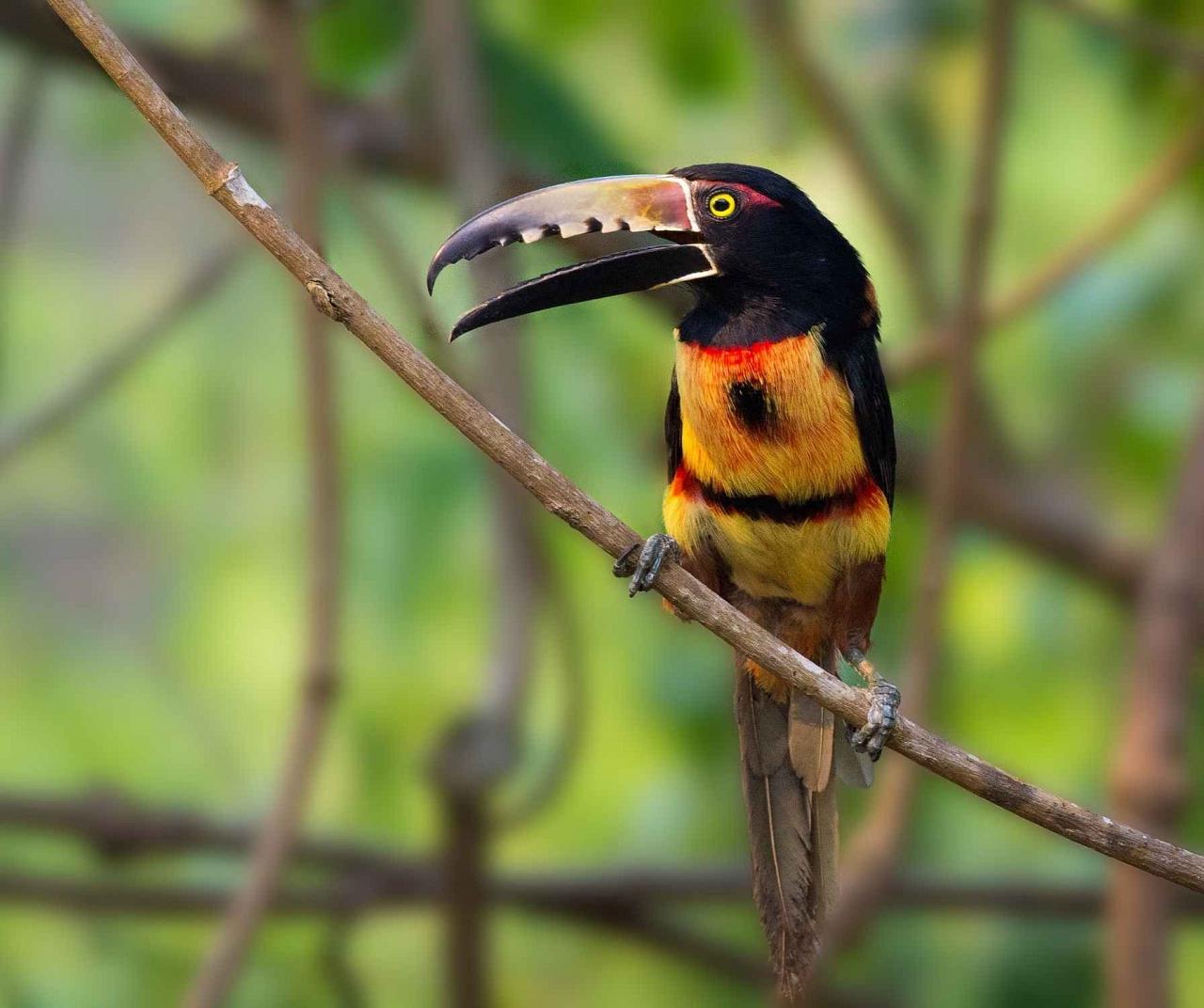
Cost of the Journey
Cost of the journey is $3990 DBL / $4590 SGL, based on double occupancy, from San José, Costa Rica. Cost includes seven nights’ accommodations, all meals as noted in the itinerary, airport transfers, ground transportation, professional guide services, park and other entrance fees, and miscellaneous program expenses. Not included is round-trip airfare to and from San José, personal expenses such as laundry, telephone, drinks from the bar, and gratuities for luggage handling or other services. Guide gratuities are at your discretion.
Please plan to make air travel plans only after the minimum group size has been met. We will send you a confirmation email as soon as the trip has been confirmed.
Arrival and Departure Airport: Juan Santamaria International Airport (SJO) in San Jose
Arrival Details: Please plan flights to arrive July 17, 2024 no later than 5:00 PM if you wish to join the group for dinner.
Departure Details: Please plan flight departures on July 24, 2024 after 2:00 PM. If you would prefer to overnight in San Jose for a morning departure on July 25, 2024, we have listed some airport hotel recommendations below.
Travel Tips: If you arrive early to rest up from your travels, we can book extra nights for you with a transfer to our hotel, the Hotel Bougainvillea, which is in a residential area of the city. If you prefer to stay downtown and see the city, we have listed a few hotel recommendations below. If you choose to stay downtown, you’ll need to arrange a taxi or driver with the hotel to return to the airport for pickup or go out to the Bougainvillea to enjoy its gardens on the tour start date. There are many things to see in San Jose if you’re up for exploring! If you enjoy museums, you’re in luck because some of the best in Costa Rica are located right in San Jose. The Museo Nacional de Costa Rica has exhibits highlighting the archaeology and history of Costa Rica as well as a butterfly garden. The Pre-Columbian Gold Museum has one of the largest collections of gold artifacts in Latin America, some of which date back to 500 CE. If you’re looking to do some shopping or try some local food, head over to the Mercado Central (Central Market). You’ll find vendors selling fruits and vegetables, local food dishes, and a wide variety of souvenirs.
Downtown Hotel Recommendations: Hotel Presidente Hotel Grano de Oro
Airport Hotel Recommendations: Doubletree by Hilton Hotel Cariari San Jose or Hampton by Hilton San Jose Airport
Visa Requirements: US nationals do not require an entry visa to Costa Rica for a tour of this length.
Browse below for trip reports and species lists from past versions of this and other tours from this destination.
- Species List
- Trip Report

James brings some twenty five years of guiding experience to Naturalist Journeys. Originally from Sheffield in the United Kingdom, he discovered a love for guiding in Israel in 1995 where he helped establish the Kibbutz Lotan Center for Birdwatching in the Southern Arava Valley. Since then, he’s led hundreds of tours throughout the Northern Hemisphere for a number of UK-based tour companies. His trips to Israel and North America are especially close to his heart but he’s also led or co-led tours to Mexico (Veracruz), The Gambia, Kenya, Iceland, Scottish Highlands, Spanish Pyrenees, Central/Southern France, Greece (Lesvos), and India (Goa). An accomplished illustrator, James placed runner-up in the British Birds “Bird Illustrator of the Year” competition in 1992 and went on to have his work published in numerous birding magazines and journals. He also co-authored the two volume set A Guide to the Birding Hotspots of Israel (Published in 2000 by the Israel Ornithological Center and the S.P.N.I.). He returns to Israel every year to lead trips and remains an active member of the Israel Rarities and Distribution Committee. When not leading tours he can be found at home in Western Massachusetts with his wife Susannah and their young son Matan.
Other trips with James P. Smith
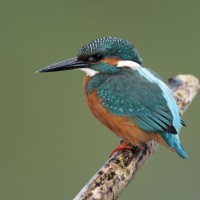
Essential Information +
This information is important for being prepared for your journey; we want you to have the best experience possible. If you only read one section, this one is key!
Ahead of Your Tour
- Make sure your passport is in good condition and at minimum is valid at the time of entry through your scheduled return to the U.S. We suggest at least 3 months validity beyond the end of the tour to allow for unexpected delays in return travel. No Visas are required for U.S. citizens for stays of this tour's duration in Costa Rica. If you are from another country, please contact the Embassy of Costa Rica’s website for guidelines.
- Please check current CDC recommendations for travel to Costa Rica and consult with your doctor about general travel vaccinations you should have as precaution for travel . See the “General Health and Inoculations” section below.
Travel insurance in case of serious medical emergency is strongly recommended. Full health coverage and repatriation is available through Allianz Travel Insurance .
- Plan your international flight reservations to arrive into and depart from San José’s Juan Santamaría International Airport (SJO). Send a copy to the Naturalist Journeys office please.
- Soft sided luggage/duffel bags are easiest for packing the vans. Pack essential medications in your carry-on luggage, as well as one day of clothing and optics in case of luggage delay.
Arrival into Juan Santamaría International Airport (SJO), San José, Costa Rica
Please note. If you are delayed in travel, please FIRST call the number of our Costa Rica operator. As a backup, contact our office (both numbers are on your emergency contact list).
Plan to arrive into Juan Santamaría International Airport (SJO) in San José ideally between 2:00 and 5:00 PM if you wish to join the welcome dinner at the hotel. If your flight arrives after 6:00 PM plan on eating dinner on the plane, or we can hold a late meal for you at the hotel. You may want to arrive a day early (at your own cost) to take in sights of the city. We have blocked a limited number of early night rooms at the Hotel Bougainvillea for this; after they are taken it will be on an as available basis but we are happy to help. You can also arrive to an airport hotel with a shuttle if coming in late the night ahead.
As you arrive at the airport, your Emergency Contact list, sent ahead of the tour, will be helpful when passing through immigration and they ask where you will be staying. You should pick your luggage up from the carousel, and then leave the baggage claim area where you will then go through customs (where all they'll do is a quick security scan of your bags).
After that, you'll gather your bags and exit this area, and your driver will be waiting for you just outside with a sign. There will likely be multiple drivers out there waiting, so look carefully! But he or she will be there. Your name should be on the sign, or possibly it will say Naturalist Journeys. We will coordinate all this once we have your completed travel information. Please make sure we have both your ARRIVAL and DEPARTURE information, so they can plan this. It is imperative that we have your correct TRAVEL information; we appreciate if you email us a copy of your flight reservation.
Departures from Juan Santamaría International Airport (SJO), San José, Costa Rica
You have to be at the airport about three hours ahead of your scheduled flight on this return, so we do not advise booking early morning flights; late-morning is fine.
We will provide transfers for all departures through noon of the departure day, according to your flight schedules. Whenever possible we will keep the group together for this transfer. The departure fee is now typically built into your airline fare.
Passports, Visas & Documents
Please note: Guidelines and regulations can change. It is always advisable to double-check the country’s documentation requirements 60-90 days ahead of traveling. Information for U.S. citizens can be found at: travel.state.gov/content/travel/en/international-travel/International-Travel-Country-Information-Pages/CostaRica.html . If you are from another country, please contact the Costa Rican embassy website for guidelines.
Passports: At the time of writing, U.S. citizens must have a passport that is in good condition and at minimum is valid at the time of entry through your scheduled return to the U.S. That said, we suggest at least 3 months validity beyond the end of the tour to allow for unexpected delays in return travel. You should have at least one blank page per stamp. The blank pages need to say “Visas” at the top. Pages marked “Amendments and Endorsements” will not be accepted.
Visas: At the time of writing, a tourist visa is not required for stays of this tour's duration in Costa Rica, but you will need proof of a return ticket. The necessary documents will be distributed by your airline while in flight or provided for you upon arrival. We advise that you bring your eContact list of hotels for use at immigration as well.
As a precaution for lost or misplaced documents you carry on your person during travel, we highly recommend you keep hard and digital backup copies on your phone (either photo or PDF scan), as well as a hard copy left with your emergency contact at home. The recommended important documents to copy include, but are not limited to; your passport ID page, travel visa, the front and back of your credit card(s), the airline barcode on your luggage. This will greatly expedite getting new ones if necessary – we hope everyone will always keep travel documents close so that losing them will not be an issue.
General Health & Inoculations Information - Be Prepared!
We will share your health information with your guide. This information will be kept confidential but is very important as we want to be best prepared in case of medical emergency.
Anti-malarial drugs are not required for any area that you visit. There are occasional reports of Dengue Fever in lower elevation areas, for which there is no vaccine. Dengue fever, Zika, and other diseases are contacted by mosquito bites so be sure to use mosquito repellant containing DEET or Picaridin. Travelers can reduce their risk of disease by protecting themselves from mosquito bites in lower elevation areas by using protective clothing.
Vaccinations: Bring your up-to-date vaccination records with you. At the time of writing, there were no required vaccinations to enter Costa Rica, unless you are arriving from a Yellow Fever infected area (check the CDC's Yellow Book for those countries) . The CDC recommends that all travelers be up to date with routine vaccinations and basic travel vaccines (such as Hepatitis A and Typhoid) before traveling to any destination. Check for updates to requirements at the U.S. Centers for Disease Control and Prevention (CDC) webpage for Costa Rica or reach by phone at (800) CDC-INFO or (800) 232-4636.
Prescriptions: It is a good idea to pack any meds you take regularly in your carry-on luggage. Bring an extra pair of glasses or contact lenses. Bring an adequate supply of any prescription medications you use, a copy of the prescription and a list of generic names of your medicines as “back-up” in case it is necessary to purchase drugs while abroad. You’ll want to keep medications in their original, labeled containers.
Allergies: To be prepared for environmental triggers to allergies or breathing difficulties, please bring your allergy and/or asthma medication(s). If you have severe allergies talk to your doctor about carrying an EPI pen and notify your guides. It is also recommended to carry with you an up-to-date record of known allergies, chronic medical problems and Medic Alerts so that, if necessary, emergency treatment can be carried out without endangering your health.
Common Ailments: We recommend that you bring a travel-sized first aid kit and a supply of standard over-the-counter medications for prevention or treatment of common ailments (such as diarrhea, constipation, stomach upset, cough, congestion, head or body aches, insect bites and sunburn); as well as ointments, moisturizer, sunscreen, oral rehydration salts, band-aids, moleskin for blisters, cotton swabs, nail clippers, and tweezers, etc.
Altitude sickness: It can affect some and, if there is a concern, be prepared. The most general symptoms are headache and occasionally fatigue and dizziness. You’ll want to take it easy, particularly at first. These symptoms can be reduced by resting, drinking plenty of water and taking aspirin. If you have worries about the altitude, ask your physician about medications that may be right for you.
Weather & Climate
Lush rainforests, and tropical dry forests occur here due to the hot, humid climate and it’s just a part of the experience. In lower elevation areas it will be hot. Mountain environments and areas around San José are cooler, and you will want a light fleece or jacket in the evenings and early mornings.
In general, the weather during your stay should be warm to hot (77-90 °F) in the lowlands, and cooler in the mountains (60’s-70’s °F), even cooler in the early mornings and evenings. Weather can be unpredictable; raingear is on the suggested packing list - a light rain jacket or poncho is good and YES - do bring an umbrella. Your raincoat can double as a layer to combine with a light jacket possibly some evenings.
Annoyances & Hazards
Mosquitoes can occur in the forests; therefore, a supply of insect repellent containing DEET is essential. At grassland or farm locations you may encounter chiggers, if so, spray your shoes with repellent, and tuck your pants into your socks, this helps a lot. When back, be sure to shower and air out your clothing. Chiggers are a part of lowland and mid-elevation habitats throughout Central and South America. Your guide should have a good read on if it has been wet enough that they are active. There can also be poisonous snakes and insects, though encountering them is rare. Do listen carefully to any advice given by your local guide. And remember the sun is strong and be prepared with proper protection.
Food & Drinks
Menus at lodges and restaurants are varied, sustainably based on the wonderful local ingredients available, and delightfully prepared in a sanitary environment. As with any case when traveling we urge you to consider what your body is used to before you eat something. Trust your common sense when consuming food and beverages. This is the best way to avoid any unwanted problems. Ask for recommendations from your hotel or refer to a guidebook such as Frommers. Meals reflect the contributions of American, European, Spanish, and local cuisines.
Bottled water will be available for field trips and drinking water is provided for you to refill a bottle. One of the many ways we strive to do our part for the environment is by trying to reduce our consumption of plastics; if convenient we appreciate if you can bring reusable water bottles. Your guide will let you know when bottled water is preferable.
Packing, Clothing & Laundry
Dress is very informal and laundry services are available for a fee at our lodges. While some people will change for dinner, it is usually just to a drier or cleaner version of what they wore during the day. Again, the climate is warm to hot, so you will be comfortable in lightweight clothing.
Please, pack light. We are serious about this – we move around a lot; you just do not need much to cope with tropical life! Please do not bring anything more than you must. Lay out your hopeful things to take and then do a serious paring down!
TRAVEL TIP: Imagine NOT getting your suitcase. Wear your most important shoes for the field and have one day’s clothing change (including a change of underwear!). And please DO NOT pack any essential medications, or your vital optics, in your checked luggage!
Spending Money
The official currency of Costa Rica is the colón (CRC). For the current exchange rate, please refer to an online converter tool like www.xe.com , or your bank. The U.S. dollar is also frequently accepted by businesses in Costa Rica. You’ll want to bring small denominations of U.S. dollars ($1, $5, $10, $20) in good condition. We advise you carry a mix of different types of payments, such as cash, an ATM card, and a credit card.
Since U.S. dollars are widely accepted, there is no need to exchange currency before your trip. You will want to exchange a small amount of money once you’re in Costa Rica to have local currency for situations that may require it. Local vendors, particularly for crafts, and smaller food establishments, only take local currency. You will be able to change money after your arrival at ATMs, banks, or hotels. ATM machines are available in San José, and in larger cities, but not as readily as they are in the US. The ATM will give you local money and your bank will convert that into U.S. Dollars. Many banks charge a fee of $1 - $5 each time you use a foreign ATM. Others may charge you a percentage of the amount you withdraw. Check with your bank before departure. You must become familiar with how to use your ATM card and PIN number ahead of the journey. If you plan to exchange cash in country, bring large U.S. bill ($50 or $100) in good condition that will give you the better rate when exchanging to local currency.
Many people ask how much money to plan to bring for spending money. Part of that depends on how much you want to shop. Typical items people purchase include: local souvenirs, handicrafts and T-shirts, drinks before or with dinner and natural history books. We recommend having at least $400 USD with you and the ability to get more through an ATM if needed. If you have no ATM access, we recommend $600 with some tucked away safely, just in case!
Credit cards are commonly accepted throughout Costa Rica. We suggest you have more than one card available, if possible. You may want to bring more than one brand of card (one Visa, and one MasterCard; American Express is less accepted). At some lodges you can keep a drink tab and pay with credit card upon checkout. Not every shop will accept every card. Some smaller shops and restaurants require cash, so it is always a good idea to ask before making a purchase. Also, we recommend that you advise your bank or credit card company that you will be traveling to Costa Rica to avoid questions, card freezes, or charges. If you have a choice of cards, bring one with no foreign exchange fees.
Traveler’s checks are not widely accepted. They can be difficult to exchange. We do not advise you use them.
Tipping is optional and completely at your discretion. If you would like to show our appreciation to your guides and hotel staff or anyone associated with this tour, it is entirely appropriate. Know that they appreciate anything you care to give and of course you can do more if you wish!
Here is a standard suggestion for tipping on birding trips:
- Birding tour guide: US $10.00 - $15.00 per day per guest Note: If there is more than one guide, this can be split among them, so that is a total, per person, per day
- Tour driver if different from guide: US $5.00 - $7.00 per person/day
- Lodge staff: US $6.00 - $10.00 per day per guest
- Transfer (airport shuttle) driver: US $2.00 - $3.00 per person
- Hotel & international airport bellmen: US $1.00 per suitcase
You may wish to bring small gifts for local people that you meet and enjoy (this is totally optional!). T-shirts, school supplies like pens and small notebooks, inexpensive watches and baseball caps are always popular. Your guides can pass along school supplies to a local school if you bring them. They also love any nature books/coloring books.
Cell Phones & Internet Service
If you plan on using your cell phone on this trip, please check with your wireless provider to see if your
phone and service will work in your destination country. Ask for “international roaming” to be activated on your phone. Or you can buy a local SIM card at the airport and insert this in your mobile phone (just make certain your phone can accept one)
If your phone can connect to Wi-Fi, you may be able to make voice and video calls free of charge. Please contact your cell phone provider for further details. Another option if you have access to Wi-Fi, is to use smartphone apps like Skype, WhatsApp, or Viber to send text messages, and make voice calls, or video calls. Many smartphones, tablets, or laptops come with one of these apps pre-installed or you can download for free. If bringing a laptop or tablet, get a good dustcover to protect it at all times.
Make sure if you do NOT want to use your cell phone that you turn off your cellular data. You could incur huge charges if you are not on Wi-Fi. Putting your phone in airplane mode if you mainly use it for photos will save the battery as well.
Please refrain from taking or making cell phone calls in the vehicles when traveling with other passengers, unless it appears to be an emergency. This disrupts other guests, plan on cell phone call use on your own time.
Your hotels and most local restaurants provide Wi-Fi at least in their common areas. Although it is generally a reliable service, it can be affected by adverse weather conditions due to the remote location.
Electricity
The standard in Costa Rica is the same as in the United States: 110-120 volts AC (60 cycles). Plugs are set up in the same style. However, three-pronged outlets can be scarce, so it's helpful to bring along an adapter for a two-prong outlet. If your appliances plug has a different shape, you may need a plug adapter. For more information: www.power-plugs-sockets.com/costa-rica
Costa Rica is on the same time as our Central Zone in the US. Check www.timeanddate.com before leaving home for your conversion.
Please contact Naturalist Journeys by email at [email protected] or telephone our office:(520) 558-1146 or toll free: (866) 900-1146 if you have any questions. Many thanks for traveling with us and we hope you enjoy your journey!
Pace & Protocols +
Pace of the tour & what to expect.
You will receive a Schedule-at-a-Glance and list of hotels (our eContact List) a few weeks before your departure. This will serve as an outline for each day and alert you to any recent changes made in the schedule or to our hotels, if needed.
Our journeys are set up to follow the rhythm of nature. Our focus is on birding and nature; we offer full, well-planned field days and often get up early for that magical time around dawn. We generally follow the published itinerary, but we stay flexible to the weather, wildlife opportunities and the interests of the group. Your guide will keep you apprised of the next day’s schedule at each evening meal, noting what to bring and what to prepare for. Questions and/or concerns are welcome.
The pace of our Naturalist Journeys tours is moderate; to fully participate you should be able to get in and out of vehicles several times a day, and walk 1-3 miles over uneven terrain. It is important to participate with a flexible attitude as adjustments may be made in our schedule to make the most of our time in the field or for other purposes at your guide's discretion. We are not a “listing” bird company that drills down on target species, but at times we do wait for those special species unique to the places we visit. During the day, we take time to stop for photos and for educational opportunities to learn about conservation projects, landscapes, and geology. We appreciate other taxa as well as birds, with mammals often the biggest draw but plants and butterflies are also very popular. Our clients often lend their own expertise to the mix.
We like to make meals a fun and memorable part of the experience, too. Breakfasts are often at hotels, and we carry snacks, fruit, and water in the vans each day. Lunches are a mix of picnics in the field (weather dependent) and a chance to dine with locals at small cafes and restaurants. For dinner, we pride ourselves in our homework to keep up with the best choices for dining, choosing restaurants with atmosphere that specialize in local foods. On occasion we keep dinner simple to go back out in the field for sunset wildlife viewing or night walks. In some remote locations, our choices are limited. If you are tired, room service for dinner may be an option you can choose.
Naturalist Journeys International Trips: Guide Role
Naturalist Journeys supports ecotourism and the development of excellent local guides. Once we know our international partners and guides well, we can send out small groups working directly with these trusted partners, adding a Naturalist Journeys guide to assist the local expert when we have a group of 6-7 or more. This helps us keep your costs down while retaining tour quality. The local guide is your main guide. You can expect your Naturalist Journeys guide to be well-researched and often they are experienced in the destination, but their role is not to be primary, it is to help to organize logistics, help you find birds, mammals, and interesting other species in the field, keep reports, help facilitate group interactions, and to keep the trip within Naturalist Journeys' style. Local guides live in the countries we travel to, know the destinations intimately, and are often the strongest force for conservation in their countries. They open many doors for us to have a rich experience.
Smoking is not permitted in any vehicle or in any situation where the group is participating in an activity together, such as a vehicle excursion or a guided walk. Please respect all designated smoking areas at hotels and restaurants.
Transportation
As a courtesy to each other, we ask that all travelers please rotate seating. On international trips we may all be in one small bus, on some trips we are in vans, particularly the roomy Sprinter Vans when available. Some areas require us to be in smaller 4-wheel drive or safari vehicles. Rotation allows you to sit with different drivers and alternate front and back seating.
Photo Release & Sharing
We take many group photos and will share photos with the group. And after your tour, we will organize a chance to share photos via Dropbox or Google Photos. Please note that this is our policy and if you prefer to be excluded, we need to know ahead of your tour.
By registering for this tour, you agree to grant to Naturalist Journeys and its authorized representatives’ permission to record on photography film and/or video, pictures of my participation in the tour. You further agree that any or all of the material photographed may be used, in any form, as part of any future publications, brochure, or other printed materials used to promote Naturalist Journeys, and further that such use shall be without payment of fees, royalties, special credit or other compensation.
Travel Insurance
You are traveling in remote areas. Naturalist Journeys strongly recommends you have full medical and evacuation insurance from a company such as Allianz , for all international travel. If you do not have medical coverage or evacuation coverage on your existing travel insurance policy or for some reason elected not to take that out, we advise getting an evacuation plan with Global Rescue , World Nomads , Medjet , Allianz (they can do evacuation only) or a similar company. These plans are typically $300-$400 for a year for multiple destinations. This coverage may be a part of a larger Travel Insurance policy but can also be purchased on its own.
Please contact Naturalist Journeys by email at [email protected] or telephone our office: (520) 558-1146 or toll free: (866) 900-1146 if you have any questions. Many thanks for traveling with us and we hope you enjoy your journey.
Packing List +
Please pack light.
Soft luggage is much easier for us to pack than a more rigid hard sided piece, so if you have the choice, please use your soft luggage. Be sure to have your name and address on the inside of the bag, as well as on the luggage tag on the handle. It is our hope that you can pack in one checked suitcase that does not exceed 45 pounds. Be sure to pack your personal medication, airline tickets, passport, binoculars, camera, and other essential items in your carry-on bag. You will want a day pack for field trips, so this is an ideal carry-on. Please reconfirm your airline’s baggage weight and size restrictions about a week or so before departure.
In general, the weather during your stay should be warm to hot (75-85°F) in the lowlands and on the coast, and cool (60’s-70’s°F) in the mountain’s daytime, and cooler (40’s-50’s°F) early morning and night.
Dress is comfortable and informal throughout the trip. Dressing in layers is the best way to be comfortable. Lightweight long sleeve shirts and long pants make ideal field clothing as they are more protective from sun and vegetation. But if you like to wear them, by all means bring some shorts. Also, choose clothing you don’t mind getting dirty or muddy and things that are comfortable and easy. A light jacket should be enough in the cooler evenings and on boat rides. Costa Rica’s rainy or “green season” is May to mid-November, so raingear and an umbrella are on the list.
Note on clothing colors and insect repellent: We recommend muted colors of tan, brown, khaki, grey or green, as they are spotted less easily than white or bright colors. Camouflage clothing is not recommended. It is possible to purchase field clothing permeated with insect repellent such as the Craghoppers Insect Shield collection. Another approach is to purchase Permethrin spray (online or from REI) to treat your field clothing and socks before your departure.
Clothing and Gear
- Lightweight long pants, 2-3 pair
- Lightweight long-sleeved shirts – 2 or 3
- Shorts (optional, not generally recommended)
- T-shirts or equivalent (1 per day or every other day recommended – Remember that you may be buying some there anyway!)
- Long-sleeve shirt for layering or cooler days when at higher elevation
- Personal underclothing
- Socks – lightweight and easy to wash and dry
- Comfortable but sturdy walking/hiking shoes such as tennis shoes and lightweight hiking boots. Please note that forest trails will be on uneven terrain and may be muddy – bring shoes with good support and firm grip tread
- Walking stick – we find that many travelers appreciate a walking stick on trails, sporting goods stores carry collapsible models that pack easily in your suitcase (optional)
- Sandals for evenings, travel days and for wearing on boats (optional, Teva style are great)
- Lightweight raincoat or poncho
- Lightweight jacket, fleece fabric is ideal, very important as it can be cool in the mountains
- Light gloves, hat and scarf for mountains
- Comfortable clothes for evening (a cleaner version of your field clothes or a skirt, sun dress, etc.)
- Bathing suit (optional)
- Hat with broad brim
- Bandanna (optional, great for cooling off when you are hot and sweaty. They even make them with a gel inside for several hours of cooling)
Equipment and Miscellaneous
- E-ticket verification
- Passport, visa (if required), travel insurance info, money & credit cards.
- A secure pouch to carry the items above on your person at all times (such as a secure, under-clothing document pouch)
- As a backup: copies of all the above (phone and/or paper) packed in a separate location than on your person, plus a set given to your emergency contact at home as a backup. For passport, copy of the ID and entry stamp pages.
- Small day pack or fanny pack for carrying your field gear
- Umbrella, compact and not brightly colored (this is great when it rains, you can continue using your binoculars!)
- Small flashlight with fresh batteries. Please note that if you like to read at night, lighting in other countries is often poor in the rooms, and you may want to bring a book light, headlamp, or flashlight for this purpose
- Alarm clock, or use your cell phone
- Sunscreen/lip balm with SPF
- Sunglasses with neck strap
- Insect repellent (something containing 20% or more DEET, and sulfur powder or other for chiggers – check garden section)
- Toilet articles
- Spotting scope and tripod (optional)
- Camera and extra batteries, film, lens cleaning supplies and your instruction manual (optional)
- Water bottle
- Notebook or journal and pen (optional)
- Spanish phrase dictionary (optional)
- Field guides (optional)
- Sink plug (often not available, a flat universal one is easiest to use)
- Washcloth (again, available some places and not at others)
- Laundry soap if you plan to do hand washing
- Earplugs – in urban and even rural areas barking dogs and traffic noise can be annoying. In general Costa Rica is noisier than the US
- Rechargeable power bank (optional)
WE DO NOT RECOMMEND TRAVELING WITH PRECIOUS OR VALUABLE JEWELRY – don’t tempt anyone and don’t bring things you’d regret losing - your mind will be at ease!
Medical and First Aid Supplies
- Heath insurance and vaccination records (kept in personal pouch with other travel documents)
- Personal medication
- Motion sickness preventatives if likely to be needed on bus, van, drives, etc.
- Personal first aid kit and medications for general ailments (Imodium or Lomotil, antihistamine cream or tablets, eye drops, etc.)
- Copy of eyeglass prescription, copy of medical prescriptions, and any medical alerts
- Extra pair of eyeglasses or contacts
- Band-aids, moleskin to protect against blisters
- Hand Sanitizer
Suggested Reading List +
There are many titles of interest for Costa Rica; the following are a few that we have enjoyed that can get you started.
The Birds of Costa Rica, A Field Guide
Merlin App – Costa Rica Pack . A phone-based birding app from Cornell University Laboratory of Ornithology. Before departing the U.S., download the app for free , then from within the app, download the “pack” for Costa Rica.
General Reading
A Naturalist’s Guide to the Tropics
The New Neotropical Companion
Costa Rica: A Journey through Nature
Nature of the Rainforest: Costa Rica and Beyond
The New Key to Costa Rica
Costa Rica: The Complete Guide: Ecotourism in Costa Rica
Costa Rica’s National Parks and Preserves, a Visitor’s Guide
Field Guides
A Guide to the Birds of Costa Rica
Birds of Central America
The Wildlife of Costa Rica: A Field Guide
Field Guide to the Wildlife of Costa Rica
Neotropical Rainforest Mammals: A Field Guide
A Field Guide to the Mammals of Central America and Southeast Mexico
Collin’s Guide to Tropical Plants
Butterflies of Costa Rica
Butterflies of the Golfo Dulce Region, Costa Rica. Free PDF
Wildlife & Nature
Nature Travel Guide: Birds and Mammals of Costa Rica
Birds of Tropical America: A Watcher's Introduction to Behavior, Breeding, and Diversity
Monkeys Are Made of Chocolate: Exotica and Unseen Costa Rica
Traveler’s Wildlife Guide Costa Rica
Natural History
The Natural History of Costa Rican Mammals
Costa Rican Natural History
The High Frontier: Exploring the Tropical Rainforest Canopy
Life Above the Jungle Floor
History & Culture
Chilies to Chocolate: Foods the Americas Gave the World
The Ticos: Culture and Social Change in Costa Rica
Costa Rica: The Last Country Gods Made
There is a good selection of books available for sale at visitors’ centers, and your guide will also have a selection of reference books and materials for participants to share. As an Amazon Associate, Naturalist Journeys earns from qualifying purchases, and may get commissions for purchases made through links on this page at no added cost to you.
Useful Links +
- https://en.wikipedia.org/wiki/Costa_Rica
San José
- https://en.wikipedia.org/wiki/San_Jos%C3%A9,_Costa_Rica
La Fortuna, San Carlos, Costa Rica
- https://en.wikipedia.org/wiki/La_Fortuna,_San_Carlos
- https://en.wikipedia.org/wiki/Monteverde
Nature, Wildlife & Biology
Birds of Costa Rica
- https://costarica.org/animals/birds/
Bird checklist - eBird (You may also search lodge websites for lodge checklists)
- https://ebird.org/region/CR
Resplendent Quetzal
- https://abcbirds.org/bird/resplendent-quetzal/
Mammal checklist
- https://en.wikipedia.org/wiki/List_of_mammals_of_Costa_Rica
Flora of Costa Rica
- https://www.inaturalist.org/guides/4298
Animals and Plants Unique to Costa Rica
- https://lntreasures.com/cr.html
Conservation, Parks & Reserves
Conservation in Costa Rica
- https://en.wikipedia.org/wiki/Conservation_in_Costa_Rica
- https://www.conservation.org/costa-rica/en/home
La Selva Research Station - Organization for Tropical Studies
- https://tropicalstudies.org/portfolio/la-selva-research-station/
Children’s Eternal Rainforest
- https://acmcr.org/content/
Monteverde Cloud Forest Reserve
- https://cloudforestmonteverde.com/
Curi-Cancha Reserve
- https://reservacuricancha.com/
Santa Elena Cloud Forest Reserve
- https://www.costarica.com/attractions/santa-elena-cloud-forest-reserve
The World Bank Feature Article – “Costa Rica’s Forest Conservation Pays Off”
- https://www.worldbank.org/en/news/feature/2022/11/16/costa-rica-s-forest-conservation-pays-off
Geology & Geography
Geology of Costa Rica
- https://en.wikipedia.org/wiki/Geology_of_Costa_Rica
Geographic Overview
- https://costarica.org/facts/geography/
History & Culture of Costa Rica
- https://www.centralamerica.com/costa-rica/history/
- https://en.wikipedia.org/wiki/Culture_of_Costa_Rica#
Cuisine of Costa Rica
- https://matadornetwork.com/trips/13-foods-try-costa-rica/
- https://www.eater.com/21516828/costa-rican-food-explainer-dishes-drinks
Helpful Travel Websites
Juan Santa María International Airport (SJO)
- https://sjoairport.com/en
National Passport Information Center
- https://travel.state.gov/content/travel/en/passports.html
Homeland Security Real ID Act
- https://www.dhs.gov/real-id
U.S. Customs and Border Protection (CBP)
- https://www.cbp.gov/travel
Transportation Security Administration (TSA)
- https://www.tsa.gov
Foreign Exchange Rates
- https://www.xe.com/
ATM Locator
- https://www.visa.com/atmlocator/
- https://www.mastercard.us/en-us/personal/get-support/find-nearest-atm.html
U.S. Department of State International Travel Information – Costa Rica
- https://travel.state.gov/content/travel/en/international-travel/International-Travel-Country-Information-Pages/CostaRica.html
Centers for Disease Control and Prevention (CDC) – Costa Rica
- https://wwwnc.cdc.gov/travel/destinations/traveler/none/costa-rica
Canada Travel Advice and Advisories – Costa Rica
- https://travel.gc.ca/destinations/costa-rica
Travel Health Pro (UK) – Costa Rica
- https://travelhealthpro.org.uk/country/58/costa-rica
Electricity and Plugs – Costa Rica
- www.power-plugs-sockets.com/costa-rica
Date, Time, and Holidays – Costa Rica
- https://www.timeanddate.com/worldclock/costa-rica
- https://www.timeanddate.com/holidays/costa-rica/
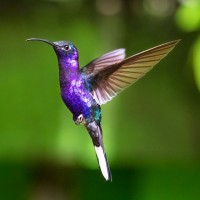
Photo credits: Banner: Black-cheeked Woodpecker by Greg Smith (GS); Lizard by Sandy Sorkin; Monteverde Suspension bridge; Squirrel Cuckoo by Sandy Sorkin; Keel-billed Toucan by Doug Greenberg (DG); Black Howler Monkey by Peg Abbott (PA); Gallery: Collared Aracari; Arenal Volcano; Black-and-white Owl; Giant Anteater, Naturalist Journeys Stock; Purple Gallinule, Tom Dove; Purple-throated Mountain Gem, GS; Savegre Bromeliads, GS; Chestnut-colored Woodpecker, SS. Primary Thumbnail: Birding, Karen Holmen; Montezuma Oropendola, Anindya Sen; Golden-hooded Tanager, White-faced Capuchin, John Trezise Secondary: Hoffman’s Two-toed Sloth, Emerald Toucanet, Scarlet Macaw, Rainforest Northern Barred Woodcreeper Phil Yates, courtesy Operador Latino; Black Guan, DG; Lesson's Motmot, Mike Boyce; Central American Squirrel Monkey, PA; View from Celeste Mountain Lodge, celestemountainlodge.com; Collared Aracari, James Adams; Red-legged Honeycreeper, GS; Great Curassow, SS;
Like what we do?
Sign up for our weekly enews to stay up to date, get to know our favorite destinations each week. we promise no spam..
(+504) 9563-9689

Costa Rica: Exploring the Heart of Central American birding
Costa Rica is a dream destination for birdwatchers, with its abundance of avian treasures, offering a myriad of birding hotspots amidst breathtaking natural beauty. Join us on our Costa Rica Birding Tour and immerse yourself in the wonders of birdwatching in Costa Rica, where every moment is filled with excitement and discovery. With 922 avian species recorded to date, Costa Rica hosts one of the highest avian diversities per square mile in the World. 4 of these species are strictly limited to Costa Rica’s geographical boundaries and close to 100 species are shared with the neighboring countries.
12-Day Costa Rica Birding Tour Highlights:
This easy-going, 12-day birding tour of beautiful Costa Rica, with its rich variety of tropical habitats and incredible bird life , is perfect for those birding Central America for the first time, or even wanting to re-visit, and familiarize themselves with the magnificent bird diversity that Costa Rica has to offer. We begin in San Jose and bird our way through breathtaking, tropical landscapes such as the towering Arenal Volcano, the verdant Pacific coast, tropical dry forest and tropical rain forest, Monteverde’s cloud forests and more, all teeming with bird life!
Whether you’re seeking adventure, relaxation, or an educational experience, our Costa Rica birding tours have something for everyone. Indulge your passion for bird watching, surrounded by the breathtaking beauty of Costa Rica’s natural landscapes.

Tour Details
Price: From $4,650.00 per-person double occupancy.
Single Supplement: $860.00 per-person.
Included: Lodging, all tours, meals, in-country transportation, guide, entrance fees.
Not Included: Passport Fees, international airfare, alcoholic beverages, additional soft drinks, personal items, tips, travel insurance.
From: San Jose (SJO)
Minimum Participants : 6
Participant Limit: 10
Activity Level: Easy
*Download Full Itinerary
Registration
Deposit: 30% per-person deposit is required to reserve your spot on this tour (with your registration form)
*Download Registration Form
To book your space on the tour, please contact us at [email protected]
Tour Leaders
Diego Quesada
Ask a Question

Natural Selections Tours thanks Zeiss Optics in partnering with us to advance birding, ecotourism, and conservation. Zeiss Optics is a world leader in quality optics products and service, and we are proud to work together making our world a better place by seeing beyond, together!

Explore the flora & fauna of
Monteverde cloud forest.

Oscar Castillo
My name is Oscar Castillo. For almost 20 years, I have been working in Monteverde as a Professional Bilingual Naturalist Guide, certified by the Costa Rican Tourism Board (License #1090). Since then, I have also worked with leading institutions in fields such as ecotourism, conservation, and environmental education.
Monteverde is unique because of the high level of endemism that makes these forests one of the most biodiverse places in the world. I have been navigating Monteverde’s forests for over 20 years participating in a variety of nature field work, including bird inventory, amphibian inventory, guiding nature hikes, night tours, and birding tours. I am forever in love with nature and would be happy to share the wonders of Monteverde with you.
Nasua Tours Monteverde

Private Birdwatching

Private Full Day Tour

Nature Tour

Private Guided Tours
Need help booking.
You can submit your Reservation Request here . If you are having problems booking you can directly email us at [email protected] or call us +(506) 83136679 .
Testimonials
People saying.
This was one of the best eco-tours I’ve taken to date. Oscar is a first-rate guide, highly knowledgeable about indigenous wildlife and flora of Costa Rica and Monteverde, and about the specific preserves where you might be able to find specific species you might be hoping to see as well. He’s also just an all-around great person to spend a great day with, and he works really hard to make sure you get the most from your time with him. Highly recommend Oscar!
Josh Pelta-Heller
We booked a night tour and spotted many animals that otherwise we would have never seen. We got to know Oscar as an intelligent, friendly, interested person, with whom we had great conversations with. He is really knowledgeable and has many years of experience in his field. Really cares of providing the best, so passionate about what he does. We would definitely recommend to take a tour with him 🙂 Thanks Nasua Tours! 🙂
Dora & Peter
Oscar is a gentleman and a scholar. He guided my wife and I on a birding tour thru Curi Cancha Preserve in Feb 2020 and we highly, highly recommend!
He taught us so much not only about birds, their songs and sounds, but also about the flora & fauna of the area as well. His passion was evident from the start of our trip and you can tell from his encounters with the other guides that he is highly respected amongst his peers. Thank you!
Colin Cowing
Certificate of excellence, tripadvisor.
See what other people are saying about us and reviewing on Tripadvisor .

Costa Rica - Budget Birding 2024 - ()
Costa rica - budget birding.
- Dates, Leaders and Pricing
- Trip Reports
- Tour Enquiry
The small nation of Costa Rica has geared itself heavily towards avitourism and has developed a superb infrastructure to service the numerous visiting birders, and with over 850 species it is easy to understand why! The backbone of the country is formed by a scenic mountain range, and here the cloud forests are home to exotic species including the unbelievable Resplendent Quetzal, Snowy and Turquoise Cotingas, Black Guan, Long-tailed Manakin, Scarlet Macaw, Orange-collared Manakin, Fiery-billed Aracari, Black-faced Antthrush, Fiery-throated and Mangrove Hummingbirds, Mangrove Vireo, Baird’s and Black-throated Trogons, Long-tailed Silky-flycatcher, Black-and-yellow Phainoptila, Wrenthrush and Golden-browed Chlorophonia. A wide variety of habitats that include the montane forests of the volcanic belt and the dry northern Pacific lowlands will be explored on our tour, and we can look forward to many striking species of trogons, toucans, motmots and hummingbirds, among many other spectacular birds. Thrilling birding, quality lodges and a relaxed pace make this destination perfect for anyone who has yet to experience the exciting avifauna of Central America!
Resplendent Quetzal; Long-tailed Silky-flycatcher; Black-and-yellow Phainoptila; Wrenthrush; Black Guan; Rufous-necked Wood Rail; Highland & Thicket Tinamous; Spot-bellied Bobwhite; Baird's & Black-throated Trogons; Black-hooded Antshrike; Sulphur-winged Parakeet; Scarlet Macaw; Pacific & Bare-shanked Screech Owls; Costa Rican Pygmy Owl; Rufous-winged Woodpecker; Turquoise Cotinga; Orange-collared & Long-tailed Manakins; Chiriqui & Buff-fronted Quail-Doves; Black-breasted Wood Quail; Coppery-headed Emerald; Grey-tailed Mountaingem; Silvery-fronted Tapaculo; Northern Royal Flycatcher; Streak-chested Antpitta; Prong-billed Barbet; Black-bellied & Riverside Wrens; Black-capped Flycatcher; Sooty-capped Bush Tanager; Ochraceous Pewee; Golden-browed Chlorophonia; Volcano Junco; Costa Rican Swift; Blue-throated Toucanet; Timberline Wren; Black-billed Nightingale-Thrush; Sooty Thrush; Flame-throated & Black-cheeked Warblers; Silvery-throated Jay; Sooty-faced, Large-footed & Yellow-thighed Finches; Streak-breasted Treehunter; Fiery-billed Aracari; Black-faced Antthrush; Mangrove Vireo; Mangrove Hummingbird; White-crested Coquette.
Top Mammals
Mantled Howler Monkey; Hoffman’s Two-toed Sloth.
Habitats Covered
Rainforest, cloud forest, highland oak forest, dry forest, mangroves, rivers
Expected Climate
mostly tropical conditions; warm to humid with cooler conditions in mountainous areas
Max Group Size
8 with 1 local leader
Tour Pace & Walking
Moderate to easy. Suitable for most birding / wildlife interest levels.
Accommodation
Comfortable
Ease of Birding
Mostly easy, with several trickier forest species. Garden & lodge birding typically provides good visuals of most species.
Photographic Opportunities
Good. Lots of fruit & hummingbird feeders. Photography more difficult within closed forest canopy.
What our clients say about us

SP, Cost Rica 2015
I can say it was a great tour. Forrest and Richard were fantastic leaders. I would bird with them anywhere.

Adam is an extremely hard working, energetic and enthusiastic person who is able to remain calm and collected under extreme pressure and is always willing to help and assist anyone in need. His ability to find elusive birds for clients is legendary and almost miraculous. He is not feint-hearted and never daunted by challenging circumstances.

JK, Costa Rica
Bobby Wilcox was a good guide. Calm and knowledgeable. The food and accommodation were both very good, Better than I expect.

MP, Costa Rica 2022
Adam and the local guide, were exceptionally good, both at making sure the logistics were taken care of and locating, identifying and making sure all of us on the tour saw the bird. Both were the finest I've ever experienced at identifying birds by their calls. All in all, a really terrific trip with over 300 species of birds sighted! A special shout-out for Hotel Robledal. While the hotel is older, the family that owns and runs it are wonderful hosts with an exceptional appreciation for the environment. Returning to Hotel Robledal at the end of the trip felt like coming home. Thanks Rockjumper, for a terrific trip! "
Costa Rica - Budget Birding 2024
27 Apr 2024 - 07 May 2024 (11 days)
USD4,195 - No Spaces Available

Tour Leader: Jehudy Carballo
Tour price (Per person): USD4,195 * GBP3,376 * EUR3,927 * AUD6,449
Single Supplement: USD690 * GBP555 * EUR646 * AUD1,061
Costa Rica - Cloud Forest & Quetzals 2023 - October 2023
Costa Rica - Cloud Forest: Caribbean Slope Extension 2023 - October 2023
Costa Rica - Central Highlands (Relaxed) 2023 - February 2023
Costa Rica - Cloud Forest & Quetzals 2022 - October 2022
Costa Rica - Cloud Forest & Quetzals II 2020 - December 2020
Costa Rica - Cloud Forest & Quetzals 2018 - May 2018
Costa Rica - Cloud Forest & Quetzals 2017 - May 2017
Costa Rica - Cloud Forest & Quetzals 2016 - October 2016
Costa Rica - Cloud Forest & Quetzals 2015 - October 2015
Your details
- Title Mr. Mrs. Ms. Dr. Prof. Sir.
- Name * First Last
- Your country Your country Afghanistan Albania Algeria American Samoa Andorra Angola Antigua and Barbuda Argentina Armenia Australia Austria Azerbaijan Bahamas Bahrain Bangladesh Barbados Belarus Belgium Belize Benin Bermuda Bhutan Bolivia Bosnia and Herzegovina Botswana Brazil Brunei Bulgaria Burkina Faso Burundi Cambodia Cameroon Canada Cape Verde Cayman Islands Central African Republic Chad Chile China Colombia Comoros Congo, Democratic Republic of the Congo, Republic of the Costa Rica Côte d'Ivoire Croatia Cuba Curaçao Cyprus Czech Republic Denmark Djibouti Dominica Dominican Republic East Timor Ecuador Egypt El Salvador Equatorial Guinea Eritrea Estonia Ethiopia Faroe Islands Fiji Finland France French Polynesia Gabon Gambia Georgia Germany Ghana Greece Greenland Grenada Guam Guatemala Guinea Guinea-Bissau Guyana Haiti Honduras Hong Kong Hungary Iceland India Indonesia Iran Iraq Ireland Israel Italy Jamaica Japan Jordan Kazakhstan Kenya Kiribati North Korea South Korea Kosovo Kuwait Kyrgyzstan Laos Latvia Lebanon Lesotho Liberia Libya Liechtenstein Lithuania Luxembourg Macedonia Madagascar Malawi Malaysia Maldives Mali Malta Marshall Islands Mauritania Mauritius Mexico Micronesia Moldova Monaco Mongolia Montenegro Morocco Mozambique Myanmar Namibia Nauru Nepal Netherlands New Zealand Nicaragua Niger Nigeria Northern Mariana Islands Norway Oman Pakistan Palau Palestine, State of Panama Papua New Guinea Paraguay Peru Philippines Poland Portugal Puerto Rico Qatar Romania Russia Rwanda Saint Kitts and Nevis Saint Lucia Saint Vincent and the Grenadines Samoa San Marino Sao Tome and Principe Saudi Arabia Senegal Serbia Seychelles Sierra Leone Singapore Sint Maarten Slovakia Slovenia Solomon Islands Somalia South Africa Spain Sri Lanka Sudan Sudan, South Suriname Swaziland Sweden Switzerland Syria Taiwan Tajikistan Tanzania Thailand Togo Tonga Trinidad and Tobago Tunisia Turkey Turkmenistan Tuvalu Uganda Ukraine United Arab Emirates United Kingdom United States Uruguay Uzbekistan Vanuatu Vatican City Venezuela Vietnam Virgin Islands, British Virgin Islands, U.S. Yemen Zambia Zimbabwe
- Hidden Tour of Interest
- Tour of Interest Select Tour of Interest Costa Rica - Budget Birding 2024
- Your Enquiry *
Contact permission
We would love to send you Newsletters (twice yearly).via Type a message, Promotions/Discounts (weekly), Blog Articles/Image of the Month (monthly) and other content that we think you would find interesting. If you are happy with this then please select your preferences below. If you would like to unsubscribe from previous subscriptions, or leave our mailing list entirely, then please do so by visiting the Preference Centre link at the bottom of these emails.
- Yes, I would like to receive this content of interest and to better filter the content sent to me, I am a :
- Hardcore (target focussed with a strong desire to see as many species as possible on each trip)
- Middle of the road (target focussed but more relaxed by nature and do not expect to see everything)
- Relaxed (enjoy birds but am happy seeing whatever we see)
- Photographer
- No thanks, I don't want to hear about any of these offers or content
- Comments This field is for validation purposes and should be left unchanged.
Tour Route Map

Get Special Offers From Rockjumper Birding
Sign up now and get the best deals straight in your inbox!
- Name This field is for validation purposes and should be left unchanged.
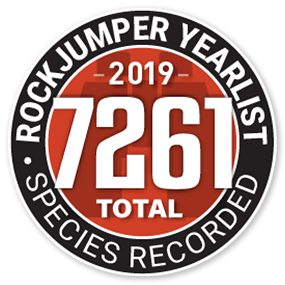
Modal title
Enquire about booking a tour.
- Tell us about your dream tour
- How many people do you expect to be on the tour? (optional)
- What are the date ranges you are looking at for this tour? (optional)
- How many days would you like the tour for? (optional)
- What is your price range for the tour? (optional)
Enquire about booking a tour 5
Your passport.
Add Attachment
Arrival Tour Information
Departure tour information.
Birding Tour Costa Rica Escape
Go to: Costa Rica Birding Tours | Birding Tours in the Neotropics | All our birding tours
Dates and Costs
11 – 19 January 2025
Spaces Available: 5
Price: US$5,224 / £4,402 / €5,122 per person sharing
Single Supplement: US$948 / £799 / €929
* Please note that currency conversion is calculated in real-time, therefore is subject to slight change. Please refer back to the base price when making final payments.
Recommended Field Guide
(Please also read our blogs about recommended field guides for the seven continents here )
Tour Details
Duration : 9 days Group Size : 4 – 8 Tour Start : San José Tour End : San José
Price includes:
All accommodation All meals Entrance fees Private transportation Private tour leader Transfers from/to the airport
Price excludes:
Flights Personal expenses such as laundry, drinks and alcoholic drinks, personal items, phone calls, internet access, etc. Gratuities ( please see our tipping guidelines blog ) Medical and trip cancellation insurance Any activity not described in the itinerary
Featured Guide:

Costa Rica Escape Tour January 2025
We believe this expertly tailored Costa Rica birding tour is the perfect excuse to leave behind the daily stress of modern-day living to do some great birding in one of the most fantastic birdwatching destinations in all of the neotropics.
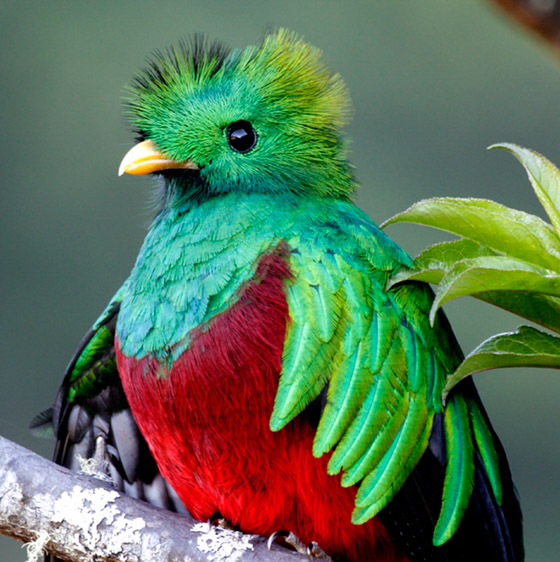
Costa Rica offers perhaps the best birding in Central America, not only in terms of birds (the country holds 933 species) but also in terms of accommodation and tourist infrastructure. During this short tour we are staying at some of the most comfortable hotels available, perfect for birders and nature-lovers alike. If you do not have time to join our more comprehensive Complete Costa Rica Tour but still want to see beautiful and charismatic neotropical bird species, then this Costa Rica Escape Tour could be perfect for you. The tour is suited for both first-time birders to the neotropics and those more experienced birders trying to get a high number of species in the shortest amount of time. Not only does this tour offer an impressive species list but it also offers you the opportunity to see a number of neotropical dream birds such as Keel-billed Toucan , Resplendent Quetzal and a plethora of gorgeous hummingbird species.
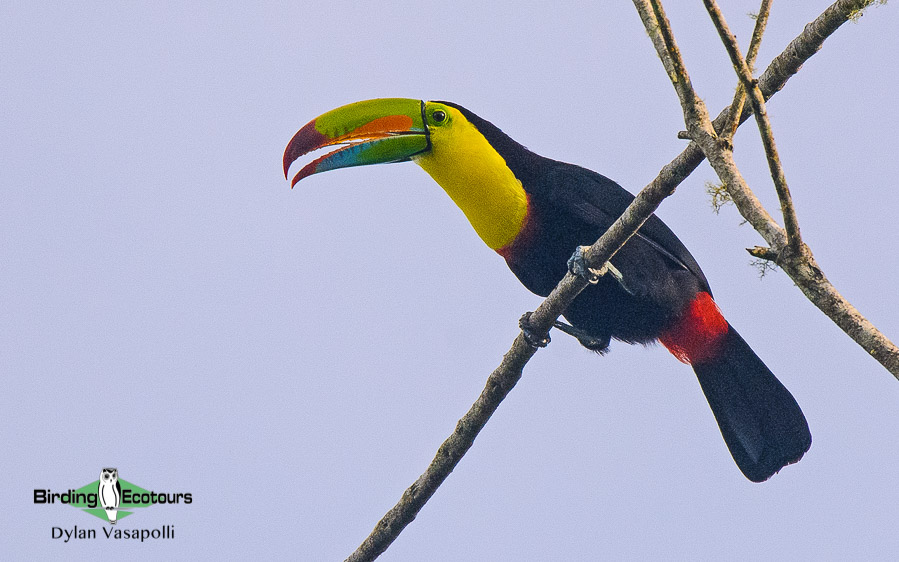
Itinerary (9 days/8 nights)
Day 1. Arrival at San Jos é and transfer to Hotel Bougainvillea
You will arrive at the San José Airport to be met by your tour leader, and be transferred to the hotel. If time permits, we may do some birding around the beautiful grounds of the hotel, looking for Rufous-backed Wren , Hoffmann’s Woodpecker , Finsch’s Parakeet , Squirrel Cuckoo , Baltimore Oriole , Cinnamon-bellied Saltator , American Yellow Warbler , Lesson’s Motmot , White-winged Dove , Rufous-tailed Hummingbird , Clay-colored Thrush , Yellow-bellied Sapsucker , Melodious Blackbird , Great-tailed Grackle , and with some luck, White-eared Ground Sparrow .
Overnight: Hotel Bougainvillea , San José
Day 2. La Paz Waterfalls, Cinchona Feeders, and transfer to La Quinta
We will spend some time birding the hotel grounds before breakfast to add any additional species to yesterday afternoon’s birding. After breakfast, we will leave the hotel and head to La Paz Waterfalls. Here we should get species such as Mountain Wren , Slaty Antwren , Slaty-backed Nightingale-Thrush , Large-footed Finch , and a number of hummingbirds such as Violet Sabrewing , Green Hermit , Green-crowned Brilliant , the endemic Coppery-headed Emerald and with some luck Purple-crowned Fairy . We will of course spend some time admiring the impressive waterfalls of the area too!
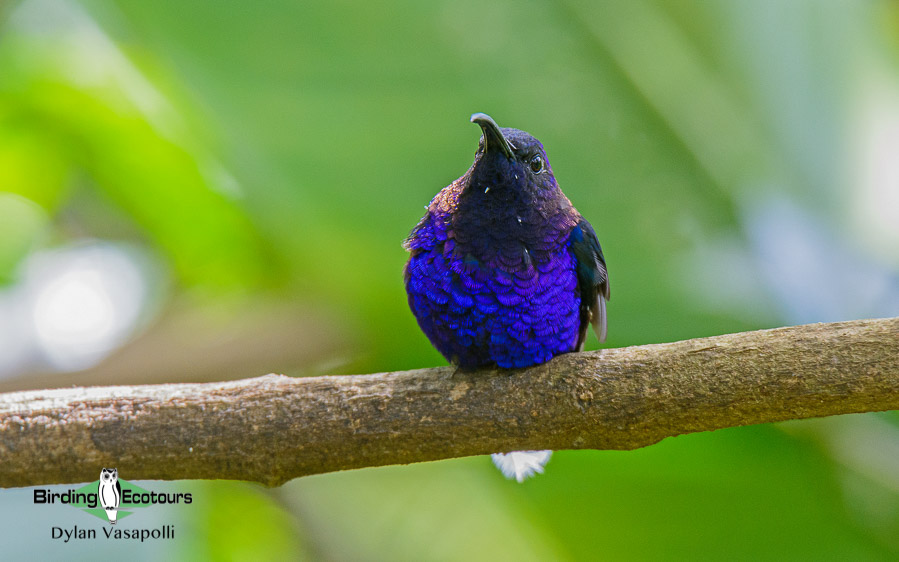
After lunch, we will visit the Cinchona feeders, where we can spend time watching and photographing birds such as Red-headed Barbet , Prong-billed Barbet , Blue-throated Toucanet , Silver-throated , Scarlet-rumped , Crimson-collared , Blue-grey , and Palm Tanagers , and with luck Black Guan and Buff-fronted Quail-Dove . After some great time at the feeders, we will transfer to Sarapiquí where we will look for iconic Caribbean foothills species such as Yellow-throated Toucan , Montezuma Oropendola , White-crowned Parrot , and Grey-headed Chachalaca .
Overnight: La Quinta Sarapiquí Country Inn , Sarapiquí
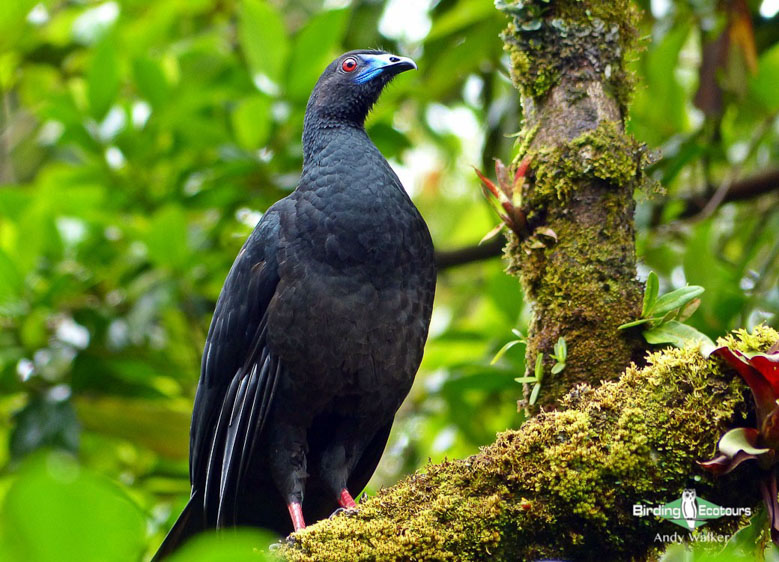
Day 3. La Selva Biological Station
We will have an early start to explore the famous La Selva Biological Station, where we have the chance to find Short-billed and Scaled Pigeons , Brown-hooded Parrot , Great Green Macaw , Snowy Cotinga , White-ringed Flycatcher , Fasciated Antshrike , White-collared Manakin , Crested Guan , Great Antshrike , Red-lored Amazon , and Chestnut-headed and Montezuma Oropendola . In addition, we’ll look for Semiplumbeous Hawk , Chestnut-sided and Buff-rumped Warblers , Great Tinamou , Vermiculated Screech Owl , Great Curassow , Northern Barred Woodcreeper , Rufous-winged , Pale-billed , Chestnut-colored , and Black-cheeked Woodpeckers , Keel-billed Toucan , and perhaps even the secretive Slaty-breasted Tinamou .
Day 4. Cope Wildlife Reserve and Puerto Viejo
We will have a full morning visiting the famous Cope Wildlife Reserve where we will have excellent opportunities to photograph birds visiting its amazing feeders. Some of the species regularly visiting the feeders might include Bronze-tailed Plumeleteer , Crowned Woodnymph , White-necked Jacobin , Stripe-throated Hermit, White-tipped Sicklebill , Green Hermit , Montezuma and Chestnut-headed Oropendolas , Orange-chinned Parakeet , Black-cheeked Woodpecker , Red-legged , Shining and Green Honeycreepers , and Crimson-collared Tanager. We will also explore some nocturnal bird territories near the reserve to look for potential roosting trees for Crested Owl , Spectacled Owl , and Black-and-white Owl , as well as Great Potoo . The open fields are good for Tropical Mockingbird and Yellow Tyrannulet . We will also have good chances to enjoy some other iconic Costa Rican wildlife including frogs, lizards, and mammals.
Late in the afternoon, we will explore some areas around Puerto Viejo where Great Green Macaw is reliable and other birds such as Slaty Spinetail , Long-tailed Tyrant , Yellow Tyrannulet , Olive-throated Parakeet , Morelet’s and Variable Seedeaters , and Thick-billed Seed Finch may be seen.
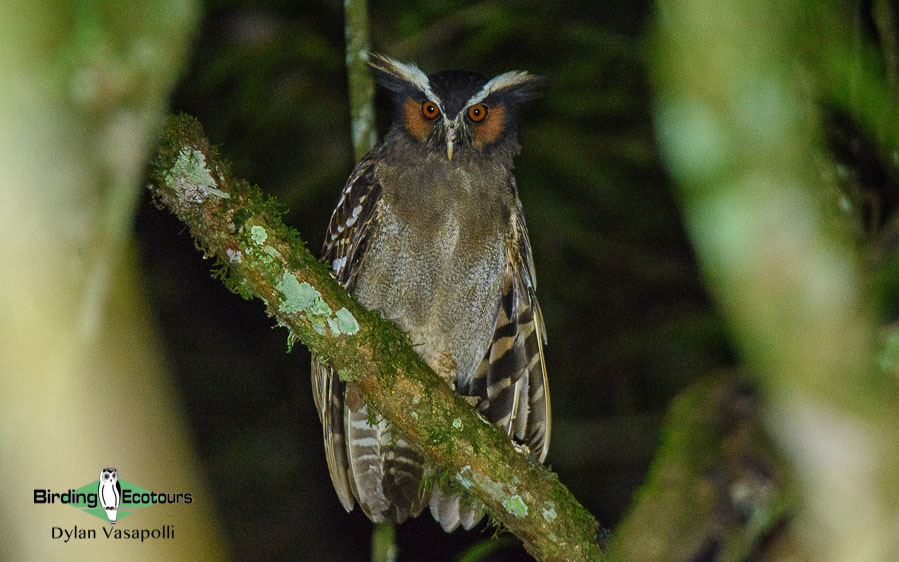
Day 5. Puerto Viejo and transfer to San Gerardo de Dota
Today we will leave Sarapiquí and make our way to San Gerardo de Dota and will break the long drive with a pleasant birding stop along the Sarapiquí River where, with luck, we might find Scarlet Macaw and King Vulture . We also have chances for Mangrove and Southern Rough-winged Swallows , Grey-breasted Martin , Prothonotary Warbler , Wedge-billed Woodcreeper , and Bare-throated Tiger Heron . We will then continue our drive to San Gerardo de Dota and, if time permits, enjoy some birding around Cerro de la Muerte, before reaching the lovely Savegre Lodge.
Overnight: San Gerardo de Dota valley
Day 6 . Los Quetzales National Park and Paraiso Los Quetzales Lodge
Today we will drive to the high elevations of Los Quetzales National Park. Once on the high grounds of the park we will focus on the range-restricted Volcano Junco and Timberline Wren . Other species are likely to include Large-footed Finch , Volcano Hummingbird , Black-capped Flycatcher and Red-tailed Hawk. We will then explore the lower areas in search of Black-eared Warbler , the shy Peg-billed Finch , and with luck, Barred Parakeet .
After birding the national park we will visit Paraiso Los Quetzales Lodge where we will enjoy the hummingbird feeders, likely getting views of Fiery-throated , Talamanca , and Volcano Hummingbirds , Grey-tailed Mountaingem and Lesser Violetear . The lodge is also a good place to look for the Mountain Thrush , Ruddy-capped Nightingale-Thrush , Black-billed Nightingale-Thrush , Black-and-yellow Phainoptila , and with luck, Golden-browed Chlorophonia .
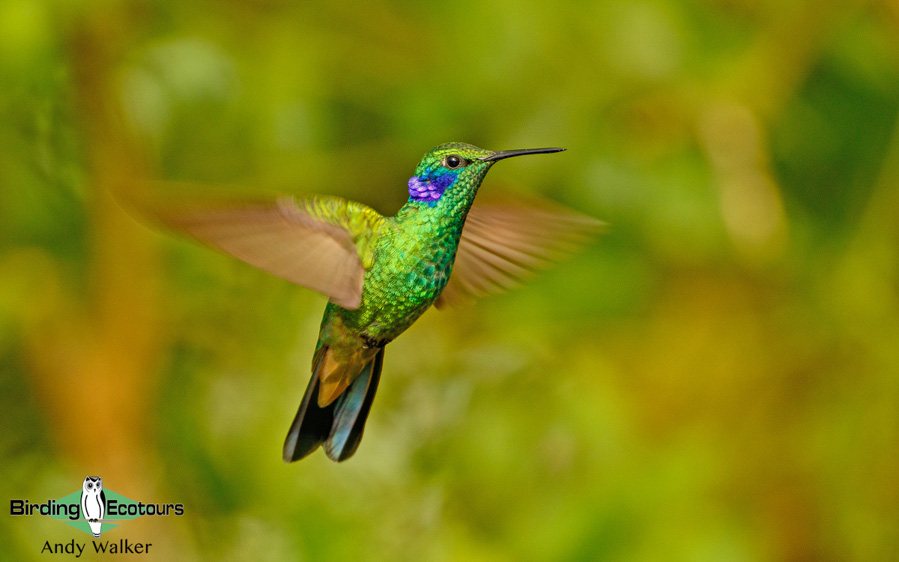
After lunch, we will explore the surroundings of the Cerro de La Muerte and spend the afternoon enjoying some coffee and hummingbirds at Miriam’s Restaurant where we should find Acorn and Hairy Woodpeckers , Sooty-capped Bush Tanager , Golden-browed Chlorophonia , Flame-colored Tanager , Large-footed Finch , Sooty Thrush and perhaps Blue-throated Toucanet . We will leave for our lodge before dusk and try for Dusky Nightjar en route.
Day 7. Savegre Lodge birding
Today we will have an early start to look for Resplendent Quetzal , perhaps the most-wanted bird in Central America. We will visit the most reliable spot in the valley to secure this special sighting. After breakfast, we will spend the morning exploring the lush mountain forest above the lodge, looking for Spotted Wood Quail , Ruddy Treerunner , Spangle-cheeked Tanager , Collared Whitestart , Black-capped Flycatcher , Buffy Tuftedcheek , Ruddy-capped Nightingale-Thrush , Silvery-fronted Tapaculo , and Flame-throated Warbler . Mixed flocks might hold North American migratory warblers such as Chestnut-sided , Black-throated Green , Black-and-white , and Wilson’s Warblers . In addition, we could find Sooty-capped Bush Tanager , Yellowish Flycatcher , Yellow-winged Vireo , Rufous-browed Peppershrike , and Black-faced Solitaire . We will spend the afternoon enjoying some easy birding around the lodge where we will keep an eye out for Finsch’s Parakeet , Long-tailed Silky-flycatcher , Slaty Flowerpiercer , Flame-colored Tanager , Acorn Woodpecker , Red-tailed Hawk , and Stripe-tailed and Scintillant Hummingbirds .
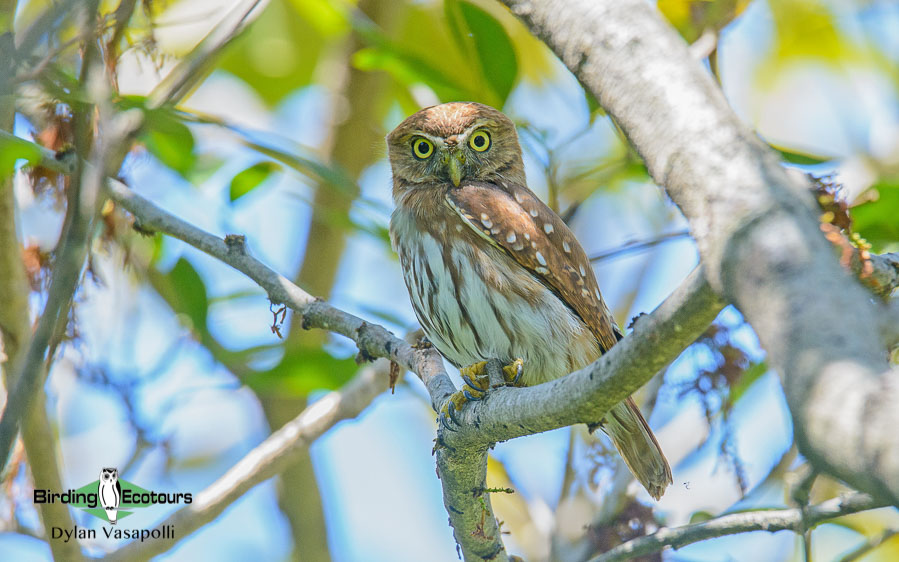
Day 8. Birding Savegre and transfer back to San Jose
We will spend an extra morning around Savegre in case we need another chance to look for the Resplendent Quetzal , if we missed it on the previous day. We can explore the waterfalls road to look for Yellowish Flycatcher , Dark and Ochraceous Pewees , Black-faced Solitaire , and with some luck, American Dipper . After lunch we will be transferred to San Jose’s Hotel Robledal where it is possible to find Ferruginous Pygmy Owl and Jamaican Fruit-eating Bats in the hotel grounds.
Overnight Hotel Robledal, San Jose
Day 9. Transfer to the airport and departure
You will be transferred to San Jose Airport at a convenient time to connect with your international flight
Please note that the itinerary cannot be guaranteed as it is only a rough guide and can be changed (usually slightly) due to factors such as availability of accommodation, updated information on the state of accommodation, roads, or birding sites, the discretion of the guides and other factors. In addition, we sometimes have to use a different international guide from the one advertised due to tour scheduling.
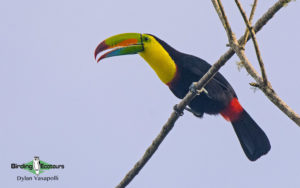
Keel-billed Toucan
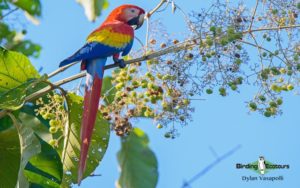
Scarlet Macaw
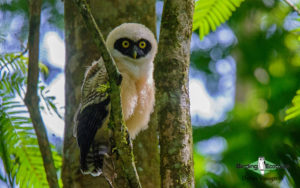
Spectacled Owl
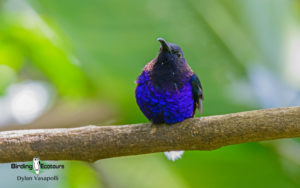
Violet Sabrewing
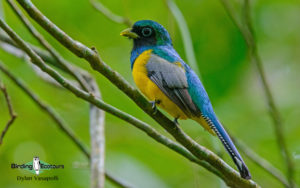
Black-throated Trogon
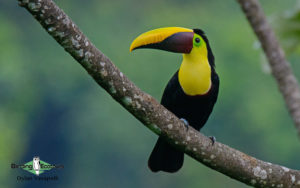
Yellow-throated Toucan
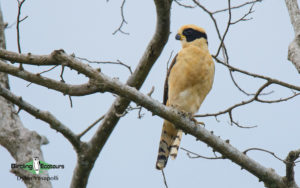
Laughing Falcon
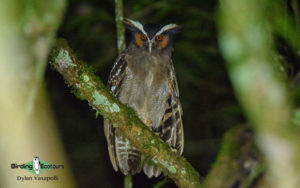
Crested Owl
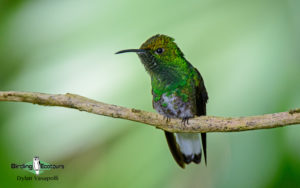
Coppery-headed Emerald
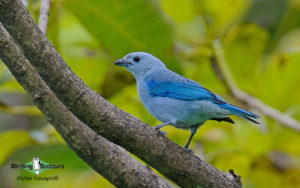
Blue-grey Tanager
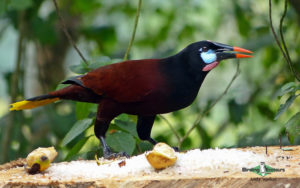
Montezuma Oropendola
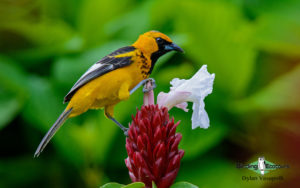
Spot-breasted Oriole
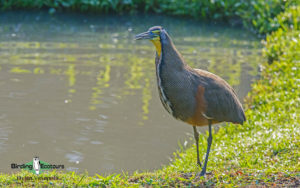
Bare-throated Tiger Heron
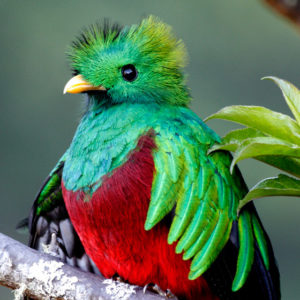
Resplendent Quetzal
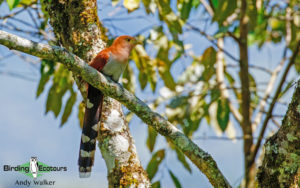
Squirrel Cuckoo
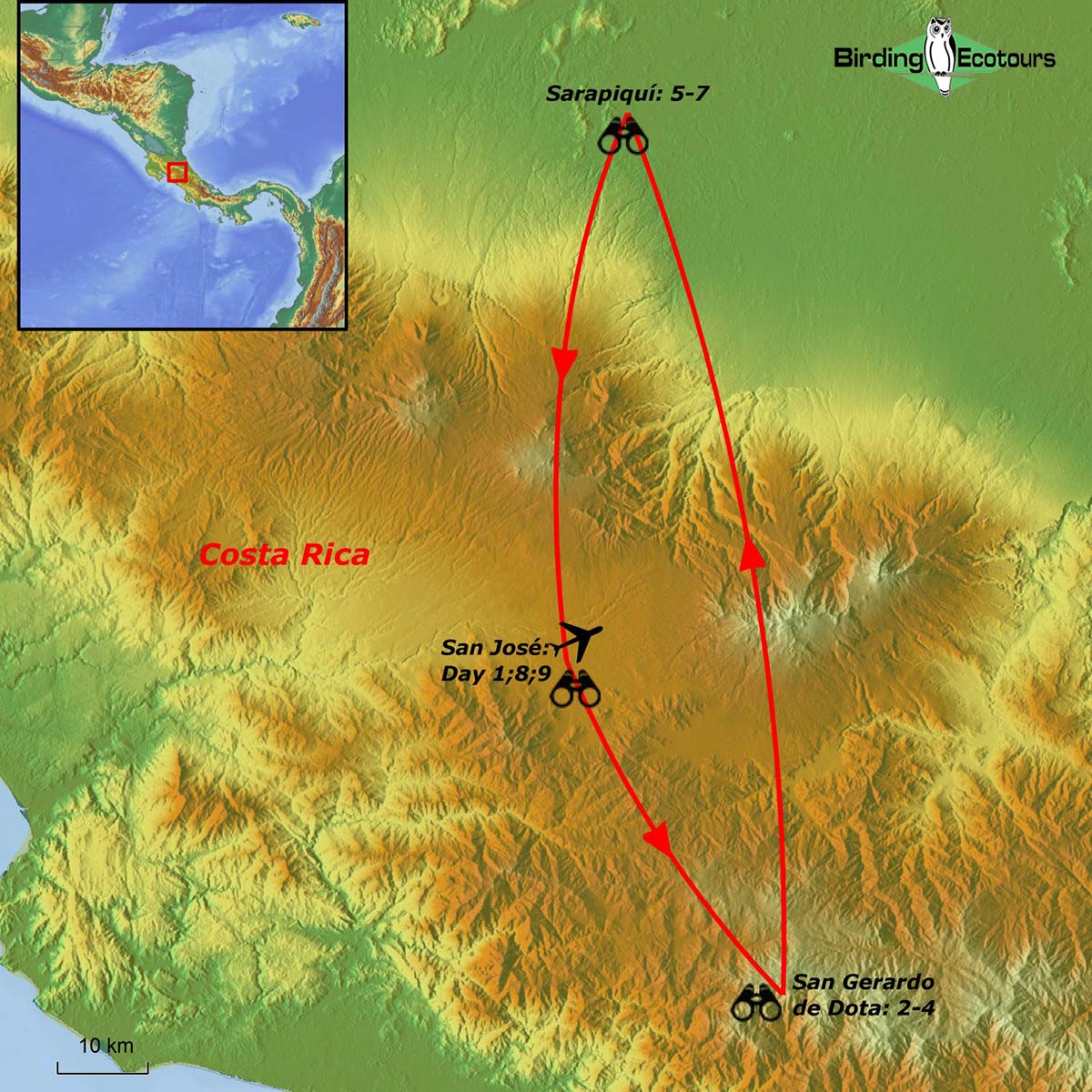
Costa Rica Escape Trip Report, January 2023
11- 19 january 2023, by sarah preston.
DOWNLOAD TRIP REPORT

A rapt bunch of birders watched this male Resplendent Quetzal eat its avocado breakfast.
This Costa Rica Escape 2023 trip was an incredible trip, which allowed us to see the best of the country in just a week. Costa Rica is perhaps the easiest country to bird in the tropical Americas, and most of the Neotropical families are well represented. With great roads, comfortable tourist and service facilities, and modern infrastructure, the country, and this trip in particular, is the best choice for those who come to the tropics for the first time.
Our adventure started in San José, the capital of Costa Rica, and we managed to explore different habitats and ecosystems, ranging from the cloudforest mountains of Savegre in central Costa Rica to the Caribbean foothills. Of the 931 species of birds that occur in Costa Rica we managed to record more than a quarter in a week only! We saw 270 species as well as an additional 18 species that were heard only.
Our trip list included sightings of amazing species such as Resplendent Quetzal , Violet Sabrewing , Black and Crested Guans , Yellow-throated and Keel-billed Toucans , Spectacled and Crested Owls , Flame-throated and Black-cheeked Warblers , Long-tailed Silky-flycatcher , Prong-billed and Red-headed Barbets , American Dipper , Black-breasted Wood Quail , and Golden-Browed Chlorophonia . In addition, we managed to see one of two country endemics that occur on the mainland, Coppery-headed Emerald , and we saw 28 birds that are shared only by Costa Rica and Panama. A nice selection of North American migratory warblers was also found, such as Chestnut-sided , Tennessee, Black-and-white , Golden-winged , Black-throated Green , Townsend’s ,and Wilson’s Warblers , 7 species of owls, and 26 species of hummingbirds.
It was a memorable trip, with most participants visiting the tropics for the first time. This fun group of clients was able to experience the excellent food, amazing wildlife, and friendly people that make Costa Rica a popular vacation destination. We hope that you can join us on our Costa Rica Escape 2024 tour!
Detailed Report
Day 1, 11 th january 2023. hotel bougainvillea.
Half the group had arrived at Hotel Bougainvillea by the afternoon, so after lunch we birded the lush gardens behind the hotel. A resident Ferruginous Pygmy-Owl was perched in out in the open and one Mottled Owl was seen roosting in a large stand of bamboo. Several Lesson’s Motmots were seen, and a pair of Red-billed Pigeons were observed in courtship and copulation. Two White-fronted Amazons and a flock of Finsch’s Parakeets flew overhead. That evening a Common Pauraque called loudly in the parking lot and could be heard from inside our rooms.
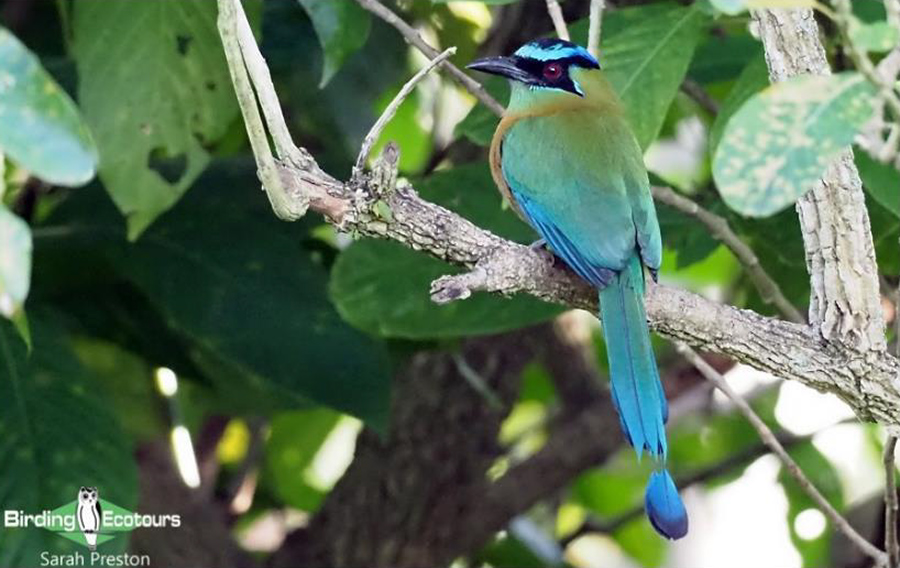
Lesson’s Motmots were actively hunting in the Hotel Bougainvillea garden.
Day 2, 12 th January 2023. Irazu Volcano National Park to Savegre Lodge
The group spent the first hour of our first full day birding the gardens behind Hotel Bougainvillea before breakfast. The Ferruginous Pygmy-Owl was again perched in full view and two Mottled Owls were roosting in the bamboo. We tried for White-eared Ground-Sparrow and Chestnut-capped Warbler , which were heard calling and the warbler gave brief views, but neither species cooperated well. Several species perched in the large, leafless tree in the center of the garden: a Masked Tityra , six Brown Jays , and a Tennessee Warbler . A couple Rufous-naped Wrens , a Cabanis’s Wren , and a Rufous-collared Sparrow were observed singing. Just before breakfast a male Montezuma Oropendola flew in and displayed. The female flew in, and they copulated.
After breakfast we drove up into the highlands to Irazu Volcano National Park. At the crater, there were Volcano Juncos in the parking lot. The entire group watched a male Volcano Hummingbird display several times – singing and flying high into the air and coming back to perch. We had our first looks at Slaty Flowerpiercer , Sooty Thrush , Fiery-throated Hummingbird , and Sooty-capped Bush Tanager . When stopped for lunch on the way down the mountain, a Short-tailed Hawk was observed soaring over the valley below.
On the way to Savegre Lodge, we stopped at Miriam’s Quetzals Restaurant where there are feeders in the back and a view of the Savegre Valley. Several species of hummingbirds were coming to the feeder and flowers: Talamanca , Fiery-throated , and Volcano Hummingbirds , Lesser Violetear , and Grey-tailed Mountaingem . The fruit feeder hosted Yellow-thighed Brush-finch , Mountain Thrush , Large-footed Finch , Flame-colored Tanagers , and Acorn Woodpeckers . One of the restaurant staff alerted us to the presence of a male Golden-browed Chlorophonia feeding on crabapples in the side garden and we watched it at length. First looks were had of Ruddy Treerunner and Yellow-winged Vireo , both seen briefly. A male and female pair of Yellow-bellied Siskins were seen perching high behind the feeders.
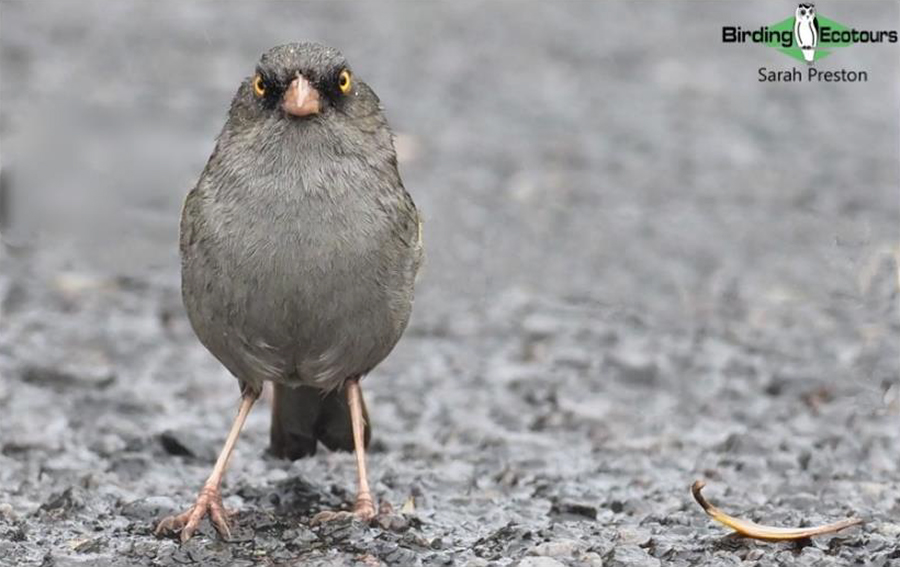
The Volcano Junco’s piercing yellow eyes made it look angry.
We arrived at Savegre Lodge just before dusk and noticed a woman photographing something in a tree at the entrance. When we found out it was an immature male Resplendent Quetzal , we pulled over and everyone eagerly bailed out of the vehicle to see it. Number one species acquired!
Day 3, 13 th January 2023. Savegre Lodge to Los Quetzales National Park
We left before dawn to go a few miles down the road to join the vigil for the male Resplendent Quetzal that had been frequenting an avocado tree at dawn. The spectacular bird arrived as if on cue, fed from the avocado tree, and sat still for a long time for excellent scope views. After digesting for at least an hour, it went briefly to the tree again then flew down into the valley and disappeared. Everyone enjoyed seeing its tail stream behind it while it flew. After our breakfast, we took a two-mile walk up the hillside behind the hotel. The variety of species there was impressive! We had close looks at Collared Whitestart and Grey-breasted Wood-Wrens singing, several cooperative Flame-throated Warblers , great looks at two Black-faced Solitaire and Yellowish Flycatcher and encountered a mixed migrant warbler flock that included Wilson’s , Black-throated Green , and Townsend’s Warblers . At least ten White-collared Swifts soared overhead. We enjoyed scope views of Sulphur-winged Parakeets and Barred Becard . We had brief views of an Olive-streaked Flycatcher feeding on berries with a Mountain Elainea and a Philadelphia Vireo until a Spot-crowned Woodcreeper stole our attention. Once back down near the rooms we observed a Scintillant Hummingbird , Long-tailed Silky-Flycatchers , and Slaty Flowerpiercer feeding.
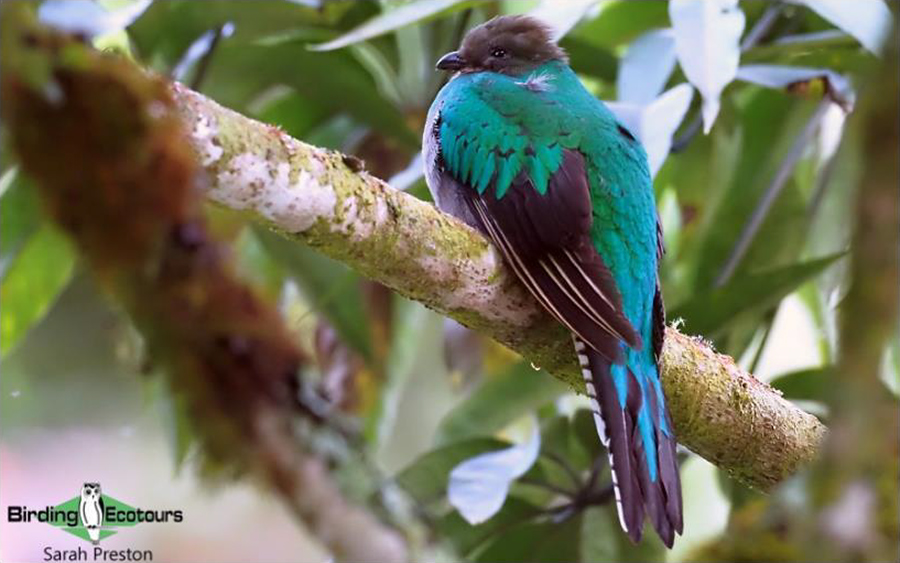
Resplendent Quetzal , the first of two of this most-wanted species seen on the trip.
After lunch we drove to Villa Mills, which is above 9,000 feet elevation. At the beginning of the trail, a keen tour participant found an endemic Black-cheeked Warbler and there turned out to be three of them. A Timberline Wren was singing but didn’t come out. We did get views of several Black-billed Nightingale-Thrush , which were also singing. We saw the hilarious looking Buffy Tuftedcheek and got better views of Ruddy Treerunner .
We moved on from there a short distance down the mountain to a gravel road within Los Quetzales National Park. We found a perched Talamanca Hummingbird and a Grey-tailed Mountaingem preparing to roost for the night, offering fantastic looks. Just at dusk, the Dusky Nightjar began calling. It flew up to a branch right above the road and perched for several minutes, offering phenomenal views, until a car flushed it. As it flew, the buffy corners of the tail could be seen. After this, we tried for the endemic Bare-shanked Screech-Owl , which was quite cooperative, and everyone got amazing looks of the owl perched in the open.
Day 4, 14 th January 2023. Parque Nacional Los Quetzals and San Gerardo de Dota Sendero Catarata
We took our customary morning walk, this time along Río Savegre, and saw several Torrent Tyrranulets , including a pair possibly setting up nesting territory. The small black, gray, and white flycatchers were fun to watch moving around the rocks on the river, occasionally flying up for an insect. A Stripe-tailed Hummingbird was feeding on flowers alongside the road allowing for good looks at its namesake and a silent Belted Kingfisher rocketed down the river. We got our first looks at Common Bush Tanager and compared them to nearby Sooty-capped Bush Tanager . On the way back, we admired a flock of Long-tailed Silky-Flycatchers .
After breakfast, we visited Parque Nacional Los Quetzals and encountered a mixed flock of species previously seen that included Barred Becard . Timberline Wren was seen at last, three individuals together. We watched a pair of Black-capped Flycatchers actively foraging and had scope views of Mistletoe Tyrannulet and of a pair of Black-and-yellow Phainoptila . A Wrenthrush was calling and did get very near the group, but didn’t come out, only its movement was seen. We had a fantastically close look at a male Volcano Hummingbird (heliotrope-throated subspecies). A Ruddy Pigeon called “mashed potatoes” in the distance, but never came close.
We stopped for lunch and hummingbird photos at Paraíso Quetzal Lodge. There we had ridiculously close encounters with Volcano , Fiery-throated , Talamanca Hummingbirds , Lesser Violetear , and Grey-tailed Mountaingem . A male Volcano Hummingbird was displaying nearby. We had a second look at Golden-browed Chlorophonia when a pair perched in a treetop eye-level to the platform.
In the late afternoon, we hiked the San Gerardo de Dota Sendero Catarata (Waterfall Trail). It was exciting to see two pairs of American Dippers foraging underwater for insects in the river as well as Dark Pewee , endemic to Costa Rica and western Panama, and two Tufted Flycatchers hawking insects. We had brief encounters with Ochraceous Wren , Red-faced Spinetail , Black-thighed Grosbeak , and Spotted Barbtail and a long look at a singing Ruddy-capped Nightingale-Thrush at dusk and spotted another one as we exited the trail.
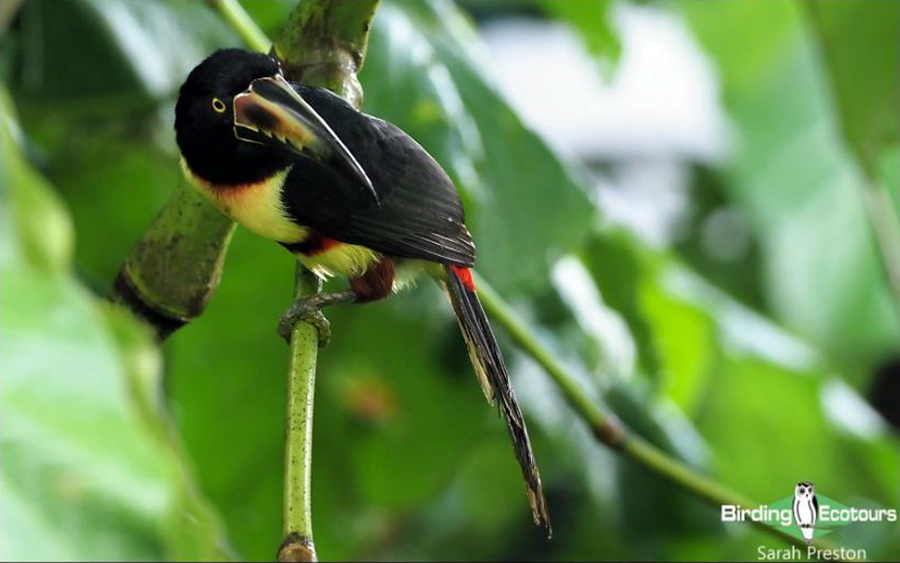
Collared Aracari were common, but attractive, guests at several fruit feeders we visited.
Day 5, 15 th January 2023.Rio San José and Comandancia de Sarapiquí Road
We took one last pre-breakfast walk around Savegre before heading to La Quinta Sarapiquí Lodge where we would stay the next three nights. We got our first view of Slate-throated Whitestart , albeit brief. The highlight of the walk was the discovery of a Lesser Violetear nest with two young, especially when a parent came and fed them.
Since the weather wasn’t favorable the day before, we returned to Parque Nacional Los Quetzals. A White-fronted Tyrannulet was seen several times moving about. The main target, missed yesterday, was the Costa Rican Pygmy-Owl , endemic to the Costa Rican and western Panamanian highlands, which we ended up seeing in full view for several minutes to our amazement.
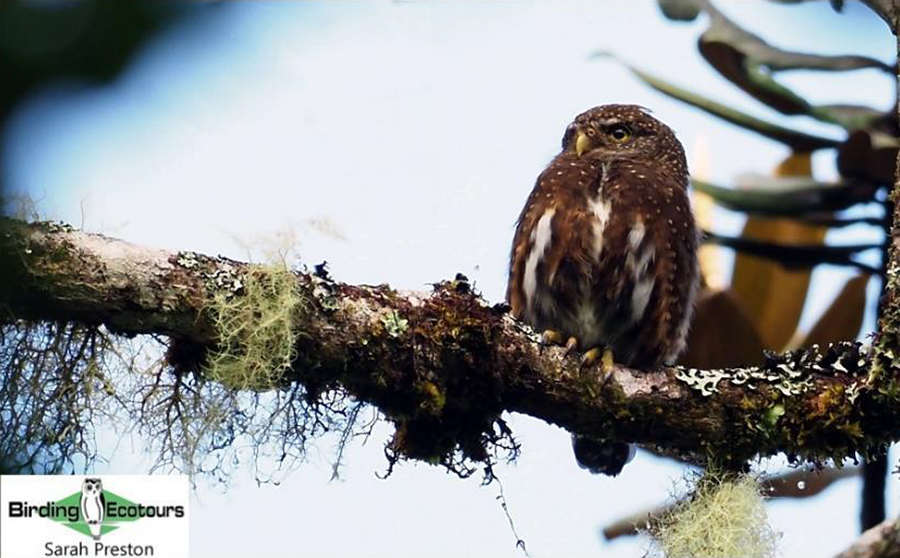
Viewing this endemic Costa Rican Pygmy-Owl was a truly unforgettable experience.
We made a stop after lunch to bird Calle Israel along Rio San José. We eventually got fantastic views of the main target, Fasciated Tiger-Heron , which flushed at first, but then two were viewed well from the vehicle. A Spotted Sandpiper , a juvenile Little Blue Heron , a Northern Waterthrush and Buff-rumped Warblers were also feeding along the river. We had first looks at Collared Aracari feeding in a fruiting tree. An Amazon Kingfisher that flew down the river was viewed by some as it perched briefly. Scope views of White-crowned Parrots were also had.
A few new species were added on the drive. A small pond along the road yielded some waders on the way to Sarapiquí: Great-Blue Heron , Northern Jacana , and Great Egret . Cattle Egrets and Groove-billed Ani were seen as we drove by fields and scrub habitat.
Our last stop of the day was Comandancia de Sarapiquí Road, an open area with a few very large trees. The big draw here was the Great Green and Scarlet Macaws and both species were seen in flight. One Scarlet Macaw perched high, but in the open. A pair of Bat Falcons were also perched high, at the top of a tree. A soaring Short-tailed Hawk gave distant views. A pair of Slaty Spinetails were observed nest building. Common Tody-Flycatcher came in close for a great photographic opportunity. Two Black-striped Sparrows were calling and occasionally came into view. Several other flycatcher species were observed: Grey-capped Flycatcher , Tropical Kingbird , Great Kiskadee , Northern Tropical Pewee , and Mistletoe Tyrannulet . Many Montezuma and three Chestnut-headed Oropendolas flew overhead. Variable Seedeaters were mimicking a variety of other birds’ songs and flocking with a Morelet’s Seedeater .
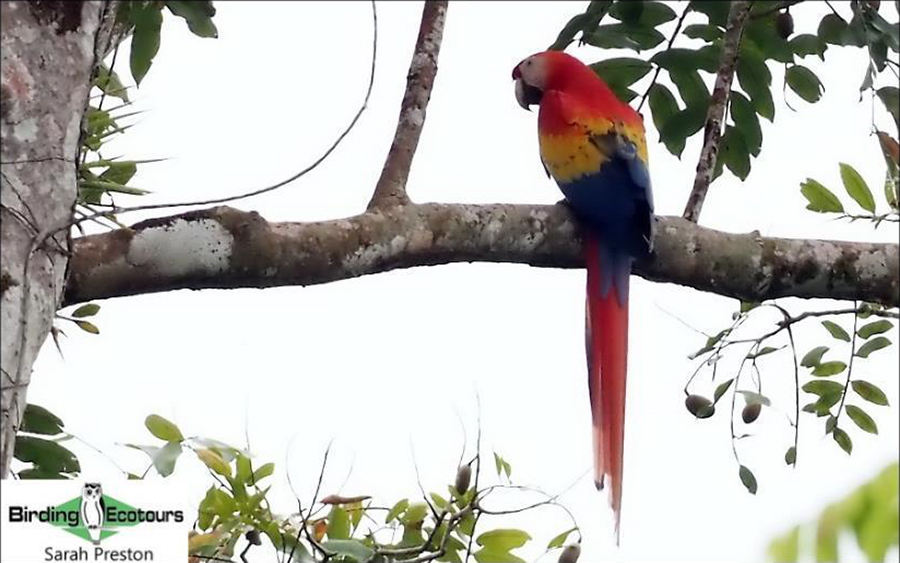
It was awe-inspiring to see wild Scarlet Macaws .
Day 6, 16 th January 2023. La Quinta Sarapiquí Lodge, Cope’s Place and La Quinta
Excited to bird a new location, we took our usual walk before breakfast around La Quinta Sarapiquí Lodge and immediately encountered a new species, a cooperative Stripe-breasted Wren . Near the Caiman lake, we found a couple Orange-billed Sparrows , a Northern Waterthrush , a Buff-rumped Warbler , and a Green Kingfisher . In the woods, a Slate-colored Grosbeak called from high in the trees. We had brief looks at a female Blue-black Grosbeak and would later also get glimpses of the male. The two feeders on the property hosted a variety of species including Clay-colored Thrush , Green and Red-legged Honeycreeper , Black-cheeked Woodpecker , Rufous-tailed Hummingbird , Grey-headed Chachalaca , Red-throated Ant Tanager ,and Palm, Scarlet-rumped, and Golden-Hooded Tanagers .
After breakfast, we headed to Cope’s Place. On the way we paused for great looks at a Grey Hawk on a pole. As soon as we arrived, we were treated to a perched Band-tailed Barbthroat . We spent an hour at Cope’s feeders watching and photographing Long-billed and Striped-throated Hermits , Shining , Green , and Red-legged Honeycreepers , a Bronze-tailed Plumeleteer , a Green-breasted Mango , many White-necked Jacobins , and Chestnut-headed and Montezuma Oropendolas . We got our first close looks at Pale-vented Pigeons and Orange-chinned Parakeets , previously fly overs, and saw our first Keel-billed Toucan , which came to the bananas. A Russet-naped Wood-Rail came out and ate the rice. We also enjoyed talking with Cope and looking at his amazing photographs and artwork.
We took a walk in Cope’s farm with one of the guides who showed us a colony of Honduran White Bats roosting under a huge leaf. Early in the walk we had brief looks at a pair of Cinnamon Woodpecker and good looks at two Scarlet-rumpled Caciques . We were amazingly fortunate to see and photograph two Crested Owls perched together and an immature Spectacled Owl . We also viewed two Green Ibis . On the way out, we marveled over a huge Bullet Ant on a log.
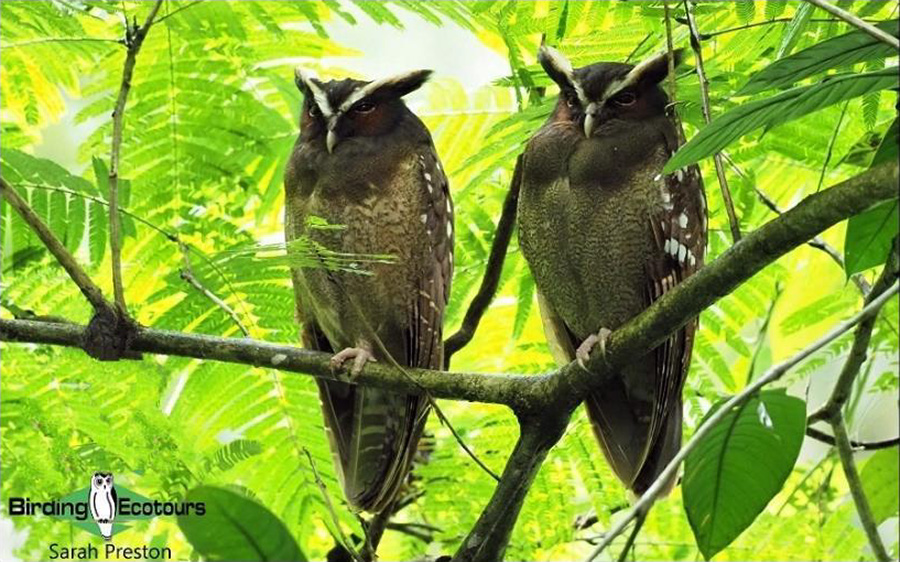
We counted ourselves lucky to see this pair of Crested Owls right out in the open.
After lunch and a break, we had planned to drive to an open area close to La Quinta. We stopped for five Southern Lapwings in a field and also saw a pair of Lineated Woodpeckers there. We never got to the intended location because next we stopped for a probable Motmot and ended up finding 46 species at the “Crazy Corner” and never did get a motmot. Highlights included three species of Antshrike, all seen very well: Great (singing male), Fasciated (male and female), and Barred Antshrike (male and female). We had spectacular views of Squirrel Cuckoo , Black-crowned Tityra ,a singing Rufous-tailed Jacamar , and Canebrake Wren . We watched a Long-tailed Tyrant sally for insects. Three Giant Cowbirds flew over and one perched briefly.
In the evening we went searching for nocturnal creatures and found a Common Rain Frog , a Slender Anole , a Cane Toad , a Long-nosed Proboscis Bat , and several Spectacled Caiman .
Day 7, 17 th January 2023. La Selva Biological Station
A big day with 92 species recorded!
We birded around La Quinta before breakfast and picked up Purple-crowned Fairy and Black-cowled Orioles , new for the trip.
We spent the rest of the morning at La Selva Biological Station. The variety of birds just at the headquarters was amazing and included several Short-billed Pigeons , nesting Olive-backed Euphonia and Crested Guans , a soaring Double-toothed Kite , a female White-ruffed Manakin , and a male White-collared Manakin . Once in the jungle, woodpeckers were a highlight with a nest-building Chestnut-colored Woodpecker and Pale-billed Woodpeckers feeding young. Some in the group enjoyed their lifer look at a Kentucky Warbler while others worked to identify a Streak-headed Woodcreeper . The morning included notable mammal sightings: a troop of Golden-mantled Howler Monkeys and two Brown-throated Three-toed Sloths . Just before a pre-lunch snack of fresh watermelon and pineapple, we added Black-headed Tody-Flycatcher and Cinnamon Becard to our list of birds seen well.
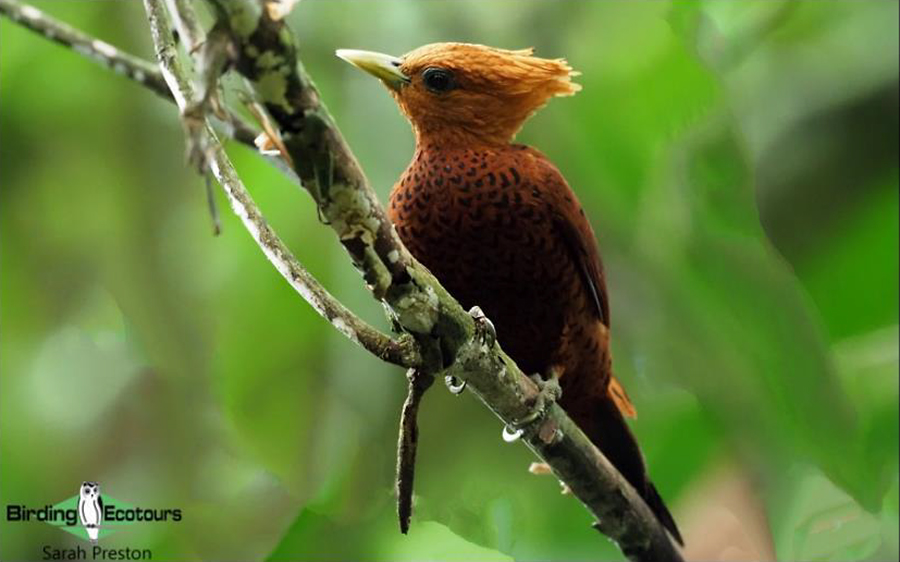
Watching woodpecker nesting activities, including Chestnut-colored Woodpeckers , was a treat.
After lunch and a break, we returned to La Selva Biological Station until dusk. Upon arrival, we had brief views of a Bay-headed Tanager and a male Snowy Cotinga and a Scarlet-thighed Dacnis were perched in the open for excellent scope views. Then several Yellow-throated and Keel-billed Toucans and a group of Red-lored Amazons flew in. From the bridge, we viewed our first White-ringed Flycatcher ,a Rufous Mourner ,and a Slaty-tailed Trogon giving fantastic views perched in the open, eye-level to the bridge. Just after crossing the bridge, the only Blue-chested Hummingbird of the trip was seen foraging in a large flowering tree. The same area also hosted Social , Grey-capped ,and Boat-billed Flycatchers .While walking the trail, a male Great Tinamou and three chicks walked across the trail in front of us. At dusk, a pair of Middle American Screech-Owls were calling, and one was cooperative, allowing for excellent views.
Day 8, 18 th January 2023. La Selva to San Jose
We had a goal to break 100 species for our last birding day and we did it!
We started early to begin birding the road near the main entrance to La Selva before dawn. While it was still dark, we saw several Common Pauraque foraging for insects in the streetlight and heard a Little Tinamou calling. At dawn, we observed a Short-tailed Nighthawk flying around.
After dawn, we observed many birds from a spot just outside the main entrance including a close, perched Semiplumbeous Hawk , an Ochre-bellied Flycatcher , a Southern Rough-winged Swallow , many Collared Aracaris and Yellow-throated Toucans , a Keel-billed Toucan , a Brown-hooded and several Red-lored Amazons , and a flock of Orange-chinned Parakeets. At one point, we heard a Slaty-breasted Tinamou that sounded like a mini train and very close by, so we investigated, but it was like a ghost. Our foray into the forest wasn’t for naught, though, because we saw several Wedge-billed Woodcreepers and a Cocoa Woodcreeper at that time. The trail led us to an open area where we added two new species: a Bronzy Hermit and a pair of Olive-crowned Yellowthroats .
It was time to return to the lodge for breakfast, but two spontaneous birding stops were a necessity. First, we stopped for seven Scarlet Macaws in a single tree by the road. Then just before the lodge, we saw a Broad-billed Motmot on a wire and got two noisy Bright-rumped Attilas as a bonus.
After breakfast we bid goodbye to La Quinta and headed to San Jose, but not before watching a Strawberry Poison-dart Frog sing right outside our rooms.
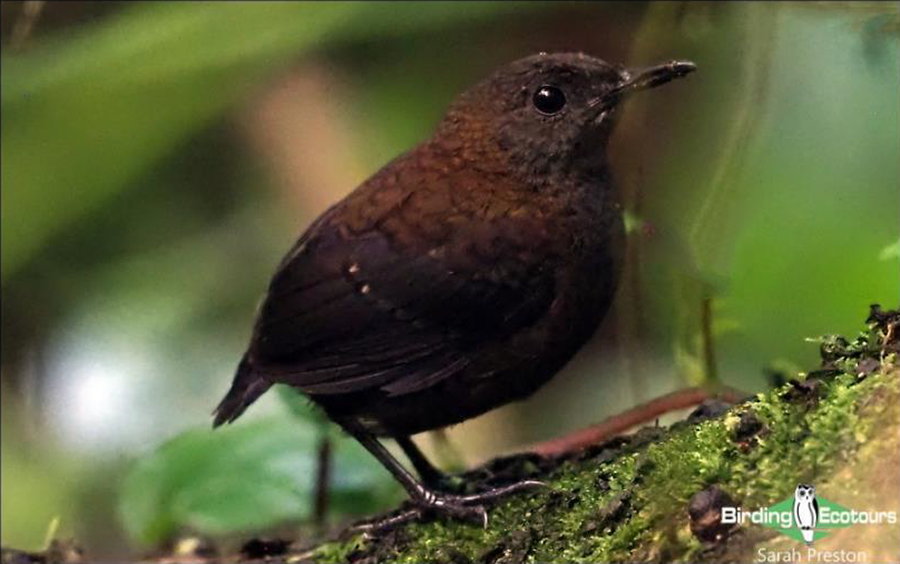
Nightingale Wren , a shy, plain bird that put on a show.
We made several birding stops at different elevations, the most productive of those was Virgin del Socorro and we hated to leave. On the drive down into the valley we spotted a Slaty-backed Nightingale-Thrush and a Lesser Greenlet was the first bird we spied at the bottom. We saw many flycatcher species and added these new ones to our list: Slaty-capped Flycatcher , Scale-crested Pygmy-Tyrant , and Eye-ringed Flatbill . Warblers were actively feeding, and we added Tropical Parula, Blackburnian and Golden-crowned Warblers to our list and got a second look at Golden-winged Warbler and Slated-throated Whitestart here. A large flock of vultures soaring over the valley included all three species: King , Black , and Turkey Vulture. One keen-eyed participant got a long look at a Chestnut-backed Antbird , which played hide and seek with the rest of the group. More cooperative birds included an Olivaceous Woodcreeper , three Black-thighed Grosbeaks , a Collared Trogon perched in the open, and a Nightingale Wren that showed itself and put on quite the concert within a few feet of the entire group.
On the way up to the Cinchona Feeders we stopped for a much better view of a pair of Bat Falcons than before and a brief look at a large group of White-nosed Coati being fed by gullible tourists.
The Cinchona Feeders were an obligatory stop for both the waterfall overlook view and the amazing birds. We picked up our three main targets for this location almost immediately: Red-headed and Prong-billed Barbets , and two Blue-throated Toucanets. We also got first looks at Green Hermit and Green-Crowned Brilliant, a second sighting of Crimson-collared Tanager , our sole sighting of Black-headed Saltator , and our only rare bird of the trip, Yellow-winged Tanager , which has somewhat recently expanded its range southward into Costa Rica.
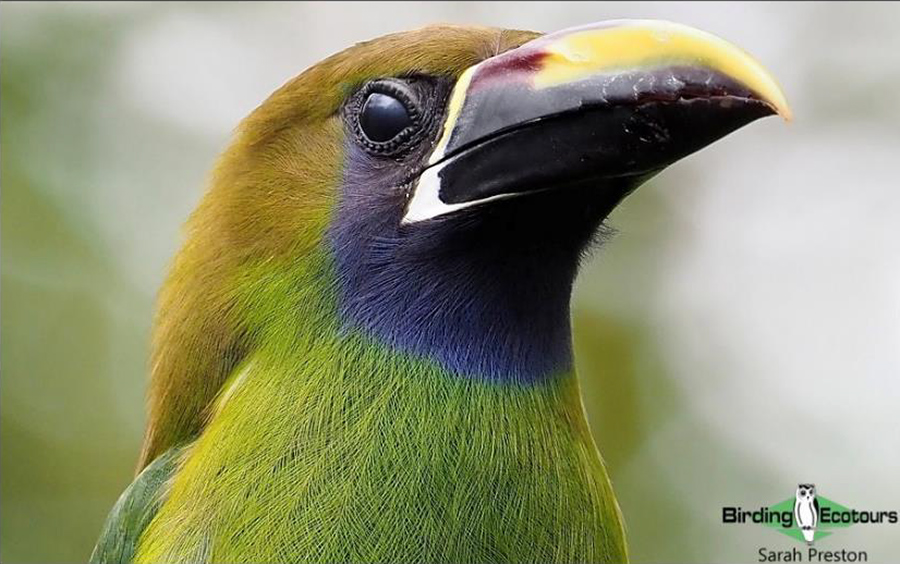
A beautiful pair of Blue-throated Toucanets were the stars of the Cinchona Feeders.
We stopped at La Paz Waterfall Gardens for both birds and lunch. One of two major targets was obtained while eating, the Sooty-faced Finch , an individual known to beg rice from diners and a species otherwise very difficult to see. The group was practically bum rushed by a flock of eight of the other target, Black-breasted Wood-Quail , when they noisily crossed the set of stairs where we were standing. Several new-for-the-trip hummingbirds were viewed at the many feeders: Green Thorntail , White-bellied and Purple-throated Mountaingems , Black-bellied Hummingbird ,and Coppery-headed Emerald . On the way out, a participant that was lagging behind the group snagged the only Tawny-capped Euphonia and last new species of the trip.
Day 9, 19 th January 2023. Departure
Our international flights left from Juan Santamaría International Airport.
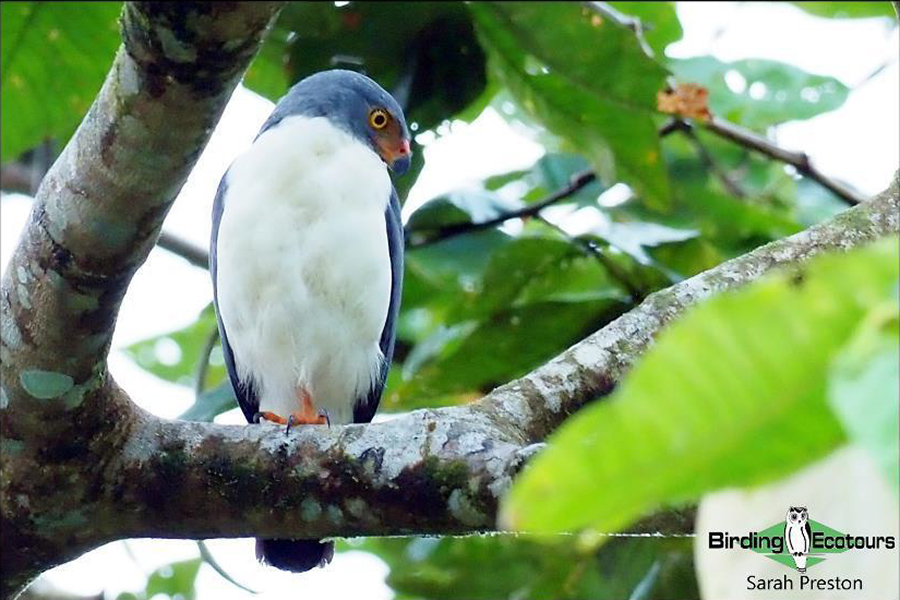
This Semiplumbeous Hawk perched nearby, undetected until the birds gave it away.
Bird List – Following IOC (12.2)
Birds ‘heard only’ are marked with (H) after the common name, all other species were seen.
The following notation after species names is used to show conservation status following BirdLife International: CE = Critically Endangered, EN = Endangered, VU = Vulnerable, NT = Near Threatened.
Insect List
Mammal list, reptiles and amphibians list.
Please see the downloadable PDF above with the full species lists included. This is a sample trip report. Please email us ( [email protected] ) for more trip reports from this destination.
COSTA RICA ESCAPE TOUR-SPECIFIC INFORMATION
PLEASE CLICK HERE FOR GENERAL INFORMATION PERTAINING TO ALL OUR COSTA RICA TOURS
Our Costa Rica Escape tour is a great, nine-day trip across one of the most exciting destinations in the neotropics. Our tour will start in San José and will take you to explore the Caribbean foothills in the north where we will have the chance to explore La Selva Biological Station and other famous birding sites. Here we hope to see iconic species such as Snowy Cotinga , Montezuma Oropendola , Keel-billed Toucan , Collared Aracari and Great Green Macaw . There are excellent chances for other wildlife sightings too, with Brown-throated Sloth , Honduran White Bat and Strawberry Poison-dart Frog , all possible. The birding is generally easy-going with ample opportunities to relax and enjoy bird feeding stations. We will spend quality time walking along exciting forest trails. Another part of our tour will take us to the San Gerardo de Dota to explore the cloudforest mountains looking for the incredible Resplendent Quetzal and other specials such as Wrenthrush , Dark Pewee , Spotted Wood Quail , Long-tailed Silky-flycatcher , and Blue-throated Toucanet , while staying at the comfortable Savegre Lodge as our base for three nights.
ARRIVAL INFORMATION
Please e-mail us ( [email protected] , or contact us in a different way, if preferred) before you book any flights, as the information shown here is just an initial guide. Our tour will start in the city of San José, at San José’s de Costa Rica Juan Santa María International Airport (SJO) which can be reached by flights from most major airports from the US, Europe and Panama City (Panama). You may wish to consult your travel agent to book your most convenient flight, although please contact us if you need any guidance. Your tour leader will be waiting for you at San José Airport with the Birding Ecotours logo displayed and will then transfer you to your nearby hotel. Please be aware that most international flights arrive in San José around midday. We don’t have any birding activities planned for the first afternoon but we can enjoy birding around the hotel grounds where we can get a nice set of birds. In case you arrive on an early flight, you will be transferred to the hotel but may have to wait until check-in is available (normally in the early afternoon, although you can easily pass the time wandering around the hotel grounds). For an early check-in, you might be charged extra directly by the hotel; this cost is not included in the Birding Ecotours tour price.
Please remember to keep your luggage tags, as they are required to exit the terminal at the San José Airport.
When filling out the customs declaration form, please use the hotel address below:
Hotel Bounganvillea Santo Tomás, Heredia, Santo Domingo, 40302, Costa Rica
DEPARTURE INFORMATION
Our tour will end in the city of San José after a wonderful nine days in Costa Rica. On the final morning you will be transferred to the San José Airport (SJO) from where you can catch your connecting flight.
DOMESTIC FLIGHT INFORMATION
There are not domestic flights needed on this birding tour.
PHYSICAL REQUIREMENTS AND PACE
We grade this trip as easy, with most of the birding consisting of walking along roads, although some of them lead up and down hills. We will explore some forest trails in the cloudforest and Caribbean slope which have gentle undulations, and there may be muddy sections after rain. Nevertheless, Costa Rica does not require long, hard mountain walks as do some other Birding Ecotours destinations like Peru, Guatemala, or Ecuador. We will spend quality time sitting and enjoying hummingbird feeders and birding the lodge grounds at a number of destinations on this tour.
Keep in mind that (as is usual on most birding trips) we need to be awake very early in the mornings, and pre-dawn starts are required each day. We normally spend the whole morning birding in the field, before returning to the lodge for lunch, after which we often enjoy some downtime and then continue our birding in the late afternoon. Your guide will sometimes invite you to look for owls at night, however this is an optional activity that you can skip if you feel tired. Some people prefer to rest, skipping birding in the afternoon; this can be done at those lodges where we are staying more than one night. When we make birding stops while traveling from location to location, those who feel tired do not have to follow the group and can remain and rest in the vehicle.
We think this trip may be difficult for people with back, walking, and balance problems or for those who are not used to a birding trip with early morning starts.
ATM MACHINES
ATM machines are only available at San José Airport and we suggest drawing US dollars here (for personal expenses such as bar bills, laundry, phone calls, etc). We recommend drawing all the cash (US dollars) you expect to need on the tour at the airport, as ATM machines are not easily accessible elsewhere on the tour itinerary. Please note that although most destinations will accept credit cards, some of the more remote locations may not offer these facilities.
We will reach the highest elevation of the tour at Los Quetzales National Park at 10,170 feet (3,190 meters) above sea level. Please ask your doctor if you have any medical conditions that might be aggravated by high elevations. However, we will likely only spend 1-2 hours at this elevation, as we are only looking for two special targets here; Volcano Junco and Timberline Wren . Normally we find these birds fairly quickly and we have not had any problems with altitude sickness in the past.
We ask you to be ready for all kinds of weather during this trip. Areas such as Sarapiqui, El Tapir, Cope Wildlife Reserve and La Selva Biological Station in the Caribbean foothills are hot and humid with temperatures reaching 30°C (86°F). We suggest packing clothes in which you feel most comfortable for this kind of weather. We highly recommend using sunscreen and a light-colored hat or cap. We might also get some rain during our visit in the Caribbean tropical forest!
The weather in the cloudforest of San Gerardo de Dora, Savegre Lodge, Irazú Volcano and the Quetzales National Park can be sunny and humid around midday but cold in the early morning and night, with temperatures dropping to 8°C (46°F).
Please check here for a list of what we recommend bringing.
Laundry services are available at Hotel Boungavillea, Savegre Lodge and La Quinta Sarapiquí Country Inn. Laundry fees are not included in the tour price.
ACCOMMODATION
Accommodation is of a very good standard during the tour with rooms including en suite bathrooms, hot showers and air conditioning (in warmer areas only).
We will have a private van for the whole tour with plenty of room for everybody. We will require 4×4 vehicle transfers to reach a couple of birding spots above Savegre Lodge. The drive should only take a few minutes but participants should be fit enough to climb in and out of the 4×4 vehicles.

Costa Rica General Information
Download Costa Rica Escape Tour Information
‘The Costa Rica Escape tour was my second trip with Birding Ecotours, after Brazil. It was a great winter break and also a teaser trip to the country, leaving us wanting to see more. Any trip with a Resplendent Quetzal has to be a good one, but the variety of birds we saw at the various stops was amazing. One of the highlight memories for me was when Eduardo and the local guide were off the trail, listening for an owl, and a Great Tinamou walked right up to their feet without them realizing it. As a guide, Eduardo is professional, knowledgeable and personable. I’m already planning my third trip with the company!’
All Rights Reserved, Birding Ecotours
Join our newsletter for exclusive discounts and great birding information!
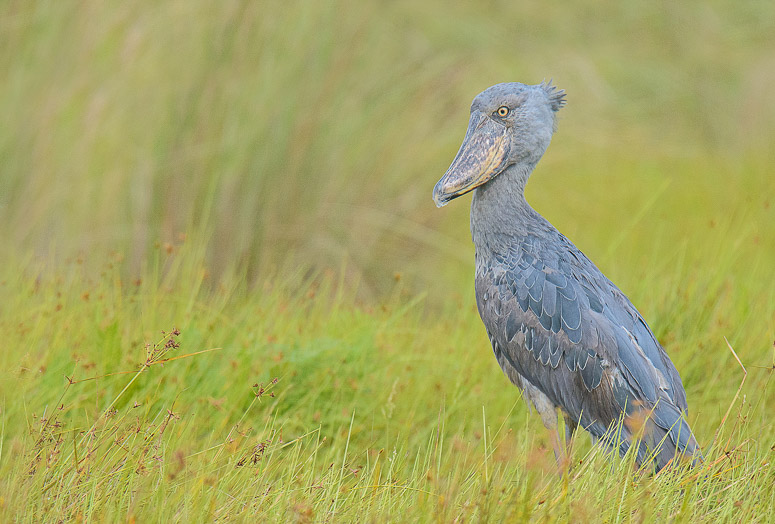
- Skip to content
Change Region
- News & Resources
- Recent Checklists
- Trip Reports
- Illustrated Checklist
- Hotspot Map
- Rare Bird Alerts
- Printable Checklist
An Uplifting October Big Day 2023
Available languages.
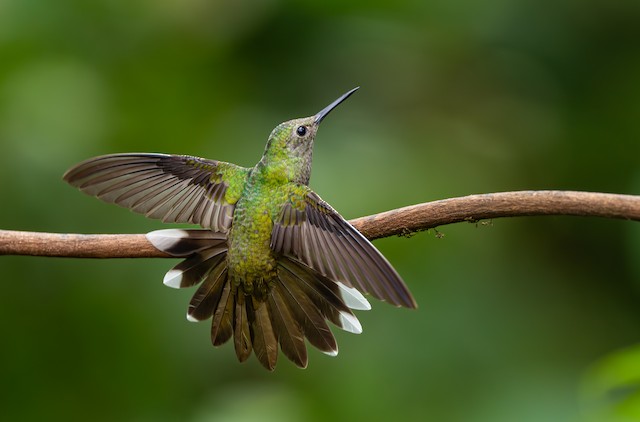
- Macaulay Library
On 14 October, people in 191 countries around the world joined together to celebrate birds for October Big Day . More than 36,000 people contributed 83,735 checklists, setting three new records for the single biggest day in October birding history! Even more impressive, the global birding community reported 7,525 species—an incredible 72 more species than last October Big Day. This remarkable growth is a testament to the power of birds to unite people in a common effort.
October Big Day wouldn’t be a global phenomenon without YOU, the global birding community. We’re grateful to work with so many amazing partner groups around the world, including the eBird portal collaborator network , who inspire and motivate birders on October Big Day and every day. Huge thanks also to Carl Zeiss Sports Optics for their sponsorship of eBirder of the Month challenge, including an opportunity to win new Zeiss SFL binoculars by participating in October Big Day .
This year’s October Big Day was also an opportunity to celebrate World Migratory Bird Day and Global Bird Weekend . Tremendous thanks to Global Birding ’s Tim Appleton and Penny Robinson, Birdlife International, and Swarovski Optik for making Global Bird Weekend possible, and to the World Migratory Bird Day team for their efforts.
October Big Day by the numbers
- 376,109 people went birding with eBird and/or Merlin
- 36,332 eBirders with 83,735 checklists submitted
- 7,525 species reported
- 48,749 photos submitted to the Macaulay Library
- 1,247 recordings submitted to the Macaulay Library
Explore more October Big Day results and mark your calendars for the next Global Big Day—11 May, 2024.

View these results as a table
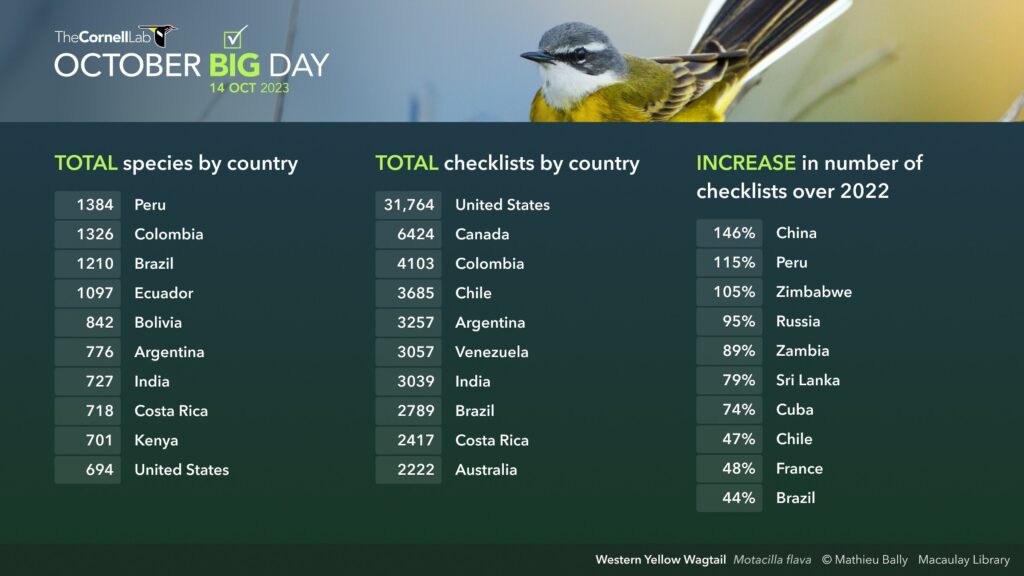
To see the tremendous outpouring of support for October Big Day. The following video highlights just a few of the hundreds of inspiring stories shared during the event.
Below, we feature some additional themes and stories shared by you, the global birding team.
First October Big Day
A warm welcome to the 1,665 contributors around the world who eBirded for the first time on October Big Day, including
Ricardo Eslava started birding a year ago. Their first October Big Day included some incredible observations, fun species, and even a lifer—congrats!
All of the smiling faces during Pitianita ’s first October Big Day show there’s nothing more fun than discovering a new hobby with friends!
Birding For All
Birds bring everyone together and unite us in shared awe of their cross-continental journeys, fascinating behaviors, and admirable determination. Thank you to @yani_visitnatura and @BrooklynBridgeBirds for sharing their October Big Day experiences on Instagram which encouraged “Birding for all”. Yanina Maggiotto led a “Birding para todos”, birding for all, walk in La Canal de Navarrés, Spain on October 14th during which their group “shared magnificent observations of extraordinary species” including “the majestic Golden Eagle , the strident Iberian Woodpecker , [and] the Colored Kingfisher”.
Heather Wolf led a bilingual bird walk in Brooklyn for the New York City Audubon and shared checklists documenting over 100 individuals across 22 species.
No matter your age, everyone is a valuable participant in October Big Day. This year we had many younger participants helping to collect important birding data. The Mindo Birdwatcher’s club shared a TikTok in support of the event, and highlighted the importance and significance of submitting eBird checklists. On the 14th, the Galapagos Science Center shared thirteen young birders observed over 10 different species including Yellow Warblers , Finches, Blue-footed Boobies , mockingbirds, frigatebirds, and pelicans. Although these birder’s years may be few, their impact is immense with valuable data contributions and excitement on October Big Day.
Community Efforts
October Big Day transcends birding by building connections, strengthening community ties, and fostering an appreciation for nature. It’s also an opportunity to support local conservation efforts.
October 14 marked the 6th annual Wild Bird Day in India. Organized by Bird Count India , Wild Bird Day encourages participants to spend time observing birds and submit as many 15-minute complete checklists as they can throughout the day. The goal of is “to generate a snapshot of the distribution and abundance of birds at this time of year”. More than 1,110 birders in India (nearly 300 more than last year) submitted 3000 complete eBird checklists during the event. These checklists will be used to develop conservation resources such as the State of India’s Birds report .

In Ecuador, members of Urban Ornis and their partners picked up an astounding 27 kg (59 lbs) of trash while birding along the San Pedro River. A great example of making the world a better place on October Big Day!
The sounds of October Big Day are often just as important as the sights. Listen to the calls of breeding Hooded Grebes from Laguna La Soñada, Argentina, below. Thank you, Programa Patagonia, for sharing the experience and contributing this critically endangered species to the October Big Day totals.
Sharing Stories with eBird Trip Reports
One of the best ways to share adventures on October Big Day is through eBird Trip Reports. In Parque Municipal São Francisco Xavier, outside Sao Paolo, eBird Brasil partners SAVE Brasil organized a special event that included morning and afternoon birding, a scientific lecture, and Q&A with local conservation professionals. Gabriela R. França’s eBird Trip Report documents the 92 species they found throughout the day.
As Aves de SFX writes, eBird observations “represent a crucial tool for monitoring species and contribute significantly to advancing knowledge about birds, thus strengthening conservation efforts.” A huge thank you to everyone who contributed to this event!
Here are a few more highlights from the hundreds of eBird Trip Reports shared by teams and individuals on October Big Day:
- Eric Torres-Rivera spent the day visiting sites across western Puerto Rico and found an impressive 124 species on 13 checklists
- Ricard Gutiérrez’s October Big Day outside Barcelona, Spain included two lifers, plus 82 other species
- Georgi Kamov and his son, Simeon, go birding together every Big Day. Even though they only had a few hours this year, they still managed to find 61 species and submit 9 checklists. “Not bad for a leisurely tour around our local village hotspots,” writes Georgi. We agree!
Madhur Upadhyay’s October Big Day highlights the many things to love about eBird Trip Reports, summarizing their 20 checklists and 110 species from Uttarakhand, India alongside fun photos and interesting sound recordings . Madhur achieved 15 Photo Lifers and one Sound Lifer (species they had never photographed or recorded before) on October Big Day. Media on eBird checklists improve our understanding of bird appearance, behavior, and can help to inform conservation plans. Great job!
Beyond Birds—Solar Eclipse
Birders from the western United States to Brazil put down their binoculars and picked up their shades to watch an annular solar eclipse last Saturday. Even birders in areas of partial eclipse were able to enjoy the phenomenon. To our knowledge, this is the first time an eclipse and global birding event happened on the same date.
A massive and heartfelt THANK YOU to everyone who submitted checklists on October Big Day. eBird now contains more than 1.5 billion observations of birds from 923,000 eBirders, all thanks to your efforts. Your observations provide valuable insights into the lives of birds that help us to better understand and protect bird populations.
At eBird, every day can be a big day, a reason to step outside even for just 10 minutes to enjoy birds and share observations for science. Together we can help better understand, conserve, and enjoy birds for many years to come. Thank you for being a part of it.
More Results

IMAGES
VIDEO
COMMENTS
Adventures by Disney is the best way to see birds in Costa Rica if you want to take along kids or people that don't want to go birding every day. #5. Victor Emanuel Nature Tours. Founded in 1976, Victor Emanuel Nature Tours (VENT) has been leading birding trips for almost 50 years.
Tropical Feathers has sponsored the Fila Costera Bird Count in the southern Pacific part of the country. This count seeks to provide a better understanding of the bird species and populations in the area, while at the same time encouraging conservation efforts. We feel this attracts a more environmentally concerned type of tourism. King Vulture.
Our Birding Tours. At Costa Rica Focus we plan unique Costa Rica bird watching tours and bird photography tours ( see differences here ). We also offer general packages including romantic getaways, family adventures, and group tours. Click below to check out some of our favorite birding and photography tours.
We are experts at bird watching tours in Costa Rica with 20 years of experience. (888) 788-4272 [email protected]. Facebook; Instagram; Facebook; Instagram; Home; Tours. Tour Packages; ... With non-guided day birding tours, species counts are good but, in most cases, will not match the level of a privately guided tour. Tour Dates.
During our Costa Rican birding tours, bird species change as we traverse the steaming Caribbean lowlands, the eastern slopes, the central valley (where Costa Rica's capital, San José, is located), the sometimes-chilly highlands, the Pacific slope, and the western lowlands. From extinct and active volcanos over 4,000 meters (14,000 feet) to ...
Nature Group Costa Rica is not only a serious birding tour company; we are also unique in the Americas, by being the only photography tour operator to offer workshops, expeditions, and day-tours, with prestigious Nikon camera gear included. Whether you have never used a professional camera before, or you are on a photographic assignment for ...
A superb Birding with a Camera® Tour of Costa Rica exploring stunning habitats and gorgeous birds. top of page. Custom and Set-Departure Bird & Wildlife Tours Around the World ... (near San Jose airport), where we spent the first night of the tour. Day 15: Cinchona and Departure from San Jose. We will visit one more fantastic site for the tour ...
Cotinga Tours specializes in Costa Rica Birding Tours, Nature Tours & Explore Costa Rica Tours with a nature focus. We are an owner-operated company that provides personalized service and the knowledge of Costa Rica's natural ecology that only a local company can offer. We are passionate about birdwatching, conservation and sharing Costa Rica ...
CLASSIC COSTA RICA BIRDING TOUR: DETAILED ITINERARY. Costa Rica: Day 1 Our Costa Rica birding tour begins this afternoon at San José. Costa Rica's capital city situated in the heavily populated Central Valley, but we will head for the slopes of Volcán Irazú, overlooking the valley, for an overnight stay.
Discover Costa Rica's Natural Wonders on this 9-Day Breathtaking Birding & Culture Tour. Join us on this exciting multi-day adventure through the luscious rainforests and lively ecosystems of Costa Rica! This all-inclusive tour offered in conjunction with Holbrook Travel is a perfect blend of birdwatching, nature walks, cultural experiences ...
At Ave Nativa Tours, we specialize in crafting immersive bird watching and bird photography experiences in Costa Rica, spanning all the premier birding destinations across the country. Partnering closely with top-rated birding lodges and hotels, we ensure our clients enjoy unforgettable encounters with the rich avian biodiversity of Costa Rica.
15 March - 7 April 2025. Tour length: 24 days. Group size limit: 6. Leaders: Daniel Aldana and local guides. Spaces available. Day 1: The tour starts this afternoon in San Jose, capital of Costa Rica. We will drive to our hotel on the slopes of Volcan Irazu for an overnight stay. Day 2: Early morning, we'll make our first attempt at finding ...
We offer you small-group birding and nature tours, limited to just 8-10 persons led by expert guides. Learn and explore with like-minded people, enjoy local food and culture, and immerse yourself in birding and nature. Summer in Costa Rica. July 17 - 24, 2024. Costa Rica's Caribbean Side.
Day 1: Arrival in San José. Our Costa Rica birding tour begins with dinner and an orientation at our hotel. Participants arriving early can enjoy the beautiful hotel grounds, possibly finding Blue-crowned Motmot and several other species on the hotel grounds. Night in San José.
Ultimate Costa Rica Birding Road Trip - 16 Days. This 16-day itinerary is perfect for birding enthusiasts who also love a bit of tropical adventure. On a self-drive tour of Costa Rica, you'll be able to view many of the nation's 850 species of birds as you drive from the northern plains to the southern and central coasts.
FROM: $ 1588. Harboring around 850 species of birds and offering plenty of facilities for birdwatchers to have a pleasurable trip, Costa Rica posts among the best destinations in the world for this activity. Book. 1 Day Birding Tour Quetzal's Paradise and San Gerardo de Dota. 2.
Costa Rica - Central Highlands (Relaxed) Our new Relaxed tour of Costa Rica takes in several of the key birding sites of this incredibly diverse country but allowing us time to enjoy each location in an unrushed fashion. The backbone of the country is formed by a scenic mountain range, splitting the lowland forests of the Pacific and Caribbean ...
Birdwatching in Costa Rica. Birding Trips. Intense birding for one week thru the most popular spots of the country or a more comprehensive trip that covers a lot of habitats in two weeks. read more. Birding Near Liberia. The best options for birding day trips if you are visiting the Province of Guanacaste.
This adventure is an exceptional opportunity for birders, bird photographers, and nature lovers to gather many endemics for their life lists and to get those once in a lifetime photos. We plan unique bird watching group tours in Costa Rica & one in Panama. Book your scheduled 2024 and 2025 birding package with the guide of a bird expert.
Join Naturalist Journeys for this Costa Rica birding and nature tour. More than a quarter of the country is protected lands, boasting 850 bird species and 200+ mammals. ... carefully maintained, and gently sloping forest trails offer fantastic birding opportunities. Every day is different—even every hour is different! Some of the birds that ...
This easy-going, 12-day birding tour of beautiful Costa Rica, with its rich variety of tropical habitats and incredible bird life, is perfect for those birding Central America for the first time, or even wanting to re-visit, and familiarize themselves with the magnificent bird diversity that Costa Rica has to offer.We begin in San Jose and bird our way through breathtaking, tropical landscapes ...
You can submit your Reservation Request here. If you are having problems booking you can directly email us at [email protected] or call us + (506) 83136679. Contact Us.
Costa Rica - Budget Birding. The small nation of Costa Rica has geared itself heavily towards avitourism and has developed a superb infrastructure to service the numerous visiting birders, and with over 850 species it is easy to understand why! The backbone of the country is formed by a scenic mountain range, and here the cloud forests are home ...
Costa Rica Escape Tour January 2025. We believe this expertly tailored Costa Rica birding tour is the perfect excuse to leave behind the daily stress of modern-day living to do some great birding in one of the most fantastic birdwatching destinations in all of the neotropics. Resplendent Quetzalis one of the main targets on this trip (photo ...
On 14 October, people in 191 countries around the world joined together to celebrate birds for October Big Day. More than 36,000 people contributed 83,735 checklists, setting three new records for the single biggest day in October birding history! Even more impressive, the global birding community reported 7,525 species—an incredible 72 more species than last October Big Day.